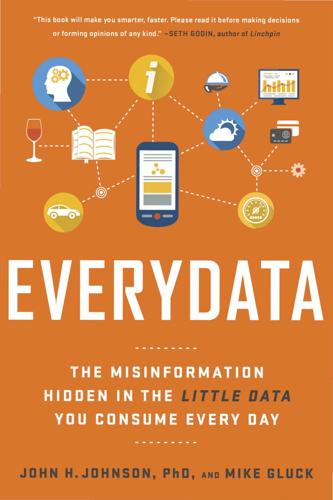
Everydata: The Misinformation Hidden in the Little Data You Consume Every Day
by
John H. Johnson
Published 27 Apr 2016
Unfortunately, we don’t have the space to teach you how to run a perfect statistical analysis, or determine the exact correlation. But that’s okay, because our goal is simply to help you make better decisions by recognizing the difference between correlation and causation, and understanding some of the reasons that people confuse the two—so you can avoid making the same mistakes. How to Be a Good Consumer of Correlation and Causation So now, armed with a better understanding of the distinction between correlation and causation, here are some steps to keep in mind when consuming data about a statistical relationship: 1. Ask yourself what is being represented in the news article or research.
…
We’ve just read a lot of studies and media reports that seem to draw the wrong conclusion from statistical analyses—specifically, reports and articles that confuse correlation with causation, and therefore, sometimes unintentionally, mislead the reader about the key takeaways. It’s important to note that there are two issues here: first of all, there are the original scientific studies that sometimes confuse correlation with causation. But what you’re more likely to encounter in your everyday life are newspaper articles and other media accounts that misreport the findings from valid scientific studies.
…
These types of connections—when there is some sort of relationship between data—are called correlations. But, as we’ll explore in this chapter, the mere existence of such a statistical relationship between two factors does not imply that there is actually a meaningful link between them. Correlation does not equal causation. It’s actually one of the most common ways that people misinterpret data. But don’t worry—in this chapter, we’ll take a close look at how and why people mistake correlation for causation, and give you the tools to help you understand which everydata you should really believe. SMARTPHONES = SMART PEOPLE? So, back to the smart people analysis. We dug a bit deeper into what the actual studies said, and uncovered some interesting caveats, warnings, and facts that might shed some light on these findings.
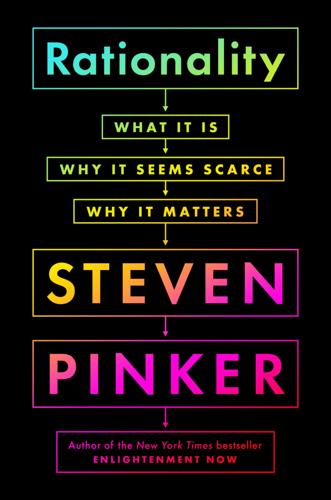
Rationality: What It Is, Why It Seems Scarce, Why It Matters
by
Steven Pinker
Published 14 Oct 2021
That’s because low birth weight must be caused by something, and the other possible causes, such as alcohol or drug abuse, may be even more harmful to the child.20 The collider fallacy also explains why Jenny Cavilleri unfairly maintained that rich boys are stupid: to get into Harvard (B), you can be either rich (A) or smart (C). From Correlation to Causation: Real and Natural Experiments Now that we’ve probed the nature of correlation and the nature of causation, it’s time to see how to get from one to the other. The problem is not that “correlation does not imply causation.” It usually does, because unless the correlation is illusory or a coincidence, something must have caused one variable to align with the other. The problem is that when one thing is correlated with another, it does not necessarily mean that the first caused the second.
…
As Thomas Hobbes put it, the fundamental principle of society is “that a man be willing, when others are so too . . . to lay down this right to all things; and be contented with so much liberty against other men, as he would allow other men against himself.”22 This social contract does not just embody the moral logic of impartiality. It also removes wicked temptations, sucker’s payoffs, and tragedies of mutual defection. 9 CORRELATION AND CAUSATION One of the first things taught in introductory statistics textbooks is that correlation is not causation. It is also one of the first things forgotten. —Thomas Sowell1 Rationality embraces all spheres of life, including the personal, the political, and the scientific. It’s not surprising that the Enlightenment-inspired theorists of American democracy were fanboys of science, nor that real and wannabe autocrats latch onto harebrained theories of cause and effect.2 Mao Zedong forced Chinese farmers to crowd their seedlings together to enhance their socialist solidarity, and a recent American leader suggested that Covid-19 could be treated with injections of bleach.
…
One of my grandfather’s favorite jokes was about the man who gorged himself on cholent (the meat and bean stew simmered for twelve hours during the Sabbath blackout on cooking) with a glass of tea, and then lay in pain moaning that the tea had made him sick. Presumably you had to have been born in Poland in 1900 to find this as uproarious as he did, but if you get the joke at all, you can see how the difference between correlation and causation is part of our common sense. Nonetheless, Niyazovian confusions are common in our public discourse. This chapter probes the nature of correlation, the nature of causation, and the ways to tell the difference. What Is Correlation? A correlation is a dependence of the value of one variable on the value of another: if you know one, you can predict the other, at least approximately.
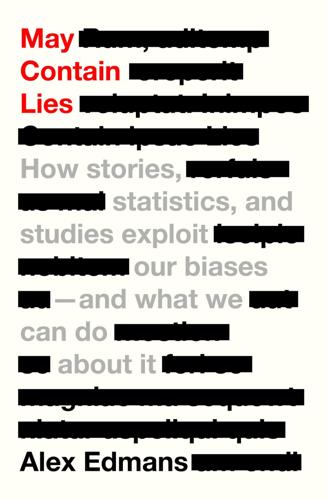
May Contain Lies: How Stories, Statistics, and Studies Exploit Our Biases—And What We Can Do About It
by
Alex Edmans
Published 13 May 2024
.† Imagine we gather data from hundreds of school districts and run a regression. We find that child performance is higher in cities with greater school choice, for example Boston compared to Miami. If we’re a free marketer, we’re tempted to accept this correlation as causation – as evidence that competition causes higher performance. This is when our rational System 2 should kick in and remind us that there are two alternative explanations for any correlation. One is reverse causation. Poor child performance might reduce the number of districts: when districts are doing badly, they merge to cut costs. Another is common causes : if parents care about education, they’ll demand school choice (increasing the number of districts) and tutor their kids at home (improving child performance).
…
Those that remain are still important, but they’re not as extensive as often claimed and so the decision is no longer so cut and dried. When balanced against the benefits of the bottle, we decided to combination-feed from then on – breastmilk as the first choice, but formula if Caspar needed a top-up or my wife wanted a break. Data is not enough Everyone knows the phrase ‘Correlation is not causation’, but not necessarily why. The breastfeeding studies show us exactly why. They did everything we’ve recommended so far. They started with a hypothesis (breastfeeding affects IQ) and gathered a random sample with different levels of the input (feeding method). There was scant risk of data mining, since there’s little ambiguity on how to measure IQ or classify whether a baby was breast-fed.
…
For example, population density is a common cause that both increases pollution and accelerates the spread of COVID. You don’t need statistical wizardry to come up with this alternative explanation, just common sense – but it’s often switched off when confirmation bias is at play. Why this matters Why is it so important to distinguish correlation from causation? Taken literally, study results are descriptions about the world. Breast-fed babies have better outcomes, people who start diets lose weight and more polluted cities transmit coronavirus faster. These statements aren’t inaccurate – breast-fed kids do have higher IQs – and if you use the findings to simply describe how the land lies, that’s fine.
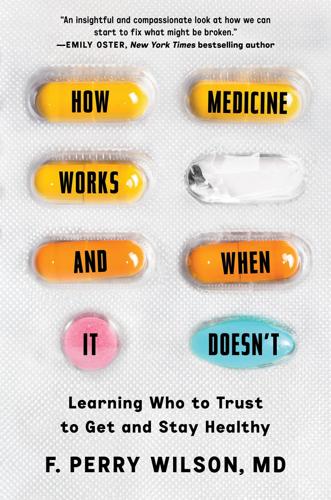
How Medicine Works and When It Doesn't: Learning Who to Trust to Get and Stay Healthy
by
F. Perry Wilson
Published 24 Jan 2023
And yet the strength of association alone is not enough to conclude that margarine is a major driver of divorce in the Pine Tree State. Spurious correlations can be a major source of medical misinformation and false medical beliefs. So how can you extricate mere correlation from true causation? Correlation Is Not Causation, But… You’ve no doubt heard the old adage that correlation is not causation. Spurious correlations abound, as the Maine-margarine example shows. Vigen’s website also notes the remarkable correlation between swimming-pool drownings and the number of films Nicolas Cage has appeared in, the number of murders via hot objects and the age of Miss America, and the number of engineering doctorates and the volume of mozzarella cheese consumption.
…
Rather, breastfeeding longer is a marker of higher income, and with higher income comes a host of advantages to children, from access to better healthcare to private tutoring, and so on. Since correlation isn’t causation, changing your breastfeeding behavior won’t change your kid’s academic outcomes. And yet headlines will continue to tout the correlational findings—potentially misleading people into believing there is a causal link. Why this obsession with the distinction between correlation and causation in Medicine? Because if A causes B, changing A can change B. But if A is merely correlated with B, changing A will have no effect on B. As a doctor, I want things I can act on, things I can change to make your life better.
…
Correlations can be interesting, but without causality they are not actionable. Confounding will be present in any study that does not use randomization to assign the exposure of interest, and the vast majority of medical studies are not randomized. Therefore, the vast majority of medical studies assess correlation, not causation. They are, under the hood, an observation of data points that are examined mathematically for interesting relationships. Some of those correlations will be causal. Some will not. Correlational studies often gain traction because they feel right to us. (That’s motivated reasoning again.)
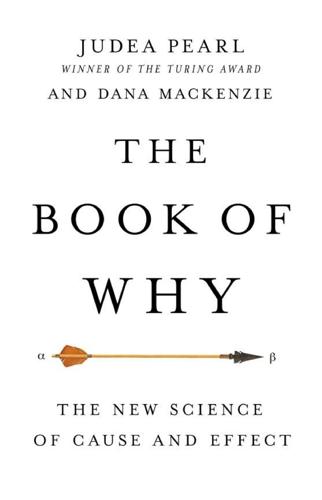
The Book of Why: The New Science of Cause and Effect
by
Judea Pearl
and
Dana Mackenzie
Published 1 Mar 2018
And when you prohibit speech, you prohibit thought and stifle principles, methods, and tools. Readers do not have to be scientists to witness this prohibition. In Statistics 101, every student learns to chant, “Correlation is not causation.” With good reason! The rooster’s crow is highly correlated with the sunrise; yet it does not cause the sunrise. Unfortunately, statistics has fetishized this commonsense observation. It tells us that correlation is not causation, but it does not tell us what causation is. In vain will you search the index of a statistics textbook for an entry on “cause.” Students are not allowed to say that X is the cause of Y—only that X and Y are “related” or “associated.”
…
Having built this bridge, Wright could travel backward over it, from the correlations measured in the data (rung one) to the hidden causal quantities, d and h (rung two). He did this by solving algebraic equations. This idea must have seemed simple to Wright but turned out to be revolutionary because it was the first proof that the mantra “Correlation does not imply causation” should give way to “Some correlations do imply causation.” FIGURE 2.7. Sewall Wright’s first path diagram, illustrating the factors leading to coat color in guinea pigs. D = developmental factors (after conception, before birth), E = environmental factors (after birth), G = genetic factors from each individual parent, H = combined hereditary factors from both parents, O, O′ = offspring.
…
In reality you conditioned on a collider by censoring all the tails-tails outcomes. In The Direction of Time, published posthumously in 1956, philosopher Hans Reichenbach made a daring conjecture called the “common cause principle.” Rebutting the adage “Correlation does not imply causation,” Reichenbach posited a much stronger idea: “No correlation without causation.” He meant that a correlation between two variables, X and Y, cannot come about by accident. Either one of the variables causes the other, or a third variable, say Z, precedes and causes them both. Our simple coin-flip experiment proves that Reichenbach’s dictum was too strong, because it neglects to account for the process by which observations are selected.
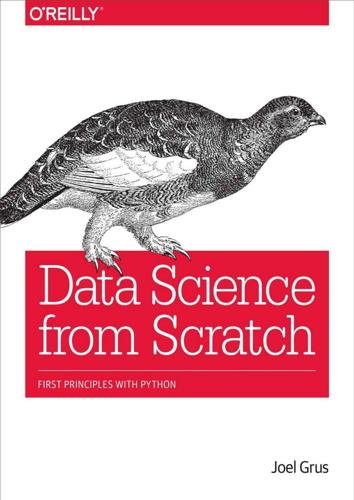
Data Science from Scratch: First Principles with Python
by
Joel Grus
Published 13 Apr 2015
In addition, correlation tells you nothing about how large the relationship is. The variables: x = [-2, 1, 0, 1, 2] y = [99.98, 99.99, 100, 100.01, 100.02] are perfectly correlated, but (depending on what you’re measuring) it’s quite possible that this relationship isn’t all that interesting. Correlation and Causation You have probably heard at some point that “correlation is not causation,” most likely by someone looking at data that posed a challenge to parts of his worldview that he was reluctant to question. Nonetheless, this is an important point — if x and y are strongly correlated, that might mean that x causes y, that y causes x, that each causes the other, that some third factor causes both, or it might mean nothing.
…
closeness centrality, Betweenness Centrality clustering, Clustering-For Further Explorationbottom-up hierarchical clustering, Bottom-up Hierarchical Clustering-Bottom-up Hierarchical Clustering choosing k, Choosing k example, clustering colors, Example: Clustering Colors example, meetups, Example: Meetups-Example: Meetups k-means clustering, The Model clusters, Rescaling, The Ideadistance between, Bottom-up Hierarchical Clustering code examples from this book, Using Code Examples coefficient of determination, The Model combiners (in MapReduce), An Aside: Combiners comma-separated values files, Delimited Filescleaning comma-delimited stock prices, Cleaning and Munging command line, running Python scripts at, stdin and stdout conditional probability, Conditional Probabilityrandom variables and, Random Variables confidence intervals, Confidence Intervals confounding variables, Simpson’s Paradox confusion matrix, Correctness continue statement (Python), Control Flow continuity correction, Example: Flipping a Coin continuous distributions, Continuous Distributions control flow (in Python), Control Flow correctness, Correctness correlation, Correlationand causation, Correlation and Causation in simple linear regression, The Model other caveats, Some Other Correlational Caveats outliers and, Correlation Simpson's Paradox and, Simpson’s Paradox correlation function, Simple Linear Regression cosine similarity, User-Based Collaborative Filtering, Item-Based Collaborative Filtering Counter (Python), Counter covariance, Correlation CREATE TABLE statement (SQL), CREATE TABLE and INSERT cumulative distribution function (cdf), Continuous Distributions currying (Python), Functional Tools curse of dimensionality, The Curse of Dimensionality-The Curse of Dimensionality, User-Based Collaborative Filtering D D3.js library, Visualization datacleaning and munging, Cleaning and Munging exploring, Exploring Your Data-Many Dimensions finding, Find Data getting, Getting Data-For Further Explorationreading files, Reading Files-Delimited Files scraping from web pages, Scraping the Web-Example: O’Reilly Books About Data using APIs, Using APIs-Using Twython using stdin and stdout, stdin and stdout manipulating, Manipulating Data-Manipulating Data rescaling, Rescaling-Rescaling data mining, What Is Machine Learning?
…
Index A A/B test, Example: Running an A/B Test accuracy, Correctnessof model performance, Correctness all function (Python), Truthiness Anaconda distribution of Python, Getting Python any function (Python), Truthiness APIs, using to get data, Using APIs-Using Twythonexample, using Twitter APIs, Example: Using the Twitter APIs-Using Twythongetting credentials, Getting Credentials using twython, Using Twython finding APIs, Finding APIs JSON (and XML), JSON (and XML) unauthenticated API, Using an Unauthenticated API args and kwargs (Python), args and kwargs argument unpacking, zip and Argument Unpacking arithmeticin Python, Arithmetic performing on vectors, Vectors artificial neural networks, Neural Networks(see also neural networks) assignment, multiple, in Python, Tuples B backpropagation, Backpropagation bagging, Random Forests bar charts, Bar Charts-Line Charts Bayes's Theorem, Bayes’s Theorem, A Really Dumb Spam Filter Bayesian Inference, Bayesian Inference Beautiful Soup library, HTML and the Parsing Thereof, n-gram Modelsusing with XML data, JSON (and XML) Bernoulli trial, Example: Flipping a Coin Beta distributions, Bayesian Inference betweenness centrality, Betweenness Centrality-Betweenness Centrality bias, The Bias-Variance Trade-offadditional data and, The Bias-Variance Trade-off bigram model, n-gram Models binary relationships, representing with matrices, Matrices binomial random variables, The Central Limit Theorem, Example: Flipping a Coin Bokeh project, Visualization booleans (Python), Truthiness bootstrap aggregating, Random Forests bootstrapping data, Digression: The Bootstrap bottom-up hierarchical clustering, Bottom-up Hierarchical Clustering-Bottom-up Hierarchical Clustering break statement (Python), Control Flow buckets, grouping data into, Exploring One-Dimensional Data business models, Modeling C CAPTCHA, defeating with a neural network, Example: Defeating a CAPTCHA-Example: Defeating a CAPTCHA causation, correlation and, Correlation and Causation, The Model cdf (see cumulative distribtion function) central limit theorem, The Central Limit Theorem, Confidence Intervals central tendenciesmean, Central Tendencies median, Central Tendencies mode, Central Tendencies quantile, Central Tendencies centralitybetweenness, Betweenness Centrality-Betweenness Centrality closeness, Betweenness Centrality degree, Finding Key Connectors, Betweenness Centrality eigenvector, Eigenvector Centrality-Centrality classes (Python), Object-Oriented Programming classification trees, What Is a Decision Tree?

The Numbers Game: The Commonsense Guide to Understanding Numbers in the News,in Politics, and inLife
by
Michael Blastland
and
Andrew Dilnot
Published 26 Dec 2008
Nowadays these are referred to as “adverse events,” making it clear that the cause was unclear and they might have had nothing to do with the medication. Restlessness for the true cause is a constructive habit, an insurance against gullibility. And though correlation does not prove causation, it is often a good hint, but a hint to start asking questions, not to settle for easy answers. There is one caveat. Here and there you will come across a tendency to dismiss almost all statistical findings as correlation-causation fallacy, a rhetorical cudgel, as one careful critic put it, to avoid believing any evidence. But we need to distinguish between casual associations often made for political ends and proper statistical studies.
…
From applying it all the time, people acquire a headstrong tendency to see it everywhere, even where it isn’t. We see how one thing goes with another—and quickly conclude that it causes the other, and never more so than when the numbers or measurements seem to agree. This is the oldest fallacy in the book, that correlation proves causation, and also the most obdurate. And so it has been observed by smart researchers that overweight people live longer than thinner people, and therefore it was concluded that being overweight causes longer life. Does it? We will see. How do we train the instinct that serves us so well most of the time for the occasions when it doesn’t?
…
There are many possible causes of acne, even in lovers of heavy metal, the likelier culprits being teenage hormones and diet. Correlation—the apparent link between two separate things—does not prove causation: just because two things seem to go together doesn’t mean one brings about the other. This shouldn’t need saying, but it does, hourly. Get this wrong—mistake correlation for causation—and we flout one of the most elementary rules of statistics or logic. When we spot a fallacy of this kind lurking behind a claim, we cannot believe anyone could have fallen for it. That is, until tomorrow, when we miss precisely the same kind of fallacy and then see fit to say the claim is supported by compelling evidence.

The Hype Machine: How Social Media Disrupts Our Elections, Our Economy, and Our Health--And How We Must Adapt
by
Sinan Aral
Published 14 Sep 2020
We must embrace causal lift. Taking Causality Seriously I have an xkcd cartoon about the difference between correlation and causation on the door to my office at MIT. It depicts two friends talking. One friend says to the other, “I used to think correlation implied causation. Then I took a statistics class [and] now I don’t.” The other friend says, “Sounds like the class helped,” and the first friend replies, “Well, maybe.” It could be that the class taught the friend about the difference between correlation and causation. It could also just as easily be that the friend who took the class has an interest in and thus a proclivity to understand statistics.
…
It could also just as easily be that the friend who took the class has an interest in and thus a proclivity to understand statistics. So maybe he “selected into” the class. This “selection effect” can explain the correlation between taking the class and understanding the difference between correlation and causation just as easily as the class teaching him about this difference. This selection effect is a serious problem for measuring the return on hype. Why? Because social media messages are targeted at people who are likely to be susceptible to them. Brands pay consultants big bucks to target their ads at the people most likely to buy their products. Targeting increases conversion rates even without changing anyone’s behavior, because it selects the most likely purchasers to receive ads.
…
The area under the ROC curve represents model performance. The greater the area under a model’s curve and above the 45-degree dotted line, the better the model performs. When Thomas Blake, Chris Nosko, and Steven Tadelis compared the ROI measures eBay was using to experimental measures that distinguished correlation from causation, they found brand search ad effectiveness was overestimated at eBay by up to 4,100 percent. Comparing traditional measures to a large experiment measuring the returns on Web display ads on Yahoo!, Randall Lewis and David Reiley found ROI inflation of 300 percent. In a large-scale experiment testing the effectiveness of retargeting ads compared to industry studies, Garrett Johnson, Randall Lewis, and Elmar Nubbemeyer found overestimates up to 1,600 percent.

Calling Bullshit: The Art of Scepticism in a Data-Driven World
by
Jevin D. West
and
Carl T. Bergstrom
Published 3 Aug 2020
While this headline doesn’t use the word “cause,” it does use the word “effect”—another way of suggesting causal relationships. Correlation doesn’t imply causation—but apparently it doesn’t sell newspapers either. If we have evidence of correlation but not causation, we shouldn’t be making prescriptive claims. NPR reporter Scott Horsley posted a tweet announcing that “Washington Post poll finds NPR listeners are among the least likely to fall for politicians’ false claims.” Fair enough. But this poll demonstrated only correlation, not causation. Yet Horsley’s tweet also recommended, “Inoculate yourself against B.S. Listen to NPR.” The problem with this logic is easy to spot.
…
Scientists have a number of techniques for measuring correlations and drawing inferences about causality from these correlations. But doing so is a tricky and sometimes contentious business, and these techniques are not always used as carefully as they ought to be. Moreover, when we read about recent studies in medicine or policy or any other area, these subtleties are often lost. It is a truism that correlation does not imply causation. Do not leap carelessly from data showing the former to assumptions about the latter.*4 This is difficult to avoid, because people use data to tell stories. The stories that draw us in show a clear connection between cause and effect. Unfortunately, one of the most frequent misuses of data, particularly in the popular press, is to suggest a cause-and-effect relationship based on correlation alone.
…
There are many other confounding factors that could explain this relationship as well, such as the possibility that cultural values or the cost of child care varies across counties with some correlation to home values. So far, no bullshit. This is the right way to report the study’s findings. The Zillow article describes a correlation, and then uses this correlation to generate hypotheses about causation but does not leap to unwarranted conclusions about causality. Given that the study looks only at women aged 25 to 29, we might suspect that women with characteristics that make them likely to delay starting a family are also prone to moving to cities with high housing costs.
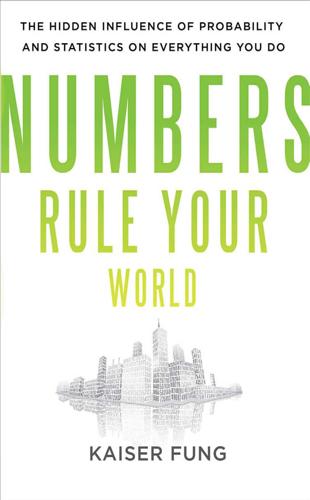
Numbers Rule Your World: The Hidden Influence of Probability and Statistics on Everything You Do
by
Kaiser Fung
Published 25 Jan 2010
Box’s writings on his experiences in the industry have inspired generations of statisticians; to get a flavor of his engaging style, see the collection Improving Almost Anything, lovingly produced by his former students. More ink than necessary has been spilled on the dichotomy between correlation and causation. Asking for the umpteenth time whether correlation implies causation is pointless (we already know it does not). The question Can correlation be useful without causation? is much more worthy of exploration. Forgetting what the textbooks say, most practitioners believe the answer is quite often yes. In the case of credit scoring, correlation-based statistical models have been wildly successful even though they do not yield simple explanations for why one customer is a worse credit risk than another.
…
It is implausible that something as variable as human behavior can be attributed to simple causes; modelers specializing in stock market investment and consumer behavior have also learned similar lessons. Statisticians in these fields have instead relied on accumulated learning from the past. The standard statistics book grinds to a halt when it comes to the topic of correlation versus causation. As readers, we may feel as if the authors have taken us along for the ride! After having plodded through the mathematics of regression modeling, we reach a section that screams, “Correlation is not causation!” and, “Beware of spurious correlations!” over and over. The bottom line, the writers tell us, is that almost nothing we have studied can prove causation; their motley techniques measure only correlation.
…
As interesting as it would be to know how each step of a touring plan decreased their wait times, Testa’s millions of fans care about only one thing: whether the plan let them visit more rides, enhancing the value of their entry tickets. The legion of satisfied readers is testimony to the usefulness of this correlational model. ~###~ Polygraphs rely strictly on correlations between the act of lying and certain physiological metrics. Are correlations useful without causation? In this case, statisticians say no. To avoid falsely imprisoning innocent people based solely on evidence of correlation, they insist that lie detection technology adopt causal modeling of the type practiced in epidemiology. They caution against logical overreach: Liars breathe faster.
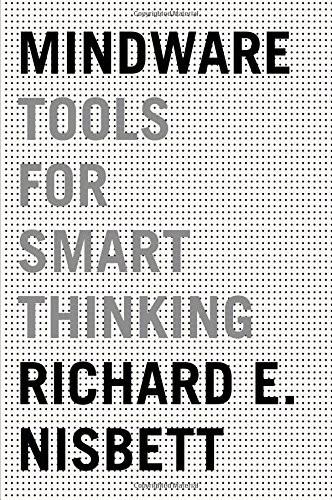
Mindware: Tools for Smart Thinking
by
Richard E. Nisbett
Published 17 Aug 2015
Many of my fellow psychologists are going to be distressed by my bottom line here: such questions as whether academic success is affected by self-esteem, controlling for depression, or whether the popularity of fraternity brothers is affected by extroversion, controlling for neuroticism, or whether the number of hugs a person receives per day confers resistance to infection, controlling for age, educational attainment, frequency of social interaction, and a dozen other variables, are not answerable by MRA. What nature hath joined together, multiple regression analysis cannot put asunder. No Correlation Doesn’t Mean No Causation Correlation doesn’t prove causation. But the problem with correlational studies is worse than that. Lack of correlation doesn’t prove lack of causation—and this mistake is made possibly as often as the converse error. Does diversity training improve rates of hiring women and minorities? One study examined this question by quizzing human resource managers at seven hundred U.S. organizations about whether they had diversity training programs and by checking on the firms’ minority hiring rates filed with the Equal Employment Opportunity Commission.31 As it happens, having diversity training programs was unrelated to “the share of white women, black women, and black men in management.”
…
The availability heuristic can also play a role. If the occasions when A is associated with B are more memorable than occasions when it isn’t, we’re particularly likely to overestimate the strength of the relationship. Correlation doesn’t establish causation, but if there’s a plausible reason why A might cause B, we readily assume that correlation does indeed establish causation. A correlation between A and B could be due to A causing B, B causing A, or something else causing both. We too often fail to consider these possibilities. Part of the problem here is that we don’t recognize how easy it is to “explain” correlations in causal terms.
…
This is usually not the case, at least for behavioral data. Self-esteem and depression are intrinsically bound up with each other. It’s entirely artificial to ask whether one of those variables has an effect on a dependent variable independent of the effects of the other variable. Just as correlation doesn’t prove causation, absence of correlation fails to prove absence of causation. False-negative findings can occur using MRA just as false-positive findings do—because of the hidden web of causation that we’ve failed to identify. 12. Don’t Ask, Can’t Tell How many questionnaire and survey results about people’s beliefs, values, or behavior will you read during your lifetime in newspapers, magazines, and business reports?
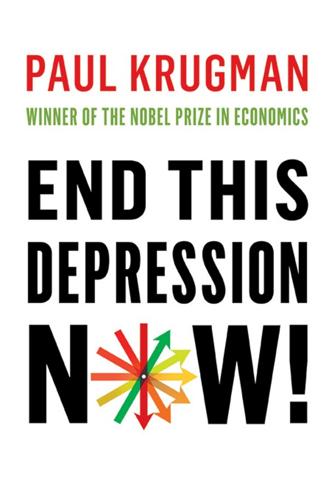
End This Depression Now!
by
Paul Krugman
Published 30 Apr 2012
Invariably there would be questions about whether that meant that we were on the verge of another Great Depression—and I would declare that this wasn’t necessarily so, that there was no reason extreme inequality would necessarily cause economic disaster. Well, whaddya know? Still, correlation is not the same as causation. The fact that a return to pre-Depression levels of inequality was followed by a return to depression economics could be just a coincidence. Or it could reflect common causes of both phenomena. What do we really know here, and what might we suspect? Common causation is almost surely part of the story.
…
The Trouble with Correlation You might think that the way to assess the effects of government spending on the economy is simply to look at the correlation between spending levels and other things, like growth and employment. The truth is that even people who should know better sometimes fall into the trap of equating correlation with causation (see the discussion of debt and growth in chapter 8). But let me try to disabuse you of the notion that this is a useful procedure, by talking about a related question: the effects of tax rates on economic performance. As you surely know, it’s an article of faith on the American right that low taxes are the key to economic success.
…
Congressional Budget Office (CBO): income inequality estimate of, 76–77 real GDP estimates of, 13–14 Conservative Party, U.K., 200 conservatives: anti-government ideology of, 66 anti-Keynesianism of, 93–96, 106–8, 110–11 Big Lie of 2008 financial crisis espoused by, 64–66, 100 free market ideology of, 66 Consumer Financial Protection Bureau, 84 Consumer Price Index (CPI), 156–57, 159, 160 consumer spending, 24, 26, 30, 32, 33, 39, 41, 113, 136 effect of government spending on, 39 household debt and, 45, 47, 126, 146 income inequality and, 83 in 2008 financial crisis, 117 conventional wisdom, lessons of Great Depression ignored in, xi corporations, 30 see also business investment, slump in; executive compensation correlation, causation vs., 83, 198, 232–33, 237 Cowen, Brian, 88 credit booms, 65 credit crunches: of 2008, 41, 110, 113, 117 Great Depression and, 110 credit default swaps, 54, 55 credit expansion, 154 currency, manipulation of, 221 currency, national: devaluation of, 169 disadvantages of, 168–69, 170–71 flexibility of, 169–73, 179 optimum currency area and, 171–72 see also euro Dakotas, high employment in, 37 debt, 4, 34, 131 deregulation and, 50 high levels of, 34, 45, 46, 49–50, 51 self-reinforcing downward spiral in, 46, 48, 49–50 usefulness of, 43 see also deficits; government debt; household debt; private debt “Debt-Deflation Theory of Great Depressions, The” (Fisher), 45 debt relief, 147 defense industry, 236 defense spending, 35, 38–39, 148, 234–35, 235, 236 deficits, 130–49, 151, 202, 238 Alesina/Ardagna study of, 196–99 depressions and, 135–36, 137 exaggerated fear of, 131–32, 212 job creation vs., 131, 143, 149, 206–7, 238 monetary policy and, 135 see also debt deflation, 152, 188 debt and, 45, 49, 163 De Grauwe, Paul, 182–83 deleveraging, 41, 147 paradox of, 45–46, 52 demand, 24–34 in babysitting co-op example, 29–30 inadequate levels of, 25, 29–30, 34, 38, 47, 93, 101–2, 118, 136, 148 spending and, 24–26, 29, 47, 118 unemployment and, 33, 47 see also supply and demand Democracy Corps, 8 Democrats, Democratic Party, 2012 election and, 226, 227–28 Denmark, 184 EEC joined by, 167 depression of 2008–, ix–xii, 209–11 business investment and, 16, 33 debt levels and, 4, 34, 47 democratic values at risk in, 19 economists’ role in, 100–101, 108 education and, 16 in Europe, see Europe, debt crisis in housing sector and, 33, 47 income inequality and, 85, 89–90 inflation rate in, 151–52, 156–57, 159–61, 189, 227 infrastructure investment and, 16–17 lack of demand in, 47 liquidity trap in, 32–34, 38, 51, 136, 155, 163 long-term effects of, 15–17 manufacturing capacity loss in, 16 as morality play, 23, 207, 219 private sector spending and, 33, 47, 211–12 unemployment in, x, 5–12, 24, 110, 117, 119, 210, 212 see also financial crisis of 2008–09; recovery, from depression of 2008– depressions, 27 disproportion between cause and effect in, 22–23, 30–31 government spending and, 135–36, 137, 231 Keynes’s definition of, x Schumpeter on, 204–5 see also Great Depression; recessions deregulation, financial, 54, 56, 67, 85, 114 under Carter, 61 under Clinton, 62 income inequality and, 72–75, 74, 81, 82, 89 under Reagan, 50, 60–61, 62, 67–68 rightward political shift and, 83 supposed benefits of, 69–70, 72–73, 86 derivatives, 98 see also specific financial instruments devaluation, 169, 180–81 disinflation, 159 dot-com bubble, 14, 198 Draghi, Mario, 186 earned-income tax credit, 120 econometrics, 233 economic output, see gross domestic product Economics (Samuelson), 93 economics, economists: academic sociology and, 92, 96, 103 Austrian school of, 151 complacency of, 55 disproportion between cause and effect in, 22–23, 30–31 ignorance of, 106–8 influence of financial elite on, 96 Keynesian, see Keynesian economics laissez-faire, 94, 101 lessons of Great Depression ignored by, xi, 92, 108 liquidationist school of, 204–5 monetarist, 101 as morality play, 23, 207, 219 renewed appreciation of past thinking in, 42 research in, see research, economic Ricardian, 205–6 see also macroeconomics “Economics of Happiness, The” (Bernanke), 5 economy, U.S.: effect of austerity programs on, 51, 213 election outcomes and, 225–26 postwar boom in, 50, 70, 149 size of, 121, 122 supposed structural defects in, 35–36 see also global economy education: austerity policies and, 143, 213–14 depression of 2008– and, 16 income inequality and, 75–76, 89 inequality in, 84 teachers’ salaries in, 72, 76, 148 efficient-markets hypothesis, 97–99, 100, 101, 103–4 Eggertsson, Gauti, 52 Eichengreen, Barry, 236 elections, U.S.: economic growth and, 225–26 of 2012, 226 emergency aid, 119–20, 120, 144, 216 environmental regulation, 221 Essays in Positive Economics (Friedman), 170 euro, 166 benefits of, 168–69, 170–71 creation of, 174 economic flexibility constrained by, 18, 169–73, 179, 184 fixing problems of, 184–87 investor confidence and, 174 liquidity and, 182–84, 185 trade imbalances and, 175, 175 as vulnerable to panics, 182–84, 186 wages and, 174–75 Europe: capital flow in, 169, 174, 180 common currency of, see euro creditor nations of, 46 debtor nations of, 4, 45, 46, 139 democracy and unity in, 184–85 fiscal integration lacking in, 171, 172–73, 176, 179 GDP in, 17 health care in, 18 inflation and, 185, 186 labor mobility lacking in, 171–72, 173, 179 1930s arms race in, 236 social safety nets in, 18 unemployment in, 4, 17, 18, 176, 229, 236 Europe, debt crisis in, x, 4, 40, 45, 46, 138, 140–41, 166–87 austerity programs in, 46, 144, 185, 186, 188, 190 budget deficits and, 177 fiscal irresponsibility as supposed cause of (Big Delusion), 177–79, 187 housing bubbles and, 65, 169, 172, 174, 176 interest rates in, 174, 176, 182–84, 190 liquidity fears and, 182–84 recovery from, 184–87 unequal impact of, 17–18 wages in, 164–65, 169–70, 174–75 European Central Bank, 46, 183 Big Delusion and, 179 inflation and, 161, 180 interest rates and, 190, 202–3 monetary policy of, 180, 185, 186 European Coal and Steel Community, 167 European Economic Community (EEC), 167–68 European Union, 172 exchange rates, fixed vs. flexible, 169–73 executive compensation, 78–79 “outrage constraint” on, 81–82, 83 expansionary austerity, 144, 196–99 expenditure cascades, 84 Fama, Eugene, 69–70, 73, 97, 100, 106 Fannie Mae, 64, 65–66, 100, 172, 220–21 Farrell, Henry, 100, 192 Federal Deposit Insurance Corporation (FDIC), 59, 172 Federal Housing Finance Agency, 221 Federal Reserve, 42, 103 aggressive action needed from, 216–19 creation of, 59 foreign exchange intervention and, 217 inflation and, 161, 217, 219, 227 interest rates and, 33–34, 93, 105, 117, 134, 135, 143, 151, 189–90, 193, 215, 216–17 as lender of last resort, 59 LTCM crisis and, 69 money supply controlled by, 31, 32, 33, 105, 151, 153, 155, 157, 183 recessions and, 105 recovery and, 216–19 in 2008 financial crisis, 104, 106, 116 unconventional asset purchases by, 217 Federal Reserve Bank of Boston, 47–48 Feinberg, Larry, 72 Ferguson, Niall, 135–36, 139, 160 Fianna Fáil, 88 filibusters, 123 financial crisis of 2008–09, ix, x, 40, 41, 69, 72, 99, 104, 111–16 Bernanke on, 3–4 Big Lie of, 64–66, 100, 177 capital ratios and, 59 credit crunch in, 41, 110, 113, 117 deleveraging in, 147 Federal Reserve and, 104, 106 income inequality and, 82, 83 leverage in, 44–46, 63 panics in, 4, 63, 111, 155 real GDP in, 13 see also depression of 2008–; Europe, debt crisis in financial elite: political influence of, 63, 77–78, 85–90 Republican ideology and, 88–89 top 0.01 percent in, 75, 76 top 0.1 percent in, 75, 76, 77, 96 top 1 percent in, 74–75, 74, 76–77, 96 see also income inequality financial industry, see banks, banking industry financial instability hypothesis, 43–44 Financial Times, 95, 100, 203–4 Finland, 184 fiscal integration, 171, 172–73, 176 Fisher, Irving, 22, 42, 44–46, 48, 49, 52, 163 flexibility: currency and, 18, 169–73 paradox of, 52–53 Flip This House (TV show), 112 Florida, 111 food stamps, 120, 144 Ford, John, 56 foreclosures, 45, 127–28 foreign exchange markets, 217 foreign trade, 221 Fox News, 134 Frank, Robert, 84 Freddie Mac, 64, 65–66, 100, 172, 220–21 free trade, 167 Friedman, Milton, 96, 101, 181, 205 on causes of Great Depression, 105–6 Gabriel, Peter, 20 Gagnon, Joseph, 219, 221 Gardiner, Chance (char.), 3 Garn–St.

The Great Mental Models: General Thinking Concepts
by
Shane Parrish
Published 22 Nov 2019
It is entirely possible that having parents who consume a lot of alcohol leads to worse academic outcomes for their children. It is also possible, however, that the reverse is true, or even that having kids who do poorly in school causes parents to drink more. Trying to invert the relationship can help you sort through claims to determine if you are dealing with true causation or just correlation. Causation Whenever correlation is imperfect, extremes will soften over time. The best will always appear to get worse and the worst will appear to get better, regardless of any additional action. This is called regression to the mean, and it means we have to be extra careful when diagnosing causation.
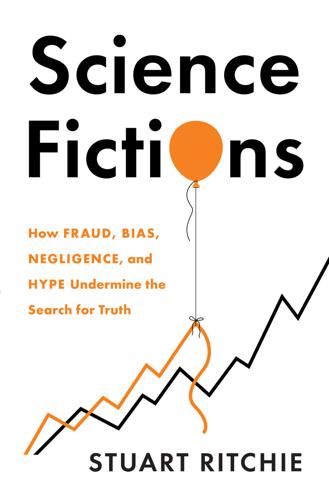
Science Fictions: How Fraud, Bias, Negligence, and Hype Undermine the Search for Truth
by
Stuart Ritchie
Published 20 Jul 2020
You often see a slightly different version: ‘correlation does not imply causation’. There’s an ambiguity here due to the multiple meanings of the word ‘imply’. In its strong definition (thing A logically involves thing B, in the same way that the existence of, say, a dance implies that there’s a dancer), it’s certainly true. But in its weak version (thing A suggests thing B without explicitly saying thing B, in the same way that a receiving a slightly terse email from your boss might imply that they’re unhappy with you), then it’s not correct. In that weak sense, a correlation does sometimes imply causation, even if there’s no causation there at all.
…
The psychophysiologist James Heathers has set up a novelty Twitter account that exists solely to retweet misleading news headlines from translational studies, such as ‘Scientists Develop Jab that Stops Craving for Junk Food’ or ‘Compounds in Carrots Reverse Alzheimer’s-Like Symptoms’ with a simple but accurate addition: ‘… IN MICE’.21 The third kind of hype found by the Cardiff team was possibly the most embarrassing. Everyone, especially scientists, is supposed to know that correlation is not causation.22 This basic insight is taught in every elementary statistics course and is a perennial feature of public debates about science, education, economics and more. When scientists look at an observational dataset, where data have been gathered without any randomised experimental intervention – say, a study charting the growth in children’s vocabulary as they get older – they’re generally just looking at correlations.
…
The statistician Matthew Hankins has amassed a collection of genuine quotes from published papers where p-values remained stubbornly above that threshold, but whose authors clearly had a strong desire for significant results: • ‘a trend that approached significance’ (for a result reported as ‘p < 0.06’) • ‘fairly significant’ (p = 0.09) • ‘significantly significant’ (p = 0.065) • ‘narrowly eluded statistical significance’ (p = 0.0789) • ‘hovered around significance’ (p = 0.061) • ‘very closely brushed the limit of statistical significance’ (p = 0.051) • ‘not absolutely significant but very probably so’ (p > 0.05)62 There’s a whole literature of studies by scientific spin-watchers, each of them highlighting spin in their own fields. 15 per cent of trials in obstetrics and gynaecology spun their non-significant results as if they showed benefits of the treatment.63 35 per cent of studies of prognostic tests for cancer used spin to obfuscate the non-significant nature of their findings.64 47 per cent of trials of obesity treatments published in top journals were spun in some way.65 83 per cent of papers reporting trials of antidepressant and anxiety medication failed to discuss important limitations of their study design.66 A review of brain-imaging studies concluded that hyping up correlation into causation was ‘rampant’.67 Some forms of spin shade into fraud, or at least gross incompetence: a 2009 review showed that, of a sample of studies published in Chinese medical journals that claimed to be randomised controlled trials, only 7 per cent actually used randomisation.68 Even meta-analyses aren’t safe, as we’ve seen before.

The Personal MBA: A World-Class Business Education in a Single Volume
by
Josh Kaufman
Published 2 Feb 2011
Midranges are best used for quick estimates—they’re fast, and you only need to know two data points, but they can be easily skewed by outliers that are abnormally high or low, like Bill Gates’s bank balance. Means, Medians, Modes, and Midranges are useful analytical tools that can indicate typical results—provided you’re careful enough to use the right tool for the job. SHARE THIS CONCEPT: http://book.personalmba.com/mean-median-mode-midrange/ Correlation and Causation Correlation isn’t causation, but it sure is a hint. —EDWARD TUFTE, STATISTICIAN, INFORMATION DESIGN EXPERT, AND PROFESSOR AT YALE UNIVERSITY Imagine a billiards table: if you know the exact position of every ball on the table and the details of the forces applied to the cue ball (impact vector, impact force, location of impact, table friction, and air resistance), you can calculate exactly how the cue ball will travel and how it will affect other balls it hits along the way.
…
Here’s another thought experiment, using hypothetical data: people who suffer heart attacks eat, on average, 57 bacon double cheeseburgers every year. Does eating bacon double cheeseburgers cause heart attacks? Not necessarily. People who suffer heart attacks typically take 365 showers a year and blink their eyes 5.6 million times a year. Do taking showers and blinking your eyes cause heart attacks as well? Correlation is not Causation. Even if you notice that one measurement is highly associated with another, that does not prove that one thing caused the other. Imagine you own a pizza parlor, and you create a thirty-second advertisement to air on local television. Shortly after the commercial goes live, you notice a 30 percent increase in sales.
…
For example, if you know that families go out to celebrate the end of school or that an annual convention is coming up, you can adjust for that seasonality by using historical data. The more you can isolate the change you made in the system from other factors, the more confidence you can have that the change you made intentionally actually caused the results you see. SHARE THIS CONCEPT: http://book.personalmba.com/correlation-causation/ Norms Those who cannot remember the past are condemned to repeat it. —GEORGE SANTAYANA, PHILOSOPHER, ESSAYIST, AND APHORIST If you want to compare the effectiveness of something in the present, it’s often useful to learn from the past. Norms are measures that use historical data as a tool to provide Context for current Measurements.
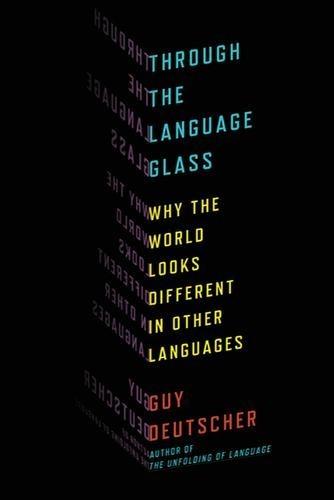
Through the Language Glass: Why the World Looks Different in Other Languages
by
Guy Deutscher
Published 29 Aug 2010
In his room the bed was in the north, in yours it is in the south; the telephone that in his room was in the west is now in the east. So while you will see and remember the same room twice, the Guugu Yimithirr speaker will see and remember two different rooms. CORRELATION OR CAUSATION? One of the most tempting and most common of all logical fallacies is to jump from correlation to causation: to assume that just because two facts correlate, one of them was the cause of the other. To reduce this kind of logic ad absurdum, I could advance the brilliant new theory that language can affect your hair color. In particular, I claim that speaking Swedish makes your hair go blond and speaking Italian makes your hair go dark.
…
So the only imaginable mechanism that could provide such intense drilling in orientation at such a young age is the spoken language—the need to know the directions in order to be able to communicate about the simplest aspects of everyday life. There is thus a compelling case that the relation between language and spatial thinking is not just correlation but causation, and that one’s mother tongue affects how one thinks about space. In particular, a language like Guugu Yimithirr, which forces its speakers to use geographic coordinates at all times, must be a crucial factor in bringing about the perfect pitch for directions and the corresponding patterns of memory that seem so weird and unattainable to us.
…
And while this is as much as we can say with absolute certainty, it is plausible to go one step further and make the following inference: since people tend to react more quickly to color recognition tasks the farther apart the two colors appear to them, and since Russians react more quickly to shades across the siniy-goluboy border than what the objective distance between the hues would imply, it is plausible to conclude that neighboring hues around the border actually appear farther apart to Russian speakers than they are in objective terms. Of course, even if differences between the behavior of Russian and English speakers have been demonstrated objectively, it is always dangerous to jump automatically from correlation to causation. How can we be sure that the Russian language in particular—rather than anything else in the Russians’ background and upbringing—had any causal role in producing their response to colors near the border? Maybe the real cause of their quicker reaction time lies in the habit of Russians to spend hours on end gazing intently at the vast expanses of Russian sky?
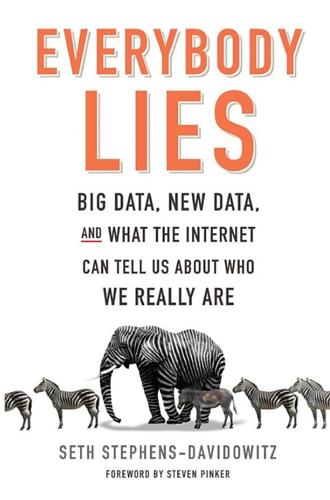
Everybody Lies: Big Data, New Data, and What the Internet Can Tell Us About Who We Really Are
by
Seth Stephens-Davidowitz
Published 8 May 2017
And the last minute of this game will do something that, for an economist, is far more profound: the last sixty seconds will help finally tell us, once and for all, Do advertisements work? The notion that ads improve sales is obviously crucial to our economy. But it is maddeningly hard to prove. In fact, this is a textbook example of exactly how difficult it is to distinguish between correlation and causation. There’s no doubt that products that advertise the most also have the highest sales. Twentieth Century Fox spent $150 million marketing the movie Avatar, which became the highest-grossing film of all time. But how much of the $2.7 billion in Avatar ticket sales was due to the heavy marketing?
…
If we did this, we would find that students who went to Stuyvesant score much higher on standardized tests and get accepted to substantially better universities. But as we’ve seen already in this chapter, this kind of evidence, by itself, is not convincing. Maybe the reason Stuyvesant students perform so much better is that Stuy attracts much better students in the first place. Correlation here does not prove causation. To test the causal effects of Stuyvesant High School, we need to compare two groups that are almost identical: one that got the Stuy treatment and one that did not. We need a natural experiment. But where can we find it? The answer: students, like Yilmaz, who scored very, very close to the cutoff necessary to attend Stuyvesant.* Students who just missed the cutoff are the control group; students who just made the cut are the treatment group.
…
Does it matter if you go to one of the best universities in the world, such as Harvard, or a solid school such as Penn State? Once again, there is a clear correlation between the ranking of one’s school and how much money people make. Ten years into their careers, the average graduate of Harvard makes $123,000. The average graduate of Penn State makes $87,800. But this correlation does not imply causation. Two economists, Stacy Dale and Alan B. Krueger, thought of an ingenious way to test the causal role of elite universities on the future earning potential of their graduates. They had a large dataset that tracked a whole host of information on high school students, including where they applied to college, where they were accepted to college, where they attended college, their family background, and their income as adults.
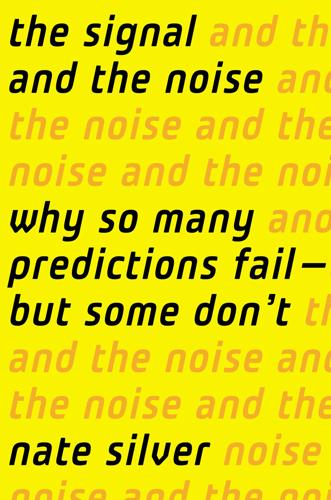
The Signal and the Noise: Why So Many Predictions Fail-But Some Don't
by
Nate Silver
Published 31 Aug 2012
These methods neither require nor encourage us to think about the plausibility of our hypothesis: the idea that cigarettes cause lung cancer competes on a level playing field with the idea that toads predict earthquakes. It is, I suppose, to Fisher’s credit that he recognized that correlation does not always imply causation. However, the Fisherian statistical methods do not encourage us to think about which correlations imply causations and which ones do not. It is perhaps no surprise that after a lifetime of thinking this way, Fisher lost the ability to tell the difference. Bob the Bayesian In the Bayesian worldview, prediction is the yardstick by which we measure progress.
…
First, it is very hard to determine cause and effect from economic statistics alone. Second, the economy is always changing, so explanations of economic behavior that hold in one business cycle may not apply to future ones. And third, as bad as their forecasts have been, the data that economists have to work with isn’t much good either. Correlations Without Causation The government produces data on literally 45,000 economic indicators each year.24 Private data providers track as many as four million statistics.25 The temptation that some economists succumb to is to put all this data into a blender and claim that the resulting gruel is haute cuisine.
…
Some studies have even claimed that the Leading Economic Index has no predictive power at all when applied in real time.35 “There’s very little that’s really predictive,” Hatzius told me. “Figuring out what’s truly causal and what’s correlation is very difficult to do.” Most of you will have heard the maxim “correlation does not imply causation.” Just because two variables have a statistical relationship with each other does not mean that one is responsible for the other. For instance, ice cream sales and forest fires are correlated because both occur more often in the summer heat. But there is no causation; you don’t light a patch of the Montana brush on fire when you buy a pint of Häagen-Dazs.
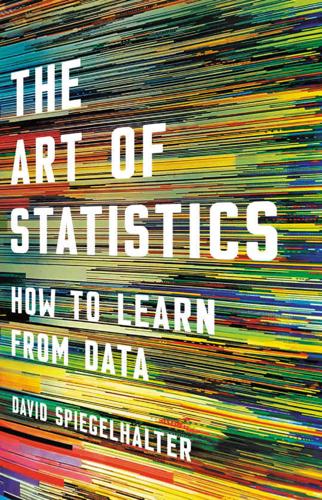
The Art of Statistics: How to Learn From Data
by
David Spiegelhalter
Published 2 Sep 2019
And to give them credit, the authors of the paper doubted it too, adding, ‘Completeness of cancer registration and detection bias are potential explanations for the findings.’ In other words, wealthy people with higher education are more likely to be diagnosed and get their tumour registered, an example of what is known as ascertainment bias in epidemiology. ‘Correlation Does Not Imply Causation’ We saw in the last chapter how Pearson’s correlation coefficient measures how close the points on a scatter-plot are to a straight line. When considering English hospitals conducting children’s heart surgery in the 1990s, and plotting the number of cases against their survival, the high correlation showed that bigger hospitals were associated with lower mortality.
…
When considering English hospitals conducting children’s heart surgery in the 1990s, and plotting the number of cases against their survival, the high correlation showed that bigger hospitals were associated with lower mortality. But we could not conclude that bigger hospitals caused the lower mortality. This cautious attitude has a long pedigree. When Karl Pearson’s newly developed correlation coefficient was being discussed in the journal Nature in 1900, a commentator warned that ‘correlation does not imply causation’. In the succeeding century this phrase has been a mantra repeatedly uttered by statisticians when confronted by claims based on simply observing that two things tend to vary together. There is even a website that automatically generates idiotic associations, such as the delightful correlation of 0.96 between the annual per-capita consumption of mozzarella cheese in the US between 2000 and 2009, and the number of civil engineering doctorates awarded in each of those years.2 There seems to be a deep human need to explain things that happen in terms of simple cause—effect relationships—I am sure we could all construct a good story about all those new engineers gorging on pizzas.
…
But randomization is often difficult and sometimes impossible: we can’t test the effect of our habits by randomizing people to smoke or eat unhealthy diets (even though such experiments are performed on animals). When the data does not arise from an experiment, it is said to be observational. So often we are left with trying as best we can to sort out correlation from causation by using good design and statistical principles applied to observational data, combined with a healthy dose of scepticism. The issue of old men’s ears might be rather less important than some of the topics in this book, but illustrates the need for choosing study designs that are appropriate for answering questions.
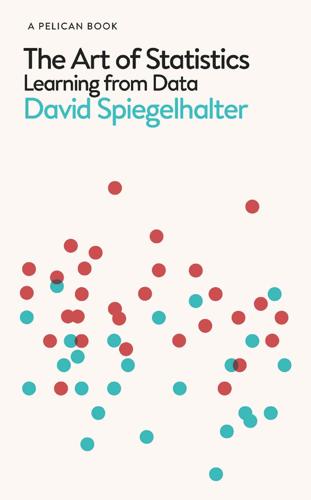
The Art of Statistics: Learning From Data
by
David Spiegelhalter
Published 14 Oct 2019
And to give them credit, the authors of the paper doubted it too, adding, ‘Completeness of cancer registration and detection bias are potential explanations for the findings.’ In other words, wealthy people with higher education are more likely to be diagnosed and get their tumour registered, an example of what is known as ascertainment bias in epidemiology. ‘Correlation Does Not Imply Causation’ We saw in the last chapter how Pearson’s correlation coefficient measures how close the points on a scatter-plot are to a straight line. When considering English hospitals conducting children’s heart surgery in the 1990s, and plotting the number of cases against their survival, the high correlation showed that bigger hospitals were associated with lower mortality.
…
When considering English hospitals conducting children’s heart surgery in the 1990s, and plotting the number of cases against their survival, the high correlation showed that bigger hospitals were associated with lower mortality. But we could not conclude that bigger hospitals caused the lower mortality. This cautious attitude has a long pedigree. When Karl Pearson’s newly developed correlation coefficient was being discussed in the journal Nature in 1900, a commentator warned that ‘correlation does not imply causation’. In the succeeding century this phrase has been a mantra repeatedly uttered by statisticians when confronted by claims based on simply observing that two things tend to vary together. There is even a website that automatically generates idiotic associations, such as the delightful correlation of 0.96 between the annual per-capita consumption of mozzarella cheese in the US between 2000 and 2009, and the number of civil engineering doctorates awarded in each of those years.2 There seems to be a deep human need to explain things that happen in terms of simple cause–effect relationships – I am sure we could all construct a good story about all those new engineers gorging on pizzas.
…
But randomization is often difficult and sometimes impossible: we can’t test the effect of our habits by randomizing people to smoke or eat unhealthy diets (even though such experiments are performed on animals). When the data does not arise from an experiment, it is said to be observational. So often we are left with trying as best we can to sort out correlation from causation by using good design and statistical principles applied to observational data, combined with a healthy dose of scepticism. The issue of old men’s ears might be rather less important than some of the topics in this book, but illustrates the need for choosing study designs that are appropriate for answering questions.
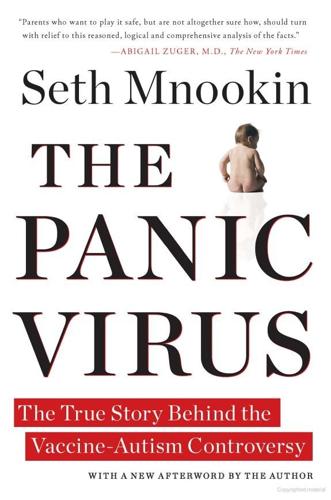
The Panic Virus: The True Story Behind the Vaccine-Autism Controversy
by
Seth Mnookin
Published 3 Jan 2012
Before continuing with the nationwide effort, his aides said, public health officials needed to promise that there would not be any more children who were diagnosed with polio after being vaccinated. That, as anyone with an elementary understanding of immunology knew, was an impossible guarantee to provide, and so, instead of trusting people to understand and accept that there are risks with every medical procedure and that correlation does not equal causation, or trying to explain that the problems appeared to be related to the specific conditions under which the infected batches had been produced and not with the safety of the vaccine generally, the government took the one step guaranteed to undermine public confidence: On May 7, Scheele announced that the polio vaccine program was being shut down so that the government, “with the help of the manufacturers,” could undertake “a reappraisal of all of their tests and procedures.”13 “The Public Health Service believes that every single step in the interest of safety must be taken,” he said.
…
Proving that the media’s frenzy for beating competitors by mere minutes is not a product of the Internet age, NBC immediately broke the embargo, and was just as quickly denounced by its competitors as forever tainting the sanctity of agreements made between reporters and their sources. 13 The difficulty in determining whether correlation equals causation causes an enormous number of misapprehensions. Until a specific mechanism demonstrating how A causes B is identified, it’s best to assume that any correlation is incidental, or that both A and B relate independently to some third factor. An example that highlights this is the correlation between drinking milk and cancer rates, which some advocacy groups (including People for the Ethical Treatment of Animals) use to argue that drinking milk causes cancer.
…
In this political battle, Kirby employed a time-honored tactic of push pollers and ward politicians: He used an ominoussounding claim—“Curiously, the first case of autism was not recorded until the early 1940s, a few years after thimerosal was introduced in vaccines”—to make his accusation sound as if it was idle speculation. In this case, Kirby both blurred the difference between correlation and causation and conflated the first time a disease is given a particular label with the first time it appears in a population. (It was a little like saying, “Curiously, schizophrenia was not identified as a disorder until the late 1880s, a few years after Alexander Graham Bell invented the telephone.”)
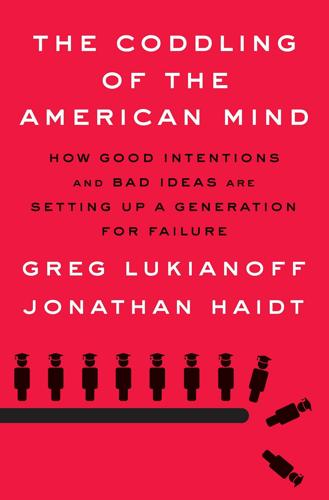
The Coddling of the American Mind: How Good Intentions and Bad Ideas Are Setting Up a Generation for Failure
by
Greg Lukianoff
and
Jonathan Haidt
Published 14 Jun 2018
When you see a situation in which some groups are underrepresented, it is an invitation to investigate and find out whether there are obstacles, a hostile climate, or systemic factors that have a disparate impact on members of those groups. But how can you know whether unequal outcomes truly reveal a violation of justice? Correlation Does Not Imply Causation All social scientists know that correlation does not imply causation. If A and B seem to be linked—that is, they change together over time or are found together in a population at levels higher than chance would predict—then it is certainly possible that A caused B. But it’s also possible that B caused A (reverse causation) or that a third variable, C, caused both A and B and there is no direct relationship between A and B.
…
An article about the study that was published at Gawker.com featured this headline: MORE BUCK FOR YOUR BANG: PEOPLE WHO HAVE MORE SEX MAKE THE MOST MONEY.38 The headline suggested that A (sex) causes B (money), which is surely the best causal path to choose if your goal is to entice people to click on your article. But any social scientist presented with that correlation would instantly wonder about reverse causation (does having more money cause people to have more sex?) and would then move on to a third-variable explanation, which in this case seems to be the correct one.39 The Gawker story itself noted that people who are more extraverted have more sex and also make more money. In this case, a third variable, C (extraversion, or high sociability) may cause both A (more sex) and B (more money).
…
In this case, a third variable, C (extraversion, or high sociability) may cause both A (more sex) and B (more money). Social scientists analyze correlations like this constantly (to the great annoyance of friends and family). They are self-appointed conversation referees, throwing a yellow penalty flag when anyone tries to interpret a correlation as evidence of causation. But a funny thing has been happening in recent years on campus. Nowadays, when someone points to an outcome gap and makes the claim (implicitly or explicitly) that the gap itself is evidence of systemic injustice, social scientists often just nod along with everyone else in the room.
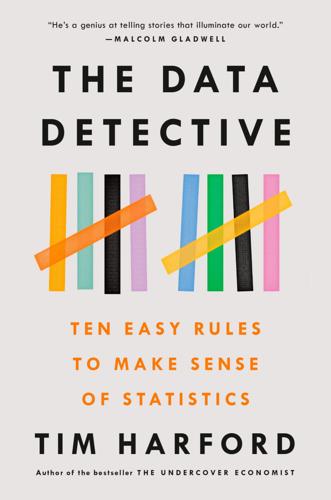
The Data Detective: Ten Easy Rules to Make Sense of Statistics
by
Tim Harford
Published 2 Feb 2021
An expert witness wasn’t so sure about the scientific evidence, and so he turned to the topic of storks and babies. There was a positive correlation between the number of babies born and the number of storks in the vicinity, he explained.17 That old story about babies being delivered by storks wasn’t true, the expert went on; of course it wasn’t. Correlation is not causation. Storks do not deliver children. But larger places have more room both for children and for storks. Similarly, just because smoking was correlated with lung cancer did not mean—not for a moment—that smoking caused cancer. “Do you honestly think there is as casual a relationship between statistics linking smoking with disease as there is about storks?”
…
Reading a newspaper or listening to talk radio also helped, but the effect of The Colbert Report was much bigger. One day a week of watching Colbert taught people as much about campaign finance as did four days a week reading a newspaper, for example—or five extra years of schooling. Of course, this is a measure of correlation, not causation. It’s possible that the people who were already interested in Super PACs tuned in to Colbert to hear him wisecrack about them. Or perhaps politics junkies know about Super PACs and also love watching Colbert. But I suspect the show did contribute to the growing understanding, because Colbert really did go deep into the details.
…
See also perspective on statistical data convergence of estimates, 246 conversion of units, 165n Corbett-Davies, Sam, 177 Corbyn, Jeremy, 14 coronavirus pandemic (COVID-19) and biases in journalism, 99, 102 and evaluation of statistical claims, 26, 29, 68, 68n and exponential growth, 41n and gender disparities, 140 and Nightingale Hospital, 213 and sanitary practices, 226n and selection bias in data, 109–10 statistical challenges of, 6–11, 120n and vaccination trends, 99 correlation vs. causation, 15, 64, 156–57, 275 corruption, 59, 209–10 cost-benefit analyses, 198, 199 Cotgreave, Andy, 232 COVID-19. See coronavirus pandemic (COVID-19) Cowperthwaite, John, 200–201, 203, 204 Crawford, Kate, 150 credibility of data, 192, 195 Credit Suisse, 80, 80n credulity in data, 164–67 Criado Perez, Caroline, 139 crime and criminal justice and alternative sanctions, 176–79 and bail recommendations, 158, 169, 180 and capital punishment, 35–36 and COMPAS system, 176–79 and human judgment vs. algorithms, 168–71 and missing data issues, 143 and murder rate data, 55, 87–89, 88n Crime Survey of England and Wales, 143 Crimean War, 213–14, 220, 226, 233–37 Cuddy, Amy, 121, 122 Cukier, Kenneth, 157 cultural influences, 37, 136–37, 201 curiosity, 265–79, 276n currency speculation, 255, 257–58 current offense bias, 169 curse of knowledge, 71–72 cyberspace, 149 cynicism and skepticism about statistics, 8–10, 13, 14, 266 Daily Mail, 133 dark data, 146 data recording practices, 66–67 dazzle camouflage, 218–19 De Meyer, Kris, 38–39 De Waarheid, 44 death penalty, 35–36 death rates, 214–15, 236.
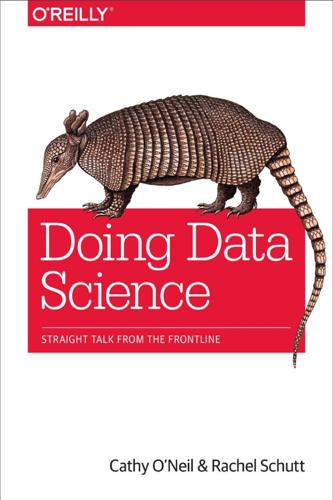
Doing Data Science: Straight Talk From the Frontline
by
Cathy O'Neil
and
Rachel Schutt
Published 8 Oct 2013
So, for example, your model for predicting or recommending a book on Amazon could include a feature “whether or not you’ve read Wes McKinney’s O’Reilly book Python for Data Analysis.” We wouldn’t say that reading his book caused you to read this book. It just might be a good predictor, which would have been discovered and come out as such in the process of optimizing for accuracy. We wish to emphasize here that it’s not simply the familiar correlation-causation trade-off you’ve perhaps had drilled into your head already, but rather that your intent when building such a model or system was not even to understand causality at all, but rather to predict. And that if your intent were to build a model that helps you get at causality, you would go about that in a different way.
…
He got his PhD in biostatistics from UC Berkeley after working at a litigation consulting firm. As part of his job, he needed to create stories from data for experts to testify at trial, and he thus developed what he calls “data intuition” from being exposed to tons of different datasets. Correlation Doesn’t Imply Causation One of the biggest statistical challenges, from both a theoretical and practical perspective, is establishing a causal relationship between two variables. When does one thing cause another? It’s even trickier than it sounds. Let’s say we discover a correlation between ice cream sales and bathing suit sales, which we display by plotting ice cream sales and bathing suit sales over time in Figure 11-1.
…
bipartite graphs, Kyle Teague and GetGlue, Terminology from Social Networks black box algorithms, Machine Learning Algorithms bootstrap aggregating, Random Forests bootstrap samples, Random Forests Bruner, Jon, Data Journalism–Writing Technical Journalism: Advice from an Expert C caret packages, Code readability and reusability case attribute vs. social network data, Case-Attribute Data versus Social Network Data causal effect, Definition: The Causal Effect causal graphs, Visualizing Causality causal inference, The Rubin Causal Model causal models, In-Sample, Out-of-Sample, and Causality–In-Sample, Out-of-Sample, and Causality, In-Sample, Out-of-Sample, and Causality causal questions, Asking Causal Questions causality, Causality–Three Pieces of Advice A/B testing for evaluation, A/B Tests–A/B Tests causal questions, Asking Causal Questions clinical trials to determine, The Gold Standard: Randomized Clinical Trials–The Gold Standard: Randomized Clinical Trials correlation vs., Correlation Doesn’t Imply Causation–Confounders: A Dating Example observational studies and, Second Best: Observational Studies–Definition: The Causal Effect OK Cupid example, OK Cupid’s Attempt–OK Cupid’s Attempt unit level, The Rubin Causal Model visualizing, Visualizing Causality–Visualizing Causality centrality measures, Centrality Measures–The Industry of Centrality Measures eigenvalue centrality, Representations of Networks and Eigenvalue Centrality usefulness of, The Industry of Centrality Measures channels, Word Frequency Problem problems with, Word Frequency Problem chaos, Thought Experiment: How Would You Simulate Chaos?
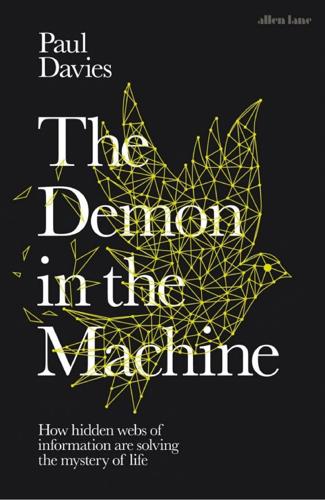
The Demon in the Machine: How Hidden Webs of Information Are Finally Solving the Mystery of Life
by
Paul Davies
Published 31 Jan 2019
Though it is tempting to think of the shapes in the Game of Life as ‘things’ with some sort of independent existence obeying certain rules, there remains a deep question: in what sense can it be said that the collision of two shapes ‘causes’ the appearance of another? Joseph Lizier and Mikhail Prokopenko at the University of Sydney tried to tease out the difference between mere correlation and physical causation by performing a careful analysis of cellular automata, including the Game of Life.7 They treated information flowing through a system as analogous to injecting dye into a river and searching for it downstream. Where the dye goes is ‘causally affected’ by what happens at the injection point.
…
Conversely, about 35 per cent of node pairs transfer no information between them even though they are causally connected via a ‘chemical wire’ (edge). Patterns of information traversing the system may appear to be flowing down the ‘wires’ (along the edges of the graph) even when they are not. For some reason, ‘correlation without causation’ seems to be amplified in the biological case relative to random networks. In Surely You’re Joking, Mr. Feynman!,21 the raconteur physicist and self-confessed rascal describes how, as a youngster, he gained a reputation for being able to mend malfunctioning radios (yes, that again!). On one occasion he was initially chided for briefly peering into the radio then merely walking back and forth.
…
Everyone agrees life is complex, but is its complexity because it is the product of a complex process, or might it be the outcome of successive simple processes, as in the Game of Life? I am grateful to Sara Walker for stressing the distinction between a complex process and a complex state. fn6 There is no mystery about correlation without causation. Let me give a simple example. Suppose I email my friend Alice in London the password protecting a secret bank account, which she immediately accesses, and a few moments later I send the same message to Bob in New York, who follows suit. A spy monitoring the account might jump to the erroneous conclusion that Alice had given Bob the password, that is, that the information about the password had passed from London to New York, thus causally linking Alice to Bob.
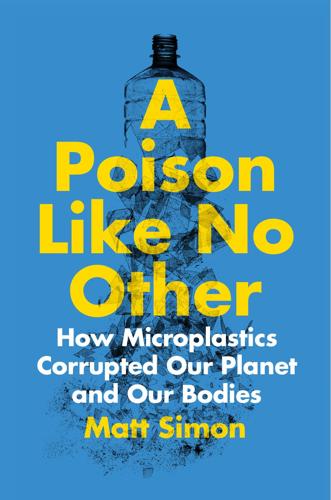
A Poison Like No Other: How Microplastics Corrupted Our Planet and Our Bodies
by
Matt Simon
Published 24 Jun 2022
“We see asthma growing up, we see COPD [chronic obstructive pulmonary disease] going up, we see lung fibrosis going up, we see lung cancer going up, especially in women,” Melgert says. “Then the big question is, Why is this?” Here we have to tread carefully around a classic scientific trap: correlation does not imply causation. Rates of respiratory disease have been increasing in lockstep with the production and use of plastic. Between 2001 and 2009, the number of Americans afflicted with asthma grew from 20 million to 25 million, according to the Centers for Disease Control and Prevention.69 Over the same period, global plastics production grew from 480 billion pounds to 635 billion pounds.70 The two trends correlate in their growth rate—almost exactly so—but science doesn’t yet have evidence that microplastic pollution, especially in the home, is causing more respiratory disease.
…
In addition, particulate matter in general has been linked to cognitive problems—exposure to traffic pollution, for instance, is associated with a higher risk for Alzheimer’s disease and other forms of dementia72— leading scientists to speculate whether microplastics have anything to b r e at h e d e e p t h e p l a s t i c a i r do with rising rates of neurodegenerative diseases.73 That remains speculation, though, because correlation does not imply causation. Air pollution is a wildly complex amalgam of soot, exhaust, pollen, toxic gases like ozone, and microplastics. “There’s actually a lot of epidemiological evidence that particulate matter predisposes you to develop lung disease, or to lose lung function, more quickly,” says Melgert.
…
See bisphenol S Brahney, Janice, 1–3, 19, 111–116, 118, 120 brain, 152–154 Brander, Susanne, 64–65, 67 Brandon, Jennifer, 49 Brazil, 30 caddisflies, 80 cadmium, 22 California, 106–107 cancer, 130–137, 144 Captain Trash Wheel (barge), 81 carbon chains, 15–24 carbon footprints, 157 carbon sequestration, 61 carbon-carbon bonds, 16 carcinogens, 133–137 Carpenter, Edward, 41–42 carrots, 100 causation, correlation vs., 135 celluloid, 10 cellulose, modified, 50 cellulose acetate, 82 cellulose nitrate, 10, 82 cetaceans, 63–64 Charleston, South Carolina, 29, 35 chickens, 103 children bottles and, 4, 107–108 BPA and, 139 eliminating lead in products for, 164–165 endocrine-disrupting chemicals and, 144–146 extra risks to, 4, 127–128 lungs of, 135–136 polyvinylchloride and, 16 Chile, 87 China, 92, 104, 107, 160 Choy, Anela, 53–54 cigarette butts, 82 cilia, 130 climate change, 7–8, 162 clothing fast fashion and, 32, 158–159 life cycle of fiber in, 58–60 oceans and, 46 overview of problems of, 32–38 solutions for, 163 clotting, 148–149 clouds, 121–122 Coastal Conservation League, 29 coating solutions, 162 coffee cups, 108 Coffin, Scott, 106–107, 157 cognitive problems, 135–136 coho salmon, 77–80 Cole, Matthew, 46–47, 74 collodion, 10 colonialism, 160 consumption, estimates of total, 130 contamination of microplastic samples, 26 copepods, 61–62 corals, 68–69 correlation, causation vs., 135 cosmetics, 13–14, 151 cotton, 32, 50, 158 Couceiro, Fay, 38, 127, 137 COVID-19 pandemic, 128 crops, 85–90, 98–103 cruise ships, 47 crustaceans, 66–67, 73 currents, 43, 62 index dairy, 104 Danopoulos, Evangelos, 104, 105 DDT, 133 definition of microplastics, 24–25, 31 dementia, 135–136 Denmark, 47, 104 DES.
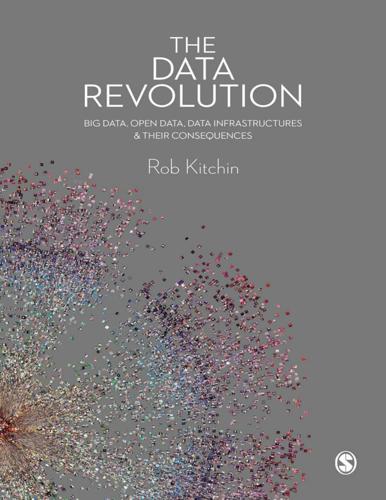
The Data Revolution: Big Data, Open Data, Data Infrastructures and Their Consequences
by
Rob Kitchin
Published 25 Aug 2014
However, while pattern recognition might identify potentially interesting relationships, the veracity of these needs to be further tested on other datasets to ensure their reliability and validity. In other words, the relationships should form the basis for hypotheses that are more widely tested, which in turn are used to build and refine a theory that explains them. Thus correlations do not supersede causation, but rather should form the basis for additional research to establish if such correlations are indicative of causation. Only then can we get a sense as to how meaningful are the causes of the correlation. While the idea that data can speak for themselves free of bias or framing may seem like an attractive one, the reality is somewhat different.
…
Petabytes allow us to say: ‘Correlation is enough.’ We can stop looking for models. We can analyze the data without hypotheses about what it might show. We can throw the numbers into the biggest computing clusters the world has ever seen and let statistical algorithms find patterns where science cannot... Correlation supersedes causation, and science can advance even without coherent models, unified theories, or really any mechanistic explanation at all. There’s no reason to cling to our old ways. (my emphasis) Similarly, Prensky (2009) argues: ‘scientists no longer have to make educated guesses, construct hypotheses and models, and test them with data-based experiments and examples.
…
Data do not pre-exist their generation and arise from nowhere. Rather data are created within a complex data assemblage that actively shapes its constitution. Data then can never just speak for themselves, but are always, inherently, speaking from a particular position (Crawford 2013). Further, Anderson’s (2008) claim that ‘[c]orrelation supersedes causation’, suggests that patterns found within a dataset are inherently meaningful. This is an assumption that all trained statisticians know is dangerous and false. Correlations between variables within a dataset can be random in nature and have no or little causal association (see Chapter 9).

Model Thinker: What You Need to Know to Make Data Work for You
by
Scott E. Page
Published 27 Nov 2018
If the relationship is causal (see below), the model can be used to predict the number of orders that each employee can fill per shift as a function of years of work and we can use the model to project how many orders the current employees will fill next year. Here we have an instance of a model both making a prediction and guiding an action. Correlation vs. Causation Regression only reveals correlation among variables, not causality.3 If we first construct a model and then use regression to test if the model’s results are supported by data, we do not prove causality either. However, writing models first is far better than running regressions in search of a significant correlate, a technique known as data mining.
…
Income and wealth correlate with human flourishing. Higher-income individuals enjoy better health, longer life expectancy, and higher life satisfaction and happiness. Those at the bottom of the income distribution experience higher rates of homicide, divorce, mental illness, and anxiety.4 We must be careful not to confuse correlation with causation: a substantial part of this correlation can be explained by the fact that healthier, happier people earn more money. Nevertheless, almost all studies show a connection between income and flourishing. No one prefers to be poorer. Second, we have a plethora of models of inequality written by a diversely tooled collection of economists, sociologists, political scientists, and even physicists and biologists.
…
See specific models completeness, in rational-actor model, 49 computational costs, 283 concave functions, 98–99 concavity, 273 diversity and, 99 risk aversion and, 99 conditionality, 17 Condorcet jury theorem, 27, 33, 40 defining, 28 configurations, 182 conformity effect, 309 congestion, 185 model, 275–277 Congress, US, 229, 230 (fig.), 233 conservatism, 89–90 consistency rational choice and, 50 in rational-actor model, 51 conspicuous consumption, 297 consumption, rational-actor model of, 48 consumption-investment equation, 101 content, 3 continuity, in rational-actor model, 49 continuous action games, 247–248 continuous function, entropy and, 146 continuous signals, 300 separation with, 301 convexity, 95–98 risk-loving and, 99 cooperation, 255 clustering bootstraps, 265 group selection and, 266 repetition and, 256–259 reputation and, 256–259 cooperative action model, 262–267 defining, 263 cooperative advantage, ratio of, 263 cooperative games, 108–110 defining, 108 coordination model, 241 paradoxes of, 174, 175 correlation, causation and, 86–87 costless signals, 298 craft traditions, 303 Craigslist, 105 Crime and Punishment (Dostoyevsky), 8 critical states, 74 Croson, Rachel, 243 crowded markets, 239 price competition in, 239 (fig.) crowds, wisdom of, 30 Cuban missile crisis, 9, 10 culture/strategy game, 318–319 cyclic, 147 data, 12 binary classifications of, 92–93 broadcast model and, 134 categories and, 34 dimensionality of, 31 in identification problem, 250 interpretation of, 2 many-model thinking and, 3–4 mining, 86 organization of, 2 overfitting, 41 on piece-rate work, 3–4 in wisdom hierarchy, 7 death rule, 176 decision problems, public project, 292 decisions, 47 Markov models, 199 trees, 93 decomposability, of entropy, 146 defection, 255 degeneration, 120 degree average, 118 of network formation, 123 in network structure, 118 of node, 118 degree squaring, 139–140 Deloitte, 4 Dennett, Daniel, 177–178 dependent variables, 84 depreciation rate, 101 design, 15 in REDCAPE, 20 Dewey, John, 305 Diamond, Jared, 269, 278 diffusion model, 134–137 diffusion probability, 135 dimensionality, of data, 31 diminishing returns, 98 discounting, hyperbolic, 52 discrete dynamical systems, 182 discrete signals, 298–300 Disney World, 185 distribution defining, 59 exponential, 149, 150 functions and, 63–66 lognormal, 60, 66–67 long-tailed, 59, 75–79 normal, 59–61, 61 (fig.), 65–66, 150 power-law, 69–73, 71 (fig.)
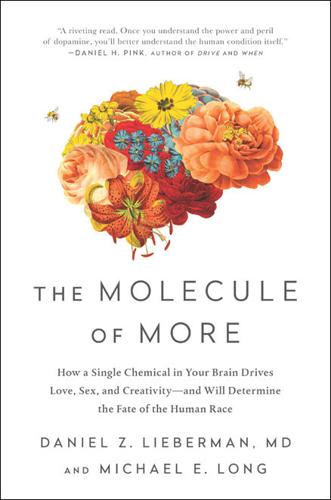
The Molecule of More: How a Single Chemical in Your Brain Drives Love, Sex, and Creativityand Will Det Ermine the Fate of the Human Race
by
Daniel Z. Lieberman
and
Michael E. Long
Published 13 Aug 2018
—Ambrose Bierce, The Devil’s Dictionary Chapter 5 POLITICS Why we can’t just get along. In which we learn how superpowers and hand sanitizers affect our political ideology THE AUTHORS REGRET . . . In April 2002 the American Journal of Political Science published a research report, “Correlation not Causation: The Relationship Between Personality Traits and Political Ideologies.” It was written by a group of researchers from Virginia Commonwealth University who studied the link between political beliefs and personality traits. They found that the two were connected, and that the connection could be attributed to genes.
…
The stereotypes, they said, were true: conservatives tend to be impulsive and authoritarian while liberals tend to be well socialized and generous. But in science, when you find just what you expect, it can be a red flag. And in January 2016, fourteen years after the original report, the journal published a retraction: The authors regret that there is an error in the published version of “Correlation not Causation: The Relationship Between Personality Traits and Political Ideologies.” The interpretation of the coding . . . was exactly reversed. Somebody had flipped the labels. The correct interpretation was the opposite of what they reported. It was the liberals in their study—not the conservatives—who were manipulative, tough-minded, and practical.
…
By the time the depression starts to lift, the brain has adapted to the medication in such a way that the serotonin system is more active in some places and less in others. No one really knows how antidepressants improve mood. FURTHER READING Verhulst, B., Eaves, L. J., & Hatemi, P. K. (2012). Correlation not causation: The relationship between personality traits and political ideologies. American Journal of Political Science, 56(1), 34–51. Bai, M. (2017, June 29). Why Pelosi should go—and take the ’60s generation with her. Matt Bai’s Political World. Retrieved from www.yahoo.com/news/pelosi-go-take-60s-generation-090032524.html Gray, N.

Enlightenment Now: The Case for Reason, Science, Humanism, and Progress
by
Steven Pinker
Published 13 Feb 2018
Not surprisingly, as countries get richer they get happier (chapter 18); more surprisingly, as countries get richer they get smarter (chapter 16).59 In explaining this Somalia-to-Sweden continuum, with poor violent repressive unhappy countries at one end and rich peaceful liberal happy ones at the other, correlation is not causation, and other factors like education, geography, history, and culture may play roles.60 But when the quants try to tease them apart, they find that economic development does seem to be a major mover of human welfare.61 In an old academic joke, a dean is presiding over a faculty meeting when a genie appears and offers him one of three wishes—money, fame, or wisdom.
…
That creates an opening for politicians to rouse the rabble by singling out cheaters who take more than their fair share: welfare queens, immigrants, foreign countries, bankers, or the rich, sometimes identified with ethnic minorities.18 In addition to effects on individual psychology, inequality has been linked to several kinds of society-wide dysfunction, including economic stagnation, financial instability, intergenerational immobility, and political influence-peddling. These harms must be taken seriously, but here too the leap from correlation to causation has been contested.19 Either way, I suspect that it’s less effective to aim at the Gini index as a deeply buried root cause of many social ills than to zero in on solutions to each problem: investment in research and infrastructure to escape economic stagnation, regulation of the finance sector to reduce instability, broader access to education and job training to facilitate economic mobility, electoral transparency and finance reform to eliminate illicit influence, and so on.
…
In the developing world a young woman can’t even work as a household servant if she is unable to read a note or count out supplies, and higher rungs of the occupational ladder require ever-increasing abilities to understand technical material. The first countries that made the Great Escape from universal poverty in the 19th century, and the countries that have grown the fastest ever since, are the countries that educated their children most intensely.5 As with every question in social science, correlation is not causation. Do better-educated countries get richer, or can richer countries afford more education? One way to cut the knot is to take advantage of the fact that a cause must precede its effect. Studies that assess education at Time 1 and wealth at Time 2, holding all else constant, suggest that investing in education really does make countries richer.

The Myth of Artificial Intelligence: Why Computers Can't Think the Way We Do
by
Erik J. Larson
Published 5 Apr 2021
One of them will write Shakespeare.”12 Jordan here is pointing to the well-known problem in statistics known as overfitting (discussed below). Depressingly for Markram and other advocates of Data Brain projects like the Human Brain Project, overfitting is particularly problematic in the absence of causal or theoretical information about a domain—in the absence of general intelligence, that is. “Correlation is not causation” is a familiar caution, but bold claims made on behalf of Big Data AI projects in recent years have made it particularly relevant again. Apparently obvious truths about knowledge are seemingly now in need of restatement in the wake of major claims made about data and machine learning. As Marcus and Davis were forced to point out in the New York Times, “a big data analysis might reveal, for instance, that from 2006 to 2011 the United States murder rate was well correlated with the market share of Internet Explorer: Both went down sharply.
…
W., 248 Byron, Lord, 238 Capek, Karel, 82–83 causation: correlation and, 259; Hume on, 120; ladder of, 130–131, 174; relevance problems in, 112 chess: Deep Blue for, 219; played by computers, 284n1; Turing’s interest in, 19–20 Chollet, François, 27 Chomsky, Noam, 52, 95 classification, in supervised learning, 134 cognition, Legos theory of, 266 color, 79, 289n16 common sense, 2, 131–132, 177; scripts approach to, 181–182; Winograd schemas test of, 196–203 computational knowledge, 178–182 computers: chess played by, 19–20, 284n1; earliest, 232–233; in history of technology, 44; machine learning by, 133; translation by, 52–55; as Turing machines, 16, 17; Turing’s paper on, 10–11 Comte, August, 63–66 Condorcet (Marie Jean Antoine Nicolas Caritat, the Marquis de Condorcet), 288n4 conjectural inference, 163 consciousness, 77–80, 277 conversations, Grice’s Maxims for, 215–216 Copernicus, Nicolaus, 104 counterfactuals, 174 creative abduction, 187–189 Cukier, Kenneth, 143, 144, 257 Czechoslovakia, 60–61 Dartmouth Conference (Dartmouth Summer Research Project on Artificial Intelligence; 1956), 50–51 data: big data, 142–146; observations turned into, 291n12 Data Brain projects, 251–254, 261, 266, 268, 269 data science, 144 Davis, Ernest, 131, 183; on brittleness problem, 126; on correlation and causation, 259; on DeepMind, 127, 161–162; on Google Duplex, 227; on limitations of AI, 75–76; on machine reading comprehension, 195; on Talk to Books, 228 deduction, 106–110, 171–172; extensions to, 167, 175; knowledge missing from, 110–112; relevance in, 112–115 deductive inference, 189 Deep Blue (chess computer), 219 deep learning, 125, 127, 134, 135; as dead end, 275; fooling systems for, 165–166; not used by Watson, 231 DeepMind (computer program), 127, 141, 161–162 DeepQA (Jeopardy!
…
See natural language Lanier, Jaron, 84, 244, 277; on encouraging human intelligence, 239; on erosion of personhood, 270, 272–273 Large Hadron Collider (LHC), 254–255 Law of Accelerating Returns (LOAR), 42, 47–48 learning: definition of, 133; by humans, 141 LeCun, Yann, 75 Legos theory of cognition, 266 Lenat, Doug, 74 Levesque, Hector, 76, 216; on attempts at artificial general intelligence, 175, 186; on Goostman, 192; pronoun disambiguation problem of, 203; on Winograd schemas, 195–196, 198–201 Loebner Prize, 59 Logic Theorist (AI program), 51, 110 Lord of the Rings (novels; Tolkien), 229–230 Lovelace, Ada, 233 machine learning: definition of, 133; empirical constraint in, 146–149; frequency assumption in, 150–154; model saturation in, 155–156; as narrow AI, 141–142; as simulation, 138–140; supervised learning in, 137 machine learning systems, 28–30 MacIntyre, Alasdair, 70–71 Marcus, Gary, 131, 183; on brittleness problem, 126; on correlation and causation, 259; on DeepMind, 127, 161–162; on Google Duplex, 227; on Goostman, 192; on Kurzweil’s pattern recognition theory, 265; on limitations of AI, 75–76; on machine reading comprehension, 195; on superintelligent computers, 81; on Talk to Books, 228 Markram, Henry, 252–254, 273; on AI, 251; on big data versus theory, 256–258, 267, 268; on hive mind, 245–246, 276; Human Brain Project under, 247–250; Legos theory of cognition by, 266; on theory in neuroscience, 261, 262 Marquand, Alan, 232 mathematics: functions in, 139; Gödel’s incompleteness theorems in, 12–14; Hilbert’s challenge in, 14–16; Turing on intuition and ingenuity in, 11 Mathews, Paul M., 256, 267 Mayer-Schönberger, Viktor, 143, 144, 257 McCarthy, John, 50, 107, 285n11 Microsoft Tay (chatbot), 229 Mill, John Stuart, 242, 243 Miller, George, 50 minimax technique, 284n1 Minsky, Marvin, 50, 52, 222 Mitchell, Melanie, 165 Mitchell, Tom, 133 model saturation, 155–156 modus ponens, 108–109, 168–169 monologues, Turing test variation using, 194–195, 212–214 monotonic inference, 167 Mountcastle, Vernon, 264 Mumford, Lewis, 95, 98 “The Murders in the Rue Morgue” (short story, Poe), 89–94 Musk, Elon, 1, 75, 97 narrowness, 226–231 Nash, John, 50 National Resource Council (NRC), 53, 54 natural language: AI understanding to, 228–229; computers’ understanding of, 48, 51–55; context of, 204; continued problems with translation of, 56–57; in speech-driven virtual assistance applications, 227; Turing test of, 50, 194; understanding and meaning of, 205–214; Winograd schemas test of, 195–203 neocortical theories: Hawkins’s, 263; Kurzweil’s, 264–266 neural networks, 75 neuroscience, 246; collaboration in, 245–247; Data Brain projects in, 251–254; Human Brain Project in, 247–251; neocortical theories in, 263–268; theory versus big data in, 255–256, 261–262 Newell, Allan, 51, 110 news stories, 152–154 Newton, Isaac, 187, 276 Nietzsche, Friedrich Wilhelm, 63 no free lunch theorem, 29 noisy channel approach, 56 non-monotonic inference, 167–168 normality assumption, 150–151 Norvig, Peter, 77, 155, 156 nuclear weapons, 45 Numenta (firm), 263 observation: generalizing from, 117–118; in induction, 115; limitations of, 121; turning into data, 291n12 operant conditioning (behaviorism), 69 orthography, 205 overfitting (statistical), 258–261 Page, Larry, 56 Pearl, Judea, 130–131, 174, 291n13 Peirce, Charles Sanders, 95–99; on abduction, 25–26, 160–168; on abductive inference, 99–102, 190; on guessing, 94, 183–184; on “Logical Machines,” 232–233, 273; theft of watch from, 157–160, 289–290n5; on types of inference, 171–172, 181; on weight of evidence, 24 Peirce, Juliette, 98 Perin, Rodrigo, 266 PIQUANT (AI system), 221–224 Poe, Edgar Allan, 89–94, 99, 102 Polanyi, Michael, 73–74 Popper, Karl, 70–71, 122 positivism, 63 pragmatics (context for natural language), 204, 206, 214–215, 296n1 predictions, 69–73; big data used for, 143–144; induction in, 116, 124; limits to, 130 predictive neuroscience, 254 probabilistic inference, 102 programming languages for early computers, 284n2 Prometheus (mythical), 237–238 pronoun disambiguation problem, 203 propositional logic, 169–170 random sampling, 118 reading comprehension, 195 real-time inference, 101 reasoning, 176 religion, 63 resource description framework (RDF), 179 R.U.R.
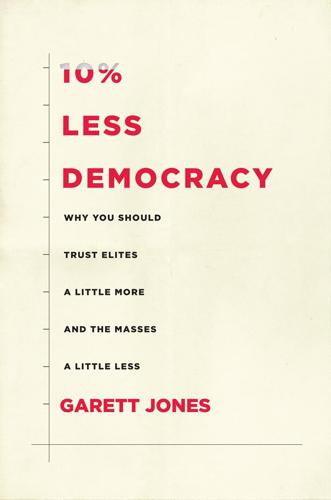
10% Less Democracy: Why You Should Trust Elites a Little More and the Masses a Little Less
by
Garett Jones
Published 4 Feb 2020
If, as neoclassical Nobel-winning economists like Lucas, Sargent, and Friedman said, the main job of a central bank is to maintain a low average rate of inflation, then it’s clear that the politically disconnected central banks are the ones that are getting the job done. FIGURE 3.1. Central Bank Independence and Inflation: A Negative Relationship. Source: Alesina and Summers (1993). Of course, any time you see data plotted out like this, with a strong correlation like this one, you should remind yourself that correlation isn’t causation—that having a chandelier in your house doesn’t make you rich (even though it’s a sign you’re rich), that buying a baby stroller won’t make you a parent (though it’s a sign a baby is on the way). But then what is causation? How can we know whether it’s the legal independence of the central banks of the United States, Switzerland, and Germany that is getting the job done?
…
I’m taking that approach here, though in a nontechnical way: noting that multiple kinds of evidence, multiple measures of central bank independence, point toward the same prediction. The less political, the less democratic, the more insider driven the nation’s central bank is, the better the outcomes. A bundle of correlations tied together with some suggestions of causation. Oh, and here’s a small bonus in this tire-kicking line of research. Cukierman, like others, doesn’t find any noticeable evidence from the rich countries that central bank independence makes your country richer. You get lower, more stable inflation (which voters love), plus a more stable unemployment rate and a more stable economy overall, and those are great benefits.
…
However at least two qualifications need to be entered. First, the notably negative correlation between central bank independence and inflation . . . is not very robust. For example, it does not hold up . . . when other variables are considered. . . . Second, some recent studies have questioned whether correlation implies causation.¹⁵ Despite the muddled empirical evidence, Blinder, who has been a central banker himself and has met many more central bankers the world over, still takes it as pretty obvious that central banks should be insulated, at least to some degree, from the political process. That said, he is no full-throated critic of democracy.
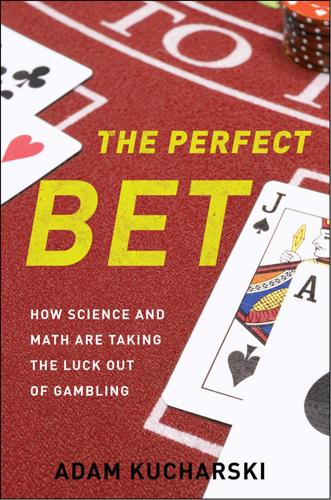
The Perfect Bet: How Science and Math Are Taking the Luck Out of Gambling
by
Adam Kucharski
Published 23 Feb 2016
Horses in Hong Kong win because they are familiar with the terrain, and they are familiar with it because they have run lots of races. But just because two things are apparently related—like probability of winning and number of races run—it doesn’t mean that one directly causes the other. An oft-quoted mantra in the world of statistics is that “correlation does not imply causation.” Take the wine budget of Cambridge colleges. It turns out that the amount of money each Cambridge college spent on wine in the 2012–2013 academic year was positively correlated with students’ exam results during the same period. The more the colleges spent on wine, the better the results generally were.
…
“Were England the Uunluckiest Team in the World Cup Group Stages?” FT Data Blog. 29 June 2014. http://blogs.ft.com/ftdata/2014/06/29/were-england-the-unluckiest-team-in-the-world-cup-group-stages/. 206Cambridge college spent on wine: “In Vino Veritas, Redux.” The Economist, February 5, 2014. http://www.economist.com/blogs/freeexchange/2014/02/correlation-and-causation-0. 207topped the wine list with a spend of £338,559: Simons, John. “Wages Not Wine: Booze Hound Colleges Spend £3 million on Wine.” Tab (Cambridge, England), January 22, 2014. http://thetab.com/uk/cambridge/2014/01/22/booze-hound-colleges-spend-3-million-on-wine-32441. 207Countries that consume lots of chocolate: Messerli, F.
…
See robots (bots) computerized prediction in blackjack, 42 in checkers, 156, 157 in horse racing, 46, 51, 57, 68 and the Monte Carlo method, 61 in roulette, 2, 13, 14, 15–20, 22 in sports, 80–82, 87, 88, 89–90, 97, 105, 217 “Computing Machinery and Intelligence” (Turing), 175 Connect Four, 158–159 control over events, 199 controlled randomness, 25–26, 28 cooperative relationships, 129, 136 copycats, 132 Coram, Marc, 63, 64 correlation and causation, issue of, 206–207 Corsi rating, 85 Cosmopolitan, Las Vegas 87 countermeasures, 21, 86, 195, 214 counting cards. See card counting Crick, Francis, 23 cricket, 90 curiosity, following, 218 Dahl, Fredrik, 172–173, 175, 176, 177, 182–183, 184, 185 Darwin, Charles, 46 data access to, 142 availability of, 54, 55, 68, 73, 86, 102, 174, 209 better, sports analysis methods and access to, 207, 217 binary, 116 collecting as much as possible, 4–5, 103 enough, to test strategies, 131 faster transatlantic travel of, 113 juggling, 166 limited, 84 new, testing strategies against, 53, 54 statistics and, importance of, in sports, 79, 80 storage and communication of, 11 data chunks, memory capacity and size of, 179–180 Deceptive Interaction Task, 190–191 decision making, chaotic, 162 decision-making layers, 173–174 Deep Blue chess computer, 166, 167, 171, 176 Deep Thought chess computer, 167 DeepFace Facebook algorithm, 174–175 DeRosa, David, 198–199, 200 Design of Experiments, The (Fisher), 24 deterministic game, 156 Diaconis, Persi, 62–63 DiCristina, Lawrence, 198, 199, 200, 201 Dixon, Mark, 74, 75, 76–78, 82, 97–98, 107, 218 Djokovic, Novak, 110 Dobson, Andrew, 129 Dodds, Peter Sheridan, 203 dogma, avoiding, 218 dovetail shuffle, 41–42, 62 Dow Jones Industrial Average, 96, 121, 122 Drug Enforcement Administration, 214 eBay, 94 Econometrica (journal), 148 economic theory, 153 ecosystems, 125–129, 130–131, 133 Einstein, Albert, 210 endgame database, 159–160 English Draughts Association, 156 English Premier League, 209 Enigma machines, 169–170 Eslami, Ali, 185–186, 187 Ethier, Stewart, 7–8 Eudaemonic Pie, The (Bass), 14, 15 Eudaemonic prediction method, 14, 15–20, 22, 124, 208 Euro 2008 soccer tournament, 76 European Championship (soccer tournament), 111 European currency union, 129 every-day gamblers, 102, 107 exchange rate, 110 exchanges.
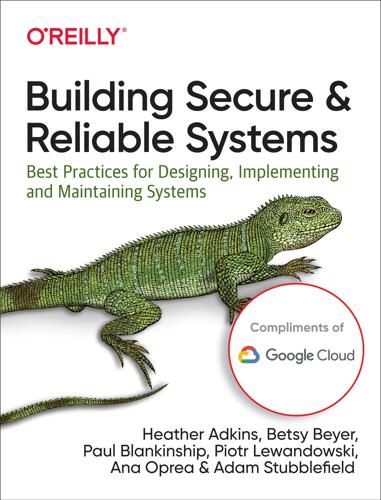
Building Secure and Reliable Systems: Best Practices for Designing, Implementing, and Maintaining Systems
by
Heather Adkins
,
Betsy Beyer
,
Paul Blankinship
,
Ana Oprea
,
Piotr Lewandowski
and
Adam Stubblefield
Published 29 Mar 2020
We then examined the code that started threads, and discovered that many libraries just picked a thread size at random, explaining the variation of sizes. This understanding enabled us to save memory by focusing on the few threads with large stacks. Be mindful of correlation versus causation Sometimes debuggers assume that two events that start at the same time, or that exhibit similar symptoms, have the same root cause. However, correlation does not always imply causation. Two mundane problems might occur at the same time but have different root causes. Some correlations are trivial. For example, an increase in latency might lead to a reduction in user requests, simply because users are waiting longer for the system to respond.
…
-Triaging the Incident when tools try to be helpful, Operational Security cross-site scripting (XSS), Preventing XSS: SafeHtml cryptographic code, Example: Secure cryptographic APIs and the Tink crypto framework-Example: Secure cryptographic APIs and the Tink crypto framework cryptographic keys, Credential and Secret Rotation cryptography, The Roles of Specialists CSRs (Certificate Signing Requests), Programming Language Choice culture, A Note About Culture, Building a Culture of Security and Reliability-Conclusionaligning goals and participant incentives, Align Project Goals and Participant Incentives balancing accountability and risk taking, Culture of Yes building a case for change, Build a Case for Change building a culture of security and reliability, Building a Culture of Security and Reliability-Conclusion building empathy, Build Empathy changing through good practice, Changing Culture Through Good Practice-Build Empathy culture of awareness, Culture of Awareness-Culture of Awareness culture of inevitability, Culture of Inevitably culture of review, Culture of Review-Culture of Review culture of sustainability, Culture of Sustainability-Culture of Sustainability culture of yes, Culture of Yes defining a healthy security/reliability culture, Defining a Healthy Security and Reliability Culture-Culture of Sustainability escalations and problem resolution, Escalations and Problem Resolution increasing productivity and usability, Increase Productivity and Usability-Increase Productivity and Usability leadership buy-in for security/reliability changes, Convincing Leadership-Escalations and Problem Resolution least privilege's impact on, Impact on Collaboration and Company Culture overcommunication and transparency, Overcommunicate and Be Transparent picking your battles, Pick Your Battles reducing fear with risk-reduction mechanisms, Reduce Fear with Risk-Reduction Mechanisms-Reduce Fear with Risk-Reduction Mechanisms safety nets as norm, Make Safety Nets the Norm security and reliability as default condition, Culture of Security and Reliability by Default culture of no, Culture of Yes culture of yes, Culture of Yes CVD (coordinated vulnerability disclosure), Compromises Versus Bugs Cyber Grand Challenge, Automation and Artificial Intelligence Cyber Kill Chain, Cyber Kill Chains™ cyber warfare, Military purposes D Dapper, Improve observability DARPA (Defense Advanced Research Projects Agency), Automation and Artificial Intelligence data corruption, Distinguish horses from zebras data integrity, Integrity data isolation, Data isolation data plane, Example: Google’s frontend design data sanitization, Data Sanitization data summarization, Budget for Logging DDoS attacks (see distributed denial-of-service attacks) debugging, Debugging Techniques-Practice!cleaning up code, Clean up code collaborative debugging, Collaborative Debugging: A Way to Teach correlation-versus-causation problem, Be mindful of correlation versus causation data corruption and checksums, Distinguish horses from zebras deleting legacy systems, Delete it! distinguishing common from uncommon bugs, Distinguish horses from zebras filtering out normal events from bugs, Know what’s normal for your system hypothesis testing with actual data, Test your hypotheses with actual data importance of regular practice, Practice!
…
In digital forensics, the relationships between events are as important as the events themselves. Much of the work a forensic analyst does to obtain artifacts contributes to the goal of building a forensic timeline.5 By collecting a chronologically ordered list of events, an analyst can determine correlation and causation of attacker activity, proving why these events happened. Example: An Email Attack Let’s consider a fictional scenario: an unknown attacker has successfully compromised an engineer’s workstation by sending a malicious attachment via email to a developer, who unwittingly opened it. This attachment installed a malicious browser extension onto the developer’s workstation.

The Financial Crisis and the Free Market Cure: Why Pure Capitalism Is the World Economy's Only Hope
by
John A. Allison
Published 20 Sep 2012
However, the models used in physics capture causal relationships and are properly evaluated based on the predictive power of these causal relationships. However, in economics, practically all mathematical models capture correlations, not causations. There is a difference in kind between correlation and causation. Also, the models are based on a multitude of assumptions. The danger lies in placing far too much confidence in models based on correlation rather than causation. Economists and government regulators often fall into the trap of believing that these models are objective. However, there are important economic factors, such as human behavior, that cannot be clearly mathematized.
…
In reality, the tails often turn out to be “fat,” that is, to have a greater chance of occurring than the model suggests. The tails typically represent very positive and very negative outcomes. In the case of the financial crisis, the negative fat tails (improbable events) became reality. These tails were magnified by the effect of panic on human behavior under stress. All the correlations (which were not based on causation) fell apart when human beings, who make decisions, started reacting to negative news. In addition, it is easy to underestimate the likelihood of unlikely events. For example, if you build a house in a 100-year flood plain, you will at some point experience a flood. It may be 90 years from now, or it may be next week.

Scale: The Universal Laws of Growth, Innovation, Sustainability, and the Pace of Life in Organisms, Cities, Economies, and Companies
by
Geoffrey West
Published 15 May 2017
Just relying on data alone, or even mathematical fits to data, without having some deeper understanding of the underlying mechanism is potentially deceiving and may well lead to erroneous conclusions and unintended consequences. This admonition is closely related to the classic warning that “correlation does not imply causation.” Just because two sets of data are closely correlated does not imply that one is the cause of the other. There are many bizarre examples that illustrate this point.4 For instance, over the eleven-year period from 1999 to 2010 the variation in the total spending on science, space, and technology in the United States almost exactly followed the variation in the number of suicides by hanging, strangulation, and suffocation.
…
In a highly provocative article published in Wired magazine in 2008 titled “The End of Theory: The Data Deluge Makes the Scientific Method Obsolete,” its then editor, Chris Anderson, wrote: The new availability of huge amounts of data, along with the statistical tools to crunch these numbers, offers a whole new way of understanding the world. Correlation supersedes causation, and science can advance even without coherent models, unified theories, or really any mechanistic explanation at all . . . faced with massive data, this approach to science—hypothesize, model, test—is becoming obsolete. . . . Out with every theory of human behavior, from linguistics to sociology.
…
There are many versions of these, but all of them are based on the idea that we can design and program computers and algorithms to evolve and adapt based on data input to solve problems, reveal insights, and make predictions. They all rely on iterative procedures for finding and building upon correlations in data without concern for why such relationships exist and implicitly presume that “correlation supersedes causation.” This approach has become a huge area of interest and has already had a big impact on our lives. For instance, it is central to how search engines like Google operate, how strategies for investment or operating an organization are devised, and it provides the foundational basis for driverless cars.
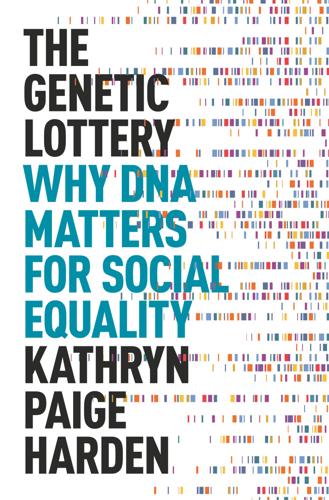
The Genetic Lottery: Why DNA Matters for Social Equality
by
Kathryn Paige Harden
Published 20 Sep 2021
As I described in the previous chapter, a GWAS correlates small bits of DNA with an outcome, but, as is the common refrain—correlation does not equal causation. How do we get from the correlational results of GWAS to an understanding of how genes may be a cause of social inequalities in a particular historical and cultural context? Answering that question, in turn, requires us to be precise about our definition of the word “cause,” and it is to that topic that we turn our attention in the next chapter. 5 A Lottery of Life Chances Every Psychology 101 student knows that “correlation does not equal causation.” Restaurants that add more grated sea urchin to every dish might be rated higher on Yelp, but that correlation does not mean that adding sea urchin to every menu is going to cause people to enjoy restaurants more.
…
If researchers had selected, for example, all the boys to remain in the orphanage and all the girls to go to foster care, there would be no way of telling if the statistical signal that is being detected is driven by being in foster care or being female. Part of the reason why every first-year undergraduate is told, at some point, that “correlation does not equal causation” is a variation on that point. Yes, volume of ice cream sales in a county are positively correlated with murder rates, but eating lots of ice cream isn’t the only thing that those counties have in common—they also share being in warmer climates. Comparing groups of people in order to peer into a counterfactual world only works if you can isolate X from everything else that differs between people.
…
Because these different factors are braided together, parents talking more to their young children might be correlated with how well those children do in school, but that doesn’t mean that changing how much parents talk to their children will make a difference in how well those children do in school. We are back to the idea that correlation does not equal causation. The idea that genetic differences between people are braided together with the environmental differences that social scientists seek to understand and change can be met with hostility. When I wrote in the New York Times that genetic research related to education would be helpful for understanding environmental levers for change,12 the sociologist Ruha Benjamin accused me of engaging in “savvy slippage between genetic and environmental factors that would make the founders of eugenics proud.”13 But the “slippage” between genetic and environmental factors is not an invention of eugenic ideology.
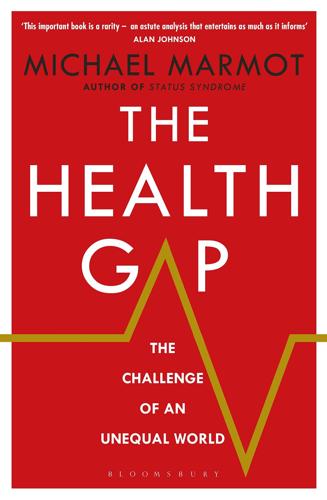
The Health Gap: The Challenge of an Unequal World
by
Michael Marmot
Published 9 Sep 2015
Should we really assume that these dark satanic mills and airless places, rather than causing terrible illness and shortened lives, selectively employed and attracted as residents sick people and those whose backgrounds accounted for all their subsequent illness? That subsequent improvement in living and working conditions, thus abating Victorian squalor, and associated improvements in health, were correlation, not causation? That while medical care improved health, housing also got better, and an intellectually slack public health profession mistook the improvement in housing and working conditions for causes of improved health? If proponents of this set of assumptions dropped their guard for a moment and accepted the evidence that air pollution, crowded living space, ghastly working conditions and poor nutrition were causes of ill-health in Victorian times why, a priori, do they start from the position that living and working conditions are not a cause of ill-health in the twenty-first century?
…
A review of 124 studies confirmed that child physical abuse, emotional abuse and neglect (they did not study sexual abuse) are linked to adult mental disorders, suicide attempts, drug use, sexually transmitted infections and risky sexual behaviour.9 The authors of the review concluded that this is more than simple correlation but represents causation. The graded nature of the relation between abuse and adult mental, and perhaps physical, ill-health – the more types of abuse the worse the adult health – suggests that we should not be looking only at exceptional episodes of abuse but, more generally, at quality of early child development.
…
FIGURE 6.3: GETTING INTO WORK IN SWANSEA AND WREXHAM By focusing on the problem in a strategic way, working with young people, giving them access to information, and perhaps above all, caring, authorities in these towns lowered the toll of young people not in employment, education or training. There was an unexpected benefit. Youth offending in Swansea fell from over 1,000 incidents a year to fewer than 400.33 Correlation is not causation. One cannot say that the reduction in NEETs was responsible for the reduction in youth offending, but it is certainly possible. Unemployment harms health and work is vital. When work is of ‘good’ quality it is empowering. It provides power, money and resources – all essential for a healthy life.

Future Politics: Living Together in a World Transformed by Tech
by
Jamie Susskind
Published 3 Sep 2018
Or they fall foul of the group membership fallacy: the fact that I am a member of a group that tends to have a particular characteristic does not necessarily mean that I share that characteristic (a point sometimes lost on probabilistic machine learning approaches).There’s the entrenchment problem: it may well be true that students from higher-income families are more likely to get better grades at university, but using family income as an admission criterion would obviously entrench the educational inequality that already exists.8 There’s the correlation/ causation fallacy: the data may tell you that people who play golf tend to do better in business, but that does not mean that business success is caused by playing golf (and to hire on that basis might contradict a principle of justice which says that hiring should be done on merit).These are just a few examples—but given what we know of human ignorance and prejudice, we can be sure they aren’t the only ones.
…
Gabriella 180, 181, 404 collaborative democracy see Wiki Democracy Collini, Stefan 407 Collins,Victor 134 command economy 265, 329 commons 331–4, 335 commons-based peer production 244 communication liberty and private power 190–1 perception-control 148, 150–1, 229 communism 12 ‘fully automated luxury’ 328 community, freedom of see republican freedom companionship, as robot function 55 Compas 174 competition law 357 competitive elitism 217–19, 221, 240, 242, 253, 254 Computerscience.org 423 computing power, growth in 37–41 Comte, Auguste 170, 175, 177, 250, 403, 417 concentration camp inmates 131 495 concentration of wealth and power 318–22, 329–30 sharing economy 336 conceptual analysis 81–3, 84–5 Condliffe, Jamie 375 Condorcet, Marquis de 224 Conger, Krista 372 connectivity of technology 44–8 Connolly, William E. 390 consent principle 351–2, 353, 355, 357 Constant, Benjamin 128, 395 constitutive nature of technology 53–7 contextual analysis 84–5 contracts, smart see smart contracts Cooper, Daniel 402 Copernicus, Nicolaus 14 copyright 324, 332, 333 infringement 156 Cornell University 57 correlation/causation fallacy, rule-based injustice 284 corruption 82, 84, 225, 329, 361 Costeja González, Mario 138 Couldry, Nick 421 counters (democracy theorists) 224–5 Crawford, Kate 418 Creative Commons 45 credit scores 267 Crete-Nishihata, Masashi 399 Crick, Bernard 72, 389, 408 criminal justice 259 Cronologics 319 Cross, Tim 375 Crossley, Rob 388 crowdocracy see Wiki Democracy Crowdpac 417 crowds, wisdom of see wisdom of crowds crowdsourcing 244 cryptography 182–4 Cukier, Kenneth 387, 388, 395, 397, 403, 427, 433 data 62, 65 forgetting versus remembering 137 cultural oppression 273 OUP CORRECTED PROOF – FINAL, 28/05/18, SPi РЕЛИЗ ПОДГОТОВИЛА ГРУППА "What's News" VK.COM/WSNWS 496 Index Dabate, Connie and Richard 134–5 Dahir, Abdi Latif 405 Dahl, Robert A. 91, 390, 391, 411, 430 Daily Stormer 236 D’Ancona, Matthew 239, 412, 415 Dandeker, Christopher 391 Darknessbot 234 data as capital 317 increasingly quantified society 61–7 data-based injustice 282 Data Deal 66, 336–40, 358 Data Democracy 212, 246–50, 254, 348 datafication 62–7 data storage digitization 62 nanotechnology 56 usufructuary rights 330 data unions 340 Dayen, David 427 Dean, Sarah 402 Decentralised Autonomous Organisations (DAOs) 47 Deep Knowledge Ventures 31, 251 Defense Advanced Research Projects Agency (DARPA) 47, 178 De Filippi, Primavera 120, 378, 392, 393, 394 Delaney, Kevin J. 425, 430 delegation AI Democracy 252 Direct Democracy 242 Deleuze, Gilles 395 Delft University 56 Deliberative Democracy 212, 227–39, 254, 348 democracy 3, 10, 23–4, 346, 359–60 after the internet 219–21 AI Democracy 212, 213, 250–4, 348 arguments for 222–6 classical 214–16, 254 competitive elitism 217–19, 221, 240, 242, 253, 254 concept 74–6 conceptual analysis 81, 82, 84–5 contextual analysis 84–5 Data Democracy 212, 246–50, 254, 348 Deliberative Democracy 212, 227–39, 254, 348 Direct Democracy 212, 239–43, 254, 348 dream of 211–26 epistemic superiority 223–4, 234 in the future 227–54 liberal 216–17, 246, 254 and liberty 207–8, 222, 225, 249 liquid 242 nature of 213 normative analysis 84–5 representative 218, 240, 248 stability 240 story of 213–21 supercharged state, power of the 348 Wiki Democracy 212, 243–6, 254, 348 DemocracyOS 242, 415 Democratic Party (US) 229 desert, justice as 260–1 Desert Wolf 404 Desrosières, Alain 369, 370 Devlin, Patrick 202, 203, 204, 407, 408 Diamandis, Peter H. 374, 435 Dickens, Charles 211 dictatorship 71 Digital Confederalism 193, 205–6, 341 structural regulation 357, 358 digital disrespect 276 digital dissent 179–84 digital filtering see filtering digital law 100–14 Digital Liberalism 205 Digital Libertarianism 205 digital liberty 205–7 digital lifeworld algorithmic injustice 279, 285, 290, 292–4 code’s empire 97 democracy 212–13, 222, 227–54 OUP CORRECTED PROOF – FINAL, 28/05/18, SPi РЕЛИЗ ПОДГОТОВИЛА ГРУППА "What's News" VK.COM/WSNWS Index distributive justice 266, 269 force 100–1, 103, 107–8, 113, 116, 118–19, 121 freedom and the tech firm 188–90, 193–4, 196, 198, 200, 208 increasingly capable systems 29–41 increasingly integrated technology 42–60 increasingly quantified society 61–8 individual responsibility 346–7 justice in recognition 276–8 liberty 168–72, 180, 183, 185, 187 limits 360–1 perception-control 146–52 post-politics 362, 366 power 98–9, 345–6 property 314–17, 320, 322–3, 328–31, 334–6, 340–1 public and private power 154, 156, 158, 160 regulation 354, 357 scrutiny 123, 127–41 social justice 258–9 technological unemployment 295, 304, 306, 311 thinking like a theorist 69–86 Digital Millennium Copyright Act 1988 430 Digital Moralism 206 Digital Paternalism 198, 199, 206 digital ranking 276–8 Digital Republicanism 206–7, 347 structural regulation 357 Digital Rights Management (DRM) technology 96, 102, 105, 172, 333 digital storage 129 digitization 62 of force 100, 101–14 Direct Democracy 212, 239–43, 254, 348 disabilities, people with digital liberation 169 as victims of violence crimes 273 Discord 236 discrimination 497 algorithmic 281–2 rule-based injustice 284, 287–8 disrespect, digital 276 dissent, digital 179–84 distributed computing see smart devices distributive justice 257–70, 274, 278 Data Deal 337 Private Property Paradigm 326 Divine Rule 349 DNA 64, 362 Dodge, Martin 391 Domesday Book 16–17, 369 dominant goods 154 Domingos, Pedro 373, 374, 410, 417, 432 computing power, growth in 38 data unions 340 machine learning 34–5 Drahos, Peter 431 Dredge, Stuart 384, 385 driverless vehicles see self-driving vehicles drones force 106 hacking 183 increasingly integrated technology 54, 55 productive technologies 316 sharing economy 335 totalitarianism 179 utility analogy 158 Dryzek, John S. 368 Dunn, John 408, 409 Durkheim, Émile 61 Dvorsky, George 384 Dworkin, Gerald 171, 352, 401, 402, 432 Dwoskin, Elizabeth 433 Dwyer, Paula 428 Ebay 102 Economist 378, 379, 380, 381, 397, 422 Edelman, Benjamin 423 e-Democracia Wikilegis 244 Edwards, Cory 371 OUP CORRECTED PROOF – FINAL, 28/05/18, SPi РЕЛИЗ ПОДГОТОВИЛА ГРУППА "What's News" VK.COM/WSNWS 498 Index egalitarianism 259, 261–5 egalitarian plateau 259 e-government 220 Egypt 19, 183 Eisenstein, Elizabeth 62, 387 Ekbia, Hamid R. 431 Electrick spray paint 51 Electronic Frontier Foundation 406 Eliot, T.

Everything Is Obvious: *Once You Know the Answer
by
Duncan J. Watts
Published 28 Mar 2011
Arguably, in fact, the advertising world has more data than it knows what to do with. No, the real problem is that what advertisers want to know is whether their advertising is causing increased sales; yet almost always what they measure is the correlation between the two. In theory, of course, everyone “knows” that correlation and causation are different, but it’s so easy to get the two mixed up in practice that we do it all the time. If we go on a diet and then subsequently lose weight, it’s all too tempting to conclude that the diet caused the weight loss. Yet often when people go on diets, they change other aspects of their lives as well—like exercising more or sleeping more or simply paying more attention to what they’re eating.
…
But as with the diet, it is the advertising effort on which the business focuses its attention; thus if sales or some other metric of interest subsequently increases, it’s tempting to conclude that it was the advertising, and not something else, that caused the increase.17 Differentiating correlation from causation can be extremely tricky in general. But one simple solution, at least in principle, is to run an experiment in which the “treatment”—whether the diet or the ad campaign—is applied in some cases and not in others. If the effect of interest (weight loss, increased sales, etc.) happens significantly more in the presence of the treatment than it does in the “control” group, we can conclude that it is in fact causing the effect.
…
Part of the problem is also that social scientists, like everyone else, participate in social life and so feel as if they can understand why people do what they do simply by thinking about it. It is not surprising, therefore, that many social scientific explanations suffer from the same weaknesses—ex post facto assertions of rationality, representative individuals, special people, and correlation substituting for causation—that pervade our commonsense explanations as well. MEASURING THE UNMEASURABLE One response to this problem, as Lazarsfeld’s colleague Samuel Stouffer noted more than sixty years ago, is for sociologists to depend less on their common sense, not more, and instead try to cultivate uncommon sense.10 But getting away from commonsense reasoning in sociology is easier said than done.
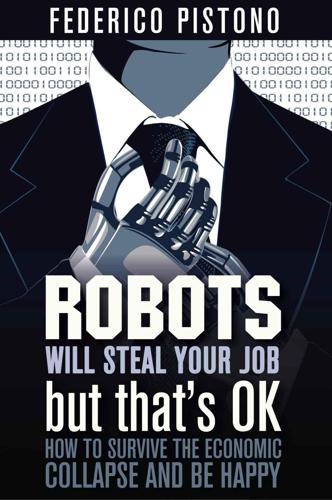
Robots Will Steal Your Job, But That's OK: How to Survive the Economic Collapse and Be Happy
by
Pistono, Federico
Published 14 Oct 2012
* * * Figure 13.2: Comparing ‘happiness’ and ‘growth’ over time with n-grams. Courtesy of Google. * * * We can see in Figure 13.2 how ‘happiness’ and ‘growth’, between 1800 and 2008 have a negative correlation: as ‘growth’ rises, ‘happiness’ declines. Around 1830, authors started to talk more about growth than happiness. Again, to be fair, correlation does not imply causation, and the mere fact of writing about something does not tell you the whole story. This data only shows the occurrences of such words in books, not their context, nor their meaning. Authors could well have been talking about the ‘loss of happiness’, or something even more subtle. But it does show that the interest in growth has been, well, growing, whereas writers cared less to talk about being happy.
…
I took the specific term ‘economic growth’, to rule out other possible disturbances in context. ‘Happiness’ declines from 1950 to 1995, while ‘economic growth’ and ‘GDP’ rise. After that we observe the reverse effect: both ‘GDP’ and ‘economic growth’ fall, while happiness increases considerably. Again, correlation does not mean causation, but it surely is remarkable what this data shows. For more than half a century, our culture has been fuelling the idea that the pursuit of growth, work, and economic expansion should be one of our primary goals in life, if not the highest of all. But that assumption is being challenged and it is slowly beginning to crumble.
…
While I enjoy picking on the self-help idiocy wave that has invaded the United States and the UK these last five years, there are some suggestions that might actually help you, if you approach them with a bit of scientific rigour. I imagine you must be pretty tired of reading about things that do not work, scientific analyses with no clear distinction between correlation and causation, and plain old common sense masqueraded as hidden truth. How about some practical suggestions, things that you can apply in your daily life, that you would not already know? You know my position regarding self-help. I think it is mostly a pseudoscientific scam that greedy people play on the desperate and the gullible.
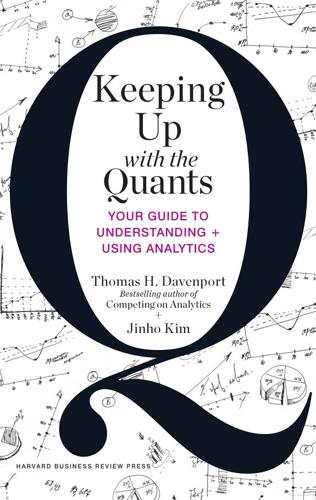
Keeping Up With the Quants: Your Guide to Understanding and Using Analytics
by
Thomas H. Davenport
and
Jinho Kim
Published 10 Jun 2013
Correlation = +1 (Perfect positive correlation, meaning that both variables always move in the same direction together) Correlation = 0 (No relationship between the variables) Correlation = −1 (Perfect negative correlation, meaning that as one variable goes up, the other always trends downward) Correlation does not imply causation. Correlation is a necessary but insufficient condition for casual conclusions. Dependent variable: The variable whose value is unknown that you would like to predict or explain. For example, if you wish to predict the quality of a vintage wine using average growing season temperature, harvest rainfall, winter rainfall, and the age of the vintage, the quality of a vintage wine would be the dependent variable.
…
As we mentioned earlier in describing mad scientist experiments, if you create test and control groups and randomly assign people to them, if there turns out to be a difference in outcomes between the two groups, you can usually attribute it to being caused by the test condition. But if you simply find a statistical relationship between two factors, it’s unlikely to be a causal relationship. You may have heard the phrase, “correlation is not causation,” and it’s important to remember. Cognitive psychologists Christopher Chabris and Daniel Simons suggest a useful technique for checking on the causality issue in their book The Invisible Gorilla and Other Ways Our Intuitions Deceive Us: “When you hear or read about an association between two factors, think about whether people could have been assigned randomly to conditions for one of them.
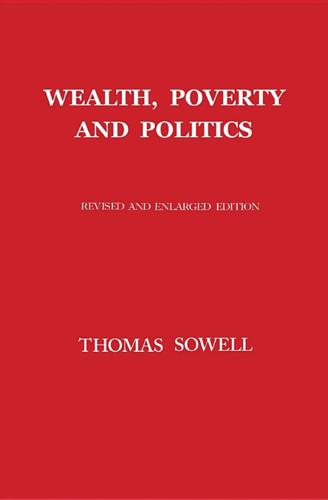
Wealth, Poverty and Politics
by
Thomas Sowell
Published 31 Aug 2015
Culture also does not lend itself to quantification, as a genetic determinist has complained,29 and therefore cannot produce statistical analyses, such as that showing a high correlation between nations’ IQ scores and their per capita incomes.30 Such correlations may lend an air of scientific precision, but so did earlier correlations between climate and prosperity by a geographic determinist.31 Both sets of correlations are from data taken in an extremely thin slice of time, compared to the many millennia of human history, during which various peoples’ and nations’ relative achievements have changed greatly. Moreover, as statisticians have often pointed out, correlation is not causation— and, as was said years ago: “It is better to be roughly right than precisely wrong.”32 Whether considering cultural, geographic, political or other factors, interactions of these various factors are part of the reason why understanding influences is very different from claiming determinism.
…
Nevertheless, many people blame statistical inequalities on the institutions where the statistics that convey these inequalities happened to be collected. Others blame some factor with which negative outcomes are correlated— blaming crime on poverty, for example. Statisticians have long warned against confusing correlation with causation, but too often those warnings have been ignored. Even when there is in fact a causal relationship between two things, that by itself does not tell us the direction of causation— that is, whether X caused Y or Y caused X, or whether both were caused by some other factor Z. It is possible that poverty causes crime, but it is also possible that the same set of attitudes and behavior— or the same lack of human capital— that lead to poverty can also lead to crime.
…
In 1981 and in 1995, for example, the average SAT score of black high school students on the mathematics portion of the test was lower than the average score of either white or Asian high school students. Since black students come from families with lower average incomes than either white or Asian students, this establishes correlation but does not help us determine causation, much less the direction of causation. However, when in 1981 black students from families with incomes of $50,000 or more scored slightly below white students from families with incomes under $6,000, and even further below Asian students with incomes under $6,000,2 clearly the cause of the test score differences was not differences in income.
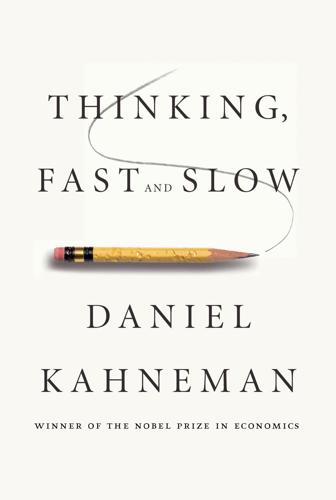
Thinking, Fast and Slow
by
Daniel Kahneman
Published 24 Oct 2011
The control group is expected to improve by regression alone, and the aim of the experiment is to determine whether the treated patients improve more than regression can explain. Incorrect causal interpretations of regression effects are not restricted to readers of the popular press. The statistician Howard Wainer has drawn up a long list of eminent researchers who have made the same mistake—confusing mere correlation with causation. Regression effects are a common source of trouble in research, and experienced scientists develop a healthy fear of the trap of unwarranted causal inference. One of my favorite examples of the errors of intuitive prediction is adapted from Max Bazerman’s excellent text Judgment in Managerial Decision Making: You are the sales forecaster for a department store chain.
…
income and education: The correlation appears impressive, but I was surprised to learn many years ago from the sociologist Christopher Jencks that if everyone had the same education, the inequality of income (measured by standard deviation) would be reduced only by about 9%. The relevant formula is v (1–r2), where r is the correlation. correlation and regression: This is true when both variables are measured in standard scores—that is, where each score is transformed by removing the mean and dividing the result by the standard deviation. confusing mere correlation with causation: Howard Wainer, “The Most Dangerous Equation,” American Scientist 95 (2007): 249–56. 18: Taming Intuitive Predictions far more moderate: The proof of the standard regression as the optimal solution to the prediction problem assumes that errors are weighted by the squared deviation from the correct value.
…
Statistical Prediction: A Theoretical Analysis and a Review of the Evidence (Meehl) Clinton, Bill Coelho, Marta coffee mug experiments cognitive busyness cognitive ease; in basic assessments; and illusions of remembering; and illusions of truth; mood and; and writing persuasive messages; WYSIATI (what you see is all there is) and cognitive illusions; confusing experiences with memories; of pundits; of remembering; of skill; of stock-picking skill; of truth; of understanding; of validity Cognitive Reflection Test (CRT) cognitive strain Cohen, David coherence; see also associative coherence Cohn, Beruria coincidence coin-on-the-machine experiment cold-hand experiment Collins, Jim colonoscopies colostomy patients competence, judging of competition neglect complex vs. simple language concentration cogndiv height="0%"> “Conditions for Intuitive Expertise: A Failure to Disagree” (Kahneman and Klein) confidence; bias of, over doubt; overconfidence; WYSIATI (what you see is all there is) and confirmation bias conjunction fallacy conjunctive events, evaluation of “Consequences of Erudite Vernacular Utilized Irrespective of Necessity: Problems with Using Long Words Needlessly” (Oppenheimer) contiguity in time and place control cookie experiment correlation; causation and; illusory; regression and; shared factors and correlation coefficient cost-benefit correlation costs creativity; associative memory and credibility Csikszentmihalyi, Mihaly curriculum team Damasio, Antonio dating question Dawes, Robyn Day Reconstruction Method (DRM) death: causes of; life stories and; organ donation and; reminders of Deaton, Angus decisions, decision making; broad framing in; and choice from description; and choice from experience; emotions and vividness in; expectation principle in; in gambles, see gambles; global impressions and; hindsight bias and; narrow framing in; optimistic bias in; planning fallacy and; poverty and; premortem and; reference points in; regret and; risk and, see risk assessment decision utility decision weights; overweighting; unlikely events and; in utility theory vs. prospect theory; vivid outcomes and; vivid probabilities and decorrelated errors default options denominator neglect depression Detroit/Michigan problem Diener, Ed die roll problem dinnerware problem disclosures disease threats disgust disjunctive events, evaluation of disposition effect DNA evidence dolphins Dosi, Giovanni doubt; bias of confidence over; premortem and; suppression of Duke University Duluth, Minn., bridge in duration neglect duration weighting earthquakes eating eBay Econometrica economics; behavioral; Chicago school of; neuroeconomics; preference reversals and; rational-agent model in economic transactions, fairness in Econs and Humans Edge Edgeworth, Francis education effectiveness of search sets effort; least, law of; in self-control ego depletion electricity electric shocks emotional coherence, see halo effect emotional learning emotions and mood: activities and; affect heuristic; availability biases and; in basic assessments; cognitive ease and; in decision making; in framing; mood heuristic for happiness; negative, measuring; and outcomes produced by action vs. inaction; paraplegics and; perception of; substitution of question on; in vivid outcomes; in vivid probabilities; weather and; work and employers, fairness rules and endangered species endowment effect; and thinking like a trader energy, mental engagement Enquiry Concerning Human Understanding, An (Hume) entrepreneurs; competition neglect by Epley, Nick Epstein, Seymour equal-weighting schemes Erev, Ido evaluability hypothesis evaluations: joint; joint vs. single; single evidence: one-sided; of witnesses executive control expectation principle expectations expected utility theory, see utility theory experienced utility experience sampling experiencing self; well-being of; see also well-being expert intuition; evaluating; illusions of validity of; overconfidence and; as recognition; risk assessment and; vs. statistical predictions; trust in expertise, see skill Expert Political Judgment: How Good Is It?
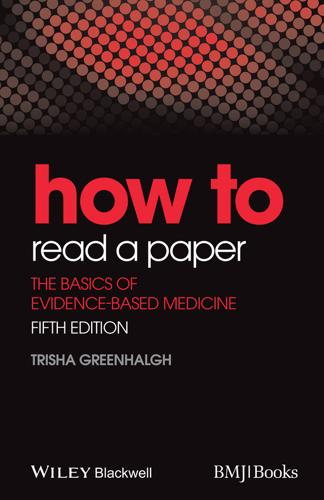
How to Read a Paper: The Basics of Evidence-Based Medicine
by
Trisha Greenhalgh
Published 18 Nov 2010
Was systematic bias avoided or minimised? Was assessment ‘blind’? Were preliminary statistical questions addressed? Summing up References Chapter 5: Statistics for the non-statistician How can non-statisticians evaluate statistical tests? Have the authors set the scene correctly? Paired data, tails and outliers Correlation, regression and causation Probability and confidence The bottom line Summary References Chapter 6: Papers that report trials of drug treatments and other simple interventions ‘Evidence’ and marketing Making decisions about therapy Surrogate endpoints What information to expect in a paper describing a randomised controlled trial: the CONSORT statement Getting worthwhile evidence out of a pharmaceutical representative References Chapter 7: Papers that report trials of complex interventions Complex interventions Ten questions to ask about a paper describing a complex intervention References Chapter 8: Papers that report diagnostic or screening tests Ten men in the dock Validating diagnostic tests against a gold standard Ten questions to ask about a paper that claims to validate a diagnostic or screening test Likelihood ratios Clinical prediction rules References Chapter 9: Papers that summarise other papers (systematic reviews and meta-analyses) When is a review systematic?
…
Some data, however, cannot be transformed into a smooth pattern, and the significance of this is discussed subsequently. Deciding whether data are normally distributed is not an academic exercise, because it will determine what type of statistical tests to use. For example, linear regression (see section ‘Correlation, regression and causation’) will give misleading results unless the points on the scatter graph form a particular distribution about the regression line—that is, the residuals (the perpendicular distance from each point to the line) should themselves be normally distributed. Transforming data to achieve a normal distribution (if this is indeed achievable) is not cheating.
…
Some weeks later, I met the technician who had analysed the specimens and he asked ‘Whatever happened to that chap with acromegaly?’ Statistically correcting for outliers (e.g. to modify their effect on the overall result) is quite a sophisticated statistical manoeuvre. If you are interested, try the relevant section in your favourite statistics textbook. Correlation, regression and causation Has correlation been distinguished from regression, and has the correlation coefficient (‘r-value’) been calculated and interpreted correctly? For many non-statisticians, the terms correlation and regression are synonymous, and refer vaguely to a mental image of a scatter graph with dots sprinkled messily along a diagonal line sprouting from the intercept of the axes.
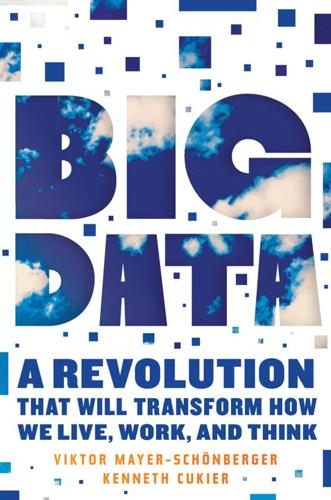
Big Data: A Revolution That Will Transform How We Live, Work, and Think
by
Viktor Mayer-Schonberger
and
Kenneth Cukier
Published 5 Mar 2013
So the quarantine applies only to the individual Internet users whose searches were most highly correlated with having the flu. Here we have the data on whom to pick up. Federal agents, armed with lists of Internet Protocol addresses and mobile GPS information, herd the individual web searchers into quarantine centers. But as reasonable as this scenario might sound to some, it is just plain wrong. Correlations do not imply causation. These people may or may not have the flu. They’d have to be tested. They’d be prisoners of a prediction, but more important, they’d be victims of a view of data that lacks an appreciation for what the information actually means. The point of the actual Google Flu Trends study is that certain search terms are correlated with the outbreak—but the correlation may exist because of circumstances like healthy co-workers hearing sneezes in the office and going online to learn how to protect themselves, not because the searchers are ill themselves.
…
At the same time, Flowers and his kids continually tested their system with veteran inspectors, drawing on their experience to make the system perform better. Yet the most important reason for the program’s success was that it dispensed with a reliance on causation in favor of correlation. “I am not interested in causation except as it speaks to action,” explains Flowers. “Causation is for other people, and frankly it is very dicey when you start talking about causation. I don’t think there is any cause whatsoever between the day that someone files a foreclosure proceeding against a property and whether or not that place has a historic risk for a structural fire.
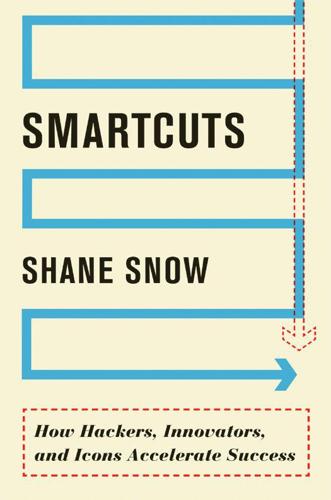
Smartcuts: How Hackers, Innovators, and Icons Accelerate Success
by
Shane Snow
Published 8 Sep 2014

Super Thinking: The Big Book of Mental Models
by
Gabriel Weinberg
and
Lauren McCann
Published 17 Jun 2019
You may have heard anecdotes about people who happened to get cold and flu symptoms around the time that they got the flu vaccine and blame their illness on the vaccine. Just because two events happened in succession, or are correlated, doesn’t mean that the first actually caused the second. Statisticians use the phrase correlation does not imply causation to describe this fallacy. What is often overlooked when this fallacy arises is a confounding factor, a third, possibly non-obvious factor that influences both the assumed cause and the observed effect, confounding the ability to draw a correct conclusion. In the case of the flu vaccine, the cold and flu season is that confounding factor.
…
It’s easier than ever to test the correlation between all sorts of information, so many spurious correlations are bound to be discovered. In fact, there is a hilarious site (and book) called Spurious Correlations, chock-full of these silly results. The graph below shows one such correlation, between cheese consumption and deaths due to bedsheet tanglings. Correlation Does Not Imply Causation One time when Lauren was in high school, she started feeling like a cold was coming on, and her dad told her to drink plenty of fluids to help her get better. She proceeded to drink half a case of raspberry Snapple that day, and, surprisingly, the next day she felt a lot better!
…
There are certainly lots of pitfalls to watch out for, but we hope you also take away the fact that research and data are more useful for navigating uncertainty than hunches and opinions. KEY TAKEAWAYS Avoid succumbing to the gambler’s fallacy or the base rate fallacy. Anecdotal evidence and correlations you see in data are good hypothesis generators, but correlation does not imply causation—you still need to rely on well-designed experiments to draw strong conclusions. Look for tried-and-true experimental designs, such as randomized controlled experiments or A/B testing, that show statistical significance. The normal distribution is particularly useful in experimental analysis due to the central limit theorem.
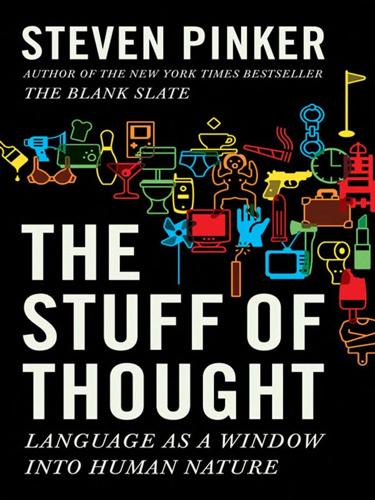
The Stuff of Thought: Language as a Window Into Human Nature
by
Steven Pinker
Published 10 Sep 2007
The stock of words in a language reflects the kinds of things its speakers deal with in their lives and hence think about. This, of course, is the obvious non-Whorfian interpretation of the Eskimo-snow factoid. The Whorfian interpretation is a classic example of the fallacy of confusing correlation with causation. In the case of varieties of snow and words for snow, not only did the snow come first, but when people change their attention to snow, they change their words as a result. That’s how meteorologists, skiers, and New Englanders coin new expressions for the stuff, whether in circumlocutions (wet snow, sticky snow) or in neologisms (hardpack, powder, dusting, flurries).
…
Gordon concluded that the lack of precise number thoughts among the Pirahã is caused by their lack of precise number words—the “rare and perhaps unique case for strong linguistic determinism.” But as the cognitive scientist Daniel Casasanto put it, this is a case of “crying Whorf ”: it depends on a dubious leap from correlation to causation.94 It can’t be a coincidence that the Pirahã language just happens to lack big number words (unlike the English language) and the Pirahã speakers just happen to hunt and gather in remote stone-age villages (unlike English speakers). A more plausible interpretation is that the lifestyle, history, and culture of a technologically undeveloped hunter-gatherer people will cause it to lack both number words and numerical reasoning.
…
It’s not terribly different from what happens when a dog is conditioned to anticipate food when a bell is rung, or a pigeon learns to peck a key in the expectation of food. The story that began the chapter, about the two alarms that go off in succession, raises an obvious problem for the theory. People understand (even if they don’t always apply) the principle that correlation does not imply causation. The rooster’s cock-a-doodle-doo does not cause the sun to rise, thunder doesn’t cause forest fires, and the flashing lights on the top of a printer don’t cause it to spit out a document. These are perceived to be epiphenomena: byproducts of the real causes. I called Hume’s theory “offhand” because he didn’t consistently embrace it himself.
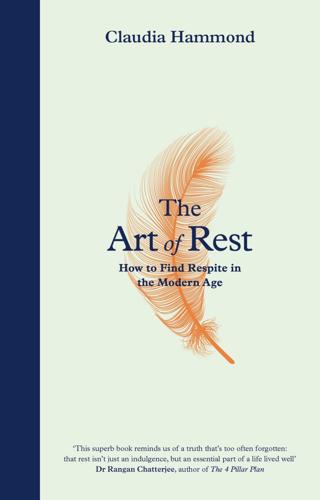
The Art of Rest: How to Find Respite in the Modern Age
by
Claudia Hammond
Published 5 Dec 2019
It won’t surprise you to learn that people who are unemployed or stuck at home because they’re unwell tend to watch more TV on average.15 It’s cheap, ever-changing, doesn’t require physical fitness and can provide hours of distraction. Those same people also have lower levels of well-being than people in good health or with jobs. So we are left with a perennial research issue – correlation versus causation. We don’t know which came first – the unhappiness or the TV watching. Staying in all day watching television might well isolate people and make them feel worse. Alternatively, they may already be feeling unhappy and are using TV to cope, like the lonely people we heard about earlier who binge watch box sets.
…
Perhaps these people were so poor they couldn’t afford a television or so busy working and caring for others that they never had time to rest and watch it, in which case, of course, it was the lack of any free time and the overwhelming stress of their lives making them unhappy rather than the lack of an hour’s television watching. To get around the correlation versus causation issue, researchers in the US examined data from 50,000 nurses, who were followed over a ten-year period. Did long hours spent in front of the television precede depression several years later? For many of the nurses it did. And the reason? Watching lots of TV meant they did less exercise, and the authors think it’s that rather than anything about watching TV per se that was the main problem.17 It is obvious that watching a lot of TV is not good for us physically because it generally involves a lot of sitting down.
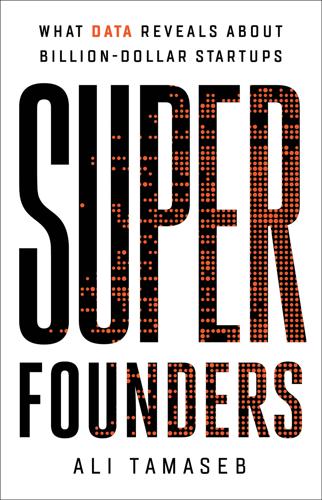
Super Founders: What Data Reveals About Billion-Dollar Startups
by
Ali Tamaseb
Published 14 Sep 2021
. | Business—Data processing. Classification: LCC HD62.5 .T3554 2021 | DDC 658.1/1—dc23 LC record available at https://lccn.loc.gov/2020044864 ISBNs: 978-1-5417-6842-0 (hardcover), 978-1-5417-6841-3 (ebook) E3-20210420-JV-NF-ORI CONTENTS Cover Title Page Copyright Introduction Correlation Is Not Causation: A Note on Methods and Statistics PART ONE: THE FOUNDERS 1 Myths Around Founders’ Backgrounds Founding a Billion-Dollar Startup at Age Twenty-One: INTERVIEW WITH HENRIQUE DUBUGRAS OF BREX 2 Myths Around Founders’ Education A Professor Who Built Multiple Billion-Dollar Startups: INTERVIEW WITH ARIE BELLDEGRUN OF KITE PHARMA AND ALLOGENE 3 Myths Around Founders’ Work Experience Founders Who Built a $2 Billion Cancer Company Without Any Medical Background: INTERVIEW WITH NAT TURNER OF FLATIRON HEALTH 4 The Super Founder A Founder Who Met Success on the Second Try: INTERVIEW WITH MAX MULLEN OF INSTACART PART TWO: THE COMPANY 5 The Origin Story A Billion-Dollar Startup That Originated at a Large Tech Company: INTERVIEW WITH NEHA NARKHEDE OF CONFLUENT 6 Pivots 7 What and Where?
…
It turns out that you could look more like a Super Founder than you think. One final note: while doing this research I could not help but notice the lack of diversity among these founding teams. Inspired by Ben Horowitz, I will donate proceeds from this book to nonprofits and charitable causes that help with upward social mobility and diversity. CORRELATION IS NOT CAUSATION A Note on Methods and Statistics The goal of this book is to reduce biases and misconceptions, not to add more. That’s why I am starting it with a note on the methods and statistics that form its backbone. You are going to read a lot of numbers and percentages in this book, and sometimes it’s easy to make the wrong conclusions from the data without having the right context.
…
—Ron Conway, founder of SV Angel and angel investor in Google, Facebook, Airbnb, and more “Conventional wisdom about what leads to startup success abounds. With a vast dataset, real rigor, and fresh insight, Tamaseb validates some truisms and debunks many others. A must-read for aspiring founders and venture investors!” —Tom Eisenmann, professor, Harvard Business School and author of Why Startups Fail NOTES CORRELATION IS NOT CAUSATION: A NOTE ON METHODS AND STATISTICS 1. Yoav Benjamini and Yosef Hochberg, “Controlling the False Discovery Rate: A Practical and Powerful Approach to Multiple Testing,” Journal of the Royal Statistical Society: Series B (Methodological) 57, no. 1 (1995): 289–300, doi: 10.1111/j.2517-6161.1995.tb02031.x.
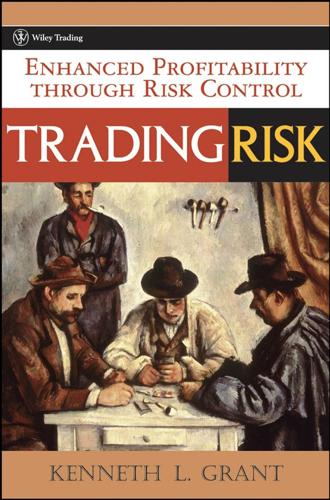
Trading Risk: Enhanced Profitability Through Risk Control
by
Kenneth L. Grant
Published 1 Sep 2004
I was less successful in convincing him that the Beach Boy’s “Pet Sounds” is the most overrated album in the history of popular music and that Brian Eno’s “Here Come the Warm Jets” is the most underrated. “Baby’s on fire, better throw her in the water.” I can’t close this discussion without referencing an old platitude that cautions against confusing “correlation with causation.” While correlation analysis can be extremely useful in understanding patterns, providing insights, and offering clues as to what is driving performance, it is crucial to resist the temptation of reading too much into associated outcomes. Ideally, like all other statistics discussed in this chapter, the calculation of correlations will evoke as many questions as answers.
…
Final Word on Correlation I caution you, yet again, against reading too much into the implications of the results. Correlation analysis is a very useful descriptive statistic, but it is an imprecise predictive mechanism. As such, I can’t stress strongly enough the age-old adage admonishing us not to confuse correlation with causation. The goal here is to gain insight into those elements of your routine trading program that are most likely to bring you success in your quest for risk-adjusted return and into those that are causing inefficiencies that can at least be managed, if not altogether corrected. Remember that, due to the extraordinary amount of complexity that is involved in the portfolio management process, any change you make to your program designed to address an anomaly uncovered by these types of statistical analyses may very well have implications for other elements of your methodologies that could offset the potential benefits you seek through the change.
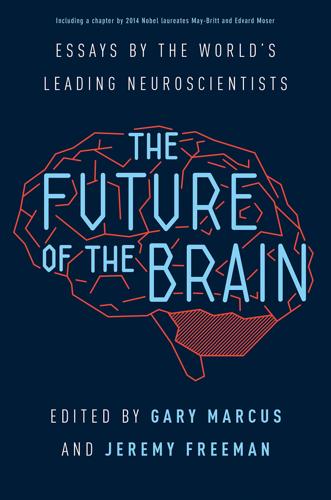
The Future of the Brain: Essays by the World's Leading Neuroscientists
by
Gary Marcus
and
Jeremy Freeman
Published 1 Nov 2014
This cannot be emphasized enough. The exploding use of opto- and pharmacogenetics methods that delicately, transiently, reversibly, and invasively control defined events in defined cell types at defined times constitute a suite of interventionist tools that allows neuroscience to move from correlation to causation, from observing that this circuit is activated whenever the subject is contemplating a decision to inferring that this circuit is necessary for decision making. Second, the human brain is more than three orders of magnitude larger than the mouse brain—1.4 kg weight versus 0.4 g; a 1-liter volume versus a sugar cube; eighty-six billion nerve cells versus seventy-one million for the entire brain and sixteen billion versus fourteen million nerve cells for the neocortex.
…
The other major advance fifty years ago was the birth of opto- and pharmaco-genetics, methods that delicately, transiently, reversibly, and invasively control defined events in defined cell types at defined times, initially in a few model organisms—the worm, the fly, and the mouse. Equipped with these tools for perturbing the brain, scientists systematically moved from correlation to causation, from observing that this circuit is activated whenever the subject is contemplating a decision to inferring that this circuit is necessary for decision making or that those neurons mark a particular memory. By the early 2020s, the complete logic of thalamo-cortical circuits could be manipulated, in hindsight a tipping point in our ability to bridge the gap between cortex and theories of its universal and particular functions.
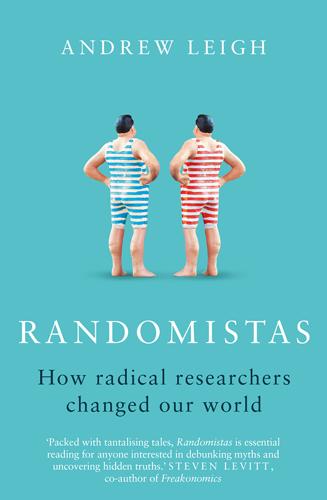
Randomistas: How Radical Researchers Changed Our World
by
Andrew Leigh
Published 14 Sep 2018
You might reasonably respond that this is because happiness causes sleep – good-tempered people tend to hit the pillow early. Or you might argue that both happiness and sleep are products of something else – like being in a stable relationship. Either way, an observational study falls prey to the old critique: correlation doesn’t imply causation. Misleading correlations are all around us.32 Ice-cream sales are correlated with shark attacks, but that doesn’t mean you should boycott Mr Whippy. Shoe size is correlated with exam performance, but buying adult shoes for kindergarteners isn’t going to help. Countries with higher chocolate consumption win more Nobel prizes, but chomping Cadbury won’t make you a genius.33 By contrast, a randomised trial uses the power of chance to assign the groups.
…
U2’s Bono wrote: ‘Give a man a fish, he’ll eat for a day. Give a woman microcredit, she, her husband, her children, and her extended family will eat for a lifetime.’12 Yet it turned out that the bold claims for microcredit were largely based on anecdotes and evaluations that failed to distinguish correlation from causation. By the 2000s, researchers had begun carrying out randomised trials of microcredit programs in Bosnia, Ethiopia, India, Mexico, Morocco and Mongolia. Summarising these six experiments, a team of leading development economists concluded that microcredit had no impact on raising household income, getting children to stay in school, or empowering women.13 Microcredit schemes did provide more financial freedom, and led people to invest more money in their businesses, but it didn’t make them more profitable.
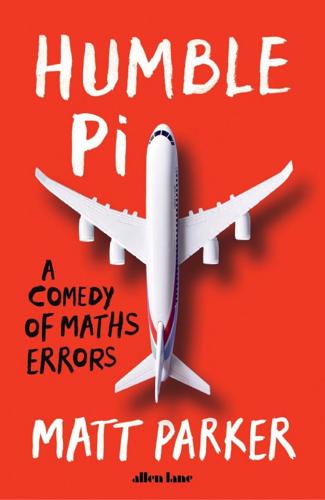
Humble Pi: A Comedy of Maths Errors
by
Matt Parker
Published 7 Mar 2019
Multibillionaire investor Warren Buffett is a big fan of non-transitive dice and brought them out when he met also-multibillionaire computer guy Bill Gates. The story goes that Gates’s suspicion was aroused when Buffett insisted he pick his dice first and, upon a closer inspection of the numbers, he in turn insisted Buffett choose first. The link between people who like non-transitive dice and billionaires may be only correlation and not causation. James Grime’s contribution to the non-transitive world was to make it so that his dice have two different possible cycles of non-transitiveness but with only one of them reversing when you double the dice.fn1 By renaming the green dice ‘olive’, the second cycle can be remembered as the alphabetical order of the colours.
…
Both the number of mobile-phone masts in an area and the number of births depend on how many people live there. I should make it very clear: in the article I explained that the correlation was because of population size. I explained in great detail that this was an exercise in showing that correlation does not mean causation. But it ended up also being an exercise in how people don’t read the article properly before commenting underneath. The correlation was too alluring and people could not help but put forward their own reasons. More than one person suggested that expensive neighbourhoods have fewer masts and young families with loads of kids cannot afford to live there, proving once again that there is no topic that Guardian readers cannot make out to be about house prices.
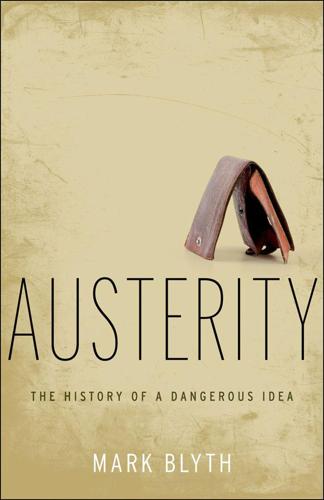
Austerity: The History of a Dangerous Idea
by
Mark Blyth
Published 24 Apr 2013
Rather, in both cases, what was once seen as sustainable suddenly became seen as unsustainable once the possibility of a contagion-led fire sale through the European bond markets was factored into a slow-moving growth crisis. As usual, it’s the perception of risk that matters. And again, just as we saw in the US case, there was no orgy of government spending behind all this. Why, then, keep up the fiction that the bond market crisis is a crisis of spendthrift governments? Confusing Correlation and Causation: Austerity’s Moment in the Sun With yields spiking to unsustainable levels in Greece, Ireland, and Portugal, each country received a bailout from the EU, ECB, and the IMF, as well as bilateral loans, on the condition that it accept and implement an austerity package to right its fiscal ship.
…
Growth rates and foreign investment both soared.105 Key to all this, as before, was the large expenditure-based cut plus wage moderation and devaluation.106 Stephen Kinsella offers a rather different version of events in his recent study of Ireland’s twin experiments with austerity: in the late 1980s and today in the aftermath of the banking crisis of 2008.107 Kinsella emphasizes that Ireland did have an expansion following a consolidation, as the literature claims, but notes that correlation is not causation in this case. Instead, he notes another correlation; that Ireland’s consolidation “coincided with a period of growth in the international economy, with the presence of fiscal transfers from the European Union, the opening up of the single market and a well-timed devaluation in August 1986.”108 An earlier paper by John Considine and James Duffy makes a similar point, namely, that it’s the boom in British imports—the so-called Lawson boom—that combined with the 1986 devaluation to make the difference.109 This is backed up by a piece by Roberto Perotti, who argues that in the Irish case “the concomitant depreciation of Sterling and the expansion in the UK … boosted Irish exports.”110 Kinsella also notes that the adjustment was considerably eased by an income tax amnesty that raised the equivalent of 2 percent of GDP.111 The part that stands out in Kinsella’s account is, however, something completely absent in other retellings of these events.
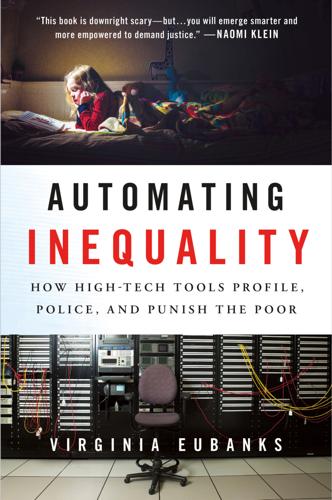
Automating Inequality
by
Virginia Eubanks
In other words, it searches through all available information to pluck out any variables that vary along with the thing you are trying to measure—which leads to charges that the method is a kind of “data dredging,” or a statistical fishing expedition. For the AFST, the Vaithianathan team tested 287 variables available in Cherna’s data warehouse. The regression knocked out 156 of them, leaving 131 factors that the team believes predict child harm.9 Even if a regression finds factors that predictably rise and fall together, correlation is not causation. In a classic example, shark attacks and ice cream consumption are highly correlated. But that doesn’t mean that eating ice cream makes swimmers too slow to avoid aquatic predators, or that sharks are attracted to soft-serve. There is a third variable that influences both shark attacks and ice cream consumption: summer.
…
.; Southern Christian Leadership Conference (SCLC) Civil Works Administration (CWA) Civilian Conservation Corps (CCC) Clinton, Bill Cloward, Richard Cohen, Stanley Cohn, Cindy COINTELPRO (the COunter INTELligence PROgram of the FBI) Communism confidentiality. See also privacy Conrad N. Hilton Foundation coordinated entry system (CES) correlation vs. causation county farms. See poorhouses county homes. See poorhouses COWPI. See Indiana, Committee on Welfare Privatization Issues creative economy in Los Angeles in Pennsylvania criminalization and automated decision-making and digital poorhouse and homelessness and poverty and welfare reform Crouch, Suzanne Culhane, Dennis Cullors, Patrisse cultural denial Cunningham, Mary Dalton, Erin Daniels, Mitch Dare, Tim data analytics, regime of mining and right to be forgotten security warehouse decision making automated and big data human and inclusion revolutionary change in and scientific charity tracking of and transparency Declaration of Independence deindustrialization in Indiana in South LA Denton, Nancy A.
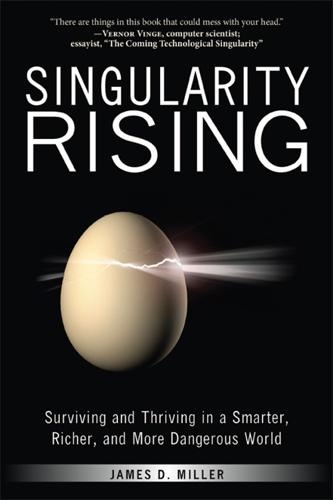
Singularity Rising: Surviving and Thriving in a Smarter, Richer, and More Dangerous World
by
James D. Miller
Published 14 Jun 2012
To be more precise: intelligence researchers disagree over how much of the variation in people’s IQs is caused by genetics, with estimates ranging from about 50 to 80 percent.162 Researchers don’t agree on the relative importance of genetics in determining IQ because of the challenge of separating correlation from causation. To understand this difficulty, suppose we know that parents who read a lot to their children tend to have children with high IQs. This correlation might occur because reading to a child increases her IQ. But here are some other possible causes, and if any one of them is the correct explanation, reading will do absolutely nothing to boost a child’s intelligence: •The higher a parent’s IQ, the more she enjoys reading to her child, and so the more she will read to her child.
…
A child’s working memory has been found to be a key predictor of his success in kindergarten as measured by teacher evaluations, perhaps indicating that parents should provide brain training to their toddlers.279 Of course, the relationship between these two indicators might be due merely to correlation, not causation, and so using brain fitness software to improve a four-year-old’s working memory might not help him in kindergarten. If computer brain training proved effective, educators could continually improve it using massive data analysis. Brain-training programs could easily keep track of students’ performances.
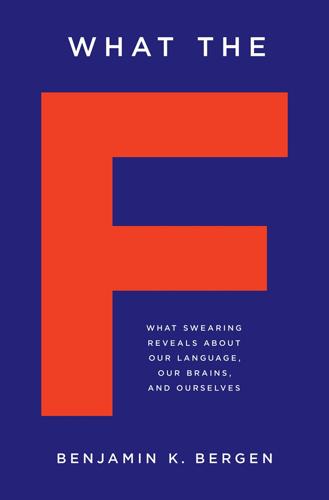
What the F: What Swearing Reveals About Our Language, Our Brains, and Ourselves
by
Benjamin K. Bergen
Published 12 Sep 2016
Each dot represents the first time the child produced a particular noun; more frequent nouns tended to be learned earlier than less frequent ones. Image reproduced from B. C. Roy et al. (2009), used with permission. Of course, a reasonable person could object to studies like this one. Correlation does not imply causation. So the fact that children tend to learn more frequent words earlier doesn’t entail that frequency is the reason for earlier word learning. Other factors might be in play. For instance, more frequent words are shorter, all things being equal. And children learn shorter words earlier.
…
The study states that adolescents who reported watching shows and playing games with more profanity in them also reported finding profanity more acceptable and using more profanity themselves. Does this answer the question about frequency? Does this mean that exposure to more profanity leads to more use of profanity? We don’t know, because the study was correlational. It’s not always obvious why correlation doesn’t imply causation, so let me just remind you here. (If this is old hat to you, by all means, skip to the next paragraph.) Here’s a nice example of why you can’t infer causation from correlation.24 Suppose you want to know whether religious faith causes an increase in alcohol consumption. You might try to find an answer by counting the number of bars and the number of churches in each of a large number of US cities.

The Uninhabitable Earth: Life After Warming
by
David Wallace-Wells
Published 19 Feb 2019
But by laundering all conflict and competition through the market, neoliberalism also proffered a new model of doing business, so to speak, on the world stage—one that didn’t emerge from, or point toward, endless nation-state rivalry. One should not confuse correlation with causation, especially since there was so much tumult coming out of World War II that it is hard to isolate the single cause of just about anything. But the international cooperative order that has since presided, establishing or at least emerging in parallel with relative peace and abundant prosperity, is very neatly historically coincident with the reign of globalization and the empire of financial capital we now group together as neoliberalism. And if one were inclined to confuse correlation with causation, there is a quite intuitive and plausible theory connecting them.
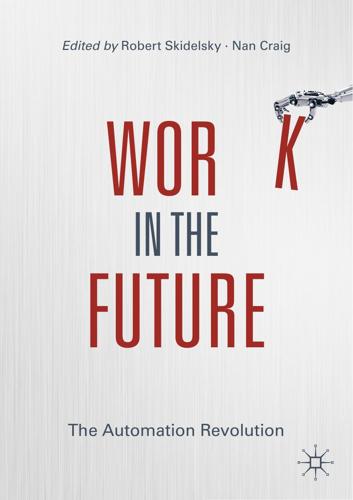
Work in the Future The Automation Revolution-Palgrave MacMillan (2019)
by
Robert Skidelsky Nan Craig
Published 15 Mar 2020
And even more importantly, even if that prediction was wrong initially, that prediction ends up being correct if enough predictive algorithms agree that “people like them” don’t look likely to pay back loans, and they are systematically shut out of the banking system. In this sense predictions become truth, and correlations become causations. There are plenty of real examples where this touches quite demonstrably on ethics and the public good, but I’ll indulge in a fictional example taken from an episode of Star Trek: Voyager’s seventh season, called “Critical Care.” The Voyager doctor, which is an AI, runs from a holographic emitter, which is stolen by an alien.
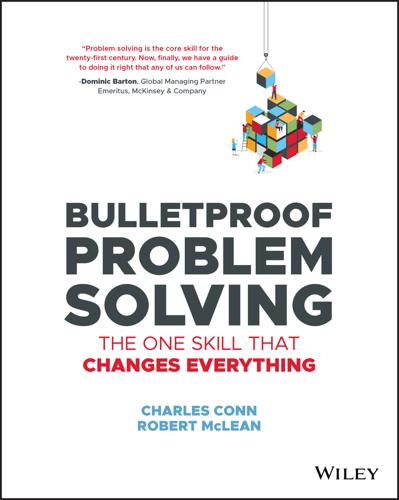
Bulletproof Problem Solving
by
Charles Conn
and
Robert McLean
Published 6 Mar 2019
The heat map that results shows the neighborhoods with the highest level of risk. As a first cut, it suggests exploring the issue further is warranted, even though the correlations aren't especially high between particulate matter and hospital admissions for yearlong data. And as we know, correlations do not prove causation; there could be an underlying factor causing both PM 2.5 hotspots and asthma hospital admissions. Experiments, more granular data analysis, and large‐scale models are the next step for this work. EXHIBIT 6.2 Source: Q. Di et al., “Air Pollution and Mortality in the Medicare Population,” New England Journal of Medicine 376 (June 29, 2017), 2513–2522.
…
This example is just a simple one to show how regression analysis can help you begin to understand the drivers of your problem, and perhaps to craft strategies for positive intervention at the city level. As useful as regression is in exploring our understanding, there are some pitfalls to consider: Be careful with correlation and causation. Walkable cities seem to almost always have far lower obesity rates than less walkable cities. However, we have no way of knowing from statistics alone whether city walkability is the true cause of lower obesity. Perhaps walkable cities are more expensive to live in and the real driver is higher socioeconomic status.
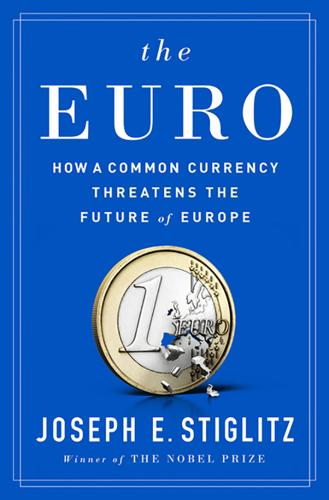
The Euro: How a Common Currency Threatens the Future of Europe
by
Joseph E. Stiglitz
and
Alex Hyde-White
Published 24 Oct 2016
True—but that is precisely what is happening now, as Troika policies have lowered Greek incomes by more than a quarter. More relevant, Greece would likely not have borrowed in German currency, precisely because it (and presumably its lenders) should have been aware of the risk that that entailed.30 CORRELATION AND CAUSATION The poor performance of the eurozone, both absolutely and relative to others, might, of course, be due to some factor other than the euro. And there have been changes in the global economy that have affected the eurozone and, more particularly, one group of countries within the eurozone relative to others.
…
The notion that there could be expansionary contractions was a chimera. A series of papers showed major flaws in their analysis.57 The IMF, which had supported austerity-style policies in the past, in fact reversed itself. It pointed out that when governments contract spending, the economy contracts.58 The big flaw in the pro-austerity study was confusing correlation with causation. There were a few countries, small economies with flexible exchange rates, where a contraction in government spending was associated with growth; but in these cases the hole in demand created by the government contraction was filled in with exports. Canada in the early 1990s was lucky because the United States was going through a rapid expansion, the recovery from the 1991 recession.
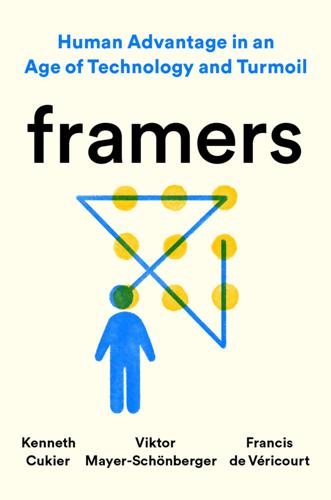
Framers: Human Advantage in an Age of Technology and Turmoil
by
Kenneth Cukier
,
Viktor Mayer-Schönberger
and
Francis de Véricourt
Published 10 May 2021
He argued that causation cannot be justified rationally and that our inductive reasoning misleads us: just because the sun has always risen doesn’t mean it will rise tomorrow. In the same vein, traditional statisticians, driven by a well-meaning sense of caution, did much to prevent people from drawing causal inferences from data. They long insisted that we can only regard events as correlated or coincidental. “Correlation is not causation” was their battle cry—and the dogma they taught students on the very first day of class. On causality, they were mute. “They declared those questions off-limits,” explains Judea Pearl, the modern father of the “causal revolution” in computer science. The causal skepticism ascribed to Hume rests, at least in part, on a misunderstanding.
…
What was required were models that depended on counterfactuals—not the world as it is, but as it might be. “Temperature and carbon dioxide do not tell of cause and effect,” Fung, now a professor of climate science at Berkeley, explains in an interview. “Both ice cream sales and murder rates in New York City increase in the summer,” she quips, suggesting a correlation without causation. “Models represent our best approximation of the real system. They allow us to identify the processes that are responsible, as well as processes that are not responsible,” she explains. “Models are the only way to project what would happen if the carbon dioxide emission trajectory changes.”

This Will Make You Smarter: 150 New Scientific Concepts to Improve Your Thinking
by
John Brockman
Published 14 Feb 2012
But the form of the causal connection is unspecified—a principle often stated as “correlation does not imply causation.” The reason for this is that the essence of causation as a concept rests on our tendency to have information about earlier events before we have information about later events. (The full implications of this concept for human consciousness, the second law of thermodynamics, and the nature of time are interesting, but sadly outside the scope of this essay.) If information about all events always came in the order in which the events occurred, then correlation would indeed imply causation. But in the real world, not only are we limited to observing events in the past but also we may discover information about those events out of order.
…
absence and evidence, 281, 282–84 abstractions, shorthand, see SHAs Adaptation and Natural Selection (Williams), 196 adoptions, 194 Aether, 338–39 Afghanistan, 19 agreeableness, 232–33 Aguirre, Anthony, 301–2 Alexander, Richard, 321 Alexander, Stephon H., xxvii, 296–98 algebra, 6, 24 Alter, Adam, 150–53 altruism, 194, 196–97 aluminum refining, 110 Amazon, 25 Anasazi, 361 Anderson, Alun, 209–10 Anderson, Ross, 262–63 anecdotalism, 278–80 anomalies, 242–45 Anthropocene thinking, 206–8 anthropologists, 361 anthropophilia, 386–88 anyons, 191 apophenia, 394 Arbesman, Samuel, 11–12 archaeology, 282–84, 361 architecture, 246–49 ARISE (Adaptive Regression In the Service of the Ego), 235–36 Aristotle, 9, 28–29, 35 art: bricolage in, 271–72 parallelism in commerce and, 307–9 recursive structures in, 146–49 Arthur, Brian, 223 Ascent of Man, The, 340 Asimov, Isaac, 324–25 assertions, 267 assumptions, 218–19 atoms, 128 attention, 130, 211 focusing illusion an, 49–50 spotlight of, 46–48 attractiveness, 136, 137 authority and experts, 18, 20, 34 Avery, Oswald, 244 Avicenna, 9 Aztecs, 361 Bacon, Francis, 395 bacteria, 15–16, 89, 97, 166, 290–91, 292–93, 338 transformation of, 243, 244, 245 Baldwin, Mark, 152 Banaji, Mahzarin R., 389–93 banking crisis, 259, 261, 307, 309, 322, 386 Barondes, Samuel, 32 Barton, Robert, 150–51 base rate, 264–65 Bass, Thomas A., 86–87 Bayesian inference, 70 behavior, ignorance of causes of, 349–52 behavioral sciences, 365–66 belief, 336–37 proof, 355–57 Bell, Alexander Graham, 110 bell curve (Gaussian distribution), 199, 200 benchmarks, 186 bias, 18, 43–45 confirmation, 40, 134 self-serving, 37–38, 40 in technologies, 41–42 biochemical cycles, 170–71 bioengineering, 16 biological ecosystems, 312–14 biological teleology, 4 biology, 234, 312 biophilia, 386 Bird, Sheila, 274 birds, 155, 359 chickens, 62–63, 155 herring gulls, 160 songbirds, 154–55 black box, 303 Blackmore, Sue, 215–17 Black Swan, The (Taleb), 315 black-swan technologies, 314–17 Blake, William, 44 blame, 35–36, 106, 386 blindness, 144 Bloch waves, 297 Boccaletti, Giulio, 184–87 body, life-forms in, 13, 290–91, 292 Boeri, Stefano, 78 Bohr, Niels, 28 Bolyai, János, 109 Bony, Jean, 247–48 Bostrom, Nick, 275–77 bottom-up thinking, 157–59 Boyer, Pascal, 182–83 bradykinesia, 63 brain, 48, 129–30, 148, 149, 150, 158, 172, 346, 347, 389, 394 consciousness and, 217 evolution of, 10, 207, 257 mind and, 364, 366 neurons in, see neurons plasticity of, 250–51 predictive coding and, 132–34 self and, 212 size of, 257 of split-brain patients, 349–50 synapses in, 164 temperament traits and, 229–30 white and gray matter in, 162–63 Bramante, Donato, 248–49 Brand, Stewart, 15–16 Bray, Dennis, 171–72 bricolage, 271–72 Brin, Sergey, xxv Bronowski, Jacob, 340, 341–42 Brooks, David, xxv–xxviii Brown, Louise, 165 Bryson, Bill, 387 Buddha, 373 business planning, 186 Buss, David M., 353–54 Byars, James Lee, xxix–xxx Cabot, John, 90 calculus, 34, 109 Calvin, William, 201–2 cancer, 390 body scans and, 69, 259–60, 264, 265 tests for, 264–65 cannibalism, 361–62 carbon, 81, 82 carbon dioxide (CO2) emissions, 202, 207, 217, 262 car insurance, 66–67 Carr, Nicholas, 116–17 Carroll, Sean, 9–10 Cartesian science, 82–83 Caspi, Avshalom, 279 cats, 286 causality, 34–36, 58–61, 396 blame, 35–36, 106, 386 confabulation, 349–52 correlation and, 215–17, 219 of diseases, 59, 303–4 entanglement and, 331 information flow and, 218–20 nexus, 34–35 root-cause analysis, 303–4 in universe, 9–10 web of causation, 59–60, 61 central-limit theorem, 107–8 certainty, 73, 260 proof, 355–57 uselessness of, 51–52 see also uncertainty Challenger, 236 chance, 7, 18 change, 127–28, 290 fixation on, 373 chaos theory, 103, 202 character traits, 229 charitable activities, 194 cheating, 351 chess, 343 chickens, 62–63, 155 children, 148, 155, 252 chocolate, 140 cholera, 338 Chomsky, Noam, xxv Christakis, Nicholas A., xxvii, 81–83, 306 Church, George, 88–89 CINAC (“correlation is not a cause”), 215–17 civil rights movement, 370 Clark, Andy, 132–34 Clarke, Arthur C., 61 climate change, 51, 53, 99, 178, 201–2, 204, 268, 309, 315, 335, 386, 390 CO2 levels and, 202, 207, 217, 262 cultural differences in view of, 387–88 global economy and, 238–39 procrastination in dealing with, 209, 210 clinical trials, 26, 44, 56 cloning, 56, 165 coastlines, xxvi, 246 Cochran, Gregory, 360–62 coffee, 140, 152, 351 cognition, 172 perception and, 133–34 cognitive humility, 39–40 cognitive load, 116–17 cognitive toolkit, 333 Cohen, Daniel, 254 Cohen, Joel, 65 Cohen, Steven, 307–8 cold fusion, 243, 244 Coleman, Ornette, 254, 255 collective intelligence, 257–58 Colombia, 345 color, 150–51 color-blindness, 144 Coltrane, John, 254–55 communication, 250, 358, 372 depth in, 227 temperament and, 231 companionship, 328–29 comparative advantage, law of, 100 comparison, 201 competition, 98 complexity, 184–85, 226–27, 326, 327 emergent, 275 computation, 227, 372 computers, 74, 103–4, 146–47, 172 cloud and, 74 graphical desktops on, 135 memory in, 39–40 open standards and, 86–87 computer software, 80, 246 concept formation, 276 conduction, 297 confabulation, 349–52 confirmation bias, 40, 134 Conner, Alana, 367–70 Conrad, Klaus, 394 conscientiousness, 232 consciousness, 217 conservatism, 347, 351 consistency, 128 conspicuous consumption, 228, 308 constraint satisfaction, 167–69 consumers, keystone, 174–76 context, sensitivity to, 40 continental drift, 244–45 conversation, 268 Conway, John Horton, 275, 277 cooperation, 98–99 Copernicanism, 3 Copernican Principle, 11–12, 25 Copernicus, Nicolaus, 11, 294 correlation, and causation, 215–17, 219 creationism, 268–69 creativity, 152, 395 constraint satisfaction and, 167–69 failure and, 79, 225 negative capability and, 225 serendipity and, 101–2 Crick, Francis, 165, 244 criminal justice, 26, 274 Croak, James, 271–72 crude look at the whole (CLAW), 388 Crutzen, Paul, 208 CT scans, 259–60 cultural anthropologists, 361 cultural attractors, 180–83 culture, 154, 156, 395 change and, 373 globalization and, see globalization culture cycle, 367–70 cumulative error, 177–79 curating, 118–19 currency, central, 41 Cushman, Fiery, 349–52 cycles, 170–73 Dalrymple, David, 218–20 DALYs (disability-adjusted life years), 206 danger, proving, 281 Darwin, Charles, 2, 44, 89, 98, 109, 156, 165, 258, 294, 359 Das, Satyajit, 307–9 data, 303, 394 personal, 303–4, 305–6 security of, 76 signal detection theory and, 389–93 Dawkins, Richard, 17–18, 180, 183 daydreaming, 235–36 DDT, 125 De Bono, Edward, 240 dece(i)bo effect, 381–85 deception, 321–23 decision making, 52, 305, 393 constraint satisfaction and, 167–69 controlled experiments and, 25–27 risk and, 56–57, 68–71 skeptical empiricism and, 85 deduction, 113 defeasibility, 336–37 De Grey, Aubrey, 55–57 delaying gratification, 46 democracy, 157–58, 237 Democritus, 9 Demon-Haunted World, The (Sagan), 273 Dennett, Daniel C., 170–73, 212, 275 depth, 226–28 Derman, Emanuel, 115 Descent of Man, The (Darwin), 156 design: mind and, 250–53 recursive structures in, 246–49 determinism, 103 Devlin, Keith, 264–65 Diagnostic and Statistical Manual of Mental Disorders (DSM-5), 233–34 “Dial F for Frankenstein” (Clarke), 61 Diesel, Rudolf, 170 diseases, 93, 128, 174 causes of, 59, 303–4 distributed systems, 74–77 DNA, 89, 165, 223, 244, 260, 292, 303, 306 Huntington’s disease and, 59 sequencing of, 15 see also genes dopamine, 230 doughnuts, 68–69, 70 drug trade, 345 dualities, 296–98, 299–300 wave-particle, 28, 296–98 dual view of ourselves, 32 dynamics, 276 Eagleman, David, 143–45 Earth, 294, 360 climate change on, see climate change distance between sun and, 53–54 life on, 3–5, 10, 15 earthquakes, 387 ecology, 294–95 economics, 100, 186, 208, 339 economy(ies), 157, 158, 159 global, 163–64, 238–39 Pareto distributions in, 198, 199, 200 and thinking outside of time, 223 ecosystems, 312–14 Edge, xxv, xxvi, xxix–xxx education, 50, 274 applying to real-world situations, 40 as income determinant, 49 policies on, controlled experiments in, 26 scientific lifestyle and, 20–21 efficiency, 182 ego: ARISE and, 235–36 see also self 80/20 rule, 198, 199 Einstein, Albert, 28, 55, 169, 301, 335, 342 on entanglement, 330 general relativity theory of, 25, 64, 72, 234, 297 memory law of, 252 on simplicity, 326–27 Einstellung effect, 343–44 electrons, 296–97 Elliott, Andrew, 150 Eliot, T.

Cities in the Sky: The Quest to Build the World's Tallest Skyscrapers
by
Jason M. Barr
Published 13 May 2024
This idea originated decades ago in Manhattan, where, the story goes, skyscrapers are “missing” between Downtown and Midtown because the bedrock is far below the surface; as a result, developers avoided building in geologically unfriendly neighborhoods such as Greenwich Village. However, this is a confusion of correlation with causation. The real reason there were few skyscrapers in the “dead zone” was that these neighborhoods were dense tenement districts crowded with low-income immigrants and factories, and in which there was no demand for high-end office buildings. New York later implemented zoning and required the low-rise neighborhoods to remain so.
…
But just because high prices and tall buildings in Hong Kong coexist does not mean that tall buildings are the cause of high prices. Rather, tall buildings are a prime response to the high prices, not the other way around. So “blaming” tall buildings for Hong Kong’s high cost of living is confusing correlation with causation. It’s true that some tall buildings can be more expensive to construct and maintain on a per-square-foot basis, but that is not necessarily the case when they are built with efficiency and good planning. When we think of skyscrapers, we tend to think of high-end luxury condos or splashy corporate headquarters designed by starchitects.

MONEY Master the Game: 7 Simple Steps to Financial Freedom
by
Tony Robbins
Published 18 Nov 2014
RAINMAKER Ray was now on a roll and was systematically dissecting everything I had been taught or sold over the years! “Tony, there is another major problem with the balanced portfolio ‘theory.’ It’s based around a giant and, unfortunately, inaccurate assumption. It’s the difference between correlation and causation.” Correlation is a fancy investment word for when things move together. In primitive cultures, they would dance in an attempt to make it rain. Sometimes it actually worked! Or so they thought. They confused causation with correlation. In other words, they thought their jumping up and down caused the rain, but it was actually just coincidence.
…
Kyle, 10, 173–75, 281, 455, 456, 514–22, 514 Beating the Dow (O’Higgins), 398 Bebchuk, Lucian, 461 Beecher, Henry Ward, 24 behavioral economics, 38, 301 Benartzi, Shlomo, 37, 66–67 benchmarks, 146–47 Benioff, Marc, 15, 173, 599 Berg, Joel, 597 Berkshire Hathaway, 459, 486 Bernanke, Ben, 165–66, 518, 520 Berra, Yogi, 352 Biggs, Barton, 96 billionaires vs. millionaires, 208–10 Black Monday crash (1987), 15, 46–47, 350, 488, 493 Blakely, Sara, 270–71, 485 Bogle, John C., 454, 457, 476 on active vs. passive management, 100, 165, 533–34 on annuities, 168 on asset allocation, 482, 483–84 author’s interview with, 47, 85, 321, 411–12, 476–84 on bonds, 336 on dollar-cost averaging, 355 on ETFs, 322 on fees, 107, 110, 274 and index funds, 97, 320, 419–20, 473, 487 on international portfolios, 328 on mutual funds, 102, 116, 118, 144, 157, 533–34 and Vanguard, 10, 95, 97, 144, 328, 411 Bohr, Niels, 352 Bolt, Usain, 95 bonds, 315–20 corporate, 318–19 cumulative losses in, 383 and deflation, 386 emerging-market, 527 foreign government, 317, 319 guaranteed rate of return in, 306 high-yield (junk), 318, 323 index funds, 305, 319, 320 and interest rates, 158, 304, 315 investing your age in, 336 municipal, 319–20 mutual funds, 158 price fluctuations in, 305 rating system for, 318 and safety, 158 in Security/Peace of Mind Bucket, 303–5, 306, 315–20 and stocks, 158, 160, 329–30 T-bills, 316 T-bonds, 316 TIPS, 316–17 T-notes, 316 US Treasuries, 305, 316–18, 328–29, 400, 473, 474 Bono, 596 Branson, Richard, 172, 173, 190, 208, 530 break-even point, 401 breakthroughs, 184–85 compounding, 192–93 creating, 186–99 in story, 188–95 in strategy, 187–88, 199 in your state, 196–99 Bridgewater Associates, 21, 99, 374–75, 397, 496–97 Brin, Sergey, 377 brokers, 86–87, 112, 121–37 discount brokerages, 530 Enron promoted by, 133–34 and fiduciaries, 126–28, 137, 180 sales charge (load) paid to, 115 suitability standard, 125–26 Brookner, Anita, 314 Brown, Jeffrey, 90–91, 135, 152–53, 162, 163, 407, 417–18, 424 Buffett, Warren, 10, 34, 102, 459, 485 author’s interview with, 454, 485–87 on bonds, 158 buying great companies, 486, 491, 492, 536 and Coca-Cola, 460 and compounding, 49 and dollar-cost averaging, 358 and Giving Pledge, 392, 512, 595 on index funds, 92, 95, 487 on investing in oneself, 262 on market fluctuations, 351 on risk, 89 rules of investing, 173, 300, 373 and Today, 270, 485 Business Mastery, 241–42 business owners: and automatic savings, 65, 69 cash-balance plans, 155 and 401(k)s, 146–48, 152, 153, 181 Butcher vs. the Dietitian, The (YouTube), 127–28, 180 California, taxes in, 288–89 Callahan, Patrick, 499 Callanan, David, 431 call and put options, 325 Campbell, Joseph, 48 Canada, strong banks in, 177, 310 Carnegie, Andrew, 19, 447, 594–95 Carnegie, Dale, 262 car ownership, 252–53 Caruso, Bob, 598 cash-back websites, 255–56 cash-balance (CB) plans, 155, 156 cash/cash equivalents, 302–3 holding too much in, 306 tax-free growth of, 442–43 cash drag, 115 Castro, Julian, 485 causation vs. correlation, 384 CDs: market-linked, 178–79, 305, 306 in Security/Peace of Mind Bucket, 305, 306 certainty/comfort, 75, 206 Chambers, John T., 530 Chantal (Rwandan orphan), 592–93 child slavery, 600 China, death by a thousand cuts in, 109 Churchill, Winston, 188, 244, 457, 588 clarity, as power, 611 Clason, George Samuel, 69 Clinton, Bill, 553 Cloonan, James, 87 clothing, breathable, 567 cloud computing, xxvii Club of Rome, 556 Coca-Cola, 460, 566 Coelho, Paulo, 225 cognitive illusions, 38–39 cognitive limitations, 41 cognitive understanding, 42 collectibles, 324 commodities, 324 community service, 342–43 complexity, 41, 206 compounding, 35–36, 49–52, 58, 256, 364 fees, 106–9, 479 financial breakthrough of, 192–93 rule of 72 in, 283 savings, 60, 62–65, 238, 280 and taxes, 235, 277–78, 279, 445–46 and time, 311, 312 Connally, John B., 372 connection, 77 consumer spending, 213, 562 contrast, 245 contribution, 77–78, 266–67, 585 control, illusion of, 422, 580 Coppola, Francis Ford, 6, 52–53, 60 corporate bonds, 318–19 correlation vs. causation, 384 cortisol, 197 Costa Rica, moving to, 291 cost calculator, 111 creativity, 193, 266–67 credit-default obligations (CDOs), 325 critical mass, 33, 58, 89, 90, 408 Cuban, Mark, 281 Cuddy, Amy, 197 Cunningham, Keith, 133–34 currencies, 324, 328, 353 currency risk, 328 currency swap, 469 Curry, Ann, 350 Dalai Lama 574–75 Dalio, Ray, 10, 21–24, 25, 30, 41, 84, 94, 106, 496 on active management, 165 and All Seasons/All Weather, 306, 370, 371–72, 374–92, 404, 448, 613 and asset allocation, 101, 163, 282–83, 296, 298, 299, 331, 379, 383–84, 388, 389, 412, 494 author’s interview with, 47, 448, 455, 496–97 and Bridgewater, 21, 99, 374–75, 397, 496–97 and futures contract, 374 How the Economic Machine Works, 380 and McDonald’s, 373–74 portfolio of, 23, 101, 372–73, 390–91, 437 and Pure Alpha, 375–76, 397 and Risk/Reward, 173 and volatility, 301, 321 Damon, Matt, 17 death by a thousand cuts, 109, 122 debt, 239–40, 275 decisions: financial, 295 investment, 295, 364 our lives determined by, 244, 246 defined benefit plans, 155 deflation, 329, 385, 386, 526 demographic inevitability, 285 demographic wave, 562 denial, 211 depreciation, 285–86 depression, 581–82, 594 Diamandis, Peter, 47, 551, 554–55, 564, 572 DiCaprio, Leonardo, 15 Dimensional Funds, 113, 143 Dimon, Jamie, 499 discipline, 199, 543 Disraeli, Benjamin, 248, 573 diversification, 325–26, 527–28 and asset allocation, 296, 297–300, 355, 363, 364, 378, 472–73, 482 and asset classes, 355, 363, 383, 473, 490–91 and index funds, 49, 357, 473, 483 and long-term investment, 474 and returns, 276, 282, 297 and risk/reward, 297, 300, 379, 383, 456, 472–73 and volatility, 104 Dodd, Chris, 122 Dodd-Frank Wall Street Reform and Consumer Protection Act (2009), 122–23, 135 dollar-cost averaging, 355–59, 363, 365–66, 613 dollar-weighted returns, 118–19, 121 Dow Jones Industrial Average, 101 Dream Bucket, 207, 339, 340–47, 363 asset allocation, 346, 347, 613 and community service, 342–43 filling, 343–44, 613 and gifts, 341–42 and lifestyle, 341 list your dreams, 345 state your goals, 345 strategic splurges in, 340 Dunn, Elizabeth, 589, 601 Duty Free Shopping (DFS), 72 Earhart, Amelia, 63 Earnhardt, Dale Sr., 321 earnings, and investment, 259–72 Ebates, 256 Edelen, Roger, 114 Edison, Thomas A., 19 education, 264, 265–66 teachers, 266–67 effort, 228 Egyptian Treasury bills, 319 Einhorn, David, 99 Einstein, Albert, 50, 83, 259, 292 Eisenson, Marc, 251 Elizabeth I, queen of England, 550 Elizabeth II, queen of England, 541 emergency/protection fund, 216–17, 302 emerging markets, 100, 358, 473, 527 Emerson, Ralph Waldo, 19, 59, 219 Eminem, 191 emotion, 191, 209, 210, 301, 355, 402, 582, 594 emotional mastery, 42 empowerment, 190 endowment model, 469 energy policy, 506, 509, 510–12, 556–57 Enriquez, Juan, 551, 563, 566 Enron, 133–34, 162–63 entrepreneurs: and automatic savings, 65, 69 cash-balance plan for, 155 and 401(k)s, 146–48, 152, 153, 181 environment, investment, 385–88 Epictetus, 37 equities, 322–23, 329–30, 473 Erdoes, Mary Callahan, 10, 99–100, 455, 498 on asset allocation, 296, 337, 504 author’s interview with, 100, 309, 337–38, 498–504 on leadership, 501 on long-term investment, 504 on rebalancing, 361 on structured notes, 309–10 Europe, economies in, 518–20 Evans, Richard, 114 exchange-traded funds (ETFs), 322–23 execution, 41, 65, 228, 388, 616 expectations, 334, 387 expense ratio, 108, 113 expenses, cutting, 253–56 Extrabux, 256 extracellular matrix (ECM), 568 Faber, Marc, 523–28, 523 Facebook, 270 failure to try, 271 Fama, Eugene, 98 Farrell, Charlie, 279 fate, 228–29, 343 fear: of being judged, 193 dealing with, 544–45 of failure, 183–84, 225, 301 physical effects of, 196 of the unknown, 185, 211 Federal Deposit Insurance Corporation (FDIC), 178–79, 302, 305 Federal Reserve, 354, 481, 524, 535 Fee Checker, 145, 148, 151–52, 181 Feeding America, 598, 599 Feeney, Chuck, 72–73, 595 fees, 87, 104, 236 of annuities, 168–69, 308, 434, 439 compounding, 106–9, 479 cost calculator, 111 in 401(k)s, 111, 114, 141, 142, 143–46, 148, 151–52, 181 on index funds, 112, 165, 278 of mutual funds, 105–15, 119, 121, 141, 180, 273, 278, 479 nondeductible, 112 in pensions, 86 reducing, 273–80 and risk/reward, 177, 180 in structured notes, 310 Feldstein, Martin, 385 fiduciary, 126–33 advice from, 126, 286, 319, 338, 362 brokers vs., 126–28, 137, 180 Butcher vs.

Architects of Intelligence
by
Martin Ford
Published 16 Nov 2018
You can show a young child their first giraffe, and now they know what a giraffe looks like; you can show them a new gesture or dance move, or how you use a new tool, and right away they’ve got it; they may not be able to make that move themselves, or use that tool, but they start to grasp what’s going on. Or think about learning causality, for example. We learn in basic statistics classes that correlation and causation are not the same thing, and correlation doesn’t always imply causation. You can take a dataset, and you can measure that the two variables are correlated, but it doesn’t mean that one causes the other. It could be that A causes B, B causes A, or some third variable causes both. The fact that correlation doesn’t uniquely imply causation is often cited to show how difficult it is to take observational data and infer the underlying causal structure of the world, and yet humans do this.
…
That means that we lose transparency, we lose reconfigurability, and other nice features that we like. By the time that I published my book on Bayesian networks in 1988, though, I already felt like an apostate because I knew already that the next step would be to model causality, and my love was already on a different endeavor. MARTIN FORD: We always hear people saying that “correlation is not causation,” and so you can never get causation from the data. Bayesian networks do not offer a way to understand causation, right? JUDEA PEARL: No, Bayesian networks could work in either mode. It depends on what you think about when you construct it. MARTIN FORD: The Bayesian idea is that you update probabilities based on new evidence so that your estimate should get more accurate over time.
…
However, in practice, people noticed that if you structure the network in the causal direction, things are much easier. The question was why. Now we understand that we were craving for features of causality that we didn’t even know come from causality. These were: modularity, reconfigurability, transferability, and more. By the time I looked into causality, I had realized that the mantra “correlation does not imply causation” is much more profound than we thought. You need to have causal assumptions before you can get causal conclusions, which you cannot get from data alone. Worse yet, even if you are willing to make causal assumptions, you cannot express them. There was no language in science in which you can express a simple sentence like “mud does not cause rain,” or “the rooster does not cause the sun to rise.”
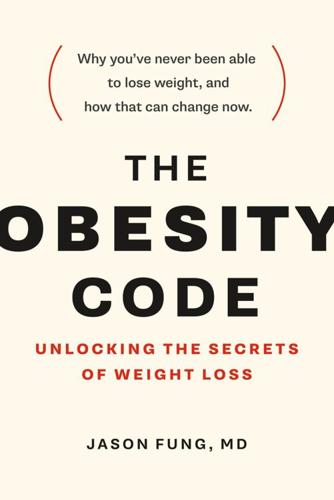
The Obesity Code: Unlocking the Secrets of Weight Loss
by
Jason Fung
Published 3 Mar 2016
CALORIC REDUCTION IS NOT THE PRIMARY FACTOR IN WEIGHT LOSS WHY DO WE gain weight? The most common answer is that excess caloric intake causes obesity. But although the increase in obesity rates in the United States from 1971 to 2000 was associated with an increase in daily calorie consumption of roughly 200 to 300 calories,1 it’s important to remember that correlation is not causation. Furthermore, the correlation between weight gain and the increase in calorie consumption has recently broken down.2 Data from the National Health and Nutrition Examination Survey (NHANES) in the United States from 1990 to 2010 finds no association between increased calorie consumption and weight gain.
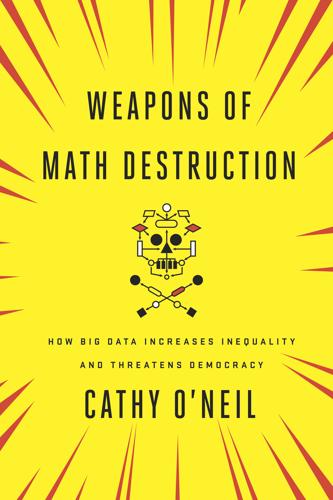
Weapons of Math Destruction: How Big Data Increases Inequality and Threatens Democracy
by
Cathy O'Neil
Published 5 Sep 2016
This cruel practice, known as redlining, has been outlawed by various pieces of legislation, including the Fair Housing Act of 1968. Nearly a half century later, however, redlining is still with us, though in far more subtle forms. It’s coded into the latest generation of WMDs. Like Hoffman, the creators of these new models confuse correlation with causation. They punish the poor, and especially racial and ethnic minorities. And they back up their analysis with reams of statistics, which give them the studied air of evenhanded science. On this algorithmic voyage through life, we’ve clawed our way through education and we’ve landed a job (even if it is one that runs us on a chaotic schedule).

The Equality Machine: Harnessing Digital Technology for a Brighter, More Inclusive Future
by
Orly Lobel
Published 17 Oct 2022
Though it’s possible that some of this increase is a result of population composition changes, the rate of interracial marriages has outpaced the growth rate of minorities as a percentage of the overall population. Interracial marriages among Black Americans jumped from 5 percent in 1980 to 18 percent in 2015, yet the percentage of Black Americans held steady at 12 percent throughout that time. Of course, social norms and our online behaviors are entangled, and we never assume a correlation signifies causation, but these positive trajectories are worth investigating further. Technology can nudge change, but lasting changes have to come from social norms. And we also must recognize that race is salient, and significantly impacts matches, on many dating sites. As with other types of platforms and choice architecture, there is no neutral design.
…
Big data is about people—our behaviors, beliefs, and desires. Machines can quickly and accurately determine my ethnicity, sexuality, religion, politics, and socioeconomic circumstances. Algorithms are not interested in the why unless we program them to search for causality; they are inductive, looking for statistical predictions—correlations, not causation—based on past patterns. But understanding patterns can be an engine for change. Data itself is a human artifact, and data collection is not neutral. We’ve seen how when certain groups are underrepresented in the data used to train the model, then predictions about them will be inaccurate.
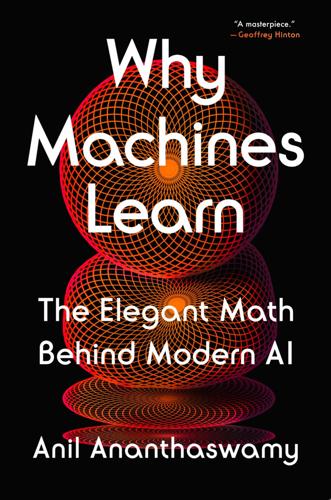
Why Machines Learn: The Elegant Math Behind Modern AI
by
Anil Ananthaswamy
Published 15 Jul 2024
Another concern is inherent bias in data that can encode structural problems in society (for example, data that correlates certain communities with higher rates of recidivism because of historical imbalances in how law enforcement targets these communities; or data that represents prior hiring practices that favored males over females). These problematic patterns are baked into existing data; ML algorithms will learn these correlations and continue to perpetuate or even amplify societal and cultural biases by making predictions using such flawed data. ML systems can also conflate correlation with causation. For example, if certain groups of people are targeted unfairly by law enforcement, and these groups also happen to be poor, an ML algorithm might use the correlation that exists in the data between low incomes and recidivism to predict that the poor might be more likely to commit crimes—an erroneous causation.
…
See also nearest neighbor rule Krauth, Werner, 225 Krizhevsky, Alex, 375, 379 L Lagerlöf, Selma, 7 Lagrange, Joseph-Louis, 211, 216–20 language acquisition, 356–57, 428–29 large language models (LLMs) applications for, 420 bias in, 420–22 ChatGPT, 415–16 correlation with causation, 422 dangers of, 420–21 energy efficiency, 429 language acquisition, 428–29 Minerva, 412–14, 419 as a perceptron descendant, 1–2, 25 self-supervised learning and, 402–4 sexism in, 422–24 theory of mind and, 415–20, 428 as a transformer, 408–9 learning processes, 357 learning rates, 318–19 least mean squares (LMS) algorithm, 64–65, 86–92, 94 LeCun, Yann, 340–41, 356–60, 374 Leibniz, Gottfried Wilhelm, 31 LeNet, 360, 373–74.

Mining Social Media: Finding Stories in Internet Data
by
Lam Thuy Vo
Published 21 Nov 2019
By merging two sheets, we can easily compare values based on a common category. We should be cautious about drawing major conclusions about the relationship between data sets, however. Correlation is not the same as causation. This means even though two data sets may seem like they have a relationship—that is, the data sets seem correlated—that doesn’t mean that one data set caused the results in the other. Correlational and causational connections between data sets should be backed by other research from reports, experts, or field studies. But even the simplest comparisons between two or more data sets can be very illustrative.
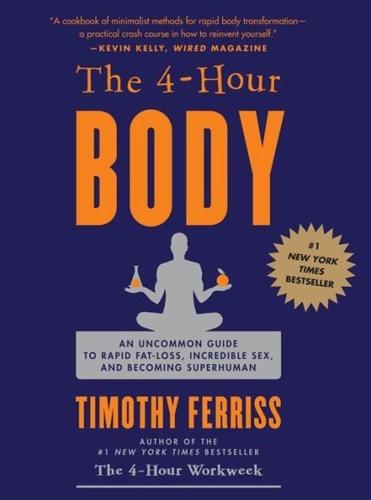
The 4-Hour Body: An Uncommon Guide to Rapid Fat-Loss, Incredible Sex, and Becoming Superhuman
by
Timothy Ferriss
Published 1 Dec 2010
Most “new studies” in the media are observational studies that can, at best, establish correlation (A happens while B happens), but not causality (A causes B to happen). If I pick my nose when the Super Bowl cuts to a commercial, did I cause that? This isn’t a haiku. It’s a summary: correlation doesn’t prove causation. Be skeptical when people tell you that A causes B. They’re wrong much more than 50% of the time. USE THE YO-YO: EMBRACE CYCLING Yo-yo dieting gets a bad rap. Instead of beating yourself up, going to the shrink, or eating an entire cheesecake because you ruined your diet with one cookie, allow me to deliver a message: it’s normal.
…
Observational studies can only show correlation: A and B both exist at the same time in one group. They cannot show cause and effect.4 In contrast, randomized and controlled experiments control variables and can therefore show cause and effect (causation): A causes B to happen. The satirical religion Pastafarianism purposely confuses correlation and causation: With a decrease in the number of pirates, there has been an increase in global warming over the same period. Therefore, global warming is caused by a lack of pirates. Even more compelling: Somalia has the highest number of Pirates AND the lowest Carbon emissions of any country.
…
Or you could get really serious and start to manipulate the statistics. For two pages only, this will now get quite nerdy. Here are the classic tricks to play in your statistical analysis to make sure your trial has a positive result. Ignore the protocol entirely Always assume that any correlation proves causation. Throw all your data into a spreadsheet programme and report—as significant—any relationship between anything and everything if it helps your case. If you measure enough, some things are bound to be positive just by sheer luck. Play with the baseline Sometimes, when you start a trial, quite by chance the treatment group is already doing better than the placebo group.

Tightrope: Americans Reaching for Hope
by
Nicholas D. Kristof
and
Sheryl Wudunn
Published 14 Jan 2020
“A father’s absence increases antisocial behavior, such as aggression, rule-breaking, delinquency and illegal drug use,” with the effects greater for boys than for girls, Sara McLanahan of Princeton University and Christopher Jencks of Harvard University concluded after assessing the evidence. Yet there’s a danger of drawing too sweeping a conclusion here, for it’s difficult to untangle correlation from causation, and in any case many single moms do brilliantly. In addition, most of the data is driven by low-income households, where a single parent means a constant financial struggle; more affluent single-parent households are much more likely to succeed. In any case, what matters isn’t a traditional family structure so much as stability.
…
“it makes it harder for me to get a job”: Resentment of Latino immigrants was rooted not only in lost jobs but also in frustration that the social status of white working-class men had plummeted, with demographic and cultural changes making them feel a little like, in Arlie Russell Hochschild’s phrase, “strangers in their own land.” 16. THE MARRIAGE OF TRUE MINDS success for black men was marriage: W. Bradford Wilcox, Wendy R. Wang and Ronald B. Mincy, “Black Men Making It in America,” American Enterprise Institute, 2018. Of course, that is correlation rather than causation, and some of the unmarried men had risk factors that also made them less marriageable. two-parent households have more social capital: Consider low-income black men growing up in two different neighborhoods in Los Angeles. Of young black men who grew up in the lowest-income families in Watts, 44 percent ended up incarcerated on a single day (the day of the 2010 census).

The Better Angels of Our Nature: Why Violence Has Declined
by
Steven Pinker
Published 24 Sep 2012
(An amusing video reel of fulminating fogies can be seen in Cleveland’s Rock and Roll Hall of Fame and Museum.) Do we now have to—gulp—admit they were right? Can we connect the values of 1960s popular culture to the actual rise in violent crimes that accompanied them? Not directly, of course. Correlation is not causation, and a third factor, the pushback against the values of the Civilizing Process, presumably caused both the changes in popular culture and the increase in violent behavior. Also, the overwhelming majority of baby boomers committed no violence whatsoever. Still, attitudes and popular culture surely reinforce each other, and at the margins, where susceptible individuals and subcultures can be buffeted one way or another, there are plausible causal arrows from the decivilizing mindset to the facilitation of actual violence.
…
Also, cultures that are classified as more individualistic, where people feel they are individuals with the right to pursue their own goals, have relatively less domestic violence against women than the cultures classified as collectivist, where people feel they are part of a community whose interests take precedence over their own.94 These correlations don’t prove causation, but they are consistent with the suggestion that the decline of violence against women in the West has been pushed along by a humanist mindset that elevates the rights of individual people over the traditions of the community, and that increasingly embraces the vantage point of women.
…
On the contrary, “they must be permitted . . . the foolish and childish actions suitable to their years.”168 The idea that the way children are treated determines the kinds of adults they grow into is conventional wisdom today, but it was news at the time. Several of Locke’s contemporaries and successors turned to metaphor to remind people about the formative years of life. John Milton wrote, “The childhood shows the man as morning shows the day.” Alexander Pope elevated the correlation to causation: “Just as the twig is bent, the tree’s inclined.” And William Wordsworth inverted the metaphor of childhood itself: “The child is father of the man.” The new understanding required people to rethink the moral and practical implications of the treatment of children. Beating a child was no longer an exorcism of malign forces possessing a child, or even a technique of behavior modification designed to reduce the frequency of bratty behavior in the present.
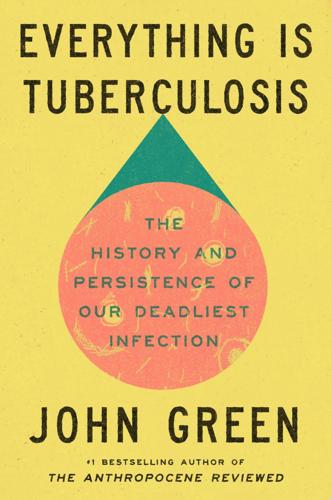
Everything Is Tuberculosis: The History and Persistence of Our Deadliest Infection
by
John Green
Published 18 Mar 2025
I probably do not need to point out that these standards of beauty are still informing what is considered to be feminine beauty in much of the world. The romanticization of TB also intersected with fashion for both men and women, although the interaction was complicated, and we must be careful not to conflate correlation with causation. It’s often been said, for example, that corsets sought to emulate the experience of consumption by being restrictive enough to limit women’s breathing and physical activities, but more recently, historians have found that most corsets were not particularly restrictive and these connections have been overblown.

The Collapse of Western Civilization: A View From the Future
by
Naomi Oreskes
and
Erik M. Conway
Published 30 Jun 2014
fisherian statistics A form of mathematical analysis developed in the early twentieth century and designed to help distinguish between causal and accidental relation-ships between phenomena. Its originator, R. A. Fisher, was one of the founders of the science of population genetics, and also an advocate of racially-based eugenics programs. Fisher also rejected the evidence that tobacco use caused cancer, and his argument that “correlation is not causation” was later used as a mantra by neoliberals rejecting the scientific evidence of various forms of adverse environmental and health effects from industrial products (see statistical significance). fugitive emissions Leakage from wellheads, pipelines, refineries, etc. Considered “fugitive” because the releases were supposedly unintentional, at least some of them (e.g., methane venting at oil wells) were in fact entirely deliberate.

Wall Street: How It Works And for Whom
by
Doug Henwood
Published 30 Aug 1998
Recently, however, that relationship seems to have broken down. Why this should be isn't clear; it could be that both the stock market and consumer spending were independently responding to lower interest rates, and that the conclusion that stocks were "causing" the spending changes are a classic example of confusing correlation with causation. Or it may be that the increasing institutionalization of the market has reduced the effect of stock prices on personal spending. Or it may have been that household balance sheets were in such terrible shape in the early 1990s that a bull market was of little help (Steindel 1992). But whatever the reason, this household application of q theory isn't quite as impressive as it once was.
…
See Globalization capital, human, firm-specific, 248 capital markets and formation of rentier class, 238 importance of railroads to, 188 prefer M&A to internal growth, 281 and real economy, 121-126 social effects, 8 capital structure and investment, 153-155, 174 leveraged buyouts, 298 pecking order, 149 transactions-cost analysis, 249 see also Modigliani-Miller theorem capitalism abolition within capitalism Berle and Means on, 255 Marx on, 240 petty, American naturalization of, 251 as system, 245 capitalist triumphalism, 187 capitalization of income streams, 13, 22 buildings as capitalized rents, 80 capitalization of misery, by World Bank, 49-50 caps, 36 Card, David, 141 Case Shiller Weiss, 186 Caves, Richard, 280 central banks, 23 and class struggle, 219, 308 control of short-term interest rates, 25-26 do economics better than academics, 137 history, 116 "independence", 307-308 Keynes's criticism of 1920s tightness, 196 market pressures on, 308-309 see also Federal Reserve centralization, futures/options markets, 32-33 CEO salaries, 239 Champion International, 288 chartists, 105 Chase group, 262 Chemical Bank, 262 Chernobyl, 54 Chicago, early futures markets, 29 Chicago Board of Trade, 32 Chicago Board Options Exchange, 33 Chile, 201 pension privatization, 304-305 Chinese paper, 282 Chinese wall, 99 Chrysler, 286 churches, 288 Ciancanelli, Penny, 235 Citibank, 296-297, 314 class struggle and bond markets, 122-123 and central banking, 219, 308 indebtedness and, 232 Jensen on armed suppression, 276 leveraged buyouts as, 274 Clayton & Dubalier, 271 Clearing House Interbank Payment System, 45 clearinghouses, futures and options, 32-33 Cleaver, Harry, 320 Clinton, Bill, 104 acceptance of slow growth, 134 Clinton, Hillary, 314 clustering, 182 Coase, Ronald H., 249-251, 297 Colby, William, 104 Colgate-Palmolive, 113 College Retirement Equities Fund (CREF), 289 Collier, Sophia, 310 Columbia Savings, 88 commercial banks, 81-84 commodity prices, futures markets and, 33; see also futures markets common stock, 12 Community Capital Bank, 311 community development banks, 311-314 community development organizations, co-optation of, 315 community land trusts, 314-315 compensatory borrowing, 65 competition managerialist view of, 260 return of, 1970s, 260 Comstock, Lyndon, 311 Conant, Charles, 94-95 Conference Board, 136, 291 consciousness credit and, 236-237 rentier, profit with passage of time, 238 consensus, 133 consumer credit, 64-66, 77 in a Marxian light, 234 in 1930s depression, 156-157 rare in Keynes's day, 242 see also households Consumer Expenditure Survey, 70 consumption, 189 contracts, 249; see afao transactions-cost economics control. 5ee corporations, governance cooperatives, 321 managers hired by workers, 239 weaknesses of ownership structure, 88 corporate control, market for, 277-282 Manne on, 278 corporations debt distribution of, 1980s, 159 and early 1990s slump, 158-161 development, and stock market, 14 emergence, and Federal Reserve, 92-96 emergence of complex ownership, 188 evolution, 253 form as presaging worker control (Marx), 239-240 importance of railroads in emergence, 188 localist critique of, 241 managers' concern for stock price, 171 multinational evolution, and financial markets, 112-113 investment clusters, 111-112 nonfinancial, 72-76 finances (table), 75 financial interests, 262 refinancing in early 1990s, l6l role in economic analysis, 248 shareholders conribute nothing or less, 238 soulful, 258, 263; see afeo social investing stock markets' role in constitution of, 254 transforming, 320-321 virtues of size, 282 corporations, governance, 246-294 Baran and Sweezy on, 258 Berle and Means on, 252-258 abuse of owners by managers, 254 interest-group model, 257-258 Berle on collective capitalism, 253-254 boaids of directors, 27-29, 246, 257, 259, 263, 272 financial representatives on, 265 keiretsu, 275 of a "Morganized" firm, 264 rentier agenda, 290 structure, 299 competition's obsolescence/return, 260 debt and equity, differences, 247 EM theory and Jensenism as unified field theory, 276 financial control 359 WALL STREET meaning, 264 theories of, rebirth in 1970s, 260-263 financial interests asserted in crisis, 265 financial upsurge since 1980s, 263-265 Fitch/Oppenheimer controversy, 261-262 Galbraith on, 258-260 Golden Age managerialism, 258-260 Herman on, 260 influence vs. ownership, 264—265 international comparisons, 248 Jensenism. 5eeJensen, Michael market for corporate control, 277-282 narrowness of debate, 246 Rathenau on, 256 shareholder activism of 1990s, 288-291 Smith on, 255-256 Spencer on, 256-257 stockholder-bondholder conflicts, 248 theoretical taxonomy, 251-252 transactions cost economics, 248-251 transformation, 320-321 useless shareholders, 291-294 correlation coefficient, 116 correlation vs. causation, 145 cost of capital, 184, 298 Council of Institutional Investors, 290 Cowles, Alfred, 164 crack spread, 31 Cramer, James, 103 crank, 243 credit/credit markets assets, holders of, 59-61 as barrier to growth, 237 as boundary-smasher (Marx), 235 centrality of, 118-121 and consciousness, 236-237 European vs.
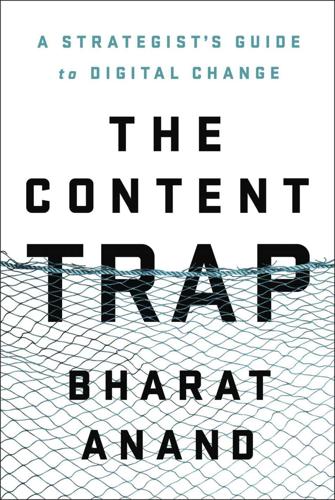
The Content Trap: A Strategist's Guide to Digital Change
by
Bharat Anand
Published 17 Oct 2016
Figure 14: Impact of Format Changes on Music Sales, 1973–2013 (Peak unit sales normalized to 100 for all formats) Diagnosing the music industry problem is not simply a question of seeing that CD declines are coincident with trends in file sharing. It requires separating cause from effect. The problem with the diagnosis stems from an age-old problem in statistical inference: separating correlation from causation. We see it everywhere. Does TV viewing increase obesity, or are obese individuals more inclined to watch TV? Are Asians innately better at math, or do they work harder at it? Simple correlations would lead you to infer that there’s some causal relation between two variables, when in fact there might be none.
…
Was eBay stupid in that it was using the wrong keywords? Absolutely not—by then eBay had learned a lot about keyword bidding from prediction models developed by a very sophisticated group of Ph.D. computer scientists. But the models fell under the category of machine learning, where all you care about is correlation, not causation. Was eBay wasting a lot of money? Yes—just like any company that’s not aware. And that’s practically all companies using the industry’s best practices, which are flawed because of the endogeneity problem. eBay hadn’t set out to understand how the endogeneity problem affected the returns on paid search.
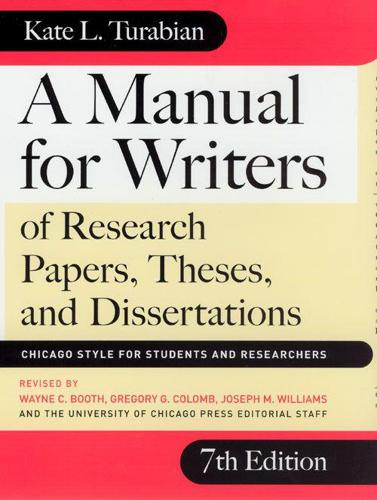
A Manual for Writers of Research Papers, Theses, and Dissertations, Eighth Edition: Chicago Style for Students and Researchers
by
Kate L. Turabian
Published 14 Apr 2007
Such distinctions help you avoid mistakes like this: Original by Jones: We cannot conclude that one event causes another because the second follows the first. Nor can statistical correlation prove causation. But no one who has studied the data doubts that smoking is a causal factor in lung cancer. Misleading report: Jones claims “we cannot conclude that one event causes another because the second follows the first. Nor can statistical correlation prove causation.” Therefore, statistical evidence is not a reliable indicator that smoking causes lung cancer. 4.3.4 Categorize Your Notes for Sorting Finally, a conceptually demanding task: as you take notes, categorize the content of each one under two or more different keywords (see the upper right corner of the note card in fig. 4.1).
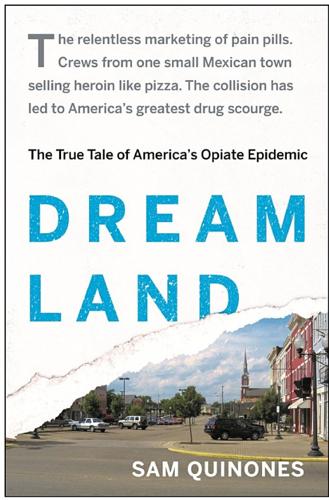
Dreamland: The True Tale of America's Opiate Epidemic
by
Sam Quinones
Published 20 Apr 2015
Never in thirty years of statistical mechanics had Orman Hall heard of a correlation that close to 1.0, which was almost as if the charts were saying that dispensing prescription painkillers was the same thing as people dying. Gay couldn’t believe it either. He ran the DOH numbers again. Each time, 0.979 appeared on his computer screen. Every statistician knows correlation does not mean causation. But to Gay the correlations did mean that Ohio could all but predict one overdose death for roughly every two months’ worth of prescription opiates dispensed. A Pro Wrestler’s Legacy Seattle, Washington In 2007, Alex Cahana opened the door to what had been John Bonica’s Center for Pain Relief at the University of Washington and found a cobwebbed relic.
…
One study estimated the country would need fifty-two thousand more primary care docs by 2025. A commentary by four doctors and researchers in the American Journal of Public Health in September 2014 insisted that “It is difficult to believe that the parallel rise in prescriptions and associated harms is mere correlation without causation. [Also] it is difficult to believe that the problem is solely attributable to patients with already existing substance use disorders.” They went on, “Appropriate medical use of prescription opioidscan, in some unknown proportion of cases, initiate a progression toward misuse and ultimately addiction . . .
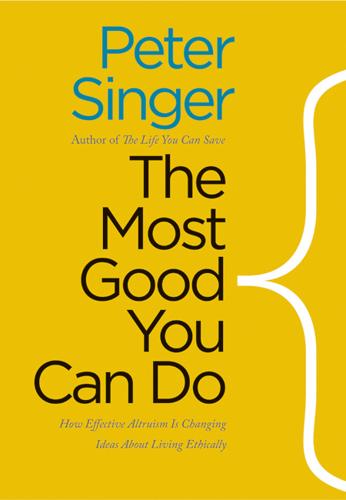
The Most Good You Can Do: How Effective Altruism Is Changing Ideas About Living Ethically
by
Peter Singer
Published 1 Jan 2015
In 122 of the 136 countries there was a positive correlation between having donated to charity in the past month and being at a higher level of happiness. The difference in the level of reported happiness between those who answered yes to the question about donating to charity and those who answered no was equivalent to the difference made by a doubling of income.9 The survey shows a correlation, not causation, and it seems that the causation can run both ways because people who are happy are more likely to give to help others.10 This observation led Aknin, Dunn, and Norton to ask whether recalling an act of spending to help others leads to an increase in happiness and whether this increase in turn makes people more likely to spend on others in the near future.

Alive
by
Gabriel Weston
Published 15 Aug 2025
Nine tenths of the research ever published on the gut has blossomed in the past twenty years and is revolutionising the way we think, not only about normal physiology, but diseases such as anxiety and depression, schizophrenia, autism, multiple sclerosis and irritable bowel syndrome. Yes – extrapolating from animal models should be done with caution. Sure – where the gut-brain axis is concerned – there’s a long way to go before we can confidently make the leap from correlation to causation. But I, for one, need no more persuading. At the start of university, I move into a flat with three other students. The guy who owns the place is a Scot who doesn’t believe in central heating. There are other ways to keep warm, he says, like eating meat to raise the core temperature, or growing a beard.
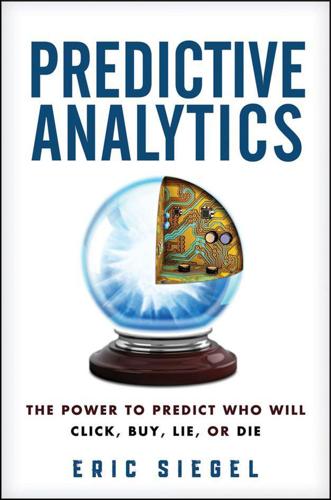
Predictive Analytics: The Power to Predict Who Will Click, Buy, Lie, or Die
by
Eric Siegel
Published 19 Feb 2013
Public health offices in the UK Band members benefit from peer support and solo artists exhibit even riskier behaviour. Correlation Does Not Imply Causation Satisfaction came in the chain reaction. —From the song “Disco Inferno,” by The Trammps The preceding tables, packed with fun-filled facts, do not explain a single thing. Take note, the third column is headed “Suggested Explanation.” The left column’s discoveries are real, validated by data, but the reasons behind them are unknown. Every explanation put forth, each entry in the rightmost column, is pure conjecture with absolutely no hard facts to back it up. The dilemma is, as it is often said, correlation does not imply causation.5 The discovery of a predictive relationship between A and B does not mean one causes the other, not even indirectly.
…
Insights: The Factors behind Quitting Delivering Dynamite Don’t Quit While You’re Ahead Predicting Crime to Stop It Before It Happens The Data of Crime and the Crime of Data Machine Risk without Measure The Cyclicity of Prejudice Good Prediction, Bad Prediction The Source of Power Chapter 3: The Data Effect (data) The Data of Feelings and the Feelings of Data Predicting the Mood of Blog Posts The Anxiety Index Visualizing a Moody World Put Your Money Where Your Mouth Is Inspiration and Perspiration Sifting Through the Data Dump The Instrumentation of Everything We Do Batten Down the Hatches: T.M.I. The Big Bad Wolf The End of the Rainbow Prediction Juice Far Out, Bizarre, and Surprising Insights Correlation Does Not Imply Causation The Cause and Effect of Emotions A Picture Is Worth a Thousand Diamonds Validating Feelings and Feeling Validated Serendipity and Innovation Investment Advice from the Blogosphere Money Makes the World Go ‘Round Putting It All Together Chapter 4: The Machine That Learns (modeling) Boy Meets Bank Bank Faces Risk Prediction Battles Risk Risky Business The Learning Machine Building the Learning Machine Learning from Bad Experiences How Machine Learning Works Decision Trees Grow on You Computer, Program Thyself Learn Baby Learn Bigger Is Better Overlearning: Assuming Too Much The Conundrum of Induction The Art and Science of Machine Learning Feeling Validated: Test Data Carving Out a Work of Art Putting Decision Trees to Work for Chase Money Grows on Trees The Recession—Why Microscopes Can’t Detect Asteroid Collisions After Math Chapter 5: The Ensemble Effect (ensembles) Casual Rocket Scientists Dark Horses Mindsourced: Wealth in Diversity Crowdsourcing Gone Wild Your Adversary Is Your Amigo United Nations Meta-Learning A Big Fish at the Big Finish Collective Intelligence The Wisdom of Crowds . . . of Models A Bag of Models Ensemble Models in Action The Generalization Paradox: More Is Less The Sky’s the Limit Chapter 6: Watson and the Jeopardy!

Human + Machine: Reimagining Work in the Age of AI
by
Paul R. Daugherty
and
H. James Wilson
Published 15 Jan 2018
“It was the first time that I know of that machines discovered new medical knowledge,” says Hill. “Straight from the data. There was no human involved in this discovery.”7 GNS Healthcare is showing that it’s possible, when AI is injected into the hypothesis phase of the scientific method, to find previously hidden correlations and causations. Moreover, use of the technology can result in dramatic cost savings. In one recent success, GNS was able to reverse-engineer—without using a hypothesis or preexisting assumptions—PCSK9, a class of drug that reduces bad cholesterol in the bloodstream. It took seventy years to discover PCSK9 and tens of billions of dollars over decades.

Logically Fallacious: The Ultimate Collection of Over 300 Logical Fallacies (Academic Edition)
by
Bo Bennett
Published 29 May 2017
Tip: Pick up an introductory book to quantum physics, it is not only a fascinating subject, but you will be well prepared to ask the right questions and expose this fallacy when used. Questionable Cause cum hoc ergo propter hoc (also known as: ignoring a common cause, neglecting a common cause, confusing correlation and causation, confusing cause and effect, false cause, third cause, juxtaposition [form of], reversing causality/wrong direction [form of]) Description: Concluding that one thing caused another, simply because they are regularly associated. Logical Form: A is regularly associated with B, therefore, A causes B.
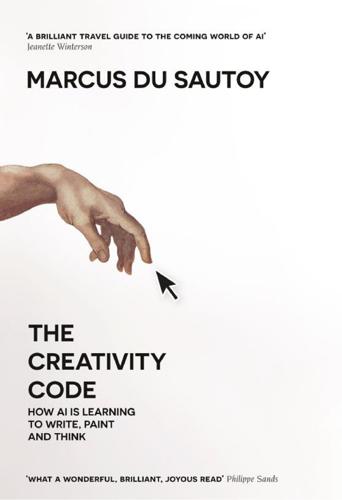
The Creativity Code: How AI Is Learning to Write, Paint and Think
by
Marcus Du Sautoy
Published 7 Mar 2019
The algorithm was programmed to calculate the effect on the score of moving left or right given the current state of the screen. The impact of a move could be several seconds down the line, so you have to calculate the delayed impact. This is quite tricky because it isn’t always clear what causes a certain effect. This is one of the shortcomings of machine learning: it sometimes picks up correlation and believes it to be causation. Animals suffer from the same problem. This is rather beautifully illustrated by an experiment that revealed pigeons to be superstitious. A number of pigeons were filmed in their cages and, at certain moments during the day, a food dispenser was moved into the cage. The door to the dispenser was on a delay so the pigeons, although excited by the arrival of the food dispenser, would have to wait to get the food.
…
E. 139 Beveridge, Andrew 56 Beyond the Fence (musical) 290–1 Białystok University 236 biases and blind spots, algorithmic 91–5 Birtwistle, Harrison 193 Blake, William 279 Blombos Cave, South Africa 103 Bloom (app) 229 BOB (artificial life form) 146–8 Boden, Margaret 9, 10, 11, 16, 39, 209, 222 Boeing 114 Bonaparte, Napoleon 158 bone carvings 104–5 booksellers 62–5 bordeebook 62–5 Borges, Jorge Luis: ‘The Library of Babel’ 241–4, 253, 304 Botnik 284–6 Boulanger, Nadia 186, 189, 205, 209 Boulez, Pierre 11, 223 brachistochrone 244 Braff, Zach 284 brain: biases and blind spots 91–2; consciousness and 274, 304–5; fractals and 124–5; mathematics and 155, 156, 160–1, 171, 174, 177, 178; musical composition and 187, 189, 193, 203, 205, 231; neural networks and 68–71, 68, 70; pattern recognition and 6, 20–1, 99–101, 155; stroke and 133–4; visual recognition and 76, 79, 143–4 Breakout (game) 26–8, 91, 92, 210 Brew, Jamie 284 Brin, Sergey 48–9, 51–2, 57 Bronowski, Jacob 104 Brown, Glenn 141 Bruner, Jerome 303 Buolamwini, Joy 94 Cage, John 106, 206 Calculus of Constructions (CoC) 173–4 see also Coq Cambridge Analytica 296 Cambridge University 18–19, 23–4, 43, 72, 81, 150, 225, 240, 278, 290 Carpenter, Loren 114, 115 Carré, Benoit 224 cars, driverless 6, 29–30, 79, 91 Cartesian geometry 110–11 Catmull, Ed 115 cave art, ancient 103–4, 105, 156, 230 Cawelti, John: Adventure, Mystery and Romance 252–3 Chang, Alex 23 chaos theory 124 Cheng, Ian 146–8 chess 16, 18–20, 21, 22–3, 29, 32–3, 34, 97, 151, 153, 162, 163, 246, 260–1, 304 child pornography 77 Chilvers, Peter 229 Chinese Room experiment 164, 273–5 Chomsky, Noam 260 Chopin, Frédéric 13, 197, 200, 202, 204, 206–7, 304 Christie’s 141 classemes 138 Classical era of music 10, 12–13, 190, 199, 207 Classification of Finite Simple Groups 18, 172, 175, 177, 244 Coelho, Paulo 302 Cohen, Harold 116–17, 118, 121 Coleridge, Samuel Taylor: ‘Kubla Khan’ 14 Colton, Simon 119, 120, 121–2, 291, 292, 293 Coltrane, John 223 Commodore Amiga 23 Congo (chimp) 107 consciousness 107, 231, 232, 270, 274, 283, 300, 302–6 Continuator, The 218–21, 286 Conway, John 18–19 Cope, David 195–203, 207, 208, 210, 304 copyright ownership 108–9 Coq 173–6, 177, 184 Coquand, Thierry 173 correlation as causation, mistaking 92–4 Corresponding Society of Musical Sciences 193, 208 Coulom, Rémi 31 Crazy Stone 31 Creative Adversarial Networks 140–1 creativity: algorithmic and rule-based, as 5; animals and 107–9; art, definition of and 103–7; audiences and 303; coder to code, shifting from 7, 102–3, 116–22, 132–42, 219–20; combinational 10–11, 16, 181, 222, 299; commercial incentive and 131–2; competition and 132–42; consciousness and 301–2, 303–5; death and 304; definition of 3–5, 9–13, 301–2; drugs and 181–2; exploratory 9–10, 40, 181, 219, 299; failure as component part of 17; feedback from others and 132; flow and 221–4, 222; Go and see Go; human lives as act of 303–4; Lovelace Test and see Lovelace Test; mathematics and 3, 150–1, 153, 161, 167–8, 170, 181–2, 185, 245–8, 253, 279–80; mechanical nature of 298; music and see music; new/novelty and 3, 4, 7–8, 12, 13, 16, 17, 40–3, 102–3, 109, 138–41, 140, 167–8, 238–9, 291–3, 299, 301; origins of our obsession with 301; political role of 303; randomness and 117–18; romanticising 14–15; self-reflection and 300; storytelling and see storytelling; surprise and 4, 8, 40, 65, 66, 102–3, 148, 168, 202, 241, 248–9; teaching 13–17; three types of 9–13; transformational 11–13, 17, 39, 41, 181, 209, 299; value and 4, 8, 12, 16, 17, 40–1, 102–3, 167–8, 238–9, 301, 304 Csikszentmihalyi, Mihaly 221 Cubism 11, 138, 139 Cybernetic Poet 280–2 Cybernetic Serendipity (ICA exhibition, 1968) 118–19 Dahl, Roald: Tales of the Unexpected 276–7; ‘The Great Automatic Grammatizator’ 276–7, 297 dating/matching 57–61, 58, 59, 60 da Vinci, Leonardo 106, 118, 128; Treatise on Painting 117 Davis, Miles: Kind of Blue 214 Debussy, Claude 1 DeepBach 210–12, 232 DeepBlue 29, 214, 260–1 DeepMind 25–43, 65, 95, 97, 98, 131, 132, 151, 210, 233–9, 241, 266 Deep Watch 224 Delft University of Technology 127 democracy 165–6 Dennett, Daniel 147 Descartes, René 12, 110–11 Disney 289–90 Duchamp, Marcel 106 du Sautoy, Marcus: attempts to fake a Jackson Pollock 123–5; composes music 186–8; The Music of the Primes 285–6; uses AI to write section of this book 297 Dylan, Bob 223 EEG 125 Egyptians, Ancient 157, 165 eigenvectors of matrices 53 Eisen, Michael 62, 64 Elgammal, Ahmed 132–3, 134, 135, 139, 140, 141 Eliot, George 302 Eliot, T.
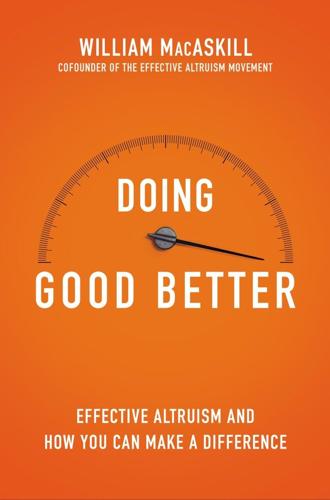
Doing Good Better: How Effective Altruism Can Help You Make a Difference
by
William MacAskill
Published 27 Jul 2015
In 1950, life expectancy in sub-Saharan Africa was just 36.7 years. Now it’s 56 years, a gain of almost 50 percent. The picture that Dambisa Moyo paints is inaccurate. In reality, a tiny amount of aid has been spent, and there have been dramatic increases in the welfare of the world’s poorest people. Of course, correlation is not causation. Merely showing that the people’s welfare has improved at the same time the West has been offering aid does not prove that aid caused the improvement. It could be that aid is entirely incidental, or even harmful, holding back even greater progress that would have happened anyway or otherwise.
…
Robustness of evidence is very important for the simple reason that many programs don’t work, and it’s hard to distinguish the programs that don’t work from the programs that do. If we’d assessed Scared Straight by looking just at before-and-after delinquency rates for individuals who went through the program, we would have concluded it was a great program. Only after looking at randomized controlled trials could we tell that correlation did not indicate causation in this case and that Scared Straight programs were actually doing more harm than good. One of the most damning examples of low-quality evidence concerns microcredit (that is, lending small amounts of money to the very poor, a form of microfinance most famously associated with Muhammad Yunus and the Grameen Bank).

Half the Sky: Turning Oppression Into Opportunity for Women Worldwide
by
Nicholas D. Kristof
and
Sheryl Wudunn
Published 7 Sep 2008
“The evidence, in most cases, suffers from obvious biases: educated girls come from richer families and marry richer, more educated, more progressive husbands,” notes Esther Duflo of MIT, one of the most careful scholars of gender and development. “As such, it is, in general, difficult to account for all these factors, and few of the studies have tried to do so.” Correlation, in short, is not causation.* Advocates also undermine the trustworthiness of their cause by cherry-picking evidence. While we argue that schooling girls does stimulate economic growth and foster stability, for example, it is also true that one of the most educated parts of rural India is the state of Kerala, which has stagnated economically.
…
Speaking of role models and the power of education, Camfed Zimbabwe has a new and dynamic executive director. She’s a young woman who knows something about overcoming long odds and the impact a few dollars in tuition assistance can make in a girl’s life. It’s Angeline. * Larry Summers offers an example to emphasize the distinction between correlation and causation. He notes that there is an almost perfect correlation between literacy and ownership of dictionaries. But handing out more dictionaries will not raise literacy. CHAPTER ELEVEN Microcredit: The Financial Revolution It is impossible to realize our goals while discriminating against half the human race.
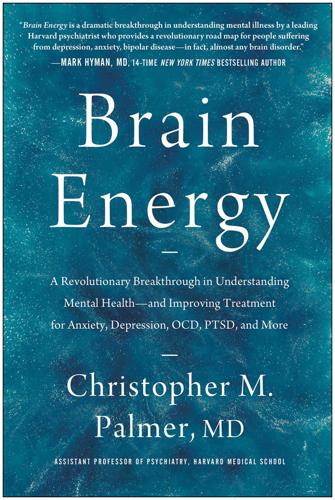
Brain Energy: A Revolutionary Breakthrough in Understanding Mental Health--And Improving Treatment for Anxiety, Depression, OCD, PTSD, and More
by
Christopher M. Palmer Md
Published 15 Nov 2022
If they found that obese people had higher rates of heart attacks than thin people, they would conclude that there was a correlation between obesity and suffering a heart attack. Notice that I said “correlation.” Based on this study alone, they can’t say that being obese causes heart attacks. This is one of the tricky things about correlational research. People often misinterpret the findings and make assumptions that aren’t warranted. Correlation does not equal causation. Almost everyone has heard this. It means that a correlation does not necessarily tell us anything about cause and effect. Unfortunately, while most people are aware of the principle, they don’t apply it when interpreting research. If the study in the example I just discussed were released today, the headlines would likely read “Obesity Proven to Cause Heart Attacks,” further perpetuating the incorrect interpretation of studies like this.
…
One study of 17,000 people that looked specifically at mortality data estimated that having six or more ACEs takes twenty years off a person’s life compared to those with no ACEs.3 These studies have led many people to conclude that ACEs cause both physical and mental illnesses. Some experts have gone so far as to suggest that ACEs, in particular childhood trauma and abuse, are likely the common pathway to all mental disorders. But let me remind you, these are correlations. They don’t prove causation. More importantly, not everyone who has a horrible childhood develops a mental disorder, and many people who end up with mental disorders have perfectly fine childhoods. Nonetheless, if these adverse experiences are playing some role in these different disorders, how does that work?
…
If people follow the “forty-five minutes three to five times a week” advice and don’t see results, they give up in frustration and disappointment. Don’t worry if you’re an exercise advocate—I’m still going to recommend exercise in the end. The first thing to highlight was that the study with 1.2 million people was a correlational study. As you know by now, correlation doesn’t equal causation. It’s possible that people who exercise already have good mental and metabolic health, and that allows them to exercise. This would be reverse causation. To illustrate how complicated this can all be, I’ll tell you about another study. This one followed 1,700 women at midlife for twenty years to see if exercise prevents cognitive decline.2 Most people would assume it does.
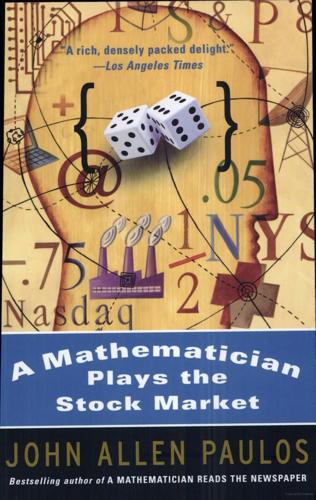
A Mathematician Plays the Stock Market
by
John Allen Paulos
Published 1 Jan 2003
To find the volatility of a portfolio in general, we need what is called the “covariance” (closely related to the correlation coefficient) between any pair of stocks X and Y in the portfolio. The covariance between two stocks is roughly the degree to which they vary together—the degree, that is, to which a change in one is proportional to a change in the other. Note that unlike many other contexts in which the distinction between covariance (or, more familiarly, correlation) and causation is underlined, the market generally doesn’t care much about it. If an increase in the price of ice cream stocks is correlated to an increase in the price of lawn mower stocks, few ask whether the association is causal or not. The aim is to use the association, not understand it—to be right about the market, not necessarily to be right for the right reasons.
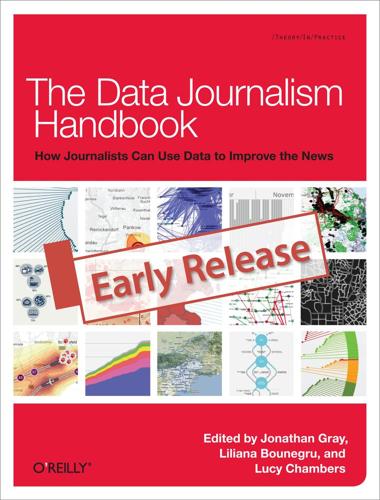
The Data Journalism Handbook
by
Jonathan Gray
,
Lucy Chambers
and
Liliana Bounegru
Published 9 May 2012
Or you can divide the data subjects into groups: Analysis by categories “Councils run by the Purple Party spend 50% more on paper clips than those controlled by the Yellow Party.” Or you can relate factors numerically: Association “Councils run by politicians who have received donations from stationery companies spend more on paper clips, with spending increasing on average by £100 for each pound donated.” But, of course, always remember that correlation and causation are not the same thing. So if you’re investigating paper clip spending, are you also getting the following figures? Total spending to provide context? Geographical/historical/other breakdowns to provide comparative data? The additional data you need to ensure comparisons are fair, such as population size?
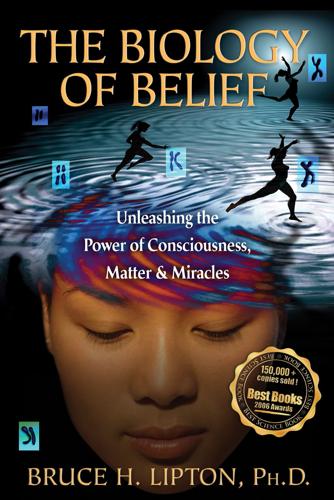
The Biology of Belief: Unleashing the Power of Consciousness, Matter & Miracles
by
Bruce H. Lipton
Published 1 Jan 2005
Read those articles closely and you’ll see that behind the breathless headline is a more sober truth. Scientists have linked lots of genes to lots of different diseases and traits, but scientists have rarely found that one gene causes a trait or a disease. The confusion occurs when the media repeatedly distort the meaning of two words: correlation and causation. It’s one thing to be linked to a disease; it’s quite another to cause a disease, which implies a directing, controlling action. If I show you my keys and say that a particular key “controls” my car, you at first might think that makes sense because you know you need that key to turn on the ignition.

Don't Trust Your Gut: Using Data to Get What You Really Want in LIfe
by
Seth Stephens-Davidowitz
Published 9 May 2022
He believes it caused him to have low self-esteem, an inability to express himself, and resentment toward his mother. One challenge with learning how parents influence their kids is that one anecdote can never tell us all that much. Should we learn from the Emanuel story or the Fernsby story? Another challenge with learning about parental influence: correlation doesn’t imply causation. For much of the twentieth century, scholars searched for correlations in reasonably sized datasets between parenting strategies and child outcomes. They found many. Some of these correlations were summarized in the excellent book The Nurture Assumption, by Judith Rich Harris. For example, kids whose parents read a lot to them tend to have great educational accomplishments.
…
It was an extraordinary dataset in the hands of an extraordinary mind. What can you do with this data on the entire universe of taxpayers to uncover neighborhood effects? Now, the naïve thing you could do is just bluntly compare the adult incomes of people who grew up in different places. But this would run into the problem already discussed: correlation does not imply causation. This is where Chetty’s cleverness—or, in the judgment of the MacArthur Foundation, genius—came into play. The team’s trick was to focus on a particular, very interesting subset of Americans: siblings who moved as kids. Because the dataset was so large—remember, they were looking at every American taxpayer—they had a substantial number of such people to study.
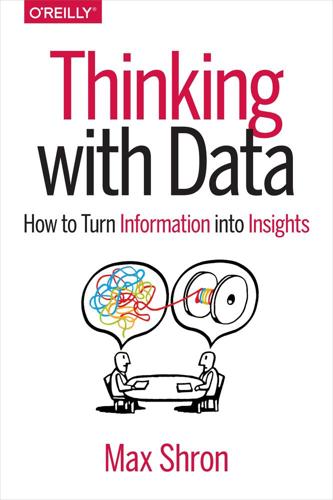
Thinking with Data
by
Max Shron
Published 15 Aug 2014
Physical examples provide us with our intuition for what cause and effect mean. They are the paragons of the phenomenon of causation, but unfortunately, outside of some particularly intensive engineering or scientific disciplines, they rarely arise in the practical business of data work. No matter how many caveats we may put into a report about correlation not implying causation, people will interpret arguments causally. Human beings make stories that will help them decide how to act. It is a sensible instinct. People want analysis with causal power. We can ignore their needs and hide behind the difficulty of causal analysis—or we can come to terms with the fact that causal analysis is necessary, and then figure out how to do it properly and when it truly does not apply.
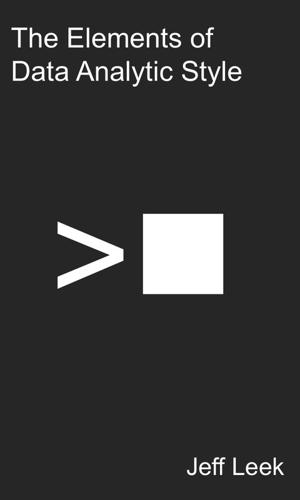
The Elements of Data Analytic Style
by
Jeff Leek
Published 1 Mar 2015
The goal is to not only understand that there is an effect, but how that effect operates. An example of a mechanistic analysis is analyzing data on how wing design changes air flow over a wing, leading to decreased drag. Outside of engineering, mechanistic data analysis is extremely challenging and rarely undertaken. 2.8 Common mistakes 2.8.1 Correlation does not imply causation Interpreting an inferential analysis as causal. Most data analyses involve inference or prediction. Unless a randomized study is performed, it is difficult to infer why there is a relationship between two variables. Some great examples of correlations that can be calculated but are clearly not causally related appear at http://tylervigen.com/ (Figure 2.2).
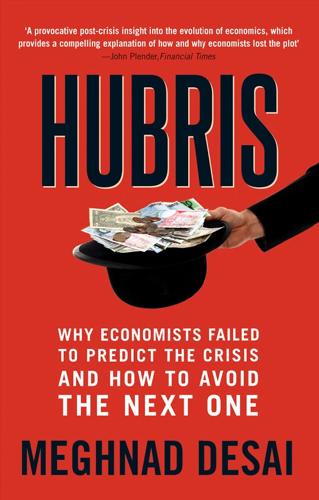
Hubris: Why Economists Failed to Predict the Crisis and How to Avoid the Next One
by
Meghnad Desai
Published 15 Feb 2015
(i) Clayton Act (i) Clinton Administration (i) closed economy (i), (ii), (iii), (iv), (v), (vi) Cobb, Charles (i) Cobb-Douglas Production Function (i), (ii) coincidence, vs.causation (i) Cold War (i) collateralized debt obligations (CDO) (i) colonization (i) Combinations (trade unions), as harmful (i) Committee on the Bank of England Charter (i) commodity markets price rises (i) regulation (i) Common Market (i) communications, advances in (i), (ii) companies, collapse of (i) comparative advantage (i) compatibility microeconomics/macroeconomics (i), (ii), (iii) unique static equilibrium/moving data (i) competition and efficiency (i) imperfect (i) theory of (Marshall) (i) computer technology development of (i), (ii); see also technological innovations stock markets (i) confidence, rise and fall (i) conflicting interests (i), (ii) Connally, John (i) consols (i) consumer credit (i) consumption function (i), (ii) contagion (i), (ii) control of money supply (i) convertibility (i) cooperation (i) correlation/coincidence, vs. causation (i) corruption (i) Countrywide Financial (i) Cournot, Antoine Augustin (i) Cowles, Alfred (i) Cowles Foundation (i) creative destruction (i) credit business dependence (i) cheap (i) as driver of investment (i) credit cards (i) credit default swaps (CDS) (i) crises beginnings of (i) developing countries (i) Juglar’s theory (i) Mexican (i) proliferation (i) as recurrent (i), (ii) as regular occurrences (i) ten year pattern (i) unpredictability (i) crisis of 1825 (i) crisis of profitability (i) Crosland, Anthony (i) The Future of Socialism (i) currency, convertibility (i) depreciation (i) pegging (i), (ii) cycles (i) banking system as root (i) combinations of (i) Goodwin (i), (ii) Juglar’s study (i) Keynes on (i) long (i) loss of interest in (i) Marx’s theories (i), (ii) measuring (i) origins (i) random events (i) reproduction by Keynesian models (i) rocking horse analogy (i) short (i) Wicksell’s theory (i) see also Frisch; Kondratieff cycles debit cards (i) Debreu, Gerard (i), (ii) debt crises (i) easy availability (i) levels (i) see also government debt debt-fueled boom (i) debts brokers (i) farmers’ (i) post-World War II (i) purchase of (i) decisions, patterns (i) deficits, endemic (i) deflation (i) deindustrialization (i), (ii) Deism (i) demand, factors in (i) demographics (i) demutualization (i) depreciation (i) advocacy of (i) Ricardo’s theory (i) value of goods (i) deregulation, banking (i) derivatives (i), (ii) Deserted Village, The (Oliver Goldsmith) (i) deutschmark (i) developing countries, Wicksellian boom (i) disequilibrium dynamic (i), (ii), (iii), (iv) stock (i) system, capitalism as (i) tradition (i) displacement effect, technological innovations (i) division of knowledge (i) division of labor (i), (ii) dollar purchasing power (i) as reserve currency (i), (ii) dollar exchange standard (i), (ii) dot.com boom (i) double deficits (i) Douglas, Paul (i), (ii) Dow Jones (i) Duménil, Gerard (i) durable goods (i) Dutch Disease (i) dynamic stochastic general equilibrium (DSGE) models (i), (ii) econometric modeling (i), (ii) Econometric Society (i), (ii) econometrics (i), (ii) economic activity, shift (i) economic analysis, applicability (i) economic cycles (i) Marx/Engels (i) see also Kondratieff cycles economic data, proliferation (i) economic growth, problems of (i) economic policy, activism (i) economic sectors, conflicting interests (i), (ii) economic slump, post-World War I (i) economic stagnation (i) economic theory (i) and individual lives (i) economic trajectories (i) economic vocabulary (i), (ii), (iii) economics background to (i) celebrated (i) changing scope of (i) as dismal science (i) professionalization (i) teaching of (i) “Economics and Knowledge” (Hayek) (i) economies, interconnections (i) economies of scale (i) economists, research methods (i) economy changing nature of (i) equilibrium/disequilibrium (i) visions of (i) efficiency, use of term (i) efficient market hypothesis (EMH) (i), (ii), (iii) Eisenhower, Dwight D.
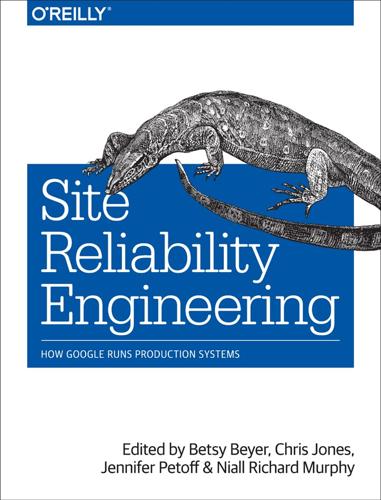
Site Reliability Engineering: How Google Runs Production Systems
by
Betsy Beyer
,
Chris Jones
,
Jennifer Petoff
and
Niall Richard Murphy
Published 15 Apr 2016
The third trap is a set of logical fallacies that can be avoided by remembering that not all failures are equally probable—as doctors are taught, “when you hear hoofbeats, think of horses not zebras.”4 Also remember that, all things being equal, we should prefer simpler explanations.5 Finally, we should remember that correlation is not causation:6 some correlated events, say packet loss within a cluster and failed hard drives in the cluster, share common causes—in this case, a power outage, though network failure clearly doesn’t cause the hard drive failures nor vice versa. Even worse, as systems grow in size and complexity and as more metrics are monitored, it’s inevitable that there will be events that happen to correlate well with other events, purely by coincidence.7 Understanding failures in our reasoning process is the first step to avoiding them and becoming more effective in solving problems.
…
Diskerase example, Recommendations focus on reliability, Reliability Is the Fundamental Feature Google's approach to, The Value for Google SRE hierarchy of automation classes, A Hierarchy of Automation Classes recommendations for enacting, Recommendations specialized application of, The Inclination to Specialize use cases for, The Use Cases for Automation-A Hierarchy of Automation Classes automation tools, Testing Scalable Tools autonomous systems, The Evolution of Automation at Google Auxon case study, Auxon Case Study: Project Background and Problem Space-Our Solution: Intent-Based Capacity Planning, Introduction to Auxon-Introduction to Auxon availability, Indicators, Choosing a Strategy for Superior Data Integrity(see also service availability) availability table, Availability Table B B4 network, Hardware backend servers, Our Software Infrastructure, Load Balancing in the Datacenter backends, fake, Production Probes backups (see data integrity) Bandwidth Enforcer (BwE), Networking barrier tools, Testing Scalable Tools, Testing Disaster, Distributed Coordination and Locking Services batch processing pipelines, First Layer: Soft Deletion batching, Eliminate Batch Load, Batching, Drawbacks of Periodic Pipelines in Distributed Environments Bazel, Building best practicescapacity planning, Capacity Planning for change management, Change Management error budgets, Error Budgets failures, Fail Sanely feedback, Introducing a Postmortem Culture for incident management, In Summary monitoring, Monitoring overloads and failure, Overloads and Failure postmortems, Google’s Postmortem Philosophy-Collaborate and Share Knowledge, Postmortems reward systems, Introducing a Postmortem Culture role of release engineers in, The Role of a Release Engineer rollouts, Progressive Rollouts service level objectives, Define SLOs Like a User team building, SRE Teams bibliography, Bibliography Big Data, Origin of the Pipeline Design Pattern Bigtable, Storage, Target level of availability, Bigtable SRE: A Tale of Over-Alerting bimodal latency, Bimodal latency black-box monitoring, Definitions, Black-Box Versus White-Box, Black-Box Monitoring blameless cultures, Google’s Postmortem Philosophy Blaze build tool, Building Blobstore, Storage, Choosing a Strategy for Superior Data Integrity Borg, Hardware-Managing Machines, Borg: Birth of the Warehouse-Scale Computer-Borg: Birth of the Warehouse-Scale Computer, Drawbacks of Periodic Pipelines in Distributed Environments Borg Naming Service (BNS), Managing Machines Borgmon, The Rise of Borgmon-Ten Years On…(see also time-series monitoring) alerting, Monitoring and Alerting, Alerting configuration, Maintaining the Configuration rate() function, Rule Evaluation rules, Rule Evaluation-Rule Evaluation sharding, Sharding the Monitoring Topology timeseries arena, Storage in the Time-Series Arena vectors, Labels and Vectors-Labels and Vectors break-glass mechanisms, Expect Testing Fail build environments, Creating a Test and Build Environment business continuity, Ensuring Business Continuity Byzantine failures, How Distributed Consensus Works, Number of Replicas C campuses, Hardware canarying, Motivation for Error Budgets, What we learned, Canary test, Gradual and Staged Rollouts CAP theorem, Managing Critical State: Distributed Consensus for Reliability CAPA (corrective and preventative action), Postmortem Culture capacity planningapproaches to, Practices best practices for, Capacity Planning Diskerase example, Recommendations distributed consensus systems and, Capacity and Load Balancing drawbacks of "queries per second", The Pitfalls of “Queries per Second” drawbacks of traditional plans, Brittle by nature further reading on, Practices intent-based (see intent-based capacity planning) mandatory steps for, Demand Forecasting and Capacity Planning preventing server overload with, Preventing Server Overload product launches and, Capacity Planning traditional approach to, Traditional Capacity Planning cascading failuresaddressing, Immediate Steps to Address Cascading Failures-Eliminate Bad Traffic causes of, Causes of Cascading Failures and Designing to Avoid Them-Service Unavailability defined, Addressing Cascading Failures, Capacity and Load Balancing factors triggering, Triggering Conditions for Cascading Failures overview of, Closing Remarks preventing server overload, Preventing Server Overload-Always Go Downward in the Stack testing for, Testing for Cascading Failures-Test Noncritical Backends(see also overload handling) change management, Change Management(see also automation) change-induced emergencies, Change-Induced Emergency-What we learned changelists (CLs), Our Development Environment Chaos Monkey, Testing Disaster checkpoint state, Testing Disaster cherry picking tactic, Hermetic Builds Chubby lock service, Lock Service, System Architecture Patterns for Distributed Consensusplanned outage, Objectives, SLOs Set Expectations client tasks, Load Balancing in the Datacenter client-side throttling, Client-Side Throttling clients, Our Software Infrastructure clock drift, Managing Critical State: Distributed Consensus for Reliability Clos network fabric, Hardware cloud environmentdata integrity strategies, Choosing a Strategy for Superior Data Integrity, Challenges faced by cloud developers definition of data integrity in, Data Integrity’s Strict Requirements evolution of applications in, Choosing a Strategy for Superior Data Integrity technical challenges of, Requirements of the Cloud Environment in Perspective clustersapplying automation to turnups, Soothing the Pain: Applying Automation to Cluster Turnups-Service-Oriented Cluster-Turnup cluster management solution, Drawbacks of Periodic Pipelines in Distributed Environments defined, Hardware code samples, Using Code Examples cognitive flow state, Cognitive Flow State cold caching, Slow Startup and Cold Caching colocation facilities (colos), Recommendations Colossus, Storage command posts, A Recognized Command Post communication and collaborationblameless postmortems, Collaborate and Share Knowledge case studies, Case Study of Collaboration in SRE: Viceroy-Case Study: Migrating DFP to F1 importance of, Conclusion with Outalator, Reporting and communication outside SRE team, Collaboration Outside SRE position of SRE in Google, Communication and Collaboration in SRE production meetings (see production meetings) within SRE team, Collaboration within SRE company-wide resilience testing, Practices compensation structure, Compensation computational optimization, Our Solution: Intent-Based Capacity Planning configuration management, Configuration Management, Change-Induced Emergency, Integration, Process Updates configuration tests, Configuration test consensus algorithmsEgalitarian Paxos, Stable Leaders Fast Paxos, Reasoning About Performance: Fast Paxos, The Use of Paxos improving performance of, Distributed Consensus Performance Multi-Paxos, Disk Access Paxos, How Distributed Consensus Works, Disk Access Raft, Multi-Paxos: Detailed Message Flow, Stable Leaders Zab, Stable Leaders(see also distributed consensus systems) consistencyeventual, Managing Critical State: Distributed Consensus for Reliability through automation, Consistency consistent hashing, Load Balancing at the Virtual IP Address constraints, Laborious and imprecise Consul, System Architecture Patterns for Distributed Consensus consumer services, identifying risk tolerance of, Identifying the Risk Tolerance of Consumer Services-Other service metrics continuous build and deploymentBlaze build tool, Building branching, Branching build targets, Building configuration management, Configuration Management deployment, Deployment packaging, Packaging Rapid release system, Continuous Build and Deployment, Rapid testing, Testing typical release process, Rapid contributors, Acknowledgments-Acknowledgments coroutines, Origin of the Pipeline Design Pattern corporate network security, Practices correctness guarantees, Workflow Correctness Guarantees correlation vs. causation, Theory costsavailability targets and, Cost, Cost direct, The Sysadmin Approach to Service Management of failing to embrace risk, Managing Risk indirect, The Sysadmin Approach to Service Management of sysadmin management approach, The Sysadmin Approach to Service Management CPU consumption, The Pitfalls of “Queries per Second”, CPU, Overload Behavior and Load Tests crash-fail vs. crash-recover algorithms, How Distributed Consensus Works cronat large scale, Running Large Cron building at Google, Building Cron at Google-Running Large Cron idempotency, Cron Jobs and Idempotency large-scale deployment of, Cron at Large Scale leader and followers, The leader overview of, Summary Paxos algorithm and, The Use of Paxos-Storing the State purpose of, Distributed Periodic Scheduling with Cron reliability applications of, Reliability Perspective resolving partial failures, Resolving partial failures storing state, Storing the State tracking cron job state, Tracking the State of Cron Jobs uses for, Cron cross-industry lessonsApollo 8, Preface comparative questions presented, Lessons Learned from Other Industries decision-making skills, Structured and Rational Decision Making-Structured and Rational Decision Making Google's application of, Conclusions industry leaders contributing, Meet Our Industry Veterans key themes addressed, Lessons Learned from Other Industries postmortem culture, Postmortem Culture-Postmortem Culture preparedness and disaster testing, Preparedness and Disaster Testing-Defense in Depth and Breadth repetitive work/operational overhead, Automating Away Repetitive Work and Operational Overhead current state, exposing, Examine D D storage layer, Storage dashboardsbenefits of, Why Monitor?
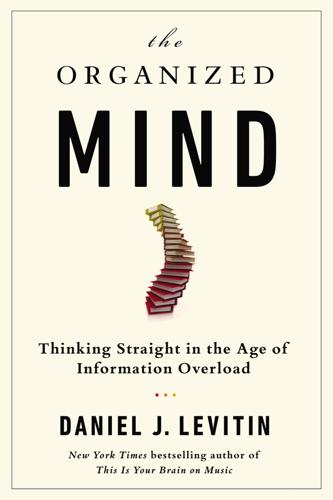
The Organized Mind: Thinking Straight in the Age of Information Overload
by
Daniel J. Levitin
Published 18 Aug 2014
This may be the case, but it’s also possible that the kinds of people who go to Harvard in the first place come from wealthy and supportive families and therefore might have been likely to obtain higher-paying jobs regardless of where they went to college. Childhood socioeconomic status has been shown to be a major quantity correlated with adult salaries. Correlation is not causation. Proving causation requires carefully controlled scientific experiments. Then there are truly spurious correlations—odd pairings of facts that have no relationship to each other and no third factor x linking them. For example, we could plot the relationship between the global average temperature over the past four hundred years and the number of pirates in the world and conclude that the drop in the number of pirates is caused by global warming.
…
The Gricean maxim of relevance implies that no one would construct such a graph (below) unless they felt these two were related, but this is where critical thinking comes in. The graph shows that they are correlated, but not that one causes the other. You could spin an ad hoc theory—pirates can’t stand heat, and so, as the oceans became warmer, they sought other employment. Examples such as this demonstrate the folly of failing to separate correlation from causation. It is easy to confuse cause and effect when encountering correlations. There is often that third factor x that ties together correlative observations. In the case of the decline in pirates being related to the increase in global warming, factor x might plausibly be claimed to be industrialization.
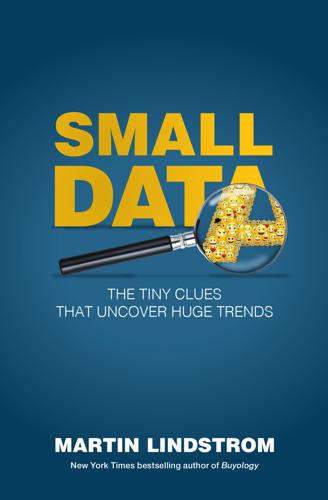
Small Data: The Tiny Clues That Uncover Huge Trends
by
Martin Lindstrom
Published 23 Feb 2016
A source who works at Google once confessed to me that despite the almost 3 billion humans who are online,4 and the 70 percent of online shoppers who go onto Facebook daily,5 and the 300 hours of videos on YouTube (which is owned by Google) uploaded every minute,6 and the fact that 90 percent of all the world’s data has been generated over the last two years.7 Google ultimately has only limited information about consumers. Yes, search engines can detect unusual correlations (as opposed to causations). With 70 percent accuracy, my source tells me, software can assess how people feel based on the way they type, and the number of typos they make. With 79 percent precision, software can determine a user’s credit rating based on the degree to which they write in ALL CAPS. Yet even with all these stats, Google has come to realize it knows almost nothing about humans and what really drives us, and it is now bringing in consultants to do what small data researchers have been doing for decades.

Capitalism Without Capital: The Rise of the Intangible Economy
by
Jonathan Haskel
and
Stian Westlake
Published 7 Nov 2017
The fact that there is a long-term increase in price suggests that, while good management practices improve firm performance (hence the long-term share price increase), equity markets undervalue the benefits of this type of intangible (since equity analysts should be able to recognize good management at the time the award is given, rather than waiting for its results to show up on the income statement). But, of course, correlation is not causation: just because a publicly listed firm invests less in R&D, training, or other intangibles does not mean it is being led astray by equity markets. Managers might choose to invest less because they know the investments available to them are unlikely to be profitable or, more narrowly, that they might be profitable for someone, but not necessarily for them.
…
Research by one of the authors together with Alan Hughes, Peter Goodridge, and Gavin Wallis suggests that extra investment by the UK government in research in universities increases national productivity by 20 percent (Haskel et al. 2015). (There were substantial swings in government support for universities over the 1990s and 2000s, and those ups and downs are well correlated with productivity ups and downs, with around a three-year lag.) As we have pointed out, correlation does not prove causation. For example, many universities are in economically fortunate areas. But does this mean having a good university raises local economic fortunes? Or do rich areas open universities? One needs a strategy to identify the causal link, if there is one, from university spending to local prosperity.

SEDATED: How Modern Capitalism Created Our Mental Health Crisis
by
James. Davies
Published 15 Nov 2021
While Whitaker agreed that this was possible to some extent, the data also showed that disability payments for mental disorders were rising uniformly across many different countries (Sweden, Denmark, Iceland, the US and the UK), despite their having dissimilar welfare/health systems and policies, with varying degrees of welfare ease of access and generosity. ‘What united all these different welfare systems,’ Whitaker pointed out, ‘were uniform rising psychiatric prescriptions, irrespective of the individual welfare policies.’ The final criticism that Whitaker commonly heard was the age-old ‘correlation is not causation’ – if prescriptions and disability simultaneously rise, this does not prove the former caused the latter. Perhaps increased recognition of mental illness caused both to rise. However, Whitaker emphasised that this interpretation doesn’t fit with the big picture. The correlation must be viewed in the context of other data that clearly show that the drugs lead to worsening long-term outcomes in the aggregate, and can transform milder ‘illnesses’ into more serious ones.
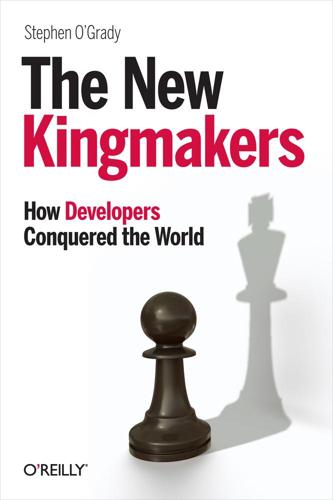
The New Kingmakers
by
Stephen O'Grady
Published 14 Mar 2013
Google understood that developers are more likely to build for themselves—what’s referred to in the industry as “scratching their own itch”—Google made sure that several thousand developers motivated enough to attend their conference had an Android device to use for themselves. The statistics axiom that correlation does not prove causation certainly applies here, but it’s impossible not to notice the timing of that handset giveaway. On the day that Google sent all of those I/O attendees home happy, the number of Android devices being activated per day was likely in the low tens of thousands (Google hasn’t made this data available).
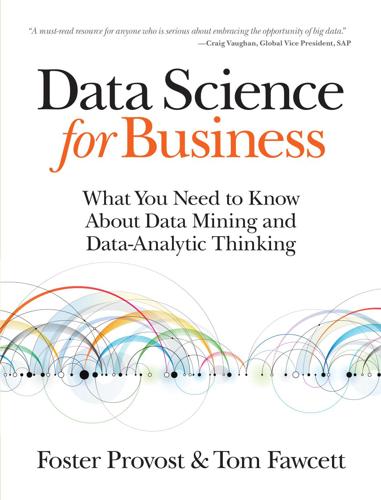
Data Science for Business: What You Need to Know About Data Mining and Data-Analytic Thinking
by
Foster Provost
and
Tom Fawcett
Published 30 Jun 2013
The contents of these New Briefs varied, but because of their very similar form they clustered together: BRIEF-Apple releases Safari 3.1 BRIEF-Apple introduces ilife 2009 BRIEF-Apple announces iPhone 2.0 software beta BRIEF-Apple to offer movies on iTunes same day as DVD release BRIEF-Apple says sold one million iPhone 3G's in first weekend As we can see, some of these clusters are interesting and thematically consistent while others are not. Some are just collections of superficially similar text. There is an old cliché in statistics: Correlation is not causation, meaning that just because two things co-occur doesn’t mean that one causes another. A similar caveat in clustering could be: Syntactic similarity is not semantic similarity. Just because two things—particularly text passages—have common surface characteristics doesn’t mean they’re necessarily related semantically.
…
Data-Driven Causal Explanation and a Viral Marketing Example One important topic that we have only touched on in this book (in Chapter 2 and Chapter 11) is causal explanation from data. Predictive modeling is extremely useful for many business problems. However, the sort of predictive modeling that we have discussed so far is based on correlations rather than on knowledge of causation. We often want to look more deeply into a phenomenon and ask what influences what. We may want to do this simply to understand our business better, or we may want to use data to improve decisions about how to intervene to cause a desired outcome. Consider a detailed example.

Terms of Service: Social Media and the Price of Constant Connection
by
Jacob Silverman
Published 17 Mar 2015
Both are in the data collection and targeting business, and Silicon Valley collects heaps of data which the NSA would love to have.* Silicon Valley is merely targeting consumers with ads and prompts and nudges that might get them to click or to buy something. They are bound together by common interests, philosophies, and methods. One of the main problems with Big Data is that it produces correlations but not causations. We learn that two things seem to be related—for example, that people with a specific set of personal characteristics are prone to depression or bad driving—but we don’t learn why. This is ironic given that Big Data is the ultimate fact-producing discipline: it promises answers, actionable ones.
…
G., 21 banality problem on Facebook, 45–50 Barbrook, Richard, 1–3, 4, 250–51 Barlow, John Perry, 251–52 Beacon advertising platform, Facebook, 287 “Bed Intruder Song” (Gregory Brothers), 71 BehaviorMatrix, 39 Beliebers, 147–48 Bellow, Saul, 59 Benjamin, Walter, 267 Berger, John, 24 Bergus, Nick, 31–32 Berlusconi, Silvio, 211 Beyond Verbal, 40–41 Bieber, Justin, 147–48 Big Brother (reality TV show), 135 Big Data overview, 232, 313–14, 316 correlations without causations, 315 and ethics, 325–26 future of, 329–32 as information harvesting, 297 need for, 323 and patterns, 315 uses for, 316, 327–28 See also informational appetite Bilton, Nick, 34 Binder, Matt, 170–72, 173 Bing search engine, 195 biometric targeting tools, 305–6 Blanchard, Nathalie, 308–9 Bleacher Report, 125–28 BlinkLink app, 358 Blodget, Henry, 125 Bogost, Ian, 264 Booker, Cory, 104–5 BookVibe, 34 Boorstin, Daniel J., 67, 104 Boston Marathon bombing, 110–11, 113 Bosworth, Andrew, 25 bots overview, 38–39 and fraudulent ad companies, 97–98 influence scores, 194 recognizing a trend, 89–90 remote personal assistants, 42–43 as substitutes for individuals, 151 botting, 85–87, 88–89 Boyd, Danah, 168, 274, 284, 291, 315 Boy Kings, The (Losse), 6, 129, 142n Bradbury, Ray, 339–40 Brady, Tom, 126 Brandeis, Louis, 288–90 Brand Yourself, 213 Breaking Bad hashtag, 94 “Breaking News Consumer’s Handbook” (On the Media), 109 BRICKiPhone, 359–60 Britain, 144, 306, 314 Bucher, Taina, 200, 201 Burberry, 96–97 businesses.

Good Economics for Hard Times: Better Answers to Our Biggest Problems
by
Abhijit V. Banerjee
and
Esther Duflo
Published 12 Nov 2019
According to the World Inequality Database team, in 1978 the bottom 50 percent and the top 10 percent of the population both took home the same share of Chinese income (27 percent). The two shares starting diverging in 1978, with the poorest 50 percent taking less and less and the richest 10 percent taking more and more. By 2015, the top 10 percent received 41 percent of Chinese income, while the bottom 50 percent received 15 percent.19 Of course, correlation is not causation. Perhaps globalization per se did not cause the increase in inequality. Trade liberalizations almost never take place in a vacuum; in all these countries, trade reforms were part of a broader reform package. For example, the most drastic trade policy liberalization in Colombia in 1990 and 1991 coincided with changes in labor market regulation meant to substantially increase labor market flexibility.
…
There is no evidence the Reagan tax cuts, or the Clinton top marginal rate increase, or the Bush tax cuts, did anything to change the long-run growth rate.52 Of course, as the Republican Paul Ryan, former Speaker of the House of Representatives, pointed out, there is no evidence that they did not. Many other things were happening at the same time. Ryan painstakingly explained to a journalist why all of these things lined up to make tax increases look good and tax decreases look bad: I wouldn’t say that correlation is causation. I would say Clinton had the tech-productivity boom, which was enormous. Trade barriers were going down in the Clinton years. He had the peace dividend he was enjoying.… The economy in the Bush years, by contrast, had to cope with the popping of the technology bubble, 9/11, a couple of wars and the financial meltdown.… Some of this is just the timing, not the person.… Just as the Keynesians say the economy would have been worse without the stimulus [that Mr.
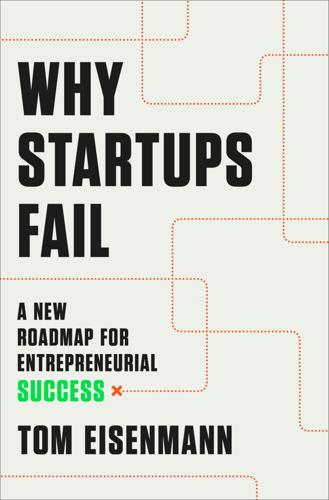
Why Startups Fail: A New Roadmap for Entrepreneurial Success
by
Tom Eisenmann
Published 29 Mar 2021
In the text below, for variables in my regression model that are statistically significant predictors of low valuation with at least 90 percent confidence, I’ll show—bolded—the predicted probability of observing a low valuation outcome as the focal variable is ranged from its lowest possible survey response to the highest possible response, while holding the level of all other independent variables constant at their respective sample means. When gauging the impact of these variables, note that the baseline predicted probability of a low valuation (with all variables at their sample mean) is 10 percent. When interpreting results, remember that correlation does not always imply causation. If a certain factor—say, a strong company culture—is more often associated with high valuation startups than low valuation counterparts, it might be true that a strong culture leads to strong performance. Or, the reverse might be true. The statistical techniques I use here cannot determine causation.
…
Not surprisingly, they were also significantly less likely to say their startup had a strong company culture. In multivariate analysis, moving from “much weaker” to “much stronger” when assessing the strength of one’s company culture relative to that of peer startups reduced the probability of low valuation sharply, from 23 percent to 6 percent. As noted above, however, this correlation does not necessarily imply causation. A weak culture might be a consequence of the startup’s problems, rather than the cause of its struggles. In recruiting, low valuation startups were somewhat more likely to put too much emphasis on both skill and attitude. In multivariate analysis, the penchant to overemphasize skills had a small but statistically significant impact.
…
In multivariate analysis, raising less than 75 percent of a startup’s initial funding goal resulted in an 18 percent predicted probability of low valuation, compared to 7 percent for startups that raised more than 125 percent of their initial goal. However, this is another variable for which correlation may not imply causation. Some startups may fail to meet their fundraising goals because it’s evident to investors that they’ve enlisted a weak team or targeted a bad idea—or both. These startups may ultimately be shut down due to a lack of capital, but the root cause of their failure was a “jockey and/or horse” problem.
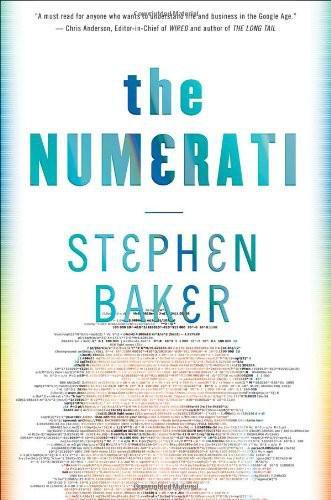
The Numerati
by
Stephen Baker
Published 11 Aug 2008
Sifry goes on at length about the dangers of predicting people's behavior based on statistical correlations. "Let's say that according to my analytics, you said that Mission Impossible III was no good and that you can't wait to see Prairie Home Companion," he says. "I can't assume from that that you're an NPR listener. That's where you get into trouble." That's mistaking correlation for causation, he says. It's common among data miners—and most other humans. How many times have you heard people say, "They always do that..."? For Kaushansky, putting his skateboarding friend and a few others in the wrong tribes may not turn out to be too serious. That's why advertising and marketing are such wonderful testing grounds for the Numerati.

The Achievement Habit: Stop Wishing, Start Doing, and Take Command of Your Life
by
Bernard Roth
Published 6 Jul 2015
A woman comes up to him after some time and says, “Pardon me, sir, why are you snapping your fingers?” He replies, “I am keeping the tigers away.” She says, “Sir, except for the zoo, there’s not a tiger for thousands of miles.” “Pretty effective, isn’t it?” he says. This joke uses what is called a causal fallacy. The fallacy comes because the finger snapper mistakenly believes that correlation implies causation. This is just one of several logical fallacies in which two events that occur at the same time are taken to have a cause-and-effect relationship. This version of the fallacy is also known as cum hoc ergo propter hoc (Latin for “with this, therefore because of this”) or, simply, false cause.
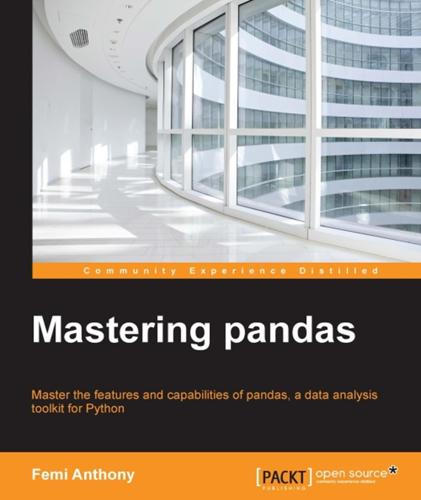
Mastering Pandas
by
Femi Anthony
Published 21 Jun 2015
We can then use this relationship to try and predict the value of one set of variables from the other; this is termed as regression. Correlation The statistical dependence expressed in a correlation relationship does not imply a causal relationship between the two variables; the famous line on this is "Correlation does not imply Causation". Thus, correlation between two variables or datasets implies just a casual rather than a causal relationship or dependence. For example, there is a correlation between the amount of ice cream purchased on a given day and the weather. For more information on correlation and dependency, refer to http://en.wikipedia.org/wiki/Correlation_and_dependence.

In Defense of Global Capitalism
by
Johan Norberg
Published 1 Jan 2001
Criticism has been leveled at this type of regression analysis, which is based on statistics from many economies and tries to control for other factors that can affect economic outcomes, because of the many problems of measurement that such analysis involves. Coping with enormous masses of data is always a problem. Where exactly is the line between open and closed economies? How does one distinguish between correlation and causation? How can the direction of causation be established? Consider, after all, that it is common for countries implementing free trade to also introduce other liberal reforms, such as protection for property rights, reduced inflation, and balanced budgets. That makes it hard to separate the effects of one policy from the effects of another.8 The problems of measurement are real ones, and results of this kind always have to be taken with a grain of salt, but it remains interesting that, with so very few exceptions, those studies point to great advantages with free trade.

The Smartphone Society
by
Nicole Aschoff
The fundamentals are in place for bounty that vastly exceeds anything we’ve ever seen before.19 Chris Anderson, the editor-in-chief of Wired magazine, predicted back in 2008 that we’d reached the “end of theory”—that our 24/7 connected lives would generate so much data that soon we wouldn’t even need theory anymore: “Correlation supersedes causation, and science can advance even without coherent models, unified theories, or really any mechanistic explanation at all.”20 With advancements in networks and computing we’ll generate more and more data, solving problems and fueling breakthroughs in medicine, science, agriculture, policing, and logistics.
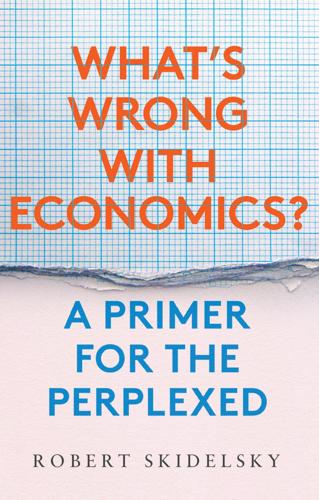
What's Wrong With Economics: A Primer for the Perplexed
by
Robert Skidelsky
Published 3 Mar 2020
To regret that is to regret the growth itself. It is to hold, in effect, that it is better for everyone . . . to remain equally poor. [This] seems to me . . . morally indefensible and practically untenable . . . This debate illustrates very well why economics is not a hard science. At issue is correlation versus causation (if two or more events run in parallel, which, if either, causes the other?), reliability of the data (how much trust can you put in official statistics?), the ideological complexion of economic models (is the world economy best understood as a unitary or binary system?), universal versus contingent truths (do different economic structures have the same laws of development?)
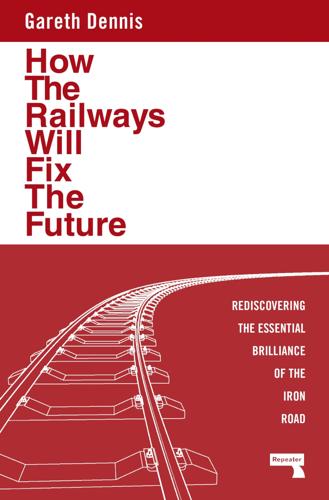
How the Railways Will Fix the Future: Rediscovering the Essential Brilliance of the Iron Road
by
Gareth Dennis
Published 12 Nov 2024
As I see it, there are four factors worth digging into in more detail which are largely responsible for today’s flawed railway operations, and the biggest of them all comes down to a classic mistake in the reading of statistics. 1. Liberalisation has chased, not created, demand The liberalisation and privatisation of railway systems in Europe is regularly claimed by politicians and liberal commentators to be the cause of the increase in patronage seen since the turn of the millennium. However, this conflates correlation and causation, and is usually the consequence of people looking at graphs with deceptive x-axes. In 1990, things were looking up for Britain’s railways: ridership had been climbing solidly since the mid-1980s; the average subsidy was as low as 20% of running costs, making the British system one of the most efficient in Europe; Thameslink was providing the first high-capacity suburban rail link through London, with Crossrail planning well advanced; the Transpennine Route Upgrade was being developed, intended to deliver electric services between Manchester and Leeds; and British Rail was planning for new high-speed rail links between the Channel Tunnel, London and the North of England.

Brave New Work: Are You Ready to Reinvent Your Organization?
by
Aaron Dignan
Published 1 Feb 2019
Rather than hold these “steps” lightly, executives tend to view them as best practice and attempt to implement them linearly and authoritatively, often with lackluster results. Kotter himself updated the process in 2014, acknowledging that the steps should really be done concurrently and continuously. The problem isn’t that we use models and frameworks to better understand change (although we need to be careful about correlation versus causation when it comes to defining what “works”). The problem is that we mistake the organization for an ordered system. And so we oversimplify. As a result, we tend to force whatever is happening in the system—in the hearts and minds of our colleagues—into that framework. We start saying things such as “You’re frozen right now, Michael, and we’re in the ‘unfreeze’ part of our change process, so . . . we’re going to need you to change your attitude.”
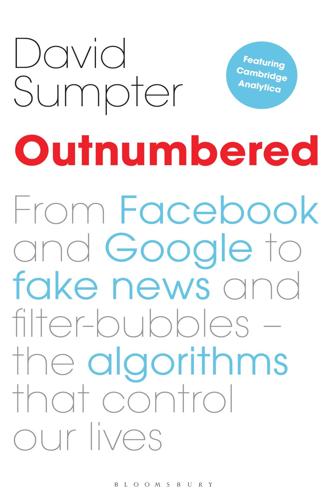
Outnumbered: From Facebook and Google to Fake News and Filter-Bubbles – the Algorithms That Control Our Lives
by
David Sumpter
Published 18 Jun 2018
In fact, the regression model I fitted to Facebook data does not reveal anything about the 76 per cent of people who didn’t register their political allegiance. While the data shows us that Democrats tend to like Harry Potter, it doesn’t necessarily tell us that other Harry Potter fans like the Democrats. This is the classic problem inherent to all statistical analyses; of potentially confusing correlation with causation. A second limitation relates to the number of ‘likes’ needed to make predictions. The regression model only works when a person has made more than 50 ‘likes’ and, to make really reliable predictions, a few hundred ‘likes’ are required. In the Facebook data set, only 18 per cent of users ‘liked’ more than 50 sites.
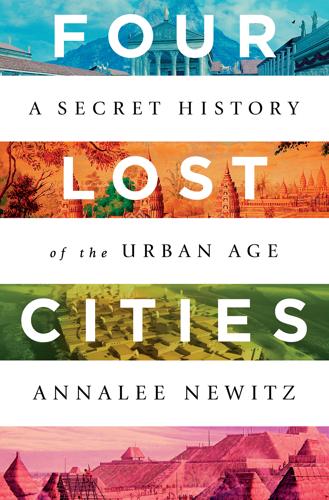
Four Lost Cities: A Secret History of the Urban Age
by
Annalee Newitz
Published 2 Feb 2021
Unlike the residential mounds excavated by Carter and her colleagues, these mounds aren’t packed with ceramics and food remains. They are just mounds, clearly the foundations for an elevated structure or structures. Their locations suggest that they may have been related to the city’s waterworks, but of course correlation does not equal causation. The coils and mound fields are reminders of how much we still don’t understand about how the ancient Khmer built their cities. Suryavarman II and his predecessors were nothing without all those commoners and khñum cutting sandstone, smelting iron, harvesting rice, and shipping it back to the capital.
…
Chapter 12: Deliberate Abandonment 1. Samuel E. Munoz et al., “Cahokia’s Emergence and Decline Coincided with Shifts of Flood Frequency on the Mississippi River,” Proceedings of the National Academy of Sciences 112, no. 20 (May 2015): 6319–24. 2. Sarah E. Baires, Melissa R. Baltus, and Meghan E. Buchanan, “Correlation Does Not Equal Causation: Questioning the Great Cahokia Flood,” Proceedings of the National Academy of Sciences 112, no. 29 (July 2015): E3753. 3. Andrea Hunter, “Ancestral Osage Geography,” in Andrea A. Hunter, James Munkres, and Barker Fariss, Osage Nation NAGPRA Claim for Human Remains Removed from the Clarksville Mound Group (23PI6), Pike County, Missouri (Pawhuska, OK: Osage Nation Historic Preservation Office, 2013), 1–60, https://www.osagenation-nsn.gov/who-we-are/historic-preservation/osage-cultural-history. 4.
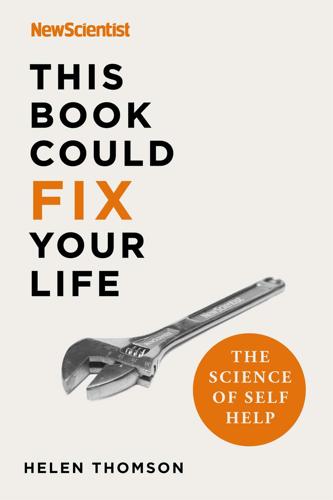
This Book Could Fix Your Life: The Science of Self Help
by
New Scientist
and
Helen Thomson
Published 7 Jan 2021
If that wasn’t enough, when the researchers looked for signs of P. gingivalis in the brains of healthy people, they found some, but at low levels. This supports the theory that P. gingivalis doesn’t get into the brain as a result of Alzheimer’s – but might be the cause. As a well-informed reader, you’ll know that caution is still required in saying that correlation implies causation: not every link between two factors means the one causes the other, and both could have an entirely separate cause. Our history of failed theories and drugs associated with Alzheimer’s is perhaps a further reason to stay cautious. But in this case several experiments are converging to suggest that gum disease really might be behind the disease.
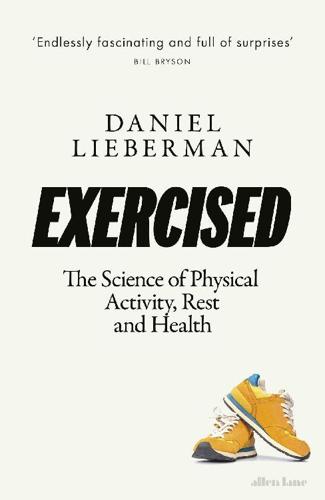
Exercised: The Science of Physical Activity, Rest and Health
by
Daniel Lieberman
Published 2 Sep 2020
Many of these studies are epidemiological; they look for associations between, say, health and physical activity in large samples of individuals. For example, hundreds of studies have looked for correlations between heart disease, exercise habits, and factors like age, sex, and income. These analyses reveal correlations, not causation. There has also been no lack of experiments that randomly assign people (most often college students) or mice to contrasting treatment groups for short periods of time to measure the effects of particular variables on particular outcomes. Hundreds of such studies have looked, for instance, at the effects of varying doses of exercise on blood pressure or cholesterol levels.
…
Yet in 2002, the sleep world was rocked by a massive study by Daniel Kripke and colleagues that examined the health records and sleep patterns of more than one million Americans.30 According to these data, Americans who slept eight hours a night had 12 percent higher death rates than those who slept six and a half to seven and a half hours. In addition, heavy sleepers who reported more than eight and a half hours and light sleepers who reported less than four hours had 15 percent higher death rates. Critics pounced on the study’s flaws: the sleep data were self-reported; people who sleep a lot may already be sick; correlation is not causation. Yet since then, numerous studies using better data and sophisticated methods to correct for factors like age, illness, and income have confirmed that people who sleep about seven hours tend to live longer than those who sleep more or less.31 In no study is eight hours optimal, and in most of the studies people who got more than seven hours had shorter life spans than those who got less than seven hours (an unresolved issue, however, is whether it would be beneficial for long sleepers to reduce their sleep time).
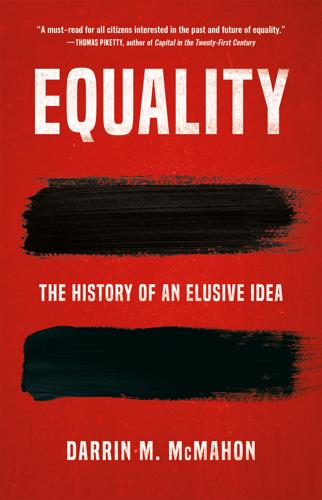
Equality
by
Darrin M. McMahon
Published 14 Nov 2023
If everyone has enough to get by, they contend, why bother about the gaps? To the many studies that suggest, on the contrary, that inequality matters quite a lot—to health and well-being, to life expectancy and crime, to social mobility, social capital, and all manner of social dysfunction—those same contrarians and optimists commonly reply that correlation is not causation. They are right about that. But when correlations occur over and over again, when profoundly unequal societies also reveal themselves to be profoundly dysfunctional, we ought to begin to see a pattern, and take notice.33 Studies of our primate cousins certainly make it clear that hierarchies of domination are not good for the creatures on the bottom.
…
Frankfurt, On Inequality (Princeton, NJ: Princeton University Press, 2015). Richard Wilkinson and Kate Pickett make the case for inequality’s adverse effects in The Spirit Level: Why Greater Equality Makes Societies Stronger (New York: Bloomsbury, 2010). On the critique of the latter work for conflating correlation and causation, see Pinker, Enlightenment Now, 100–101. 34. By way of introduction to a substantial literature by one of its pioneers, see Robert Sapolsky, “The Influence of Social Hierarchy on Primate Love,” Science 308 (April 29, 2005): 648–652; and Sapolsky, Behave: The Biology of Humans at Our Best and Our Worst (New York: Penguin, 2017), 291–296, 434–442.
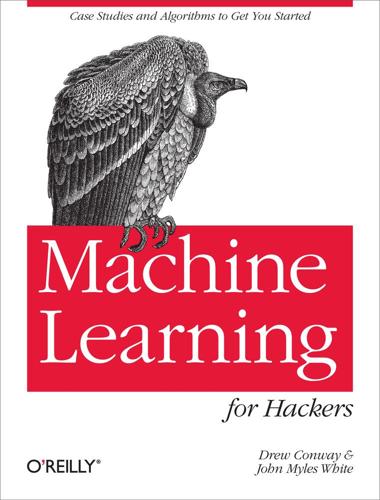
Machine Learning for Hackers
by
Drew Conway
and
John Myles White
Published 10 Feb 2012
This is a general fact about how correlations work, so you can always use linear regression to help you envision exactly what it means for two variables to be correlated. Because correlation is just a measure of how linear the relationship between two variables is, it tells us nothing about causality. This leads to the maxim that “correlation is not causation.” Nevertheless, it’s very important to know whether two things are correlated if you want to use one of them to make predictions about the other. That concludes our introduction to linear regression and the concept of correlation. In the next chapter, we’ll show how to run much more sophisticated regression models that can handle nonlinear patterns in data and simultaneously prevent overfitting.
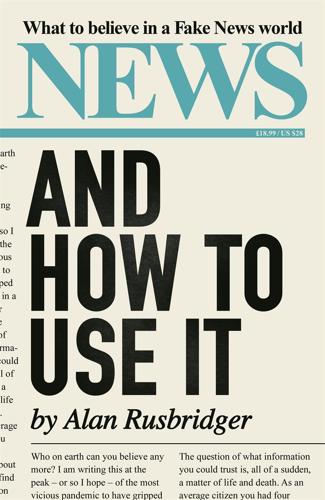
News and How to Use It: What to Believe in a Fake News World
by
Alan Rusbridger
Published 26 Nov 2020
We should also take care whether too much attention is paid to the sample size, in these days of hype around ‘big data’. Big isn’t always better – a smaller balanced sample may provide better insights than a large skewed one. Is there someone in the newsroom who can properly interrogate the polling company and its methods? Who understands correlation does not mean causation? How many reporters might mix up their millions with their billions? How do you make billions meaningful to anyone? (One answer: try dividing a huge sum by the number of items they relate to. The NHS annual budget of £134 billion sounds vast, but this relates to £2,000 per person or £37 per person per week.)
…
In medicine, the gold standard is a double-blind randomised controlled trial, where researchers hold every factor constant across the populations in their study, except the thing they are testing (e.g. a drug or other intervention). The more people involved in the study, the better the statistics and the more meaningful (i.e. true) the results are likely to be. Remember that correlation is not causation. If a study shows that children who grow up playing more video games end up with lower IQs as adolescents, look for an explanation of the biological mechanism for what could be going on. If there isn’t one, tread cautiously. Seeing risks put into context is particularly important. If drinking coffee seemingly increases your risk of developing stomach cancer by 50 per cent, this is only worrying if the absolute risk of that cancer is itself significant.
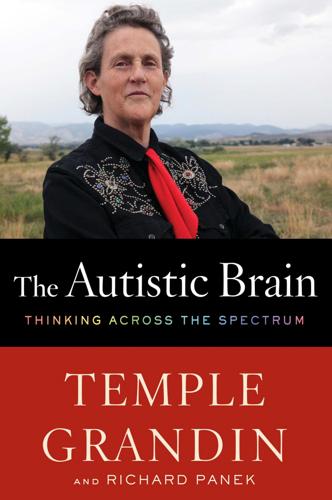
The Autistic Brain: Thinking Across the Spectrum
by
Temple Grandin
and
Richard Panek
Published 15 Feb 2013
So women who are pregnant or are thinking about becoming pregnant and who take antidepressants should consult a doctor and weigh the risks and benefits. In any case, we have to be very careful about looking for cause-and-effect relationships between environmental factors and genetics. As every scientist knows, correlation does not imply causation. An observed correlation—two events happening around the same time—might just be coincidence. Let’s use the now infamous vaccination controversy as a way to look at the logical complexity of a causation-versus-coincidence argument. The story goes like this. Parents routinely have their children vaccinated around age eighteen months.
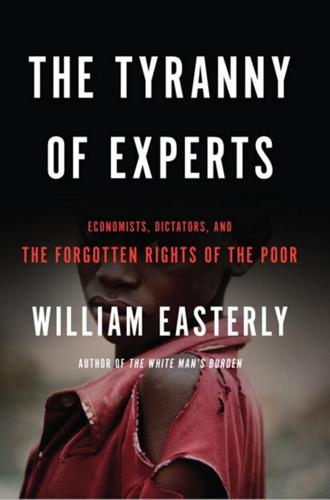
The Tyranny of Experts: Economists, Dictators, and the Forgotten Rights of the Poor
by
William Easterly
Published 4 Mar 2014
The authors of the survey found a lot of poor people who contradicted the common assumption that poor people don’t care about their rights and care only about their material needs. EVIDENCE AND DEBATE The patterns discussed here do not prove that autocracy and collectivist values cause poverty—correlation is not causation. It could be that people who get rich for some other reason desire more individualism and democracy and are able to get it. Some studies cited here use some formal statistical methods to argue that a history of autocracy causes collectivist values, and both autocracy and collectivist values in turn cause poverty, but most economists find the methods used not very convincing.
…
The slave trade’s disastrous effects help explain a result that Nathan Nunn had already found in his doctoral dissertation—that among today’s African nations, those where Europeans had seized the most slaves were poorer than nations that had largely escaped slavery. Benin today is one of the poorest African nations.13 EVIDENCE WITH A CAUSE But once again correlation is not causation. It is plausible that the correlation could also run in reverse: poverty caused enslavement. Poorer people are less able to defend themselves because they cannot afford as many weapons as richer people. Also pre-existing lack of trust could have caused more enslavement. People who were already less trusting and less trustworthy are more likely to help the slavers by betraying their neighbors.
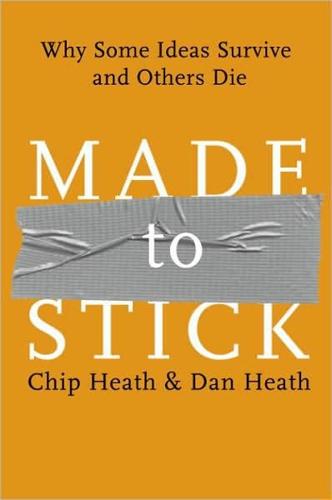
Made to Stick: Why Some Ideas Survive and Others Die
by
Chip Heath
and
Dan Heath
Published 18 Dec 2006
When Marshall presented their findings at a professional conference, the scientists snickered. One of the researchers who heard one of his presentations commented that he “simply didn’t have the demeanor of a scientist.” To be fair to the skeptics, they had a reasonable argument: Marshall and Warren’s evidence was based on correlation, not causation. Almost all of the ulcer patients seemed to have H. pylori. Unfortunately, there were also people who had H. pylori but no ulcer. And, as for proving causation, the researchers couldn’t very well dose a bunch of innocent people with bacteria to see whether they sprouted ulcers. By 1984, Marshall’s patience had run out.
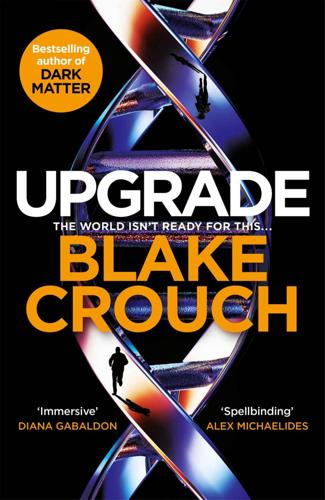
Upgrade
by
Blake Crouch
Published 6 Jul 2022
She was the only other human being who really understood the transformation I was experiencing. She was also the only human being who truly understood my past. “Ever think about settling down?” I asked her. “Kids? A wife?” “Something like that.” “Does it bother you that I found a different path to happiness?” she asked. “You assume I think kids and marriage equal happiness. Correlation? Sure. Causation? No. Are you happy?” “Before all this, I was as happy as I’d ever been. I lived in a cabin I had built at seven thousand feet in the mountains above Butte. I skied in the winter. Fly-fished in the summer. Hunted in the fall. You’ve been there.” “I wish we’d seen each other more,” I said.

Magic Internet Money: A Book About Bitcoin
by
Jesse Berger
Published 14 Sep 2020
According to the December 2019 Mining Update from CoinShares, a digital asset management firm, major mining operations are currently situated in regions with large, unused supplies of renewable energy because they tend to operate below peak capacity.32 This aligns with miners’ incentive to use energy efficiently, and also unlocks value from previously uneconomical renewable sources. Despite the report concluding that 73% of mining energy is derived from renewable sources, critics remind us that correlation does not imply causation.33 Some renewable energy sources can only provide energy on an intermittent basis, but mining tends to require a constant flow. As a result, it is possible that some miners may have a partial need for “dirty” energy, despite any best laid plans. 11.6.3 Mining: Of Central Concern “If you know the enemy and know yourself, you need not fear the result of a hundred battles.”
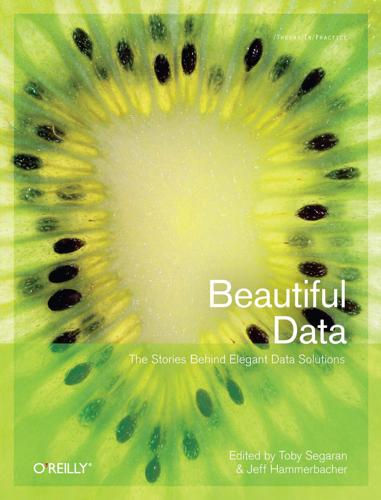
Beautiful Data: The Stories Behind Elegant Data Solutions
by
Toby Segaran
and
Jeff Hammerbacher
Published 1 Jul 2009
The research described never suggested a causal link, but the journalist offered her own advice to couples based on the “data.” The substitution of correlation with causality need not be so explicit. When a scientific research project is undertaken, there exists the assumption that correlation, if discovered, would imply causation, albeit unknown. Else, why seek to answer a research question at all: large-scale search for correlation without causation is aleatory computation, not science. Even with so-called big data, science remains an intensely hypothesis-driven process. The limits of empirical research is not grounds to throw up our hands, only to be careful to push discovery forward without getting rosy-eyed about causality.
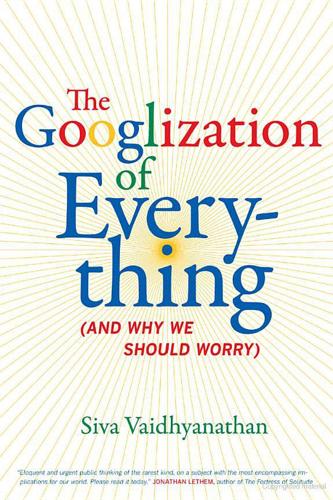
The Googlization of Everything:
by
Siva Vaidhyanathan
Published 1 Jan 2010
But here Anderson has stepped out even beyond the pop sociology and economics that usually dominate the magazine. Anderson claims “correlation is enough.”41 In other words, the entire process of generating scientific (or, for that matter, social-scientific) theories and modestly limiting claims to correlation without causation is obsolete and quaint: given enough data and enough computing power, you can draw strong enough correlations to claim with confidence that what you have discovered is indisputably true. THE GOOGL I ZAT I ON OF ME MORY 197 The risk here is more than one of intellectual hubris: the academy has no dearth of that.
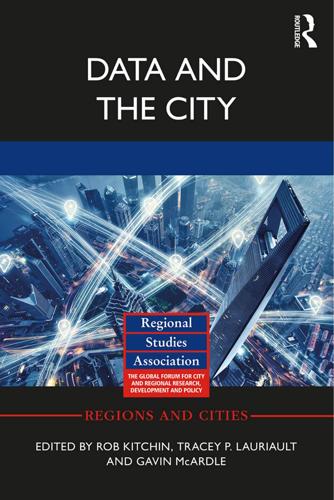
Data and the City
by
Rob Kitchin,Tracey P. Lauriault,Gavin McArdle
Published 2 Aug 2017
Rob Kitchin (2014a) has described how a new empiricist school of thought has emerged that takes the data these computer systems are generating at face value to produce direct insights in (amongst others) urban patterns. As one of their protagonists, Chris Anderson (2008), claims: We can throw the numbers into the biggest computing clusters the world has ever seen and let statistical algorithms find patterns where science cannot . . . Correlation supersedes causation, and science can advance even without coherent models, unified theories, or really any mechanistic explanation at all. In their vision, Batty’s observation about the use of computers in the city has come full circle: computer systems produce data about the city that allegedly give us a transparent look into the city’s dynamics.
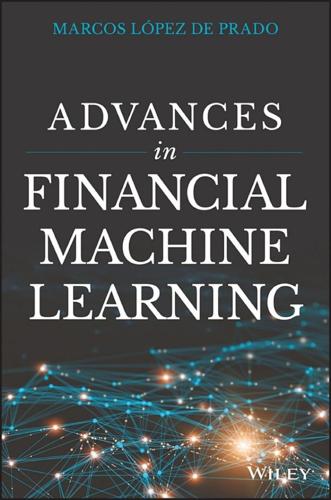
Advances in Financial Machine Learning
by
Marcos Lopez de Prado
Published 2 Feb 2018
The cost of lending and the amount available is generally unknown, and depends on relations, inventory, relative demand, etc. These are just a few basic errors that most papers published in journals make routinely. Other common errors include computing performance using a non-standard method (Chapter 14); ignoring hidden risks; focusing only on returns while ignoring other metrics; confusing correlation with causation; selecting an unrepresentative time period; failing to expect the unexpected; ignoring the existence of stop-out limits or margin calls; ignoring funding costs; and forgetting practical aspects (Sarfati [2015]). There are many more, but really, there is no point in listing them, because of the title of the next section. 11.3 Even If Your Backtest Is Flawless, It Is Probably Wrong Congratulations!
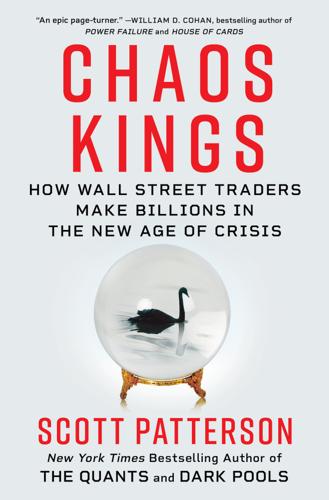
Chaos Kings: How Wall Street Traders Make Billions in the New Age of Crisis
by
Scott Patterson
Published 5 Jun 2023
It was random—coin flip after coin flip. Econometricians sought to find correlations among economic factors (like interest rates and gasoline prices) that could predict future outcomes. Black, in a 1982 paper called “The Trouble with Econometric Models,” had said that was a fool’s errand—it confused correlation with causation. (Black, after seeing Goldman Sachs’s money-making machine up close, soon realized that while markets might look efficient from a professor’s podium, giant investment banks are able to squeeze oodles of dollars out of ubiquitous market inefficiencies.) Despite Black’s qualms, Goldman hired Litterman, who joined the bank’s fixed-income department.
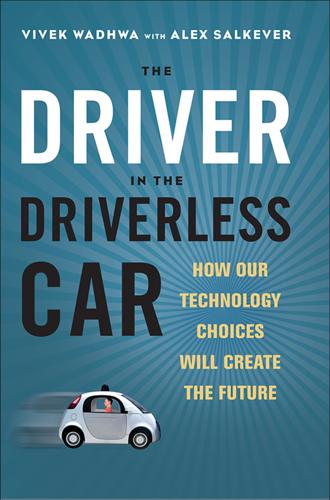
The Driver in the Driverless Car: How Our Technology Choices Will Create the Future
by
Vivek Wadhwa
and
Alex Salkever
Published 2 Apr 2017
In February 2015, researchers from M.I.T. and from Harvard University released the results of the most comprehensive longitudinal study yet of how the diversity and types of gut flora affect onset of this type of diabetes.3 The scientists tracked what happened to the gut bacteria of a large number of subjects from birth to their third year in life, and found that children who became diabetic suffered a 25 percent reduction in their gut bacteria’s diversity. What’s more, the mix of bacteria shifted away from types known to promote health toward types known to promote inflammation. Correlation is not causation, but the results added to evidence that the bacteria in our intestines have a strong effect on our health. In fact, manipulating the microbiome may even become more important than genomics and gene-based medicine. Unlike genomics and gene therapy, which require a relatively heroic effort to induce physiological changes, tweaking the microbiome appears to be relatively straightforward and safe: just mix up a cocktail of the appropriate bacteria, and transplant it into your gut.
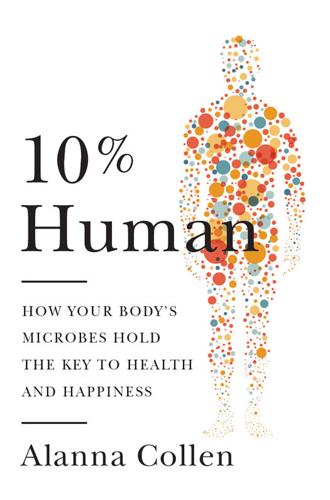
10% Human: How Your Body's Microbes Hold the Key to Health and Happiness
by
Alanna Collen
Published 4 May 2015
It turned out that those who had been given antibiotics before the age of two – a startling 74 per cent of them – were on average nearly twice as likely to have developed asthma by the time they were eight. The more courses of antibiotics the children received, the more likely they were to develop asthma, eczema and hay fever. But, as the saying goes, correlation does not always mean causation. The lead researcher on the antibiotics study had discovered four years earlier that the more television children watched, the more likely they were to develop asthma. Of course, despite similar results as in the antibiotics study, no one really believed that the act of watching television could bring about immune dysfunction in the lungs.
…
It also takes time for the effects to become clear across populations, countries and continents. If the introduction of antibiotics in 1944 is in some way responsible for our current state of health, the 1950s are exactly when we would expect to see the dawning of their impact. Let us not jump the gun though. As any scientist would hasten to point out, correlation does not always mean causation. The timely introduction of antibiotics may be as unrealistic a connection to rising chronic illness as the self-serve supermarkets that made their debut in the 1940s. Connections alone, whilst useful guides, do not always provide a causal link. An amusing website about spurious correlations tells me that there’s an impressively close correlation between per capita consumption of cheese in the US and the number of people who die each year by becoming tangled in their bed sheets.

The Vegetarian Myth: Food, Justice, and Sustainability
by
Lierre Keith
Published 30 Apr 2009
The kind of cross-country comparison that Keys did “involves comparing apples with oranges—that is countries with widely varying cultural, social, political and physical environments.”52 With such an infinite number of variables, a finding of definitive causation would be ridiculous. Figure 4A. Correlation between the total fat consumption as a percent of total calorie consumption, and mortality from coronary heart disease in six countries. Redrawn from The Cholesterol Myths by Uffe Ravnskov. John Yudkin’s 1957 study shows the error of conflating correlation with causation. You can see from Figure 4B (page over) that owning a TV and radio had a much stronger association with Coronary Heart Disease (CHD) than any nutritional elements.53 But no one would suggest that TV causes CHD, or that sacrificing our TVs will grant us a longer life. No one went on to investigate whether TVs produced heart-stopping emissions or blood-damaging toxins.
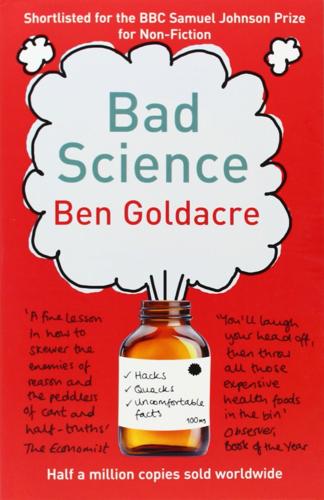
Bad Science
by
Ben Goldacre
Published 1 Jan 2008
I understand if you want to skip it, but know that it is here for the doctors who bought the book to laugh at homeopaths. Here are the classic tricks to play in your statistical analysis to make sure your trial has a positive result. Ignore the protocol entirely Always assume that any correlation proves causation. Throw all your data into a spreadsheet programme and report—as significant—any relationship between anything and everything if it helps your case. If you measure enough, some things are bound to be positive just by sheer luck. Play with the baseline Sometimes, when you start a trial, quite by chance the treatment group is already doing better than the placebo group.
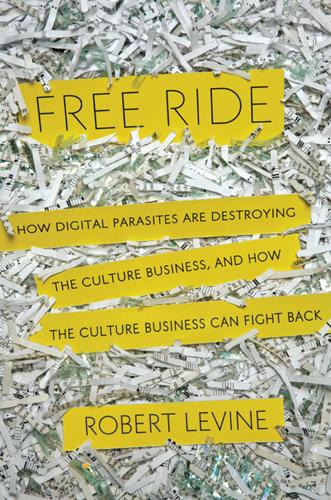
Free Ride
by
Robert Levine
Published 25 Oct 2011
Many factors have hurt music sales, including the closing of so many record stores. But almost every other study has concluded that file sharing played a role,74 and anyone who believes otherwise is running out of alternate explanations. Several studies have shown that individuals who download music illegally also buy it, but that proves only correlation, not causation. Some suggested CD sales fell because music fans are no longer replacing their old records, but “catalog” sales of older releases declined less than overall sales from 2004 to 2009.75 Others speculated that DVD sales cut into the CD market, but now they’re declining as well. Music sales have also declined disproportionately in countries where file sharing is more common.

Gene Eating: The Science of Obesity and the Truth About Dieting
by
Giles Yeo
Published 3 Jun 2019
What I do know is that type 2 diabetes is a risk factor for Alzheimer’s, but we still do not know the underlying mechanism. Because eating too much of anything, including grains, leads to obesity, which is a major risk factor for type 2 diabetes, Perlmutter makes a huge leap to blame Alzheimer’s and other brain disorders on grains. This is once again the correlation versus causation conundrum, and to date, there is no evidence that grains are what links type 2 diabetes and brain disorders. What is clear is that grain-free diets really are very restrictive, very low in carbohydrates, much more so than gluten-free diets. Perlmutter recommends eating as much meat and fat as one would like.
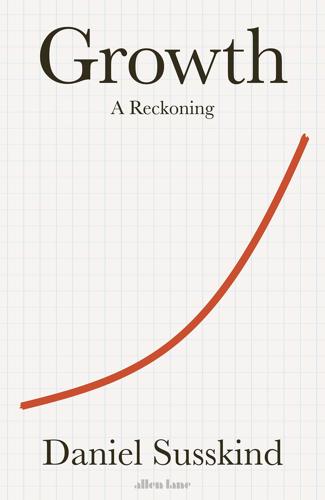
Growth: A Reckoning
by
Daniel Susskind
Published 16 Apr 2024
In time, they start to spread, getting picked up and used by others – first by a few, then by more and more. And as they travel, they gather speed and strength, so what starts as a scattering of economic whispers soon turns into a deafening din – an unrelenting, ever-intensifying roar of increasing productivity. Correlation to Causation While Solow, Swan, Lucas and Romer were busy creating abstract models of the economy, the tribe of data scientists was engaged in its own search for the causes of growth.47 In contrast to the efforts of social theorists and model-building mathematicians, their work was empirical, rooted in data.

The Master Algorithm: How the Quest for the Ultimate Learning Machine Will Remake Our World
by
Pedro Domingos
Published 21 Sep 2015
It can also be generalized to try many combinations of changes at once, without losing track of which changes lead to which gains (or losses). Companies like Amazon and Google swear by it; you’ve probably participated in thousands of A/B tests without realizing it. A/B testing gives the lie to the oft-heard criticism that big data is only good for finding correlations, not causation. Philosophical fine points aside, learning causality is learning the effects of your actions, and anyone with a stream of data they can affect can do it—from a one-year-old splashing around in the bathtub to a president campaigning for reelection. Learning to relate If we endow Robby the robot with all the learning abilities we’ve seen so far in this book, he’ll be pretty smart but still a bit autistic.
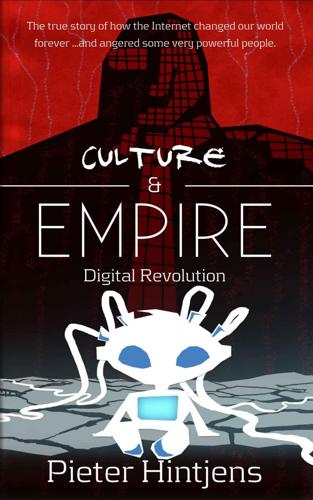
Culture & Empire: Digital Revolution
by
Pieter Hintjens
Published 11 Mar 2013
Conflict is always political, yet leaders often invoke religion to bolster their followers, and create more tribalism. Outsiders, searching for simplistic explanations, and possibly arms sales, embrace this rhetoric as reality. As the conflict increases, the religious arguments will definitely increase. However, it's correlation, not causation. And in the end, the solution comes from addressing the original political issues. Until then, and as long as possible, the beneficiaries (war can be incredibly profitable!) will pump up the "irreconcilable ancient hatreds" angle. And so it goes with the Global Extremist Islamic Threat to Modern Civilization.
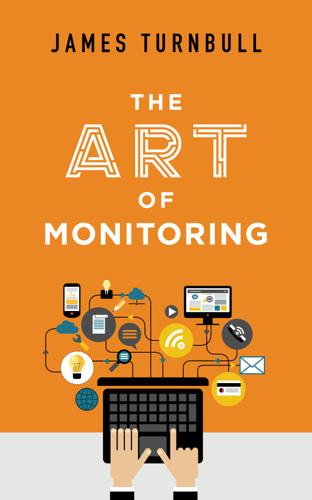
The Art of Monitoring
by
James Turnbull
Published 1 Dec 2014
Throughout the book we'll look at ways to visualize the data and metrics we've collected. However metrics and their visualizations are often tricky to interpret. Humans tend towards apophenia—the perception of meaningful patterns within random data—when viewing visualizations. This often leads to sudden leaps from correlation to causation. This can be further exacerbated by the granularity and resolution of our available data, how we choose to represent it, and the scale on which we represent it. Our ideal visualizations will clearly show the data, with an emphasis on highlighting substance over visuals. In this book we've tried to build visuals that subscribe to these broad rules: Clearly show the data.
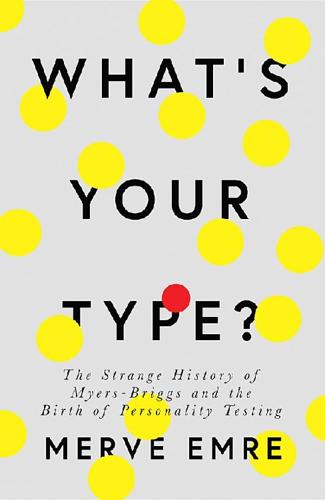
What’s Your Type?
by
Merve Emre
Published 16 Aug 2018
The RCA 501 made it possible to score tests at an inhuman rate—one test every nine seconds in 1958, the year the computer first arrived at ETS. It also allowed ETS’s statisticians to write programs that could perform basic statistical analyses across large samples of test subjects: the calculation of means and modes, correlations and causations, the determination of significance. But the computer was more than just a convenient time- and labor-saving device. It was an indispensable technology given the new scale of Isabel’s and ETS’s operations. In just the first few years of their partnership, the indicator swept the country from east to west and back again with a frenetic, vital energy.
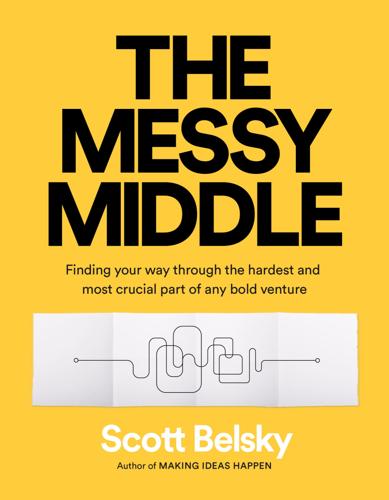
The Messy Middle: Finding Your Way Through the Hardest and Most Crucial Part of Any Bold Venture
by
Scott Belsky
Published 1 Oct 2018
This gives your staff ownership over their work and also allows the most knowledgeable person to lead the discussion. False attribution can wreak havoc in a team. This applies just as much to congratulating the wrong person as it does putting a success down to circumstance instead of skill. In our effort to optimize whatever seems to work, we’re liable to conflate correlation with causation. If things go well, it doesn’t necessarily mean someone’s tactics worked. Go a level deeper to understand whether a success resulted from good timing, external market forces, great skills and execution, or some combination of the above. Attribute success at the element level: the skills, decisions, tactics, relationships, and hard work that contributed to the outcome.
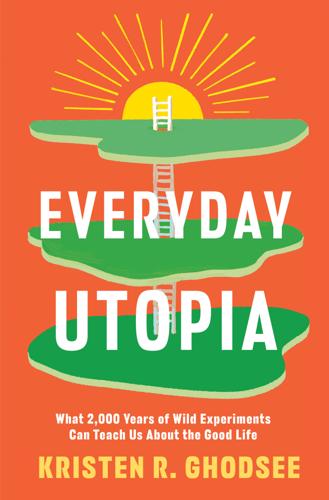
Everyday Utopia: What 2,000 Years of Wild Experiments Can Teach Us About the Good Life
by
Kristen R. Ghodsee
Published 16 May 2023
The view that monogamy “solves” male violence assumes that male violence is somehow inevitable and not a specific response to other societal factors—such as an underlying culture of patriarchy or economic inequality—which could be changed in other ways.59 In a thirty-year survey of studies trying to understand the significant gap in life expectancy between members of different social classes, epidemiologists Richard Wilkinson and Kate Pickett noted that homicide rates increase with greater levels of income inequality.60 A different 2002 study on the relationship between “Inequality and Violent Crime” examined homicide rates for thirty-nine countries and robberies in thirty-seven countries. The authors found that both within and between countries, crime rates are positively correlated with inequality, and that “this correlation reflects causation from inequality to crime rates, even after controlling for other crime determinants.”61 In 2018, the Economist magazine charted “the stark relationship between income inequality and crime,”62 and in 2021, a scholarly paper in Nature modeled how increases in income inequality quickly undermine social cohesion by increasing the potential rewards of criminal activity for those who have fallen beneath a certain “desperation threshold.”63 These and many other studies suggest that economic inequality may be a crucial factor driving increases in societal violence, as so well observed in Eastern Europe after the collapse of state socialism in the 1990s.64 We also know that men are responsible for the vast majority of violent crimes.

Stuck: How the Privileged and the Propertied Broke the Engine of American Opportunity
by
Yoni Appelbaum
Published 17 Feb 2025
New York’s governor, Theodore Roosevelt, much impressed with Veiller’s exhibition, told the crowd that improving tenements would “cut at the root of the diseases which eat at the body social and the body politic.” The exhibition, and the report that followed, stand as singular triumphs in the field of mistaking correlation for causation. Reformers like Veiller associated the apartment building with everything they disliked about immigrant life, and the single-family home with everything they valorized about America. If native-born Americans had grown up in farmhouses, then surely getting immigrants out of apartments was the first step toward Americanization.
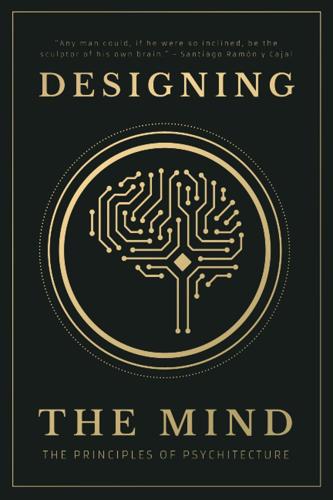
Designing the Mind: The Principles of Psychitecture
by
Designing The Mind
and
Ryan A Bush
Published 10 Jan 2021
A slippery slope argument claims that a small step will inevitably lead to a whole chain of undesirable consequences, such as parents arguing that if they let their daughter learn a card trick, there will be no stopping her from pursuing a career as an illusionist. A false dichotomy claims that if one extreme is rejected (capitalism has no flaws), another extreme must be the only alternative (communism it is). And the post hoc fallacy causes us to assume that correlation equates to causation, such as the belief that the sun rising actually causes your drinking problem. Once you have familiarized yourself with the full list of common fallacies, they start appearing everywhere. It is hard to imagine what political debates would look like if candidates knew they would be called out for every red herring or faulty generalization committed.
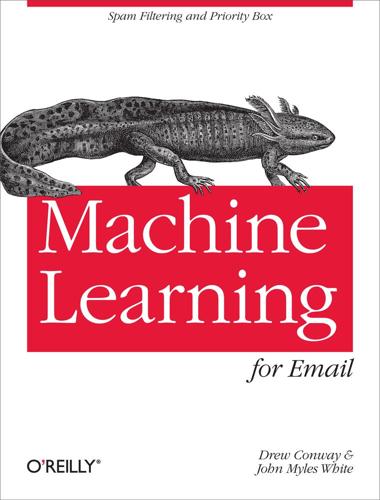
Machine Learning for Email
by
Drew Conway
and
John Myles White
Published 25 Oct 2011
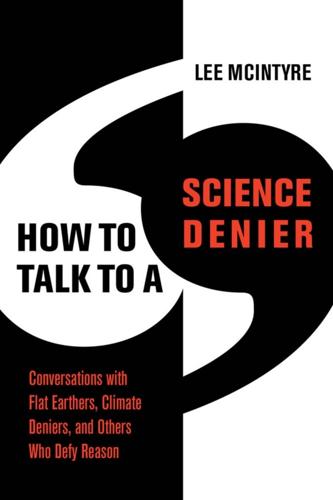
How to Talk to a Science Denier: Conversations With Flat Earthers, Climate Deniers, and Others Who Defy Reason
by
Lee McIntyre
Published 14 Sep 2021
But the problem is that for such concerns to be scientifically valid—and thus count as skepticism rather than denialism—they must be backed up by evidence. And, for GMOs, where is it? With vaccines, there is the Vaccine Adverse Events Reporting System (VAERS), which documents and catalogs the vanishingly small number of “adverse” events so that they can be investigated. But as statisticians know, correlation does not necessarily indicate causation. Just because a child had an adverse reaction near the time they had a vaccine, this does not mean the vaccine caused it. This is why scientists who have access to the VAERS system must investigate. Then they must decide what to do in those rare instances when people do have an adverse reaction that can be traced to a vaccine.
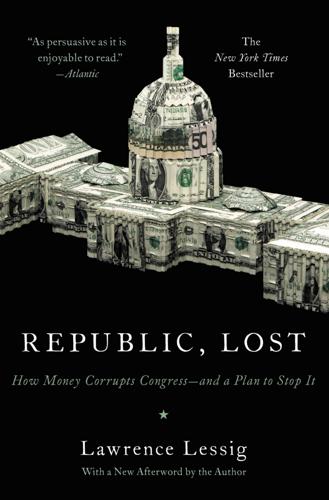
Republic, Lost: How Money Corrupts Congress--And a Plan to Stop It
by
Lawrence Lessig
Published 4 Oct 2011
As Fiorina and Abrams put it, “the natural place to look for campaign money is in the ranks of the single-issue groups, and a natural strategy to motivate their members is to exaggerate the threats their enemies pose.”29 In this odd and certainly unintended way, then, the demand for cash could also be changing the substance of American politics. Could be, because all I’ve described is correlation, not causation. But at a minimum the correlation should concern us: On some issues, the parties become more united—those issues that appeal to corporate America. On other issues, the parties become more divided—the more campaign funds an issue inspires, the more extremely it gets framed. In both cases, the change correlates with a strategy designed to maximize campaign cash, while weakening the connection between what Congress does (or at least campaigns on) and the potential needs of ordinary Americans.
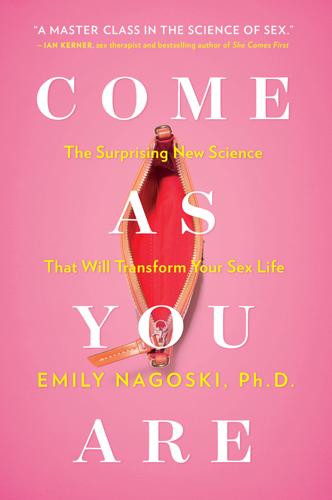
Come as You Are: The Surprising New Science That Will Transform Your Sex Life
by
Emily Nagoski Ph.d.
Published 3 Mar 2015
Suppose you recognize that nonconcordance exists, you acknowledge that it’s expecting without necessarily indicating enjoying or eagerness, and then you read the research that shows there is a correlation between nonconcordance and sexual dysfunctions related to desire and arousal.21 And so you decide that, because nonconcordance is associated with dysfunction, nonconcordance must be a problem. Which brings me to a sentence every undergraduate who takes a research methods class will memorize: “Correlation does not imply causation.” It refers to the cum hoc ergo propter hoc fallacy—“with this, therefore because of this”—which means that just because two things happen together doesn’t mean that one thing caused the other thing. The quintessential example in the twenty-first century is the relationship between pirates and global warming.22 This is a joke made by Bobby Henderson, as part of the belief system of the Church of the Flying Spaghetti Monster.

Thinking Machines: The Inside Story of Artificial Intelligence and Our Race to Build the Future
by
Luke Dormehl
Published 10 Aug 2016
The case works by measuring the heart’s electrical patterns through the fingertips of the person holding it. An algorithm then analyses the regularity of their heartbeat and suggests if the person should see a doctor. As our environment gets ever smarter, we will enter an age of continuous, real-time risk assessments. For the first time in history it will be possible to draw constant correlations, and possibly causations, between a large number of genomic, physiological, biological and environmental factors on an individual basis. Wearable devices will tirelessly monitor our heart rate, blood oxygen levels, physical activity, breathing patterns, facial expression, lung function, voice inflection, brain waves, posture, sleep quality and more, in addition to external measurements like air quality and noise level.
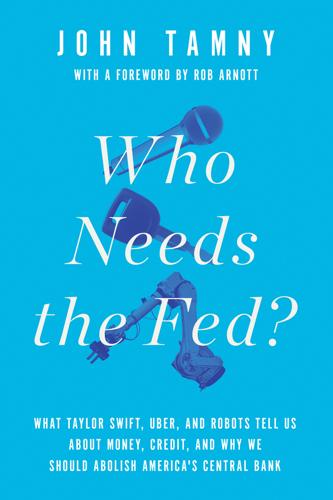
Who Needs the Fed?: What Taylor Swift, Uber, and Robots Tell Us About Money, Credit, and Why We Should Abolish America's Central Bank
by
John Tamny
Published 30 Apr 2016
But for the purposes of this chapter, FDR’s dollar meddling requires discussion, because one of the most common objections to the Federal Reserve is that since its creation in 1913, the dollar has lost more than 90 percent of its value. It’s a horrid number, and the unseen is the massive economic advances that would have made the abundant present seem impoverished by comparison but that did not come into being. However, this objection to the Fed is one of those instances where correlation is not causation. Lest we forget, FDR decided to devalue the dollar, and per Shlaes, “It did not matter what the Federal Reserve said.” Stated simply, the first major decline in the value of the dollar had nothing to do with the Fed. So incensed was Fed Chairman Eugene Meyer by FDR’s decision that he actually resigned.6 Let’s shift to 1944 and the Bretton Woods monetary conference at the Mount Washington Hotel.
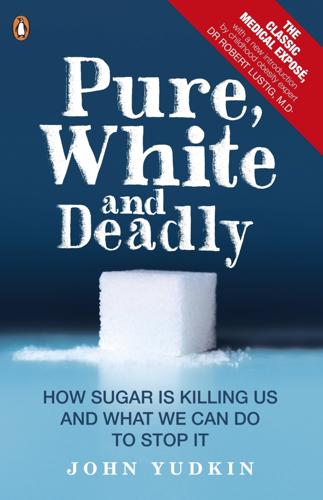
Pure, White and Deadly: How Sugar Is Killing Us and What We Can Do to Stop It
by
John Yudkin
Published 1 Nov 2012
But to learn that Yudkin foresaw what a problem sugar was thirty-six years earlier, and at a much lower dose (i.e. before the advent of high-fructose corn syrup and the two-litre bottle) was a true revelation. Indeed, I was a Yudkin disciple and I hadn’t even realized it. Yudkin didn’t have the voluminous data that exist today. He had correlation, but not causation. He didn’t have mechanism. He didn’t know that sugar caused insulin resistance by being turned into fat in the liver through the process of de novo lipogenesis, or that sugar induced protein damage through the Maillard or browning reaction. He didn’t know that sugar was weakly addictive, although he surmised it.

Do Nothing: How to Break Away From Overworking, Overdoing, and Underliving
by
Celeste Headlee
Published 10 Mar 2020
This self-inflicted pressure has a very high cost on the human mind and body. Unreasonably high standards and severe self-criticism are linked to high blood pressure, depression, eating disorders, and suicidal ideation. Therapists will tell you that you cannot both strive to be perfect and enjoy good mental health. They are mutually exclusive. While correlation is not causation, it’s important to note that suicides among young people have risen by 56 percent since 1999. One Pennsylvania teacher connects the rise in suicides to the increase in standardized testing. “American students are increasingly being sorted and evaluated by reference to their test score rather than their classroom grade or other academic indicators,” Steven Singer wrote on HuffPost.

The Ones We've Been Waiting For: How a New Generation of Leaders Will Transform America
by
Charlotte Alter
Published 18 Feb 2020
It’s hard to establish whether millennials were influenced by Harry Potter or if the series took off because it touched on themes that were already brewing in young minds in the late 1990s and early 2000s. Most likely, the huge influence of Harry Potter and the rise of progressive attitudes among millennials are correlated, not causational. Harry’s world—the heroes and villains, the assumptions and challenges—largely mirrors millennial attitudes about what’s good (teamwork, diversity, tolerance) and what’s bad (bigotry, racial purity, authoritarianism). Not everyone was happy about it: evangelical pastors condemned the book, Pope Benedict XVI warned that it might “distort Christianity,” and it topped the American Library Association’s list of most frequently challenged books, primarily in conservative communities.
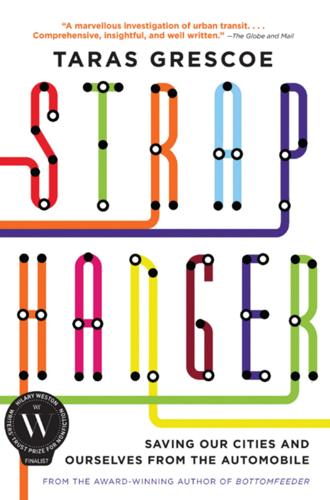
Straphanger
by
Taras Grescoe
Published 8 Sep 2011
One thing the nation’s worst crime hot spots seem to have in common is that they are highly sprawled metropolitan regions—Greater St. Louis covers almost 8,500 square miles—whose atrophied public transport systems make their residents almost completely dependent on cars. Any responsible criminologist would protest that only a fool confounds correlation and causation. Fair enough, though this raises another question: Doesn’t believing that your transportation and housing choices shield you from crime when they actually make you more likely to be a victim of it mean you are already living in a fool’s paradise? Rubber and Rail Planners are at ease talking about residential densities, workplace clusters, and transit ridership rates, but they are strangely silent on the role skin color plays in public transport.

Red Moon
by
Kim Stanley Robinson
Published 22 Oct 2018
An amateur astronomer observing the moon was in the beam’s target circle, and captured a recording of part of it. It was an encrypted message.” “And you broke the code?” “No. But the timing of this message is suggestive. An hour after this light from the moon was seen, people from all over China began to head for Beijing.” “Coincidence?” Zhou suggested. “Correlation, not causation?” Bo and Dhu did not reply. Ta Shu saw that Zhou was not going to share anything with these two, just out of a general sense of caution. War of the agencies at least, and maybe something more. The discipline inspection commission didn’t have much direct presence on the moon, so far as Ta Shu knew, even if they did oversee the Lunar Authority as they did all the agencies.
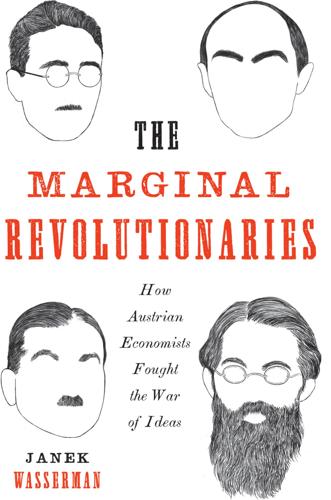
The Marginal Revolutionaries: How Austrian Economists Fought the War of Ideas
by
Janek Wasserman
Published 23 Sep 2019
Simmering beneath the surface for over a decade, petty resentments erupted into an academic contretemps in 1883. The vitriol bewildered participants and observers. The debate resolved little and cost much. More than any other event, the dispute precipitated the formation of a distinctive Austrian School, yet one must not confuse correlation and causation: the latter-day Austrian approach owed little to this contest of egos. Instead, a new cohort of scholars entered the field simultaneously with the struggle and began to enrich the embryonic Austrian approach.32 In the decade after Principles appeared, it barely made an impression outside of Vienna.

Fallen Idols: Twelve Statues That Made History
by
Alex von Tunzelmann
Published 7 Jul 2021
‘Waging war on bronze men doesn’t make your life any more moral or just,’ the Russian journalist Maria Lipman, who cheered the destruction of Dzerzhinsky’s statue, told The New York Times in 2020. ‘It does nothing really.’3 A symbolic moment such as pulling a statue down may have resonance. What it does not do – at least, not by itself – is actually change anything. Pulling down a statue does not create liberation. Correlation is not causation. Modern movements that have targeted statues, such as Rhodes Must Fall and Black Lives Matter, have broad aims. They challenge legacies of colonialism, racism and slavery, and include strands of feminism, LGBTQ+ activism and disability activism. These movements’ focus, methods and actions are open to criticism, and there has been plenty of that – from inside the movements as well as outside.

The Globotics Upheaval: Globalisation, Robotics and the Future of Work
by
Richard Baldwin
Published 10 Jan 2019
In the 1960s and 1970s, something fundamental changed that led many boys to have longer hair and many girls to have shorter hair. Using the 1950s algorithm would thus misclassify many students. The topline here is that AI-trained robots do not understand the world. They just understand patterns in their training data sets. This reliance on correlation rather than causation will inevitably lead to very systematic mistakes when underlying factors change. This is another reason AI robots are unlikely to be trusted with critical tasks. There is no danger in letting them suggests tags for your Facebook friends. There could be real danger if we fully relied on them for more essential tasks.

Road to Nowhere: What Silicon Valley Gets Wrong About the Future of Transportation
by
Paris Marx
Published 4 Jul 2022
In December 2019, Musk tweeted a poll asking his followers whether he should build “super safe, Earthquake-proof tunnels under cities to solve traffic,” but one user replied with a link to a Wikipedia article on induced demand and asked him to read it. In response, Musk, who has no training in transport planning, dismissed the concept, writing, “Induced demand is one of the most irrational theories I’ve ever heard. Correlation is not causation. If the transport system exceeds public travel needs, there will be very little traffic. I support anything that improves traffic, as this negatively affects almost everyone.” Yet Musk’s efforts were putting more cars on the road and proposing narrow tunnels that would not solve the problem.
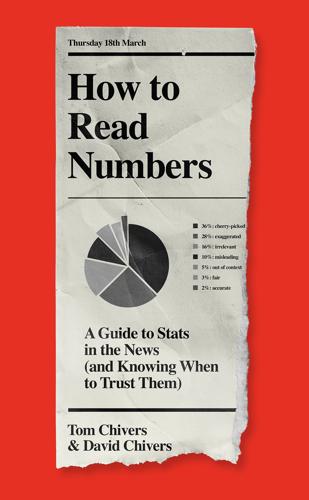
How to Read Numbers: A Guide to Statistics in the News (And Knowing When to Trust Them)
by
Tom Chivers
and
David Chivers
Published 18 Mar 2021
The study found that men who were drafted earned, on average, 15 per cent less over their lifetime than men who weren’t. Most observational studies, though, are not RCTs, and are not these randomised or quasi-randomised natural experiments. Most observational studies can simply tell you whether two or more numbers tend to go up and down at around the same time. They can tell you about correlation, but not about causation – and, as every pedant on social media will tell you, those aren’t the same thing. This is not always clear in newspaper reporting, however. One relevant paper looked at how seventy-seven observational studies (that is, non-RCTs, things that can’t show you causality) were reported in the press, and found that almost half of them were reported with causal claims – that is, headlines like ‘Daytime naps help improve learning in pre-school children’, when the study only showed a link, not a causal link.5 Let’s go back to the fizzy drinks.

Robot Rules: Regulating Artificial Intelligence
by
Jacob Turner
Published 29 Oct 2018
However, the gender or indeed age of the applicants is not strictly relevant at all to their aptitude. Rather, the key skills which building site labourers need are strength and dexterity. This may be correlated with age, and it may be correlated with gender (especially as regards strength). But it is important not to confuse correlation with causation: both of these data points are merely ciphers for the salient ones of strength and dexterity. If the AI was trained using data based on core aptitudes, then it would result in choices which might still favour young men, but at least it would do so in a way which minimises bias . 3.2.5 Bias in the Training of AI AI training bias applies particularly to reinforcement learning: a type of AI which (as noted in Chapter 2) is trained using a “reward” function when it gets a right answer.

Grand Transitions: How the Modern World Was Made
by
Vaclav Smil
Published 2 Mar 2021
The Collapse of Western Civilization: A View from the Future. New York: Columbia University Press. Oshio, T. and K. Oguro. 2013. Fiscal sustainability under an aging population in Japan: A financial market perspective Public Policy Review 9:735–750. O’Sullivan, J.N. 2013. Revisiting demographic transition: Correlation and causation in the rate of development and fertility decline. Paper presented at the 27th IUSSP International Population Conference, 26–31 August 2013, Busan South Korea. Otto, M.C.O. et al. 2018. Serial measures of circulating biomarkers of dairy fat and total and cause-specific mortality in older adults: The Cardiovascular Health Study.
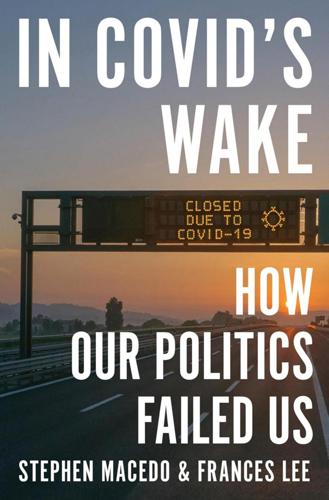
In Covid's Wake: How Our Politics Failed Us
by
Stephen Macedo
and
Frances Lee
Published 10 Mar 2025
As shown in figure 5.12, states with more stringent Covid restrictions did not systematically fare better than those with less stringent restrictions.74 Controlling for the states hardest hit in the first wave (before restrictions could have made a difference) does not alter the null result. a note on correlation and causation Cross-sectional analyses such as presented h ere cannot definitively tell us whether pandemic restrictions had an effect on Covid mortality. In theory, the absence of correlation between pandemic restrictions and outcomes could stem from an endogenous p rocess. If states imposed 150 chapter 5 more stringent pandemic restrictions during more severe Covid waves and maintained lighter restrictions during less severe waves, it might appear as though Covid restrictions accomplished little or nothing.
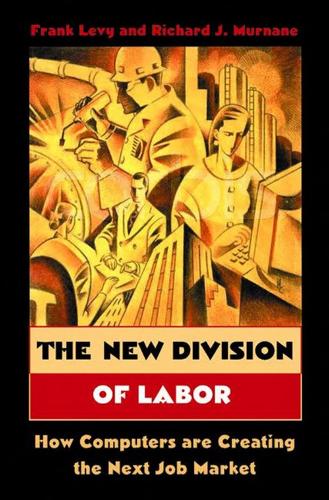
The New Division of Labor: How Computers Are Creating the Next Job Market
by
Frank Levy
and
Richard J. Murnane
Published 11 Apr 2004
The share of the labor force working in occupations that emphasize nonroutine manual tasks declined throughout the period. This reflects in part the movement of manufacturing jobs offshore. The data in figures 3.2 (occupations) and 3.5 (tasks) are consistent with our description of computers’ economic impacts. But this correlation does not prove causation—the trend in both figures could have been caused by other factors. To make a stronger case, we must increase the level of detail to look at changes within industries. If our argument is right—if the adoption of computers shifts work away from routine tasks and toward tasks requiring expert thinking and complex communication—it should be observable when we look within industries.
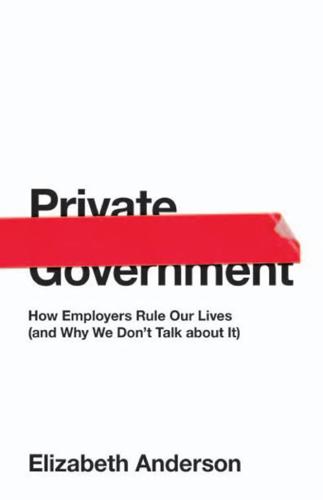
Private Government: How Employers Rule Our Lives (And Why We Don't Talk About It)
by
Elizabeth S. Anderson
Published 22 May 2017
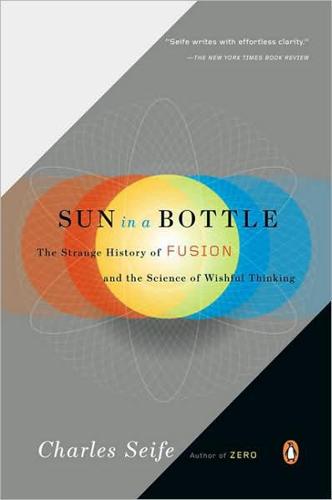
Sun in a Bottle: The Strange History of Fusion and the Science of Wishful Thinking
by
Charles Seife
Published 27 Oct 2009
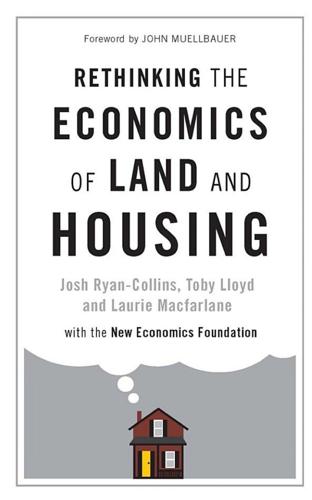
Rethinking the Economics of Land and Housing
by
Josh Ryan-Collins
,
Toby Lloyd
and
Laurie Macfarlane
Published 28 Feb 2017
An International Monetary Fund (IMF) study of thirty-six advanced and emerging economies (including the UK) found that a 10 percentage point growth in mortgage credit as a percentage of GDP was associated with a 16 percentage point higher growth of real house prices (IMF, 2011). Of course, correlation is not causation and it is likely that rising house prices, potentially driven by other factors, lead to an increase in demand for mortgage credit which itself helps to drive up house prices (Goodhart and Hofmann, 2008). Figure 5.3 Disaggregated nominal credit stocks (loans outstanding) as % of GDP in the UK since 1963 (source: Bank of England, GDP from ONS; credit series are break adjusted) Figure 5.3 shows how, since the early 1980s, UK banks have significantly increased their lending to domestic mortgages relative to GDP.
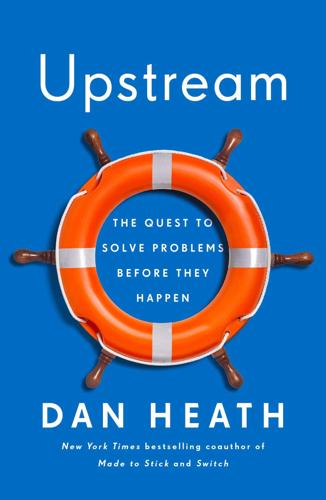
Upstream: The Quest to Solve Problems Before They Happen
by
Dan Heath
Published 3 Mar 2020
A woman pressured into a C-section becomes a champion for thousands of other mothers she’ll never meet. The upstream advocate concludes: I was not the one who created this problem. But I will be the one to fix it. That shift in ownership—and its consequences—is what we will analyze next. I. The old warnings about correlation not equaling causation apply here. There was no guarantee that improving freshmen’s FOT scores would boost the graduation rates. But there were good reasons to believe the two were linked causally, and of course they were tracking their efforts so that they could prove it. CHAPTER 3 A Lack of Ownership Until 1994, Ray Anderson, the founder of the industrial carpet firm Interface, had lived every entrepreneur’s dream.
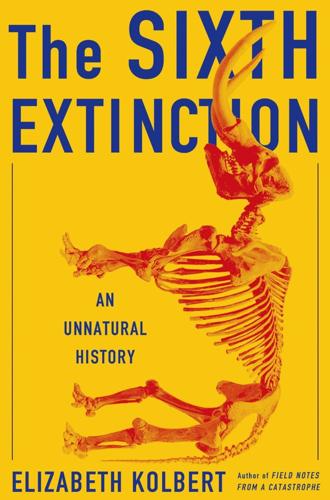
The Sixth Extinction: An Unnatural History
by
Elizabeth Kolbert
Published 11 Feb 2014
” * * * THOSE researchers who persist in believing that climate change killed the megafauna say that the certainty of Martin, Diamond, and Johnson is misplaced. In their view, nothing has been proved about the event, “categorically” or otherwise, and everything in the preceding paragraphs is oversimplified. The dates of the extinctions are not clear-cut; they don’t line up neatly with human migration; and, in any case, correlation is not causation. Perhaps most profoundly, they doubt the whole premise of ancient human deadliness. How could small bands of technologically primitive people have wiped out so many large, strong, and in some cases fierce animals over an area the size of Australia or North America? John Alroy, an American paleobiologist who now works at Australia’s Macquarie University, has spent a lot of time thinking about this question, which he considers a mathematical one.
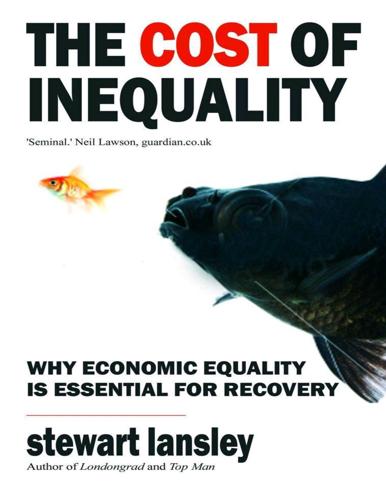
The Cost of Inequality: Why Economic Equality Is Essential for Recovery
by
Stewart Lansley
Published 19 Jan 2012
‘And it began to raise the question of whether there are causal links between financial deregulation, economic inequality and instability.’240 Of course, as Moss has accepted, correlation is not the same as causation. As one of his critics, R Glenn Hubbard, dean of the Columbian Business School and top economic adviser to former President George W Bush has put it, ‘Cars go faster every year, and GDP rises every year, but that doesn’t mean speed causes GDP.’ 241 The correlation could mean that the direction of causation is from slump to inequality. Yet what is significant about this pattern is that in both the 1920s and the pre-2007 period, inequality rose sharply in the years before recession took hold.

Surviving AI: The Promise and Peril of Artificial Intelligence
by
Calum Chace
Published 28 Jul 2015
It turns out that having more data beats having better data, if what you want is to be able to understand, predict and influence the behaviour of large numbers of people. It also turns out that if you find a reliable correlation then it often doesn’t matter if there is a causal link between the two phenomena. We all know of cases where correlation has been mistaken for causation and ineffective or counter-productive policies have been imposed as a result. But if a correlation persists long enough it may provide decision-makers with a useful early warning signal. For instance, a supermarket and an insurance company shared data sets and discovered that men buying red meat and milk during the day were better insurance risks than men buying pasta and petrol late at night.
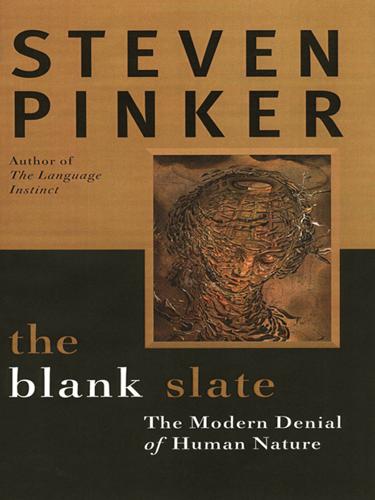
The Blank Slate: The Modern Denial of Human Nature
by
Steven Pinker
Published 1 Jan 2002
The suggestion that a language can be “grown-up” and “masculine” is so subjective as to be meaningless. He attributes a personality trait to an entire people without any evidence, then advances two theories—that phonology reflects personality, and that warm climates breed laziness—without invoking even correlational data, let alone proof of causation. Even on his home ground the reasoning is flimsy. Languages with a consonant-vowel syllable structure like Hawaiian call for longer words to convey the same amount of information, hardly what you would expect in a people without “vigor or energy.” And the consonant-encrusted syllables of English are liable to be swallowed and misheard, hardly what you would expect from a logical, businesslike people.
…
The parents of a quiet, spacey child might feel they are talking to a wall and jabber at him less. The parents of a docile child can get away with setting firm but reasonable limits; the parents of a hellion might find themselves at their wits’ end and either lay down the law or give up. In other words, correlation does not imply causation. A correlation between parents and children does not mean that parents affect children; it could mean that children affect parents, that genes affect both parents and children, or both. It gets worse. In many studies, the same parties (in some studies the parents, in others the children) supply the data on both the parents’ behavior and the child’s.
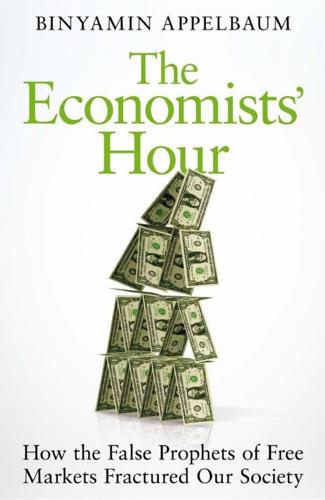
The Economists' Hour: How the False Prophets of Free Markets Fractured Our Society
by
Binyamin Appelbaum
Published 4 Sep 2019
Leading economists insisted governments could adjust economic conditions like the settings on a thermostat. The economist A. W. Phillips plotted the relationship between unemployment and wages in the United Kingdom over the previous century, and found wages tended to rise when unemployment was low. Enthusiastically conflating correlation and causation, economists concluded governments could glide up and down a “Phillips curve,” trading off unemployment and inflation. In an influential paper published in 1960, Samuelson and Robert Solow, two of the most important economists of the postwar era, said the American government could choose from a “menu” of unemployment and inflation rates.
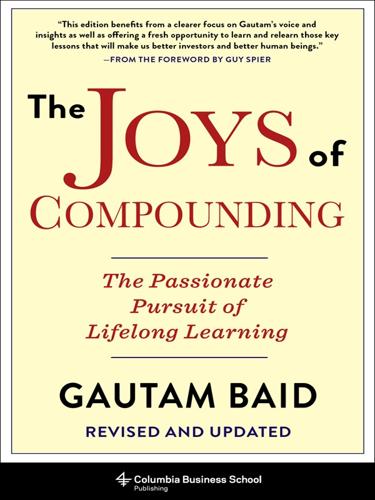
The Joys of Compounding: The Passionate Pursuit of Lifelong Learning, Revised and Updated
by
Gautam Baid
Published 1 Jun 2020
It’s the only thing you can control [emphasis added].4 Fooled by Randomness What you should learn when you make a mistake because you did not anticipate something is that the world is difficult to anticipate. That’s the correct lesson to learn from surprises—that the world is surprising. —Daniel Kahneman Because logic thrives on cause and effect, analytic thinkers often confuse coincidence with causality and correlation with causation. A typical by-product of the analyzer’s need for causality can be seen when the talking heads, pundits, and experts review the day’s market action. In reality, the market is moving up or down on any given day because of a multitude of interrelated factors that are too complex, diffuse, and intangible to be identified.
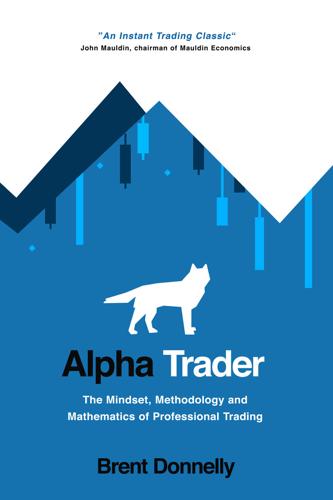
Alpha Trader
by
Brent Donnelly
Published 11 May 2021
So I Googled: “What are the major exports of New Zealand?” and the answer is: Milk products. Milk, butter, and cheese account for 25% of NZ exports and milk prices are an important marginal driver of NZ GDP43. So I overlaid a chart of dairy futures with the New Zealand dollar and DING! There was a pretty good fit. Correlation / causation yadda, yadda but when two things overlay and there is a logical connection between them in the real economy, you are probably onto something. When I first published the overlay in 2006, I got a few hahaha emails in response. But eventually, the idea caught on and now it’s a common variable for people to look at when assessing the fair value of the NZD.
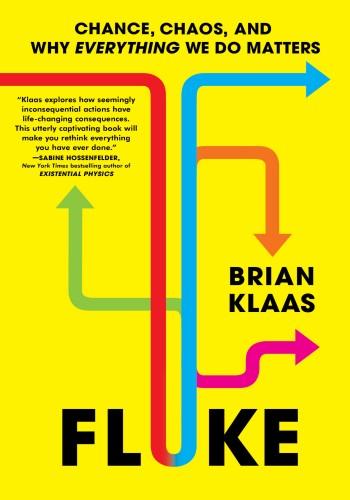
Fluke: Chance, Chaos, and Why Everything We Do Matters
by
Brian Klaas
Published 23 Jan 2024
In the American Political Science Review, that figure was 4 out of 743. And in the American Journal of Sociology, there were zero—count ’em—zero articles out of 394 that tried to make predictions. Instead, social researchers chase what I call the Holy Grail of Causality. This is an admirable goal because we all know that correlation isn’t causation, and disaster lurks when you conflate the two. But like the mythical Holy Grail, the Holy Grail of Causality proves elusive. We so badly crave clear evidence that one X causes one Y, and so long as we continue our quest for the Holy Grail of Causality within our storybook reality, we convince ourselves we might just find it.
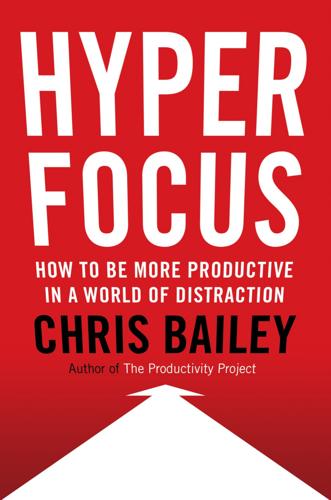
Hyperfocus: How to Be More Productive in a World of Distraction
by
Chris Bailey
Published 31 Jul 2018
And they do so while working on more projects at once. Compared with men, women are also happier and more engaged in the workplace. * Something that’s gone down since the introduction of the smartphone? Chewing gum sales. Since 2007—the year the iPhone was introduced—gum sales have plummeted 17 percent. Obviously correlation doesn’t imply causation, but it does make you wonder. * Curiously, the distractions you’re most likely to fall victim to differ depending on what you’re working on. When you’re doing rote work, you’re significantly more likely to visit Facebook or initiate a face-to-face interaction with a coworker.
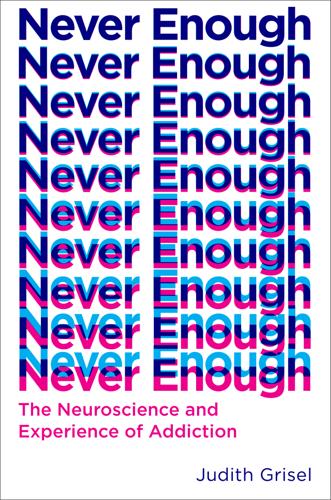
Never Enough: The Neuroscience and Experience of Addiction
by
Judith Grisel
Published 15 Feb 2019
There’s been a long-standing debate, akin to one about the relationship between cancer and smoking in many ways, about whether regular marijuana smoking leads to an amotivational syndrome (“amotivational” means lacking motivation). For instance, does regular use lead to spending long hours on the couch watching cartoons, or does it just so happen that people who like to sit around watching television (or poring through shells at the beach) also enjoy marijuana? Because correlation doesn’t mean causation, cigarette companies argued for decades that a predisposition for cancer and the tendency to inhale cigarette smoke just coincidentally occur in the same people. In both cases, common sense and mounting evidence point to the same thing. Downregulation of CB1 receptors might make the user more suitable for jobs that don’t require creativity or innovation, exactly the effects that initial exposure seemed to stimulate.
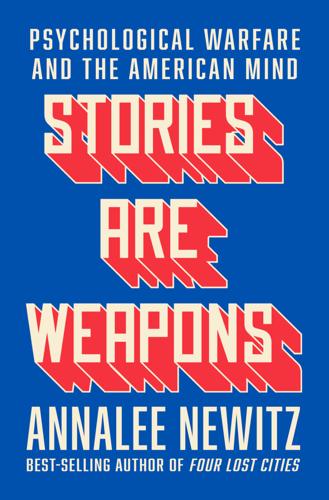
Stories Are Weapons: Psychological Warfare and the American Mind
by
Annalee Newitz
Published 3 Jun 2024
As he said in regard to Losing Ground, his previous book: “A huge number of well-meaning whites fear that they are closet racists, and this book tells them they are not. It’s going to make them feel better about things they already think but do not know how to say.”17 The Bell Curve’s data about higher IQs being correlated with higher wages gave them a way to say it. But, as scientists are fond of saying, correlation does not equal causation. The Bell Curve provided absolutely no evidence that high IQ causes wealth. This supposedly scientific book was a weapon, deploying the half-truths and outright fabulations of a psyop to argue that Black people and the poor were America’s true enemies. The seductions of false rationality There are two basic falsehoods at the heart of Herrnstein and Murray’s book: one is that there is a widely agreed-upon system for measuring intelligence accurately, and the other is that welfare will lead to a dark future that sounds a lot like the 2006 movie Idiocracy, where Americans have become dim-witted slackers led by a Black president.18 To persuade their readers, Murray and Herrnstein swaddled these lies in false rationality, making their opinions look like facts.
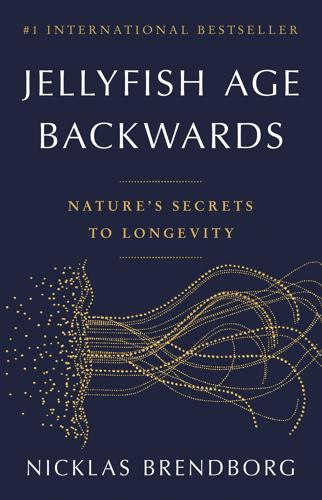
Jellyfish Age Backwards: Nature's Secrets to Longevity
by
Nicklas Brendborg
Published 17 Jan 2023
But the fact that someone wears glasses obviously doesn’t affect their lifespan. We couldn’t pick some guy off the street and prolong his life by putting a pair of glasses on him. Nor would I advise you to intentionally ruin your vision in a quest for longevity. You might have heard the phrase ‘correlation doesn’t imply causation’. Essentially, two things can be correlated (even tightly) without one causing the other. The natives of the South Pacific observed that there was a tight correlation between making gestures towards the sky and the arrival of an airplane. But these gestures had nothing to do with causing the airplane to arrive.
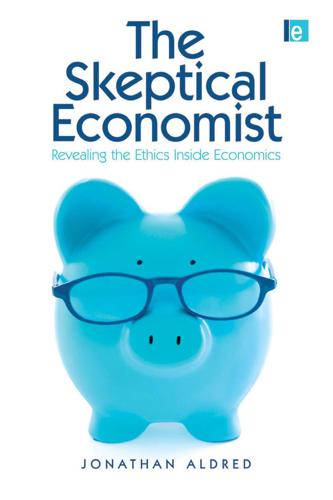
The Skeptical Economist: Revealing the Ethics Inside Economics
by
Jonathan Aldred
Published 1 Jan 2009
With its breezy optimism the happiness experts’ reading of the evidence ignores some awkward objections. To begin with, it is easy to pick holes in the neuroscience. As ever, the problem is not the science itself, but the interpretative spin put on the results. To begin with, the core of the neuroscientific research is a set of correlations which do not demonstrate any causation. There is little understanding of why external stimuli are associated with increased brain activity, so there is no basis for assuming causation. And even the correlations are less robust than they appear, because of the assumptions which have been made to derive them. For instance, most of the research adopts the ‘subtractive method’, in which measurements of brain activity in the control condition (when there is no stimulus) are subtracted from measurements in the experimental condition (when the stimulus is present).
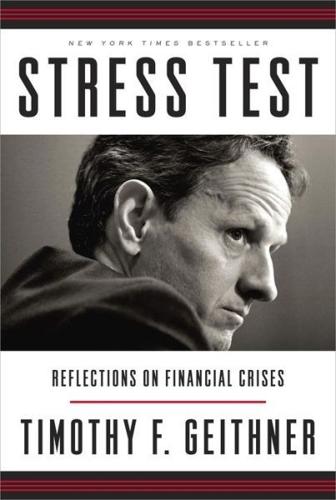
Stress Test: Reflections on Financial Crises
by
Timothy F. Geithner
Published 11 May 2014
And while the Bush team liked to criticize the bailouts of the Clinton era, they ultimately supported large IMF rescue packages for Brazil, Uruguay, and Turkey with the familiar wall-of-money strategy. That was what the IMF was for. Years later, Mervyn King, the governor of the Bank of England, joked at a farewell dinner that I was a textbook proof of the difference between correlation and causation. “Tim was present at all the crises,” he said. “But he didn’t cause the crises. The crises caused him.” Again and again, I got to see how indulgent capital financed booms, how cracks in confidence turned boom to bust to panic, how crisis managers could help contain panics with decisiveness and overwhelming force, and how the kind of actions needed to defuse crises were inherently unpopular and fraught with risk.
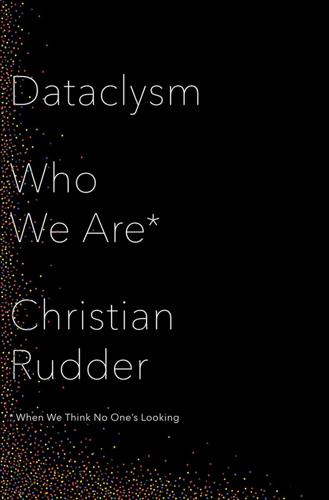
Dataclysm: Who We Are (When We Think No One's Looking)
by
Christian Rudder
Published 8 Sep 2014
To interpret results—a necessity in any book that isn’t just reams of numbers—I had to choose one explanation from a variety of possibilities. Is there some force besides age behind what I call Wooderson’s law (the fact that straight men of all ages are most interested in twenty-year-old women)? Perhaps. But I think it is very unlikely. “Correlation does not imply causation” is a good thing for everyone to keep in mind—and an excellent check on narrative overreach. But a snappy phrase doesn’t mean that the question of causation isn’t itself interesting, and I’ve tried to attribute causes only where they are most justified. For almost all the parts of Dataclysm that overlap with posts on OkCupid’s blog, I chose to redo the work from scratch, on the most recent data, rather than quote my own previous findings.

Heart: A History
by
Sandeep Jauhar
Published 17 Sep 2018
In another study, menopausal women with no history of cardiovascular disease who expressed more hopelessness on a psychological questionnaire had more carotid artery thickening and an older vascular age than matched patients who felt good about their lives.* No doubt many of these studies are small, and of course correlation does not prove causation; it is certainly possible that stress leads to unhealthy habits—poor nutrition, less physical activity, more smoking—and this is the real reason for the increased cardiovascular risk. But as with the association of smoking with lung cancer, when so many studies show the same thing and there are mechanisms to explain a causal relationship, it seems perverse to deny that one probably exists.
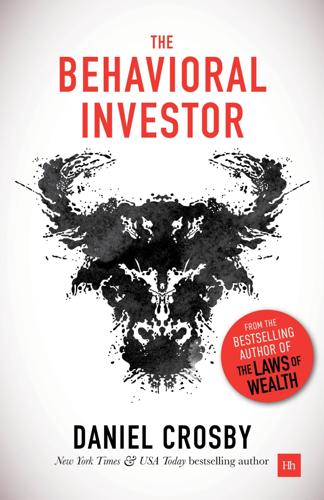
The Behavioral Investor
by
Daniel Crosby
Published 15 Feb 2018
And then consider the strange case of the correlation between moves in the S&P 500 and Bangladeshi butter production. Yes, you read that right – Bangladeshi butter production. This relationship, which accounts for 95% of covariance, is of course spurious even though the fit is nearly perfect. The relationship was discovered and set forth by researchers anxious to prove the old axiom that correlation does not equal causation and to show that by analysing a glut of information you are bound to find relationships, even if no causal relationship exists. In a world of big data, we all too often fail to see the forest of “is this a good business?” for looking at the trees of esoteric data points. No matter what exotic economic measures professors and pundits may dream up in the future, there will always be some that show some fleeting correlation with stock returns, but fail to pass the sniff test of “Should it matter when determining whether or not to become partial owner of a business?”
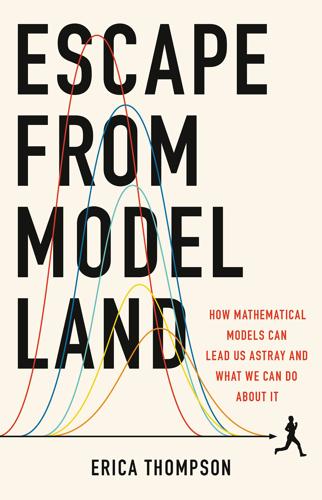
Escape From Model Land: How Mathematical Models Can Lead Us Astray and What We Can Do About It
by
Erica Thompson
Published 6 Dec 2022
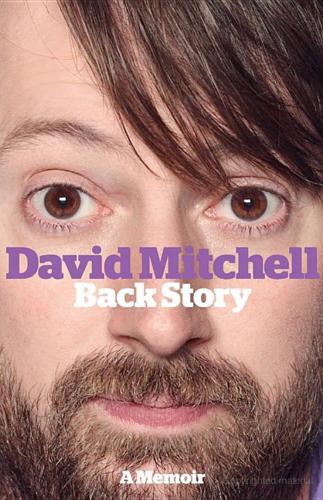
David Mitchell: Back Story
by
David Mitchell
Published 10 Oct 2012
I’m always suspicious of that ‘comedy comes from pain’ reasoning. Trite magazine interviewers talk to comedians, tease a perfectly standard amount of doubt, fear and self-analysis out of them and infer therefrom that it’s this phenomenon of not-feeling-perpetually-fine that allowed them to come up with that amusing routine about towels. Well, correlation is not causation, as they say on Radio 4’s statistics programme More or Less. Everyone’s unhappy sometimes, and not everyone is funny. The interviewers may as well infer that the comedy comes from the inhalation of oxygen. Which of course it partly does. We have no evidence for any joke ever having emanated from a non-oxygen-breathing organism.

Ghettoside: A True Story of Murder in America
by
Jill Leovy
Published 27 Jan 2015
Over the years, in search of clarity on clearance rates, I have conducted surveys of case outcomes by calling or visiting the assigned detectives or their field supervisors and asking for updates. For years now, I have tried to penetrate the mystery of disproportionate black homicide. Correlation is not causation. I wanted to know exactly what was happening and why. I’ve sought answers in reported facts and observations, and tried to avoid pat speculation and received wisdom. Mostly, I’ve relied on what I have myself seen or heard directly from those who are close to homicide. I have made deliberate efforts to listen to the bereaved—to seek out the parents, siblings, spouses, and children of black homicide victims, whose viewpoints are under-represented in our national debates over criminal justice.

Quantum Computing for Everyone
by
Chris Bernhardt
Published 19 Mar 2019

Rule of the Robots: How Artificial Intelligence Will Transform Everything
by
Martin Ford
Published 13 Sep 2021
Yann LeCun, for example, believes it may well be the gateway that leads to progress on nearly every other aspect of general intelligence, saying, “Until we figure out how to do this… we’re not going to make significant progress because I think that’s the key to learning enough background knowledge about the world so that common sense will emerge. That’s the main hurdle.”54 Understanding Causation Students studying statistics are often reminded that “correlation does not equal causation.” For artificial intelligence, and especially deep learning systems, understanding ends at correlation. Judea Pearl, a renowned computer scientist at UCLA, has over the past thirty years revolutionized the study of causation and constructed a formal scientific language for expressing causal relationships.

Superbloom: How Technologies of Connection Tear Us Apart
by
Nicholas Carr
Published 28 Jan 2025
The extent of social media’s psychological harm has been debated for years. Skeptics point out that some studies show that social media can have psychological benefits, giving young people more social connections. That’s true. For some kids, it’s a lifeline. The skeptics are also quick to stress that correlation does not prove causation. That’s also true. But while spreading doubts about the causative role of social media in mental distress may have been warranted a decade ago, it’s hard to justify now. It comes off as a head-in-the-sand response, and, given the numbers, an irresponsible one. As Haidt wrote in a 2023 review of recent research, “There is now a great deal of evidence that social media is a substantial cause, not just a tiny correlate, of depression and anxiety, and therefore of behaviors related to depression and anxiety, including self-harm and suicide.”34 In her 2023 book, Generations, Jean Twenge offers an exhaustive analysis of data from the longitudinal studies of young people’s attitudes and behavior.35 On the basis of timing and other factors, she rules out alternative phenomena that have been suggested as possible primary causes for the mental illness spike, such as economic hardship, political worries, fears about climate change or school shootings, parental and academic pressures, and stresses from the pandemic.
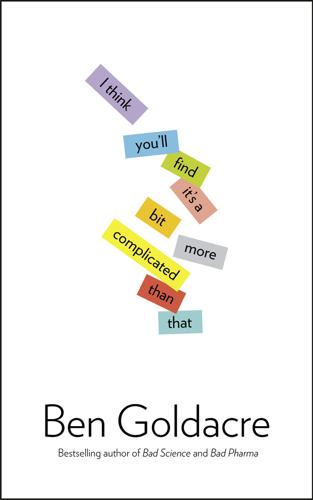
I Think You'll Find It's a Bit More Complicated Than That
by
Ben Goldacre
Published 22 Oct 2014
Systematic reviews of randomised trials are considered to be the most reliable: because they ensure that your conclusions are based on all of the information, rather than just some of it; and because randomised trials – when conducted properly – are the least vulnerable to bias, and so they are the ‘most fair tests’. After these, there are observational studies: these are much more prone to bias, and produce findings which might just reflect correlation instead of causation (‘People who choose to eat vegetables live longer’) but they are generally cheaper to do. Then there are individual case reports. And then, finally, because medical academics like to think they’re funny, right at the bottom of the hierarchy you will find something called ‘expert opinion’.

Happy City: Transforming Our Lives Through Urban Design
by
Charles Montgomery
Published 12 Nov 2013
And casual encounters (such as, say, the kind that might happen around a volleyball court on a Friday night) are just as important to belonging and trust as contact with family and close friends. It is hard to say which condition is lifting the others—Helliwell admits that his statistical analysis demonstrates correlation rather than causation—but what is strikingly apparent is that trust, feelings of belonging, social time, and happiness are like balloons tied together in a bouquet. They rise and fall together. This suggests that it has been a terrible mistake to design cities around the nuclear family at the expense of other ties.
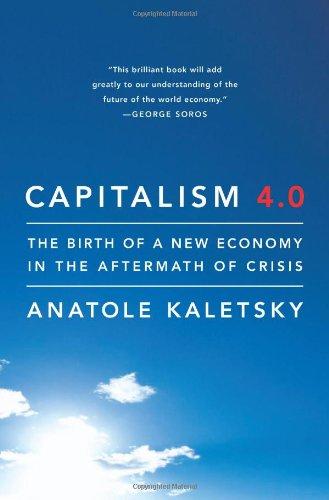
Capitalism 4.0: The Birth of a New Economy in the Aftermath of Crisis
by
Anatole Kaletsky
Published 22 Jun 2010
It is certainly true that the Japanese financial system remained paralyzed for a decade as banks and borrowers survived on government life support and failed to recognize their true losses. It is true also that the Japanese economy spent twenty years almost continuously in recession. But correlation is not causation. The question that needs to be asked about the Japanese experience is whether government support for struggling banks and overindebted borrowers caused the twenty years of stagnation or whether twenty years of economic stagnation prevented a recovery for weak borrowers and banks. A similar question must be asked about a fascinating and much-quoted historic study, coauthored by Carmen Reinhart and Kenneth Rogoff, the IMF’s former chief economist, which looked at the macroeconomic effect of financial crises in dozens of countries over the past six hundred years.

The Patient Will See You Now: The Future of Medicine Is in Your Hands
by
Eric Topol
Published 6 Jan 2015
Later, a team of four highly respected data scientists wrote in Science that GFT had systematically overestimated the prevalence of flu every week since August 2011, going on to criticize “big data hubris,” the “often implicit assumption that big data are a substitute for, rather than a supplement to, traditional data collection and analysis.”17 They attacked the “algorithm dynamics” of GFT, pointing out that the forty-five search terms used were never documented, key elements such as core search terms were not provided in the publications, and the original algorithm did not undergo constant adjustment and recalibration. What’s more, while the GFT algorithm was static, the search engine itself underwent constant change—as many as six hundred revisions per year—which was not taken into account. Many other editorialists opined on the matter.13–15,18,19 Correlation rather than causation and the critical absence of context were the most prominent critique points. There was also the sampling issue as the crowdsourcing was limited to those doing searches on Google. Further, there was a major analytical problem: GFT performed so many multiple comparisons of data that they were likely to be getting spurious results.
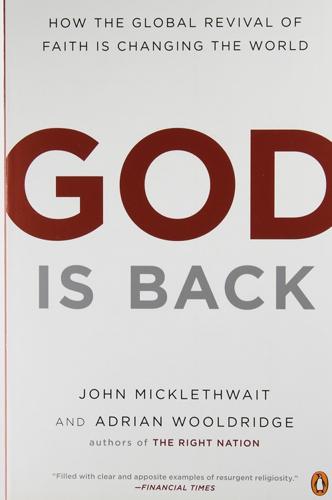
God Is Back: How the Global Revival of Faith Is Changing the World
by
John Micklethwait
and
Adrian Wooldridge
Published 31 Mar 2009
Since then a host of further studies, including the bipartisan 1991 National Commission on Children, have concluded that religious participation is associated with lower rates of crime and drug use. James Q. Wilson, perhaps America’s preeminent criminologist, summarizes a mountain of evidence from the social sciences succinctly: “Religion, independent of social class, reduces deviance.”9 The obvious objection to these studies is that they deal with correlation rather than causation. Jonathan Gruber, a secular-minded economist from the Massachusetts Institute of Technology and an alumnus of the Clinton administration, has tried to find a way around this in a study of church attendance and economic well-being. Gruber started off by noting that people are more likely to go to church if their neighbors share their faith.

Rule Britannia: Brexit and the End of Empire
by
Danny Dorling
and
Sally Tomlinson
Published 15 Jan 2019
As one voter retorted: ‘I am quite trim and voted out of the undemocratic EU ruled by unelected commissioners.’18 On 30 June 2016, ITV reported the news as ‘UEA research claims link between obesity and Brexit voters’.19 On 1 July, the Daily Express ran the headline ‘Outrage after academic says Brexit voters were probably FAT’,20 reporting that ‘the jibe is the latest insult fired at leave voters already labelled “stupid” and “Little Englanders” on social media sites’. No newspaper asked why the correlation was so high and what it could really be telling us. Areas in which people tend to be thinner are often very similar to each other in many other ways. Peter Ormosi managed to produce one of the best examples of why correlation is not causation. He used public health data to suggest that the more obese people there were in an area, the more the area voted Leave.21 Many other analyses showed that the fewer immigrants there were in the area, the more people voted to leave, in both working- and middle-class areas. The village in the Cotswolds where the trimmer one of the two of us lives was very much pro-Leave, for example, and is home to almost no immigrants from overseas.
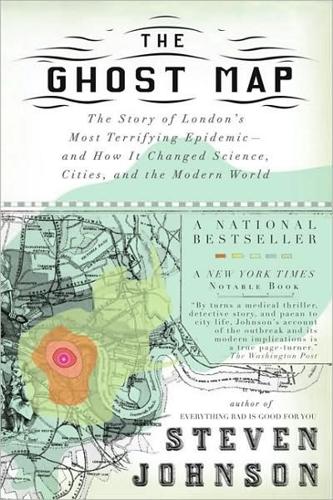
The Ghost Map: A Street, an Epidemic and the Hidden Power of Urban Networks.
by
Steven Johnson
Published 18 Oct 2006
Farr thought that the single most reliable predictor of environmental contamination was elevation: the population living in the putrid fog that hung along the riverbanks were more likely to be seized by the cholera than those living in the rarefied air of, say, Hampstead. And so, after the 1849 outbreak, Farr began tabulating cholera deaths by elevation, and indeed the numbers seemed to show that higher ground was safer ground. This would prove to be a classic case of correlation being mistaken for causation: the communities at the higher elevations tended to be less densely settled than the crowded streets around the Thames, and their distance from the river made them less likely to drink its contaminated water. Higher elevations were safer, but not because they were free of miasma.

Green Swans: The Coming Boom in Regenerative Capitalism
by
John Elkington
Published 6 Apr 2020
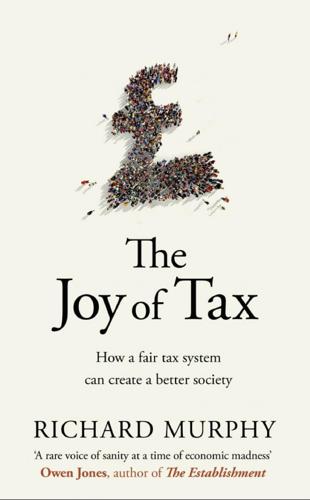
The Joy of Tax
by
Richard Murphy
Published 30 Sep 2015
If countries with aggregate tax rates of less than 10 per cent are excluded, the relationship is very strong: as tax rates rise so does GDP per capita markedly increase on average. Even when considering countries with aggregate tax rates of over 39 per cent (the UK’s rate) (but with Zimbabwe excluded as an aberration in the data) the relationship is positive, i.e. income still rises with the aggregate tax rate. Now that does not of itself prove anything – correlation is not proof of causation – but it does seem to suggest that higher-taxed states are better off, and it’s my suspicion that most people know this. They realize that there is in fact a relationship between tax and well-being and that it is strongly positive for a country and so, in turn, for them. And that is why, as HM Revenue & Customs have put it, the vast majority of tax is paid without them having to do (almost) anything.
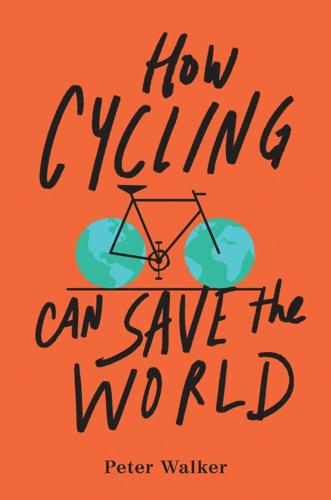
How Cycling Can Save the World
by
Peter Walker
Published 3 Apr 2017
For example, it found evidence that adult cyclists who opt to wear helmets tend to be more safety-conscious anyway, while helmeted children are more likely to ride in parks rather than streets. So, even as helmeted cyclists suffered fewer head injuries, they also had fewer serious nonhead injuries. As is so often the case with dubious science, correlation did not necessarily equal causation. Finally, the study noted, helmet use laws had often come into force at the same time as other road safety measures, such as random driver alcohol breath testing in parts of Australia, which was likely to have even more impact on safety. The conclusion? The idea that bike helmet laws directly improve overall safety for cyclists doesn’t appear to be backed by any evidence from countries where these laws have actually been passed.
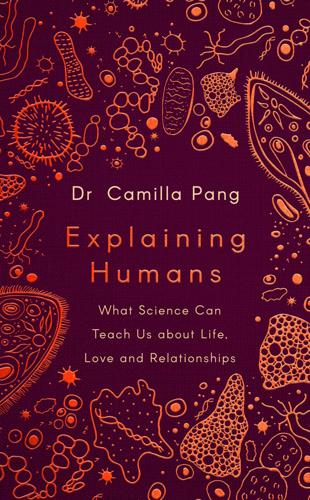
Explaining Humans: What Science Can Teach Us About Life, Love and Relationships
by
Camilla Pang
Published 12 Mar 2020

Collapse
by
Jared Diamond
Published 25 Apr 2011
Among McGovern's papers are Thomas McGovern, "The Vinland adventure: a North Atlantic perspective" (North American Archaeologist 2:285-308 (1981)); Thomas McGovern, "Contributions to the paleoeconomy of Norse Greenland" (Acta Archaeologica 54:73-122 (1985)); Thomas McGovern et al., "Northern islands, human era, and environmental degradation: a view of social and ecological change in the medieval North Atlantic" (Human Ecology 16:225-270 (1988)); Thomas McGovern, "Climate, correlation, and causation in Norse Greenland" (Arctic Anthropology 28:77-100 (1991)); Thomas McGovern et al., "A vertebrate zooarchaeology of Sandnes V51: economic change at a chieftain's farm in West Greenland" (Arctic Anthropology 33:94-121 (1996)); Thomas Amorosi et al, "Raiding the landscape: human impact from the Scandinavian North Atlantic" (Human Ecology 25:491-518 (1997)); and Tom Amorosi et al, "They did not live by grass alone: the politics and paleoecology of animal fodder in the North Atlantic region" (Environmental Archaeology 1:41-54 (1998)).
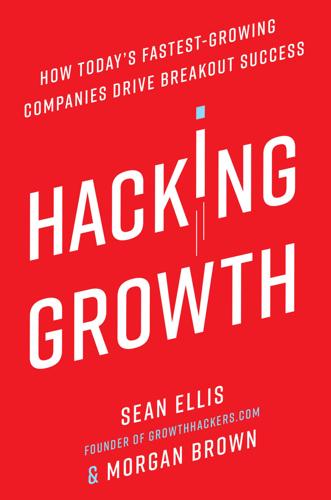
Hacking Growth: How Today's Fastest-Growing Companies Drive Breakout Success
by
Sean Ellis
and
Morgan Brown
Published 24 Apr 2017
The analysis of the highly retained users who came back at least seven times a month revealed that these people were generally following a number of other users that hovered around 30; some were following many more, but 30 seemed to be a “tipping point” number that hooked people to coming back for more. But Elman and the team didn’t stop there. They knew that, as the mantra in statistical testing goes, correlation does not equal causation. Now, at that point they might have started just trying to boost the number of people that users were following and left it at that. And indeed that might have produced appreciable results. But what if the sheer desire to follow a significant number of people wasn’t the underlying reason that following 30 people made the product sticky?

The Hidden Family
by
Charles Stross
Published 2 May 2005
Brill was still not much more than a teenager with a sheltered upbringing. But Roland knew just how nasty things could get. If I trust him, she thought wistfully. Someone had murdered the watchman and installed the bomb in the warehouse. She’d told Roland about the place, and then … correlation does not imply causation, she told herself. In the end she compromised halfway, taking the T into town and finding a diner with a good range of exit options before switching on the phone and dialing. That way, even if someone had grabbed Roland and was actively tracing the call, they wouldn’t find her before she ended the call.
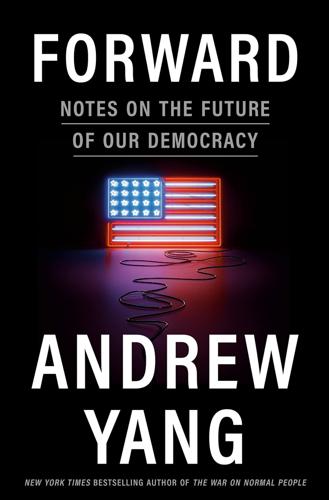
Forward: Notes on the Future of Our Democracy
by
Andrew Yang
Published 15 Nov 2021
All of the checking on old classmates, clicking, and posting makes us less happy. Social media use has been linked to a surge in anxiety, depression, and loneliness, fueled by the mechanics that maximize both engagement and data collection for the tech companies. For a while, this correlation was noted, but causation was less clear. But starting in 2018, studies clearly indicated that social media use makes you less mentally healthy. In one study, 140 undergraduates reported better mental health when their use of social media was restricted. These effects were particularly strong among those who had started the study depressed.
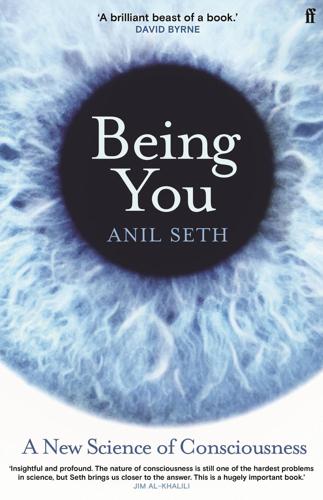
Being You: A New Science of Consciousness
by
Anil Seth
Published 29 Aug 2021
Although related to the flow of conscious perception, the neural mechanisms responsible for attention and verbal report – or other prerequisites and downstream consequences – should not be confused with those that are responsible for the conscious perception itself. The deeper problem is that correlations are not explanations. We all know that mere correlation does not establish causation, but it is also true that correlation falls short of explanation. Even with increasingly ingenious experimental designs and ever more powerful brain imaging technologies, correlation by itself can never amount to explanation. From this perspective, the NCC strategy and the hard problem are natural bedfellows.
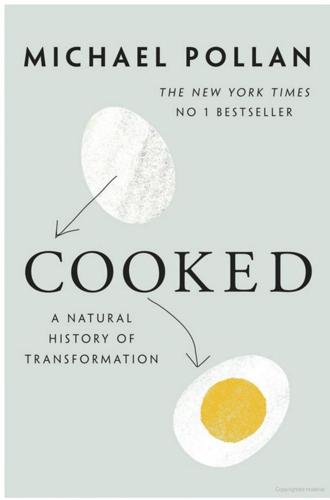
Cooked: A Natural History of Transformation
by
Michael Pollan
Published 22 Apr 2013
A., et al., “Ingestion of Lactobacillus Strain Regulates Emotional Behavior and Central GABA Receptor Expression in a Mouse via the Vagus Nerve,” Proceedings of the National Academy of Sciences 108 No. 38 [2011]: 16050–55). * It has long been recognized that people with autism and schizophrenia often suffer from gastrointestinal disorders, and some recent work suggests there may be anomalies in their microflora. It’s important to remember that correlation is not causation, and if there is causation, we don’t know which way it goes. But evidence is accumulating that certain microbes in our bodies can affect our behavior and do so for their own purposes. Toxoplasma gondii, a parasite found in more than one billion people worldwide, has been shown to inspire neurotic self-destructive behavior in rats.
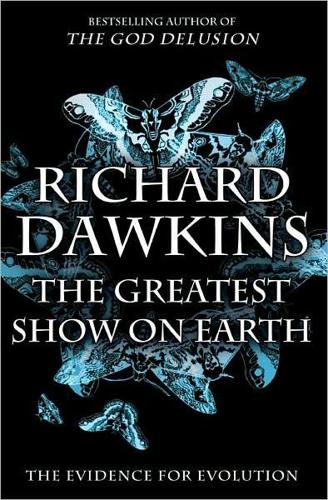
The Greatest Show on Earth: The Evidence for Evolution
by
Richard Dawkins
Published 21 Sep 2009
We, of course, know better, but the only real test of the hypothesis would be experimentally to ring the St A’s chime at random times rather than once per hour. The Martian’s prediction (which would of course be disproved in this case) is that St B’s clock will still chime immediately after St A’s. It is only experimental manipulation that can determine whether an observed correlation truly indicates causation. If your hypothesis is that the non-random survival of random genetic variation has important evolutionary consequences, the experimental test of the hypothesis would have to be a deliberate human intervention. Go in and manipulate which variant survives and which doesn’t. Go in there and choose, as a human breeder, which kinds of individuals get to reproduce.
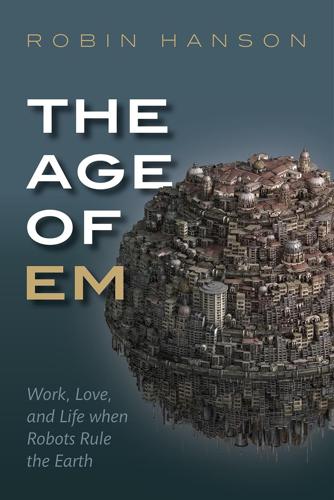
The Age of Em: Work, Love and Life When Robots Rule the Earth
by
Robin Hanson
Published 31 Mar 2016
For example, people today tend to be both happier and more productive when they have jobs, autonomy at work, health, beauty, money, marriage, religion, intelligence, extroversion, conscientiousness, agreeableness, and non-neuroticism (Myers and Diener 1995; Lykken and Tellegen 1996; Steen 1996; Nguyen et al. 2003; Barrick 2005; Roberts et al. 2007; Sutin et al. 2009; Erdogan et al. 2012; Diener 2013; Ali et al. 2013; Stutzer and Frey 2013). Of course correlation isn’t causation, and there is much we don’t understand here. Even so, the consistency of the relationship between happiness and productivity gives us much reason to hope that more productive ems may on average be happier than people today. Yes, perhaps work productivity makes people happier by raising their relative status, and by definition relative status can’t rise for everyone.

First Light: Switching on Stars at the Dawn of Time
by
Emma Chapman
Published 23 Feb 2021
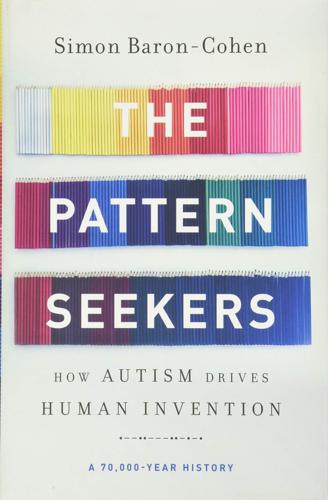
The Pattern Seekers: How Autism Drives Human Invention
by
Simon Baron-Cohen
Published 14 Aug 2020
I use the word “association” here because we cannot be sure that these genes directly cause differences in empathy. The relevant genes may, for example, simply be involved in aspects of brain function that influence empathy, or they may influence other genes or hormones that influence empathy. Correlation famously does not equal causation. But the involvement of genetics at all points to empathy having evolved. 26. On the genetic association with systemizing, see V. Warrier et al. (2019), “Social and non-social autism symptom and trait domains are genetically dissociable,” Communications Biology 2, 328. The SNPs that were significantly associated with systemizing were rs4146336 (on chromosome 3), rs1559586 (on chromosome 18), and rs8005092 (on chromosome 14). 27.
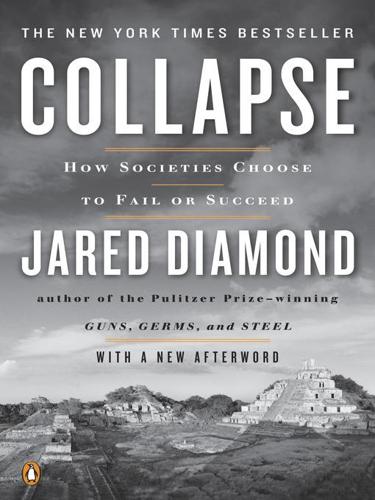
Collapse: How Societies Choose to Fail or Succeed
by
Jared Diamond
Published 2 Jan 2008
Among McGovern’s papers are Thomas McGovern, “The Vinland adventure: a North Atlantic perspective” (North American Archaeologist 2:285-308 (1981)); Thomas McGovern, “Contributions to the paleoeconomy of Norse Greenland” (Acta Archaeologica 54:73-122 (1985)); Thomas McGovern et al., “Northern islands, human era, and environmental degradation: a view of social and ecological change in the medieval North Atlantic” (Human Ecology 16:225-270 (1988)); Thomas McGovern, “Climate, correlation, and causation in Norse Greenland” (Arctic Anthropology 28:77-100 (1991)); Thomas McGovern et al., “A vertebrate zooarchaeology of Sandnes V51: economic change at a chieftain’s farm in West Greenland” (Arctic Anthropology 33:94-121 (1996)); Thomas Amorosi et al., “Raiding the landscape: human impact from the Scandinavian North Atlantic” (Human Ecology 25:491-518 (1997)); and Tom Amorosi et al., “They did not live by grass alone: the politics and paleoecology of animal fodder in the North Atlantic region” (Environmental Archaeology 1:41-54 (1998)).

Irrational Exuberance: With a New Preface by the Author
by
Robert J. Shiller
Published 15 Feb 2000
Many of these factors are present in Europe and in other countries as well as the United States, and so a theory that they are responsible for the stock market boom in the United States is not inconsistent with the fact that the boom is shared substantially by these other countries.40 Correlation is certainly not causation, nor should it be construed as such. But when exuberance, irrational or otherwise, is the order of the day, it is essential to take account of the self-fulfilling psychology of stocks in making the policy decisions that will affect our society for decades to come. Three Amplification Mechanisms: Naturally Occurring Ponzi Processes I n the previous chapter we examined a number of disparate factors that have precipitated the present speculative bubble.
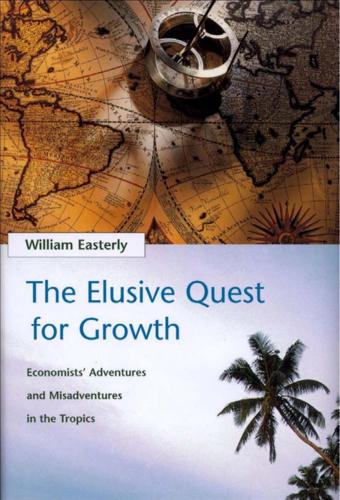
The Elusive Quest for Growth: Economists' Adventures and Misadventures in the Tropics
by
William R. Easterly
Published 1 Aug 2002

The Permanent Portfolio
by
Craig Rowland
and
J. M. Lawson
Published 27 Aug 2012
The reason it is dangerous is that many asset class correlations do not explain why the correlations exist, and what might cause them to change in the future. Just because two asset classes have behaved a certain way in relation to one another in the past does not mean they are going to necessarily do that going forward. In statistics you'd simply say: “Correlation does not equal causation.” Without an explanation for what caused these asset classes to move, the correlation information may lead to wrong conclusions. In fact, depending on what time period is selected, the correlation numbers can be radically different. Unfortunately, a lot of investment literature discussing portfolio construction and diversification is based upon the incorrect belief that historical asset correlations are somehow not subject to change, and this oversight often results in the failure of diversification strategies.
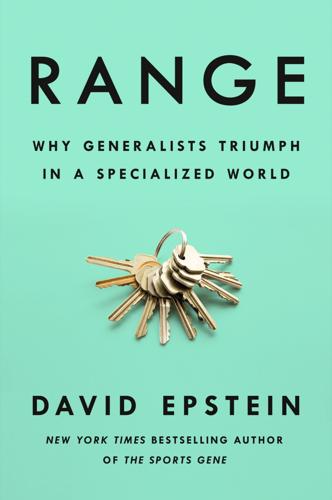
Range: Why Generalists Triumph in a Specialized World
by
David Epstein
Published 1 Mar 2019
.* Chemists, on the other hand, are extraordinarily bright, but in several studies struggled to apply scientific reasoning to nonchemistry problems. Students Flynn tested often mistook subtle value judgments for scientific conclusions, and in a question that presented a tricky scenario and required students not to mistake a correlation for evidence of causation, they performed worse than random. Almost none of the students in any major showed a consistent understanding of how to apply methods of evaluating truth they had learned in their own discipline to other areas. In that way, the students had something in common with Luria’s remote villagers—even the science majors were typically unable to generalize research methods from their own field to other fields.
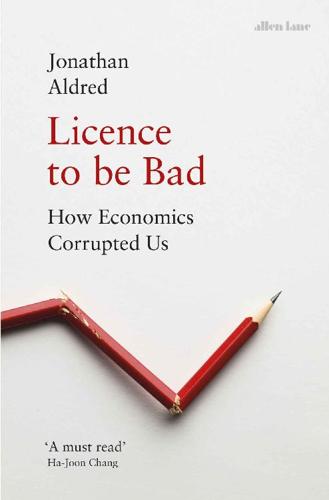
Licence to be Bad
by
Jonathan Aldred
Published 5 Jun 2019
Douglas, Economists and the Powerful (London: Anthem Press), 109. 24 Jensen, M., Murphy, K., and Wruck, E. (2004), ‘Remuneration’, European Corporate Governance Institute Working Paper. 25 Ibid. 26 Holmström, Bengt (2017), ‘Pay for Performance and Beyond’, American Economic Review, 107/7, 1753–77, 1774. 27 Baker, Dean, The Savings from an Efficient Medicare Prescription Drug Plan, Washington DC, Centre for Economic and Policy Research, January 2006. 28 Hacker and Pierson, 192. 29 Solt, F. (2008), ‘Economic Inequality and Democratic Political Engagement’, American Journal of Political Science, 52/1 (2008), 48–60. 30 Atkinson, 180–83, shows the correlations, although stresses that causation is hard to infer from cross-country comparisons over long time periods. 31 Frank provides a convenient table of top income tax rates in thirty mostly rich countries in 1979, 1990 and 2002. Compared to 1979, the rates are lower in every country in 2002. 32 Quoted in L. Mcquaig and N.
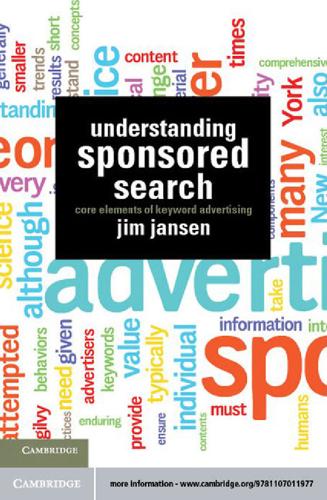
Understanding Sponsored Search: Core Elements of Keyword Advertising
by
Jim Jansen
Published 25 Jul 2011
The metrics of reach and frequency as measurements of sponsored search effects and analysis have been used in advertising for at least twenty-five years. What should be reported, however, is effective reach. That is, to be meaningful, media reach and frequency measurements must be related to advertising communication goals. Potpourri: “Correlation does not imply causation” is a common catchphrase in empirical analysis. Its meaning is that just because two variables are correlated does not mean that one causes the other. Typically, correlation is a necessary but not sufficient condition for causation. Most advertising has an objective to capture attention and maintain awareness.
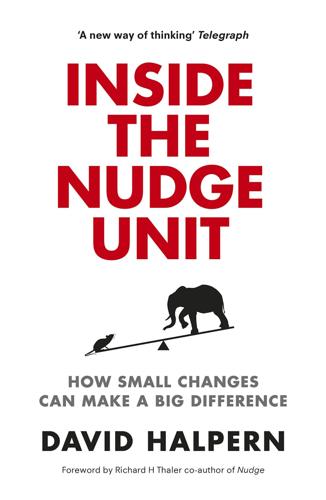
Inside the Nudge Unit: How Small Changes Can Make a Big Difference
by
David Halpern
Published 26 Aug 2015
Even a cursory glance at the relationship between levels of subjective well-being and income strongly suggests that money does buy at least some happiness.9 The correlation between the two, at national level, is around 0.8 – or about as strong a relationship as is found in the social sciences. A similar shaped curvilinear relationship is found within countries, with the rich consistently reporting greater life satisfaction than the poor. Of course, correlation does not imply causation. It is likely that at least some of this relationship is mediated by other factors, such as better healthcare and education in richer countries or places. It is even plausible that some of the differences in income are partly driven by well-being, rather than the other way around, at least within some populations.

The Economics of Enough: How to Run the Economy as if the Future Matters
by
Diane Coyle
Published 21 Feb 2011
For example, one paper reports rising happiness in forty-five of fifty-two countries for which times-series data are available (for the years 1981–2007) and links it to rising freedom and economic development.34 Another confirms that income, alongside social indicators, explains much of the difference in self-reported happiness levels within countries and between countries.35 This seems a much more credible result than the original Easterlin Paradox. But the temptation to read too much into this should be resisted. This is partly for reasons of sensible caution about the statistics. All of this work looks at statistical correlations and not at causation. Happier people might be more productive, leading to higher growth and incomes, rather than the causality running the other way. Alternatively, other factors that do cause happiness might be linked in turn to growth—such as better health or greater access to education—making the observed correlation between happiness and growth an indirect one.

Ageless: The New Science of Getting Older Without Getting Old
by
Andrew Steele
Published 24 Dec 2020
This first came to light in a series of studies in the 1980s and 1990s which sound like examples you’d use to illustrate the problems with observational studies. Epidemiologists noticed that people with tooth decay and gum problems were more likely to develop heart disease as they got older. This sounds like a classic case where correlation doesn’t imply causation: perhaps some people have less time and money to spend taking care of their diet, getting enough exercise and looking after their teeth; or maybe people who are less health-conscious generally both eat unhealthy food and don’t bother brushing their teeth afterwards. These explanations suggest that bad oral hygiene and heart problems would appear together, but with neither causing the other, both being caused instead by a third, unmeasured variable, like poverty.

The Coming Wave: Technology, Power, and the Twenty-First Century's Greatest Dilemma
by
Mustafa Suleyman
Published 4 Sep 2023
Social media thrives on heightened emotions and, quite often, outrage. A meta-analysis published in the journal Nature reviewed the results of nearly five hundred studies, concluding there is a clear correlation between growing use of digital media and rising distrust in politics, populist movements, hate, and polarization. Correlation may not be causation, but this systematic review throws up “clear evidence of serious threats to democracy” coming from new technologies. Technology has already eroded the stable, sovereign borders of nation-states, creating or supporting innately global flows of people, information, ideas, know-how, commodities, finished goods, capital, and wealth.
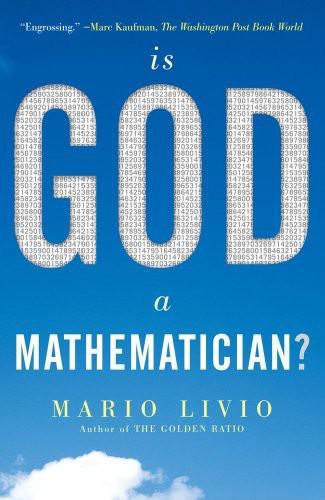
Is God a Mathematician?
by
Mario Livio
Published 6 Jan 2009
Sampling presents another problem. For instance, modern opinion polls usually interview no more than a few thousand people. How can the pollsters be sure that the views expressed by members of this sample correctly represent the opinions of hundreds of millions? Another point to realize is that correlation does not necessarily imply causation. The sales of new toasters may be on the rise at the same time that audiences at concerts of classical music increase, but this does not mean that the presence of a new toaster at home enhances musical appreciation. Rather, both effects may be caused by an improvement in the economy.
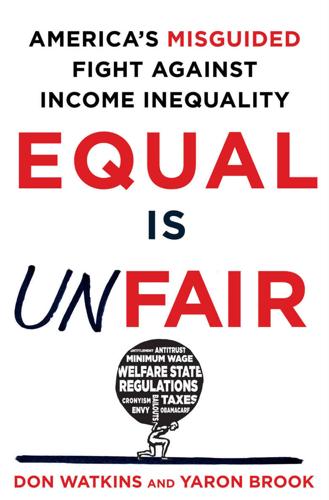
Equal Is Unfair: America's Misguided Fight Against Income Inequality
by
Don Watkins
and
Yaron Brook
Published 28 Mar 2016
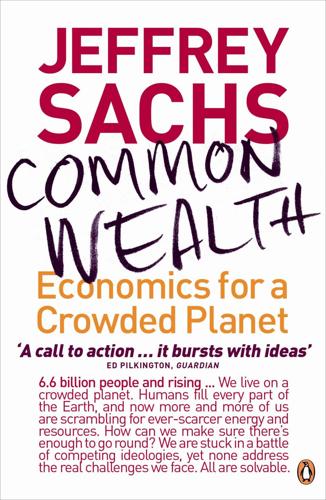
Common Wealth: Economics for a Crowded Planet
by
Jeffrey Sachs
Published 1 Jan 2008
The scatter plot of 150 countries in Figure 8.2(a) shows that lower rates of under-five mortality are associated with lower rates of total fertility. The scatter plot in Figure 8.2(b) shows that lower under-five mortality is associated with a lower overall rate of population growth, suggesting that the decline in mortality is more than offset by an accompanying decline in fertility. Correlation does not prove causation, but ample experience, and more sophisticated statistical testing, does. By saving children’s lives, and reaping the benefits in lower fertility rates, societies not only save their children but also help to stabilize their populations at the same time. Figure 8.2(a): Child Mortality and Total Fertility Rates in 2005 Source: Data from World Bank (2007) Figure 8.2(b): Population Growth and Child Mortality Rates in 2005 Source: Data from World Bank (2007) Education of Girls Girls’ education has time and again been shown to be one of the decisive entry points into the demographic transition.
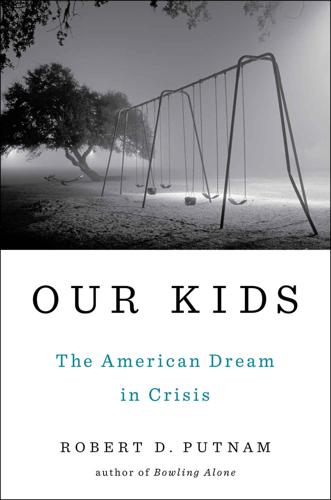
Our Kids: The American Dream in Crisis
by
Robert D. Putnam
Published 10 Mar 2015
More than half of all black children born to less educated parents in 1990 experienced parental imprisonment.57 This period of exploding incarceration is precisely the period in which single-parent families became more and more common in the less educated, lower-income stratum of the population. Correlation does not prove causation, of course, but mass incarceration has certainly removed a very large number of young fathers from poor neighborhoods, and the effects of their absence, on white and nonwhite kids alike, are known to be traumatic, leaving long-lasting scars. They certainly did in David’s life in Ohio and Joe’s life in Oregon.

San Fransicko: Why Progressives Ruin Cities
by
Michael Shellenberger
Published 11 Oct 2021
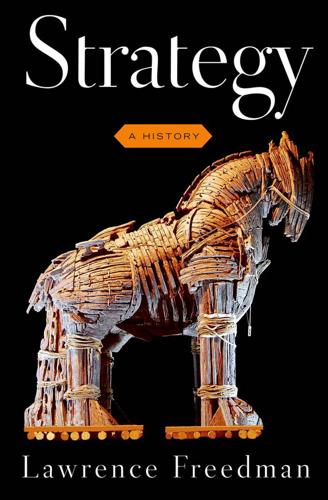
Strategy: A History
by
Lawrence Freedman
Published 31 Oct 2013
In a cautionary analysis, Phil Rosenzweig dismissed purveyors of business success stories for misleading their readers, sustaining the myth that there were reliable rules for success that once discovered could ensure the success of a business. He offered examples of sloppy thinking, by and large involving the standard muddle between correlation and causation, the tendency to explore explanations of success without worrying whether the same factors might be present in failures, and paying inadequate attention to the competition. The basic muddle he identified was the “halo effect,” the tendency to assign factors such as culture, leadership, and values, responsibility for a strong performance when they are really attributions that resulted from a strong performance.46 Skeptical figures, who had seen fads and fashions come and go, urged a return to the basics.
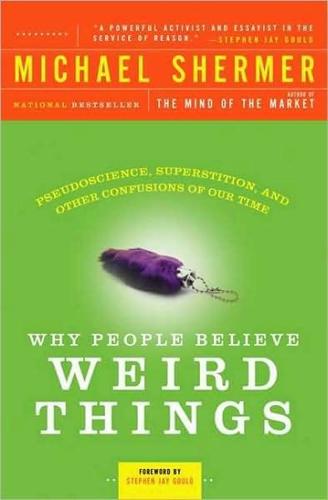
Why People Believe Weird Things: Pseudoscience, Superstition, and Other Confusions of Our Time
by
Michael Shermer
Published 1 Jan 1997
But soon researchers began to wonder whether breast-fed babies are attended to differently. Maybe nursing mothers spend more time with their babies and motherly vigilance was the cause behind the differences in IQ. As Hume taught us, the fact that two events follow each other in sequence does not mean they are connected causally. Correlation does not mean causation. 13. Coincidence In the paranormal world, coincidences are often seen as deeply significant. "Synchronicity" is invoked, as if some mysterious force were at work behind the scenes. But I see synchronicity as nothing more than a type of contingency—a conjuncture of two or more events without apparent design.
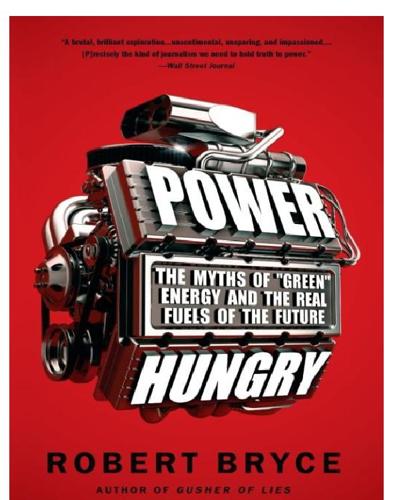
Power Hungry: The Myths of "Green" Energy and the Real Fuels of the Future
by
Robert Bryce
Published 26 Apr 2011
And now, with legions of greens, politicos, and pundits all parroting the same message about the dangers of global warming, my reflexive skepticism only increases. My skepticism about the conventional wisdom on global warming arises from two main points. First, I adhere to one of the oldest maxims in science: Correlation does not prove causation. Carbon dioxide levels in the atmosphere may be increasing, but that does not necessarily prove that the carbon dioxide is causing any warming that may be occurring. Second, models are only as good as the data going into them. All of the alarm bells now being sounded are based on atmospheric and climatic models about how temperatures in the future are expected to react, given the data fed into the models.

Culture and Prosperity: The Truth About Markets - Why Some Nations Are Rich but Most Remain Poor
by
John Kay
Published 24 May 2004
24 Openness-productive countries have fewer restrictions on trade with other countries. 25 Population growth is lower in productive economies. 26 Property rights are more secure in rich states. 27 Religion-from the standpoint of earthly productivity, it is better to live in a society whose traditions are Christian, and among Christians, it is better to live in a predominantly Protestant tradition than in a mainly Catholic one. 28 Tolerance-more people in rich states answer yes to questions like "Should people be allowed to live as they choose?" 29 Correlation does not imply causation. Average height is greater in rich states. Are tall people more productive than short people? Or does higher productivity make people taller? I doubt if either of these things is true. The most likely explanation is that higher standards ofliving, which result from higher productivity, lead to better nutrition.
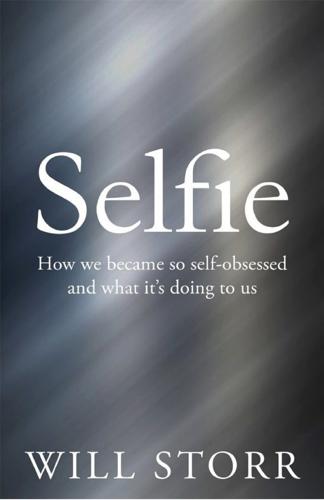
Selfie: How We Became So Self-Obsessed and What It's Doing to Us
by
Will Storr
Published 14 Jun 2017
Does the involvement in alcohol for years or decades constitute the causal basis for the feelings of worthlessness that we discovered in people who have been involved in that?’ This was the crux. Vasco had promised the legislature the data showed the ‘causative’ effects of low self-esteem. And this was precisely what Professor Smelser was saying was not there. Correlative findings can be as good as useless; as every science student knows, correlation does not equal causation. You might find domestic violence to be correlated with liking Dolly Parton (you might find that, I have no idea) but that doesn’t mean Dolly Parton is the cause of domestic violence or, indeed, that eradicating Dolly Parton would be a vaccine for it. At the end of his presentation, Smelser gave the task force a warning.
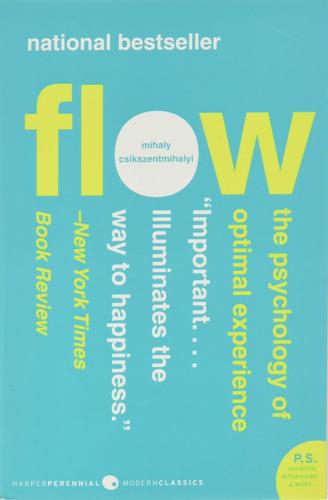
Flow: The Psychology of Optimal Experience
by
Mihaly Csikszentmihalyi
Published 1 Jul 2008
It needs to be stressed again and again that what counts is the quality of experience flow provides, and that this is more important for achieving happiness than riches or fame. At the same time, it would be disingenuous to ignore the fact that successful people tend to enjoy what they do to an unusual extent. This may indicate that people who enjoy what they are doing will do a good job of it (although, as we know, correlation does not imply causation). A long time ago, Maurice Schlick (1934) pointed out how important enjoyment was in sustaining scientific creativity. In an interesting recent study, B. Eugene Griessman interviewed a potpourri of high achievers ranging from Francis H. C. Crick, the codiscoverer of the double helix, to Hank Aaron, Julie Andrews, and Ted Turner.
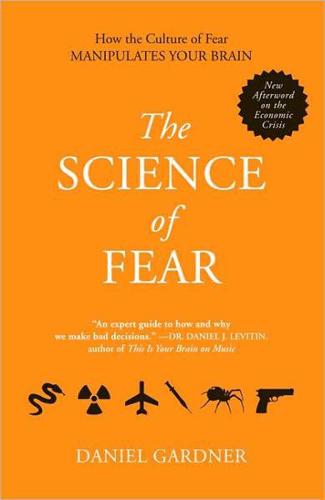
The Science of Fear: How the Culture of Fear Manipulates Your Brain
by
Daniel Gardner
Published 23 Jun 2009
Head is our best bet for accurate results, but it has limitations. First, Head needs to be educated. We live in a world of complex information, and if Head doesn’t learn the basics of math, stats, and logic—if it doesn’t know the difference between an increaseof 5 percent and an increase of 5 percentage points, say, or that correlation does not prove causation—it can make bad mistakes. Head also works very slowly. That may not be a problem when you are reading the newspaper at the breakfast table, but it’s a little troublesome when you see a shadow move in long grass and you have to decide what to do without consulting an encyclopedia to determine the prevalence and hunting habits of lions.

Jennifer Morgue
by
Stross, Charles
Published 12 Jan 2006
You stub your toe, I hurt'; I call you names, you get pissy. But you're making a big mistake. Because, secundus, you had a weird dream. And you're jumping to the conclusion that the two are related, that whatever you dreamed about is whatever happened to me. And you know what? That ain't necessarily so. Correlation does not imply causation. Now — " she reaches over and pokes me in the chest with a fingertip " — you seem a little upset over whatever it was you dreamed about. And I think you ought to think very hard before you ask the next question, because you can choose to ask whether there was any connection between your weird dream and my night out — or you can just tell yourself you ate too many cheese canapes before bed and it was all in your head, and you can walk away from it.

Apocalypse Never: Why Environmental Alarmism Hurts Us All
by
Michael Shellenberger
Published 28 Jun 2020
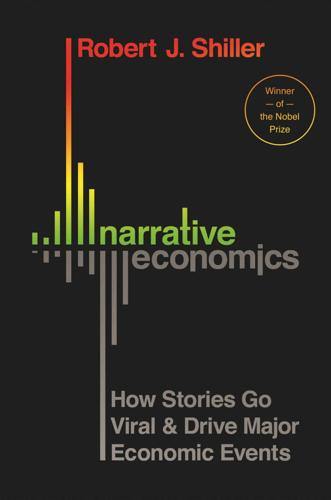
Narrative Economics: How Stories Go Viral and Drive Major Economic Events
by
Robert J. Shiller
Published 14 Oct 2019
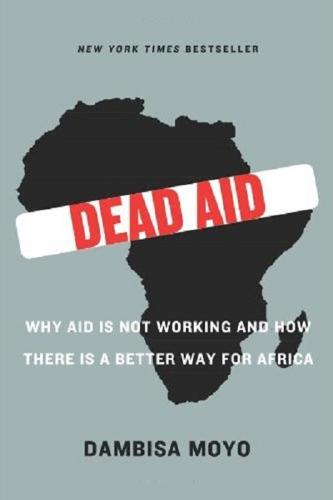
Dead Aid: Why Aid Is Not Working and How There Is a Better Way for Africa
by
Dambisa Moyo
Published 17 Mar 2009
In Moyo’s startling words: ‘Aid has been, and continues to be, an unmitigated political, economic, and humanitarian disaster for most parts of the developing world.’ In short, it is (as Karl Kraus said of Freudianism) ‘the disease of which it pretends to be the cure’. The correlation is certainly suggestive, even if the causation may be debated. Over the past thirty years, according to Moyo, the most aid-dependent countries have exhibited an average annual growth rate of minus 0.2 per cent. Between 1970 and 1998, when aid flows to Africa were at their peak, the poverty rate in Africa actually rose from 11 per cent to a staggering 66 per cent.
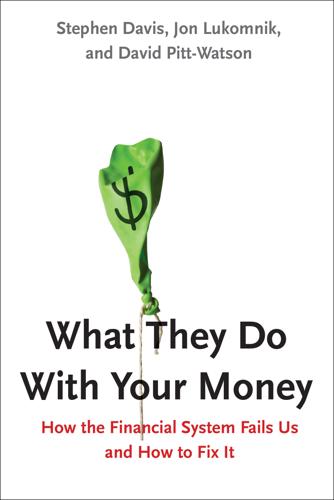
What They Do With Your Money: How the Financial System Fails Us, and How to Fix It
by
Stephen Davis
,
Jon Lukomnik
and
David Pitt-Watson
Published 30 Apr 2016
See a May 1, 2013, debate at the American Enterprise Institute at www.aei.org/events/2013/05/01/shareholder-value-theory-myth-or-motivator/. 4. Keith Ambachtsheer, Ronald Capelle, and Hubert Lum, “The Pension Governance Deficit: Still with Us” (Social Science Research Network, 2008), http://papers.ssrn.com/sol3/papers.cfm?abstract_id=1280907. Critics rightly caution that while the study finds correlation between fund governance and performance, causation is elusive. In other words, outperformance could help produce good governance rather than the other way around. Also, the period of four years examined by the authors is relatively short given retirement timeframes. 5. To illustrate, apply the academic projection to the real world.

The Deep Learning Revolution (The MIT Press)
by
Terrence J. Sejnowski
Published 27 Sep 2018

The AI Economy: Work, Wealth and Welfare in the Robot Age
by
Roger Bootle
Published 4 Sep 2019
The result is that to prevent this from causing widespread unemployment, the fiscal and monetary authorities have to resort to exceptional stimulatory policies such as large increases in budget deficits, near-zero interest rates, and huge programs of bond purchases paid for with newly created money. Some, but by no means all, of the economists supporting this view emphasize an increase in inequality as the fundamental underlying cause of secular stagnation. (American Nobel laureate Joseph Stiglitz is a notable exponent of this view.) Other economists accept the correlation but argue that the causation runs in the opposite direction, that is to say, the weakening in the growth of productivity has increased inequality.26 Others tend to attribute the subdued growth of aggregate demand primarily to the weakness of the banks, the overhang of debt and various regulations, and the various inhibitions and deterrents that have made companies more wary and cautious.
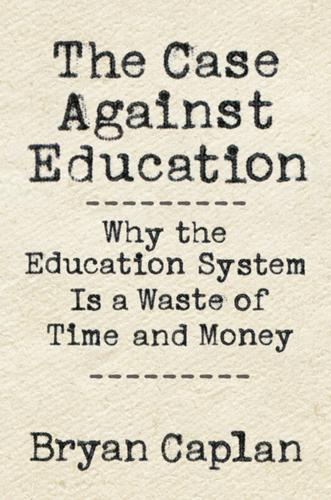
The Case Against Education: Why the Education System Is a Waste of Time and Money
by
Bryan Caplan
Published 16 Jan 2018

Artificial Intelligence: A Modern Approach
by
Stuart Russell
and
Peter Norvig
Published 14 Jul 2019
Linear regression models are also considered to be interpretable; we can examine a model for predicting the rent on an apartment and see that for each bedroom added, the rent increases by $500, according to the model. This idea of “If I change x, how will the output change?” is at the core of interpretability. Of course, correlation is not causation, so interpretable models are answering what is the case, but not necessarily why it is the case. Explainability: An explainable model is one that can help you understand “why was this output produced for this input?” In our terminology, interpretability derives from inspecting the actual model, whereas explainability can be provided by a separate process.
…
Automated Reasoning and the Discovery of Missing and Elegant Proofs. Rinton Press. Wray, R. E. and Jones, R. M. (2005). An introduction to Soar as an agent architecture. In Sun, R. (Ed.), Cognition and Multi-Agent Interaction: From Cognitive Modeling to Social Simulation. Cambridge University Press. Wright, S. (1921). Correlation and causation. J. Agricultural Research, 20, 557–585. Wright, S. (1931). Evolution in Mendelian populations. Genetics, 16, 97–159. Wright, S. (1934). The method of path coefficients. Annals of Mathematical Statistics, 5, 161–215. Wu, F. and Weld, D. S. (2008). Automatically refining the Wikipedia infobox ontology.

Tools of Titans: The Tactics, Routines, and Habits of Billionaires, Icons, and World-Class Performers
by
Timothy Ferriss
Published 6 Dec 2016
I see, hear, feel, and know that the purpose of my life is to inspire and guide the transformation of humanity on and off the Earth.” Peter’s breathing is similar to some of Wim Hof’s exercises (page 41), which I now do in a cold shower (state “priming” per Tony Robbins, page 210), right after my morning meditation. As for the flossing-longevity connection, Peter is the first to admit this might be correlation instead of causation: People anal retentive enough to floss regularly probably have other habits that directly contribute to longer life. Pre-Bed Routines Before bed, Peter always reviews his three “wins of the day.” This is analogous to the 5-Minute Journal p.m. review that I do (page 146). On Getting out of Funks TIM: “To get out of that 2-day funk [after one of his early startups failed], what does the self-talk look like?

New Laws of Robotics: Defending Human Expertise in the Age of AI
by
Frank Pasquale
Published 14 May 2020
On the power and limits of these utilitarian and deontological theories, see Cohen, Configuring the Networked Self. In tension with Western standards of liberalism, Walzer’s philosophy has deep resonances with theories of social harmony often associated with traditional East Asian philosophies. 83. Ideally, not just correlations, but also accounts of causation, would matter, too. See, for example, Kiel Brennan-Marquez, “ ‘Plausible Cause’: Explanatory Standards in the Age of Powerful Machines,” Vanderbilt Law Review 70 (2018): 1249–1301. We can all understand why a record of late payments on bills should reduce a credit score; keeping track of them is fair game.
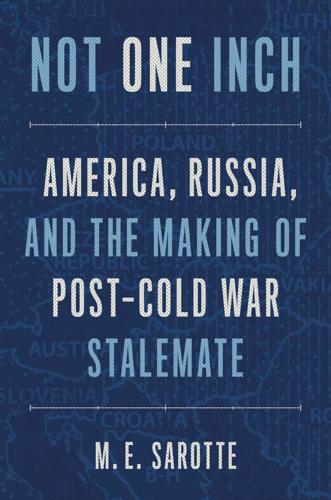
Not One Inch: America, Russia, and the Making of Post-Cold War Stalemate
by
M. E. Sarotte
Published 29 Nov 2021
Because of the costs, how Washington ultimately implemented expansion advanced American interests less in the long term than it might have done. Another way to measure whether enlargement was a good idea is to examine its costs for other countries. Since NATO enlarged, Russia has not invaded any of the new post–Cold War allies. While correlation is not causation, it is hard to imagine that NATO membership was irrelevant to that outcome. But while allies have escaped large-scale physical attacks, they have suffered cyber infiltration and other forms of aggression from Moscow. In meaningful but hard-to-measure ways, Russia undermined European post–Cold War stability.
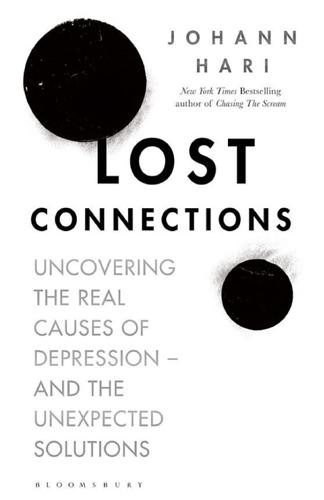
Lost Connections: Uncovering the Real Causes of Depression – and the Unexpected Solutions
by
Johann Hari
Published 1 Jan 2018
Kasser, Materialistic Values; S. H. Schwartz, “Universals in the structure and content of values: theory and empirical tests in 20 countries,” Advances in Experimental Social Psychology 25 (Dec. 1992): 1–65. The I-Want-Golden-Things Rule I was very conscious—as Tim has been throughout his work—that evidence of correlation is not evidence of causation. The fact that two things happen at the same time is not proof that one causes the other. The cock crows and the sun rises—but that’s not proof that the cock crowing causes the sun to rise. So I discussed with Tim (and with all the social scientists I interviewed) whether this could be merely a correlation, and we were surmising too much from it.
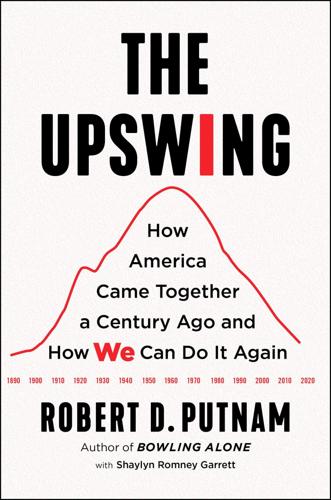
The Upswing: How America Came Together a Century Ago and How We Can Do It Again
by
Robert D. Putnam
Published 12 Oct 2020
Combined, these factors may well have encouraged the electorate to sort itself into partisan camps. A comparison of the inverted U-shaped charts in this chapter and the preceding one shows that economic inequality and political polarization have moved in lockstep over the last 125 years. But as generations of students of social science have learned to recite, correlation doesn’t prove causation. Nolan McCarty, Keith T. Poole, and Howard Rosenthal, the pioneers in this field of scholarship, initially argued that inequality caused polarization,100 but it is now widely agreed that the timing doesn’t fit. Our own analyses show that inequality is, if anything, the lagging variable (meaning that rising inequality has shown up later than rising polarization), which makes it unlikely to be the primary driver in this relationship.

The Twittering Machine
by
Richard Seymour
Published 20 Aug 2019
The effect is much stronger when users spend their ‘screen time’ engaged in social comparisons: the most addictive part of the medium. In every game of social comparison, we pay most attention to those above us. We lose every time; we fall short. As Alain Ehrenberg put it, ‘the depressed individual is unable to measure up; he is tired of having to become himself.’25 Correlation, as the cliché goes, is not causation. Indeed, the sprawling complexity of the systems we live in makes it hard to identify direct cause–effect situations. It would be difficult to prove, for example, that seeing an advertisement on public transport made you buy new shoes. All that can be said is that your choice is conditioned by the advertising.
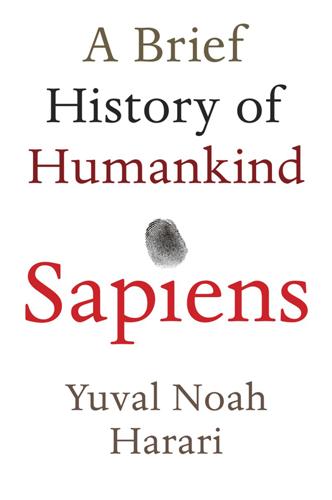
Sapiens: A Brief History of Humankind
by
Yuval Noah Harari
Published 1 Jan 2011
Buying cars and writing novels do not change our biochemistry. They can startle it for a fleeting moment, but it is soon back to its set point. How can this be squared with the above-mentioned psychological and sociological findings that, for example, married people are happier on average than singles? First, these findings are correlations – the direction of causation may be the opposite of what some researchers have assumed. It is true that married people are happier than singles and divorcees, but that does not necessarily mean that marriage produces happiness. It could be that happiness causes marriage. Or more correctly, that serotonin, dopamine and oxytocin bring about and maintain a marriage.

The Lonely Century: How Isolation Imperils Our Future
by
Noreena Hertz
Published 13 May 2020
A major study that looked at 60,000 individuals in seventeen European countries over the course of fifteen years found that people who were members of ‘civic associations’ – things like volunteer groups and neighbourhood associations – were significantly less likely to vote for their country’s right-wing populist party than people who were not. The researchers drew similar conclusions for Latin America.27 It seems that the more enmeshed we are in our wider community, the more we feel we have people around us who we can rely on, the less likely we are to heed the siren call of right-wing populists. And whilst correlation does not necessarily mean causation, there is a logic for why this would be so. For it is through joining local associations, volunteering, taking on community leadership roles or simply taking part in community activities or maintaining our friendships that we are able to practise inclusive democracy – to learn not only how to come together, but also how to manage and reconcile our differences.28 Conversely, the fewer social ties we have, the more isolated we feel, and the less practice we have at managing difference and behaving civilly and cooperatively with each other, the less we are likely to trust our fellow citizens and the more appealing we may find the exclusionary and divisive form of community that populists peddle.
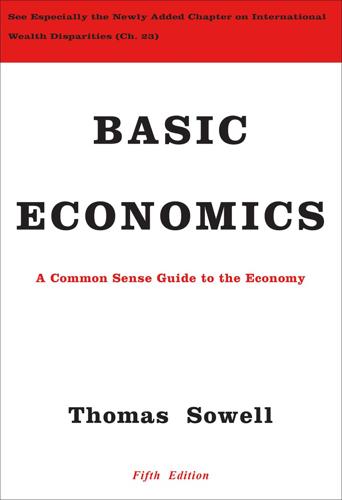
Basic Economics
by
Thomas Sowell
Published 1 Jan 2000
As John Maynard Keynes said, “It is better to be roughly right than precisely wrong.”{551} Ideally, we would like to be able to measure people’s personal sense of well-being but that is impossible. The old saying that money cannot buy happiness is no doubt true. However, opinion polls around the world indicate some rough correlation between national prosperity and personal satisfaction.{552} Nevertheless, correlation is not causation, as statisticians often warn, and it is possible that some of the same factors which promote happiness—security and freedom, for example—also promote economic prosperity. Which statistics about national output are most valid depends on what our purpose is. If the purpose of an international comparison is to determine which countries have the largest total output—things that can be used for military, humanitarian, or other purposes—then that is very different from determining which countries have the highest standard of living.
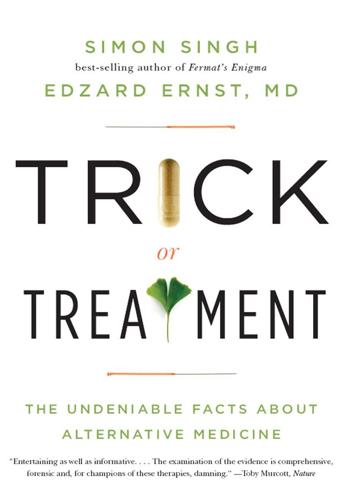
Trick or Treatment: The Undeniable Facts About Alternative Medicine
by
Edzard Ernst
and
Simon Singh
Published 17 Aug 2008
If recovery from illness takes place after taking some homeopathic pills, then isn’t it obvious that the homeopathic pills caused the recovery? If there is a correlation between two events, then isn’t it common sense that one event caused the other? The answer is ‘No’. We can see why a correlation should not be confused with causation if we look at a neat example invented by Bobby Henderson, author of The Gospel of the Flying Spaghetti Monster. He spotted a very interesting correlation between the increase in global temperature over the last two centuries and the decline in the number of pirates. If correlation is synonymous with cause and effect, then he speculated that the decline in pirates is causing global warming.

Adapt: Why Success Always Starts With Failure
by
Tim Harford
Published 1 Jun 2011
Even with better data, the truth is not always apparent. For example, Lind had speculated that scurvy was connected with beer, because he noticed that scurvy often struck when a ship’s supply of beer ran out. But this was coincidence: both were the result of a long voyage, but scurvy has nothing to do with a deficiency of beer. Correlation is a treacherous guide to causation. There is, naturally, an ethical question over all this. Ten of Lind’s twelve scurvy sufferers saw their illnesses deteriorate as they took salt water, sulphuric acid and various other substances that proved to be useless as cures for scurvy. When we really have no idea what the right treatment is, there is little downside here: with the possible exception of the pair taking sulphuric acid, the ten sick sailors would have been no worse off without Lind on board.

Ask Me About My Uterus: A Quest to Make Doctors Believe in Women's Pain
by
Abby Norman
Published 6 Mar 2018
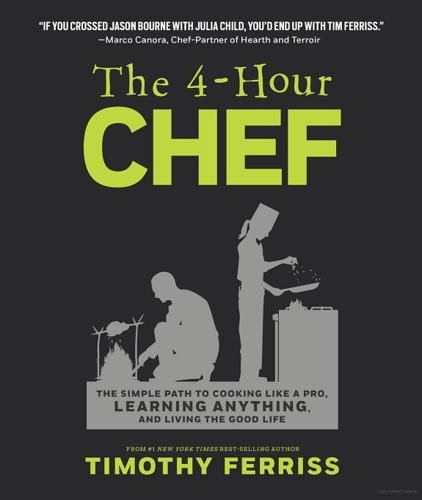
The 4-Hour Chef: The Simple Path to Cooking Like a Pro, Learning Anything, and Living the Good Life
by
Timothy Ferriss
Published 1 Jan 2012
In other words, if your professional future depends 100% on one skill, you’ll put in as many hours as your body (and schedule) will tolerate. This doesn’t mean 10,000+ hours are required, but if this is your one ticket in life, are you going to take the risk by doing less? No. Once again, correlation does not equal causation. Patterns can be meaningful, but so can anomalies. If we look at the Olympics from 1920 to 1967, most high-jump medalists used a straddle technique or scissor jump to clear the bar. In 1968, Dick Fosbury, to the laughter of spectators, went over backward in what was nicknamed the “Fosbury Flop.”
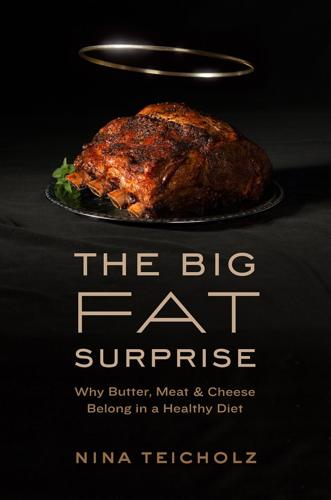
The Big Fat Surprise: Why Butter, Meat and Cheese Belong in a Healthy Diet
by
Nina Teicholz
Published 12 May 2014
The idea that fat might lead to cancer was first aired at the McGovern committee hearings in 1976, when Gio Gori, director of the National Cancer Institute (NCI), testified that men and women in Japan had very low rates of breast and colon cancer and that those rates rose quickly upon emigrating to the United States. Gori showed charts demonstrating the parallel rising lines of fat consumption and cancer rates. “Now I want to emphasize that this is a very strong correlation, but that correlation does not mean causation,” he said. “I don’t think anybody can go out today, and say that food causes cancer.” He urged more research. However, the Senate committee, in its enthusiasm to solve as many of the nations’ health problems as possible, overlooked those reservations, and implied in its report that a low-fat diet could help reduce cancer risk.
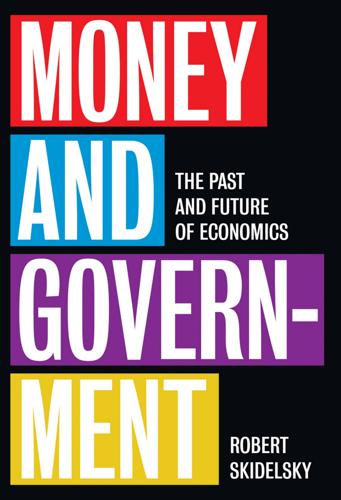
Money and Government: The Past and Future of Economics
by
Robert Skidelsky
Published 13 Nov 2018
In one of our (many) exchanges, Congdon wrote, ‘the evidence is overwhelming – from all countries in all periods of more than a few quarters – that changes in [the money supply] and [nominal income] are related’.85 Could such evidence, by itself, secure the monetarist position? Surely not. Congdon’s claim is that changes in the money supply cause changes in national income. But we know that correlation does not imply causation, and in a fiat money economy there are compelling reasons to believe that the arrow of causation can run in the opposite direction. Nearly all money in the modern economy is created by commercial banks making loans,86 and it is plausible that banks’ lending behaviour is caused by changes in the real economy.

Power and Progress: Our Thousand-Year Struggle Over Technology and Prosperity
by
Daron Acemoglu
and
Simon Johnson
Published 15 May 2023

The Diet Myth: Why America's Obsessions With Weight Is Hazardous to Your Health
by
Paul Campos
Published 4 May 2005
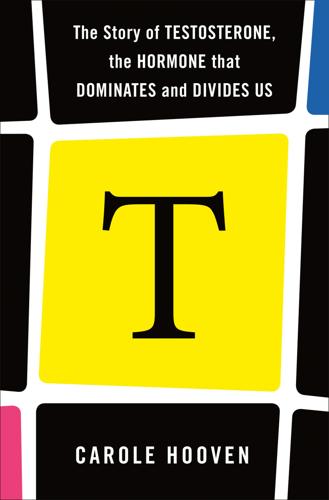
T: The Story of Testosterone, the Hormone That Dominates and Divides Us
by
Carole Hooven
Published 12 Jul 2021
But what about the stags’ behavioral metamorphosis, from friendly to fierce? Was that caused by testosterone acting directly on a stag’s brain, altering neural circuits and disposing him toward aggressive behavior? Well, maybe, but that’s just one hypothesis. As we all know, correlation or association doesn’t equal causation. And even if T does cause aggressive behavior, it might do that without directly altering the brain. One rival hypothesis is that the stags become more aggressive simply because T endows them with mighty antlers and muscles, which then influence social relationships, which, in turn, impact behavior.
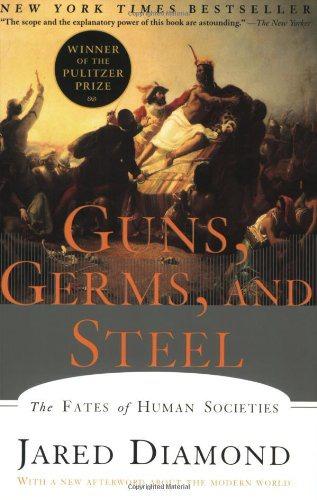
Guns, germs, and steel: the fates of human societies
by
Jared M. Diamond
Published 15 Jul 2005
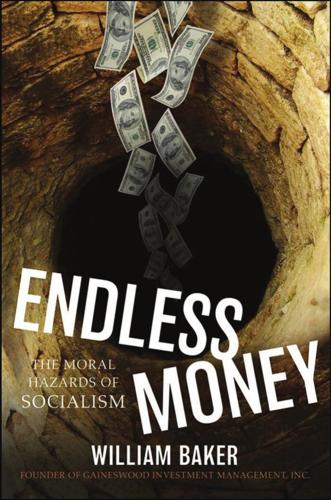
Endless Money: The Moral Hazards of Socialism
by
William Baker
and
Addison Wiggin
Published 2 Nov 2009
This firm’s researchers, who are tasked to make money rather than to win Nobel Prizes, would be unlikely to bet heavily on a correlation that cannot explain nearly half of a model’s outcome. Foolishly, those running the Fed would not hesitate to do so even though the wealth of America and the world is put at great risk. Moreover, the first thing statistics students are taught is that correlation does not necessarily mean causation. The stock market may rise when old NFL franchises win the Super Bowl and fall otherwise; it is inexplicable why this is so, and clearly there is no cause and effect. After having solved the riddle of the Great Depression, to leave the back door open by saying that this is so except for the experience of the 1920s and 1930s seems odd.

Data Mining: Concepts, Models, Methods, and Algorithms
by
Mehmed Kantardzić
Published 2 Jan 2003
Drawing analogy to visual perception, the information contained in a probability function is analogous to a geometrical description of a three-dimensional object; it is sufficient for predicting how that object will be viewed from any angle outside the object, but it is insufficient for predicting how the object will be deformed if manipulated and squeezed by external forces. The additional information needed for making predictions such as the object’s resilience or elasticity is analogous to the information that causal assumptions provide. These considerations imply that the slogan “correlation does not imply causation” can be translated into a useful principle: One cannot substantiate causal claims from associations alone, even at the population level. Behind every causal conclusion there must lie some causal assumptions that are not testable in observational studies. Any mathematical approach to causal analysis must acquire a new notation for expressing causal assumptions and causal claims.
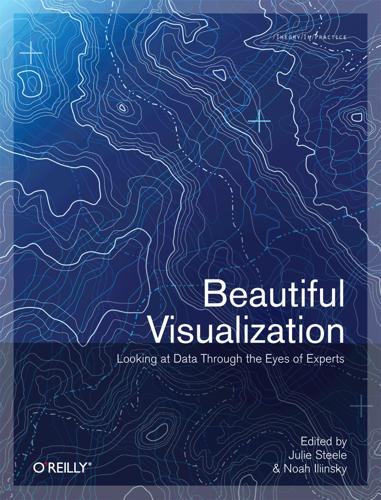
Beautiful Visualization
by
Julie Steele
Published 20 Apr 2010

The Origins of Political Order: From Prehuman Times to the French Revolution
by
Francis Fukuyama
Published 11 Apr 2011
Putting the two together makes possible mental models—that is, general statements about causation (“it gets warm because the sun shines”; “society forces girls into stereotyped gender roles”). All human beings engage in the construction of abstract mental models; our ability to theorize in this fashion gives us huge survival advantages. Despite the warnings of philosophers like David Hume and countless professors in first-year statistics classes that correlation does not imply causation, human beings are constantly observing correlations between events in the world around them and inferring causation from them. By not stepping on the snake or eating the root that killed your cousin last week, you avoid being subject to the same fate, and you can quickly communicate that rule to your offspring.

The confusion
by
Neal Stephenson
Published 13 Apr 2004
“From the looks of it I should say it was de Maintenon.” “De Maintenon?!” De Gex’s reaction told Eliza that her answer had been emphatically wrong. “Yes,” she said, “she came along in 1685, did she not? Which is when this remodel got under way…and the subject matter of the painting is so markedly Maintenon-esque.” “Correlation is not causation,” de Gex said. “They had to remodel, because of a disastrous Incident that took place in that year.” And then De Gex seemed to remember that they were in a hurry, and once again began striding toward the library. Eliza stomped along beside, and a little behind him. “You do know what happened here—?”

Radical Uncertainty: Decision-Making for an Unknowable Future
by
Mervyn King
and
John Kay
Published 5 Mar 2020
We may wish the police to be more effective in clearing up crimes, but don’t want them to do this by ‘rounding up the usual suspects’. 24 A civilised judicial system treats people as individuals, not as drawings from a statistical distribution. 25 The availability of big data, which enable us to learn far more about correlations – although not necessarily about causation – creates new opportunities for statistical discrimination and new dangers from its use. 26 Related issues arise from the development of machine learning – computers trained on historic data will develop algorithms reflecting past patterns of selection which may no longer be either appropriate or acceptable. 27 Even if the explicit use of information such as gender or race is prohibited, the algorithms may have that consequence – without conscious intention for such discrimination on the part of anyone at all.
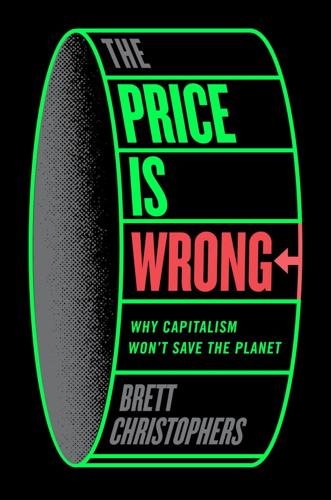
The Price Is Wrong: Why Capitalism Won't Save the Planet
by
Brett Christophers
Published 12 Mar 2024
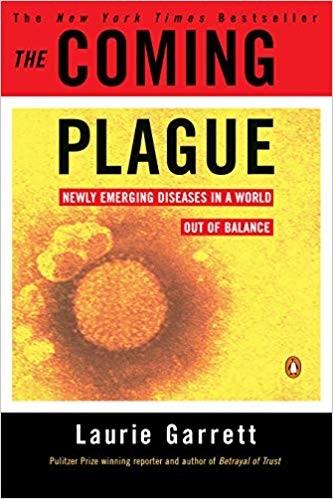
The Coming Plague: Newly Emerging Diseases in a World Out of Balance
by
Laurie Garrett
Published 31 Oct 1994
Department of State, “The U.S.S.R.’s AIDS Disinformation Campaign,” Foreign Affairs Note, July 1987. 208 Peter Duesberg’s views have been so widely published that it is difficult to narrow a list to key sources. For Duesberg’s perspective, see B. Guccione, Jr., Interview, September 1993: 95–108; P. H. Duesberg, “Human Immunodeficiency Virus and Acquired Immunodeficiency Syndrome: Correlation But Not Causation,” Proceedings of the National Academy of Sciences 86 (1989): 755–64; J. Miller, “AIDS Heresy,” Discover, June 1988: 63–68; P. Duesberg, “A Challenge to the AIDS Establishment,” Biotechnology 5 (1987): 3; and P. H. Duesberg, “Retroviruses As Carcinogens and Pathogens: Expectations and Reality,” Cancer Research 47 (1987): 1199–1220. 209 For examples of counterarguments to Duesberg’s theories, see J.

Spies, Lies, and Algorithms: The History and Future of American Intelligence
by
Amy B. Zegart
Published 6 Nov 2021
NSA telling the truth: 23 percent of frequent/occasional spy TV watchers believed the NSA was telling them the truth about not listening in on telephone call content in the agency’s metadata collection program, compared to just 15 percent of infrequent spy TV show watchers who thought the NSA was telling the truth. Whatever one thinks about these activities—whether they are effective or ineffective, morally right or morally wrong—the fact that fiction may be significantly influencing public attitudes about them is unsettling. Of course, in academia, we often warn that “correlation is not the same thing as causation.” It could be that entertainment merely reinforces or reflects beliefs that people already hold.42 Just because two things trend together doesn’t mean one causes the other. Superstitious sports fans wear lucky T-shirts, but nobody really thinks the fashion choices of viewers determine which team wins the game.

On the Edge: The Art of Risking Everything
by
Nate Silver
Published 12 Aug 2024
Corpus (AI): The set of all text or tokens in the training data for a model; for an LLM like ChatGPT, the corpus can roughly be thought of as all human speech as expressed on the internet. Correlation: A statistical relationship between two variables, e.g., ice cream sales are positively correlated with warm weather. Correlation does not necessarily imply causation: ice cream sales are also correlated with gun violence because both tend to peak in warm weather when many people are outdoors. The correlation coefficient is a statistical measure of correlation on a scale of -1 (perfectly uncorrelated) to +1 (perfectly correlated). Cover (sports betting): When a team wins by enough points or loses by a narrow enough margin to beat the point spread.
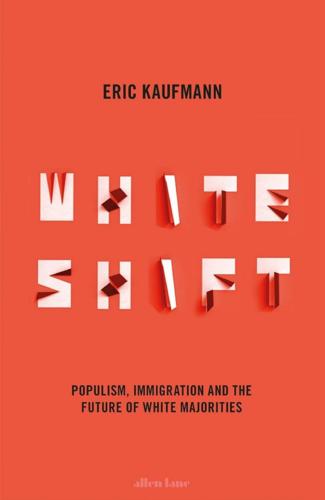
Whiteshift: Populism, Immigration and the Future of White Majorities
by
Eric Kaufmann
Published 24 Oct 2018
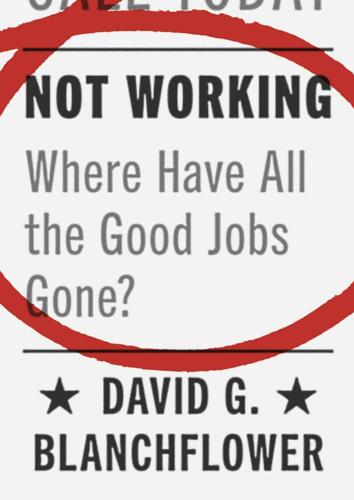
Not Working: Where Have All the Good Jobs Gone?
by
David G. Blanchflower
Published 12 Apr 2021
Chida and Steptoe (2008) conducted a meta-analysis and found that positive psychological well-being was related to lower mortality. Joy, happiness, and energy, as well as life satisfaction, hopefulness, optimism, and a sense of humor, lowered the risk of mortality. Obesity is also correlated with depression, but the direction of causation is not obvious.21 Obesity makes people depressed, or depression makes people eat, which causes depression or possibly both in a downward spiral. Luppino et al. (2010) addressed this issue with a meta-analysis of studies using longitudinal data and examined whether depression is predictive of the development of overweight and obesity and, in turn, whether overweight and obesity are predictive of the development of depression.

Rationality: From AI to Zombies
by
Eliezer Yudkowsky
Published 11 Mar 2015
When we have a hidden motive to reject the current best option, we have a hidden motive to suspend judgment pending additional evidence, to generate more options—to find something, anything, to do instead of coming to a conclusion. A major historical scandal in statistics was R. A. Fisher, an eminent founder of the field, insisting that no causal link had been established between smoking and lung cancer. “Correlation is not causation,” he testified to Congress. Perhaps smokers had a gene which both predisposed them to smoke and predisposed them to lung cancer. Or maybe Fisher’s being employed as a consultant for tobacco firms gave him a hidden motive to decide that the evidence already gathered was insufficient to come to a conclusion, and it was better to keep looking.
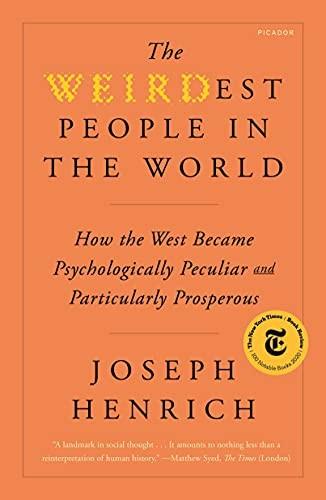
The WEIRDest People in the World: How the West Became Psychologically Peculiar and Particularly Prosperous
by
Joseph Henrich
Published 7 Sep 2020
Thus, the relationship between religion and schooling/literacy isn’t due to industrialization and the associated economic growth.14 Still, the relationship between Protestantism and literacy/schooling is just an association.15 Many of us learned that causal links can never be inferred from mere correlations, and that only experiments can identify causation. This isn’t entirely true anymore, however, because researchers have devised clever ways to extract quasi-experimental data from the real world. In Prussia, Protestantism spread from Wittenberg like the ripples created by tossing a stone in a pond (to use Luther’s own metaphor).
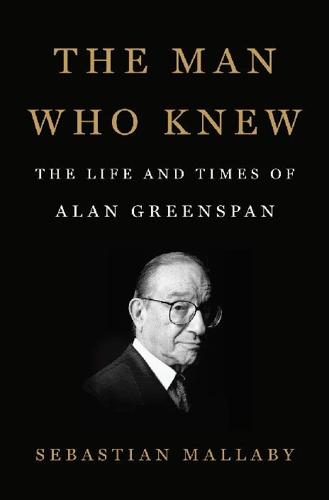
The Man Who Knew: The Life and Times of Alan Greenspan
by
Sebastian Mallaby
Published 10 Oct 2016
The truth was that Greenspan was gambling with his credibility. As it turned out, the productivity justification for squeezing inflation proved even less robust than the promise of reliably lower long-term interest rates. Although Rudebusch’s data experiments found that productivity gains and stable prices might be correlated, it was impossible to establish causation; and when the Fed staff redid the calculations with revised GDP data, even the correlation crumbled.13 Barry P. Bosworth, an economist at the Brookings Institution, observed to the New York Times that earlier academic research had failed to find an inflation-productivity connection, at least in economies with inflation below 20 percent; and he suggested, rather obviously, that Greenspan might simply be looking to head off political attacks on the Fed as it raised interest rates.

Bourgeois Dignity: Why Economics Can't Explain the Modern World
by
Deirdre N. McCloskey
Published 15 Nov 2011
Italy in its legal system ranked sixty-third, just above Iran, and in its freedom from regulation ninety-fourth, just above the Dominican Republic.9 Italian legal institutions, the exercise of the monopoly of legitimate violence—its L variables and the S variables supporting the L—are wretched. Yet in real GDP per person New Zealand and Italy, in 2010, were nearly identical, at $88.20 and $86.80 a day, a little above Hans Rosling’s Washing Line. One could argue that there is anyway an international correlation between income and governance. But the causation is in part the other way around—rich people demand better governance, which is certainly the story of more honest governance in American cities, 1900 to the present. And the oomph of the fitted curve is too small to explain much: that correlation “exists” does not answer the scientific question of its importance.